

Florence in April – The definitive guide
Things to do in Florence Florence Travel Guide Best Time To Visit Florence Florence in April
Florence, with its towering cathedrals, quaint cobblestone streets, and art galleries galore, is a city that exudes old-world charm like no other. Explore iconic sights like the majestic Duomo and immerse yourself in Renaissance wonders around every corner. Remember, Florence is best explored on foot, so seize the pleasant April weather for your adventure. Don't miss this perfect time to experience Florence's timeless beauty and artistic splendor!
What makes Florence in April special?

Here are some reasons why you should consider visiting Florence in April:
- Shoulder season: April falls bang in the middle of the shoulder season,when the city is not overflowing with tourists but isn't completely deserted either. What this means is shorter waiting lines for popular attractions, reasonably priced accommodation and a general escape from the overcrowded peak tourist season.
- Walk-away weather: The weather in Florence in April is best described as pleasant. The temperature is warm but doesn't get sweltering hot, maintaining an average of around 24°C. This makes for the perfect weather to be outdoors, soaking in the beauty of the Renaissance city with long strolls and bike tours. There are plenty of outdoor cafes open during the month as well, allowing you to take a well-deserved break from all the exploration.
- Events galore: April is an eventful month with both the Easter Weekend and Liberation Day celebrated in the city with aplomb. For the former, the Scoppio del Carro (Explosion of the Cart) is organized annually at the Piazza del Duomo. An elaborate wagon is constructed and paraded through the streets of Florence. At the end of the parade, a spectacular fireworks display sets off, delighting the crowds. For Liberation Day, Florence hosts a marching band procession and an open-air concert.
Florence in April: Weather
On a general note, the weather in Florence in April is quite tourist-friendly. Although unpredictable, the weather features far more sun than rain. The record monthly high for April is 28°C while the record low temperature is -2.2°C. The average high temperature during the month hovers around 18°C and the average precipitation falls at 86. In terms of the rains, April experiences the third-highest showers after November and October.

Florence in April: Things to do
Day trip to siena.

The stunning Tuscany region houses other beautiful cities including San Gimignano, Pisa, and Siena . Go for a memorable one-day trip from Florence to Siena and explore the hill city in all its glory. During your trip, you'll get to visit the iconic Piazza del Campo where the famous Palio Horse Race is organized. The tour includes a multilingual escort who will keep the experience interesting by sharing amazing facts about the city.
April timings Depends on the chosen tour
53100, Province of Siena Italy Getting There ›
Tuscan wine tour
Tuscany is a haven for wine aficionados. Opt for a Tuscan wine tour to experience the magical Chianti wine. The tour lets you explore two pristine Chianti villages, where tastings of four unique wines await you in a comfortable winery. PS- The tour is part of a day trip from Florence to Tuscany and an enroute visit to the historical cities: Pisa and Siena. A local wine-tasting is setup with an authentic Tuscan lunch.
Chianti, Tuscany, Italy Getting There ›
Florence Duomo
Arguably the biggest landmark of Florence, the Duomo is a Gothic-style cathedral that was designed by Filippo Brunelleschi. The dome-shaped cathedral was originally named Santa Maria del Fiore and boasts breathtaking mosaic flooring and opulent marble exterior. The church houses countless iconic artifacts, including Bandinelli's marble choir, Paolo Uccello's clock, Vasari and Zuccari's frescoes of the Last Judgement.
April timings Monday to Saturday from 10:15am to 3:45pm (last entry at 3:30pm)
Piazza del Duomo, Florence, Italy Getting There ›
Uffizi Gallery

The Uffizi Gallery is amongst the most revered art galleries in the world and showcases an expansive collection of art from the Renaissance era. The remarkable visual experience will take you through the iconic works of legendary artists including Rafaello, Da Vinci, Giotto, Masaccio, Cimabue and more. Opt for a skip-the-line ticket of the Uffizi Gallery to avoid wasting time standing in long queues.
April timings Tuesday to Sunday from 8:15am to 6:50pm Closed on Mondays Every first Sunday of the month, entrance to the gallery is FREE for everyone.
Piazzale degli Uffizi, 6, 50122 Firenze FI, Italy Getting There ›
Siena Cathedral

One of the most prominent tourist attractions in the Tuscan region, the Siena Cathedral is an Italian Romanesque-Gothic architectural marvel. Featuring intricate details that you can explore for hours on end, the Siena Cathedral is replete with a bell tower, a projecting transept and a glorious dome. The cathedral exterior boasts Venetian mosaics and rose windows that add to it a distinct charm. The Siena Cathedral also houses some prominent works of art by many of Italy's famed artists. April timings: Daily from 10am to 7pm On public holidays from 1:30am to 6pm
Piazza del Duomo, 8 53100 Siena SI, Italy Getting There ›
Boboli Gardens
Spread across a massive 45,009 sq mt, Boboli Gardens functions as a backyard for the famous Pitti Palace. The garden boasts centuries worth of history with its serene greenery, beautiful fountains, famous statues, and other structures from the past. It features many old-school buildings that have been converted into open-air museums, making it amongst the most unique attractions in all of Tuscany.
April timings Daily from 8:15am to 6:30pm Closed on first and last Monday of every month
Piazza de' Pitti, 1, 50125 Firenze FI, Italy Getting There ›
Palazzo Pitti
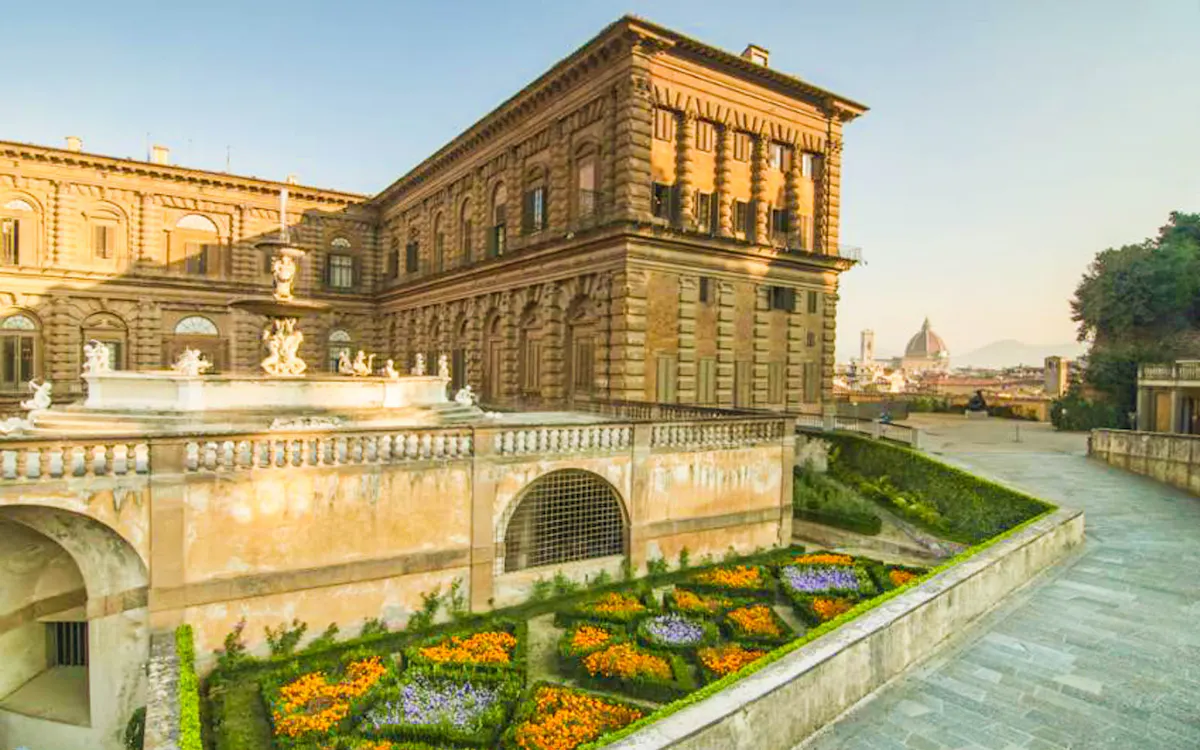
Palazzo Pitti, also known as the Pitti Palace dates back to the 15th century. Originally, the palace was constructed to serve as the official residence of several royal families, today the palace has been converted into a popular tourist spot with eight huge museums with attached galleries and the beautiful Boboli garden. At these museums, you can witness, first-hand, the wealth and artistic grandeur of Italian nobility. The museums house a great collection of artwork by famous artists like Caravaggio, Rubens, and Raphael.
April timings Tuesday to Sunday from 8:15am to 6:30pm Closed on Mondays
Florence in April: Events to look out for
Florence half marathon.
Date: April 7, 2024 This is an event for all running enthusiasts, with a flat route that winds its way through the historic center of Florence until it reaches the streets of Oltrarno, 21.097km away. Sign up today if you're in Florence this April!

National Liberation Day in Panzano
Date: April 25, 2024 On April 25th, Florence celebrates the anniversary of the Italian Liberation from Nazi-Fascist occupation, along with the Festa della Stagion Bona (Good Season Fair). The historical reenactment of the working class insurrection will be organized all over the village center, joyously celebrating the arrival of Spring.
Florence in April: Seasonal delicacies

A bite-sized version of bruschetta, Crostini di Fegato is topped with chicken liver pate. This traditional Tuscan starter is available in most restaurants in Florence but All'Antico Vinaio is where locals go.

One of the most famous dishes in Florence is the Florentine steak. Bistecca Fiorentina or Florentine steak is a must-have when in the city. Many restaurants serve Bistecca Fiorentina but we would recommend The Clubhouse.
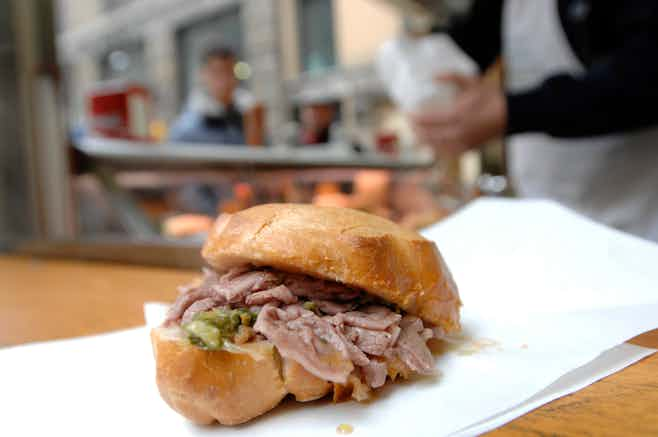
A street food for the adventurous eater, Lampredotto is made with tripe, which is meat from the fourth stomach of a cow. Generally paired with a crusty bun and dipped in cooking broth. Try the Lampredotto at Sergio Pollini Lampredotto .

A vegetable and bread soup that was earlier used as peasant food in the Tuscany region, Ribollita is another classic from the area. You can enjoy a great Ribollita at Trattoria La Casalinga .

No trip to Florence is complete without enjoying some gelato. Florence is home to some of the best gelato in Italy, including some artisanal and interesting flavor combinations. Gorge on decadent gelato at Gelateria La Carraia .
Florence in April: Essentials
Where to stay in florence in april.
The St. Regis Florence The Westin Excelsior Villa Cora Firenze
Loggia Fiorentina Bavaria Florence Dany House
Emerald Palace Wow Florence Hostel Hostel 7 Santi
What to pack?
There's a bit of unpredictability when it comes to the rains in Florence in April. When packing for your trip, stay prepared by bringing along a waterproof jacket and an umbrella. The sun is also quite often out in all its glory so pack sunglasses, hats and light cotton clothing. Also, remember to bring along a pair of comfortable shoes since Florence is best explored on foot.
Getting around
Getting around in Florence in April is pretty seamless thanks to the proficient public transportation in place. The primary mode of transport here are buses, run by ATAF Buses. These buses are wheelchair accessible and air-conditioned. Your journey will also be quite convenient because the buses are automated and can buy tickets before boarding the bus from authorized sale points. A single bus ticket is valid for ninety minutes straight. However, we would advise that you avoid taking the bus during rush hour. There's also a tram line available in the city that connects to Scandicci. Apart from that, you can also rent bicycles and taxis at your convenience.
Florence in April: Visiting tips
- To ensure that you have the perfect vacation, indulge in a bit of organizing and planning. This includes booking entrance tickets and accommodation in advance. This allows you to get the best deals and avoid wasting your precious time in long queues.
- When it rains (and it might in April), you can make your way to the indoor attractions in the city, such as museums and art galleries to avoid wasting your limited hours in the city.
- Many local shops remain closed between 1-4pm for an afternoon siesta, so keep this in mind when planning your shopping expedition. Also, it's okay to bargain when shopping locally so don't shy away from discussing the price with the shopkeepers.
- The best time for sightseeing in Florence is when the weather is pleasant, usually April and May or September and October. Visit these sights early in the morning or toward the end of the day for the shortest lines.
- You'll be walking around quite a bit in Florence. Stay hydrated and take plenty of rest throughout the day.
- Always carry cash on you. ATMs in Florence tend to charge a higher fee on Visa and Mastercard.
- Note: Italians dine late, prepare yourself for late dinners. By late we mean, 8pm onwards.
Explore Florence through the year

A self-confessed armchair traveling expert, Saba hopes to master the art of time travel next. Her favorite pastimes include lamenting that she was born in the wrong decade, noodling around on the guitar, and writing unfinished songs. She is currently working on building a functioning time travel machine and wishes Doctor Who was a real person.
Be a smart traveler
The first to know about trending destinations, travel deals, tips and all things travel.
- Best Time to Visit Florence
- Visiting Florence for the First Time
- Florence with Kids
- Florence Transportation
Where to Stay
- Florence Cuisine
- The Best Gelato in Florence
- The Best Restaurants in Florence
- Rooftop Bars in Florence
- One Day in Florence
- 3 Days in Florence
- Things to Do In Florence
- Uffizi Gallery
- Accademia Gallery
Florence Duomo
- Boboli Gardens
- Piazzale Michelangelo
- Santa Croce Basilica
Santa Maria Novella
- Free Things to Do in Florence
- Florence Bell Tower
- Florence Baptistery
- Piazza della Signoria
Ponte Vecchio Florence - Visit the iconic bridge | Florencewise
- Florence Tours
- Florence Transfers
- Italy Tours
- Florence Day Trips
- Sign up & get a FREE ebook Subscribe Today!
- Florencewise Home Page
Florence in April - Your Essential Trip Planning Guide
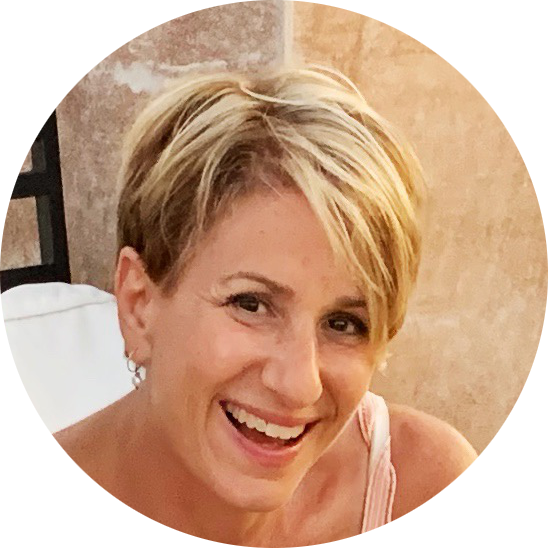
By Elyssa Bernard
January 31, 2024
Are you coming to Florence in April?
You'll get to enjoy explore Florence with mild weather, lots of flowers, and a bustling city, full of life and offering plenty to do, indoors and out.
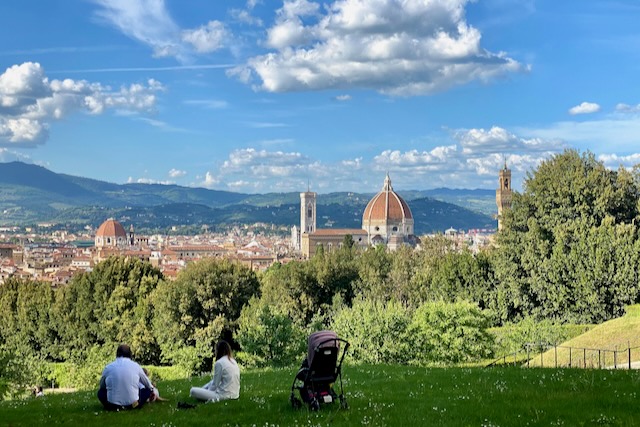
April in Florence Italy - at a glance
Here's what you need to know about coming to visit Florence this time of year:
- What's the weather like ? Does it rain a lot in April in Florence?
- What to pack ? What to wear for visiting Florence in April?
- Is April a good time to visit Florence ?
- What food is in season in April in Florence ?
- What are some things to do in Florence in April ?
April weather in Florence Italy
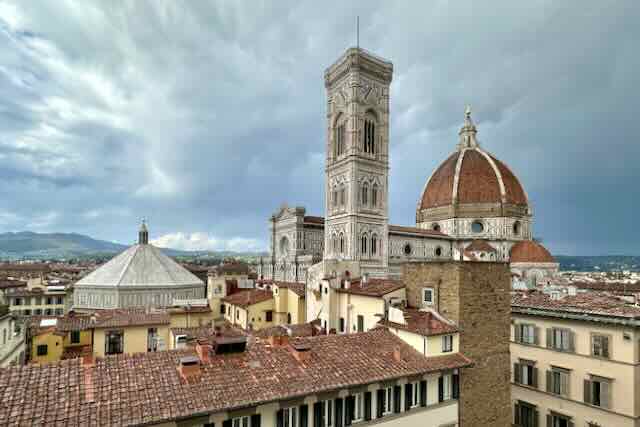
Temperatures in Florence in April can vary wildly , not only from the beginning of the month to the end, but even on a given day.
The average temperature in Florence in April is pretty mild, with lows (at night) averaging 48-50 Fahrenheit/9-10 Celsius, and highs during the day of about 64-68 Fahrenheit/18-20 Celsius.
The difference between the start and end of April temperatures can be significant however!
April is a spring month which means:
- it's not as warm as you are ready for it to be (it should be nice and warm by mid- May )
- it can rain a lot
- flowers are exploding all over the place.
Overall, Florence in April offers a super climate for sight-seeing (just be prepared for some rain at any time in the entire month.)
For more ideas for how to make the most of your time in Florence, take a look at these pages:
What to pack for Florence in April
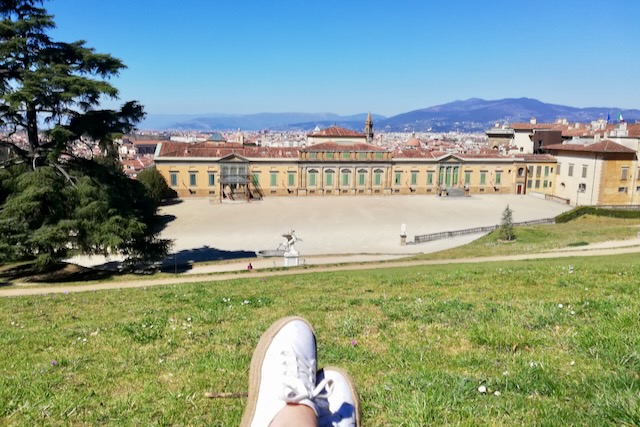
Packing tips for Florence in April
It seems many people think that Florence in April will be sunny and warm.
While that can be true, we also get a fair amount of rain and some cooler, cloudy days.
So when you're packing for Florence, be sure to bring some long pants or jeans with you - it's not shorts weather yet!
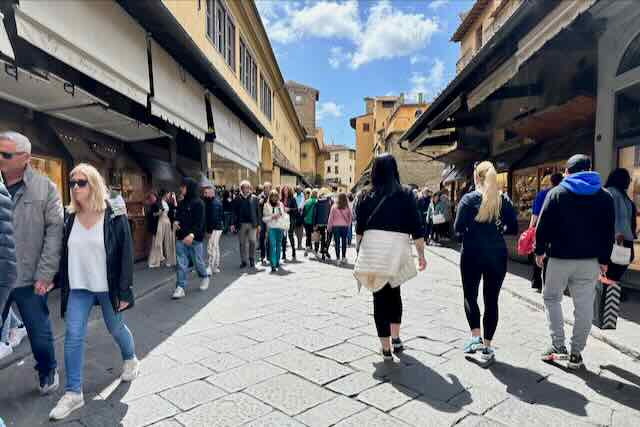
Lighter layers and a good rain jacket are ideal for April, so you'll be prepared whether the sun is shining or you get caught in a rain shower.
These are my personal recommendations for the best things to include in your packing for Florence in April:
Affiliate Disclosure:
Below you see photos of products I've researched and in some cases, own. If you click the picture, it will take you to Amazon.com, and if you purchase anything there, I will earn a small commission.
Please rest assured, the prices are the same whether you click from here or buy directly.
Thanks for supporting my site!

If you are caught in the rain in Florence, you can easily buy a cheap umbrella from a street vendor. They just appear when it rains.
The quality of those umbrellas is not great, so I recommend coming prepared with your own travel umbrella , a quality one that lasts like this one.

Some of photos on this page may not reflect this, but believe me, Florence in April can be rainy.
A rain-hat is the perfect packable accessory - it doesn't take up much room but is so useful when you need it!

This rain-hat for men is a lot like the one my husband Alessandro wears.
We never let the rain stop us from going out, you can enjoy Florence in any weather!

I own this jacket and wear it all through spring and fall. Besides being stylish, it's the perfect weight for not-so-hot days , and it's 100% waterproof so I am all set in case of sudden rain.
It's a wardrobe investment but I will say it's one of my favorite jackets all-around.

I also own a lighter rain-jacket like this.
It's light, easy to pack and great for sight-seeing in Florence in spring.

And here's a men's lighter rain-jacket , excellent for packing and for carrying around while sight-seeing ready in case you need it.

I say this about every month - bring a scarf . Yes, even in April. First of all, it's going to be cooler than you might think, especially in the mornings and after the sun goes down.
Second of all, well, it's stylish. But seriously, trust me, you will want a scarf in your bag. You will be surprised at how much you use it!

The scarf thing goes for men too . You will definitely see Italian men wearing scarves, certainly in chilly April.
They don't weigh much, and are super useful. Trust me, you'll want to include at least one scarf when packing for Florence.

Another handy thing to pack for rainy weather in Florence is a light rain poncho .
I've seen so many people shelling out money to street vendors when it rains unexpectedly, but like the umbrellas, they can be poor quality.
So if you don't feel like packing, or wearing, a rain-jacket, this is a perfect alternative.
It’s essential to be prepared for rain and snow in Florence this time of year, so I would recommend including rain-hats , a sturdy umbrella and good quality waterproof shoes on your packing list.
🔐 Store your bags and luggage securely! 🧳
We're parterned with Radical Storage who have locations across Italy for you to keep your luggage safe before and after check-in, while on day trips and for everything else between 👌
Click here to book now and use code FLORENCEWISE to save 5%!
General Florence packing tips
What else do you need to consider when packing for Florence in April?
These are a few of my essential packing recommendations, any time of year:
Disclosure : If you make a purchase through a link on this page, I may receive a small commission - at no extra cost to you. Thank you for supporting my site!

Sunglasses !
Yes it can be rainy in Florence occasionally, but the sun will be shining more often than not so you'll want a good pair of sunglasses.

Any medications you take, along with a list of these medications.
I would recommend keeping these with you in your carry-on in a dedicated container, rather than packing them in your checked luggage.
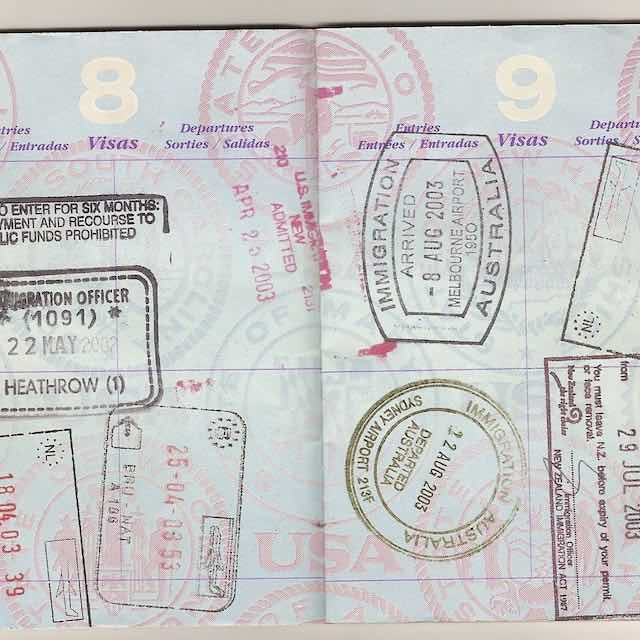
Photocopies or clear photographs saved on your phone of your passport - much safer than carrying your actual passport around Florence!

Plug converters for your dual-voltage appliances.
Voltage in Italy is 220, and in the US and some other countries, it's 110. Most electronic devices will default to dual voltage, but you will need a plug adapter as the plug shapes are different here.
This universal adapter covers you in multiple locations, perfect for travel to different parts of the world.

Carrying a well-stocked first-aid kit gives you peace of mind when traveling.
I always like having one with me when I travel, it’s very handy for when you need something quickly.
Travel insurance isn't something to pack but it is something you should not forget!
It is not uncommon these days for visitors to have to deal with lost luggage or cancelled or delayed flights, and your credit card coverage may not be as extensive as you think - chances are you are not covered for what you need when these things happen!
Being prepared for your trip isn't just about packing the right clothes and accessories, it's also about planning ahead.
There's so much to do in Florence that it can be overwhelming sometimes to decide what to include in your itinerary, so why not leave it to the experts?
Take a look at some of the top Florence tours available for a deeper insight into one of the world's most popular cities!
What to wear in Florence in April
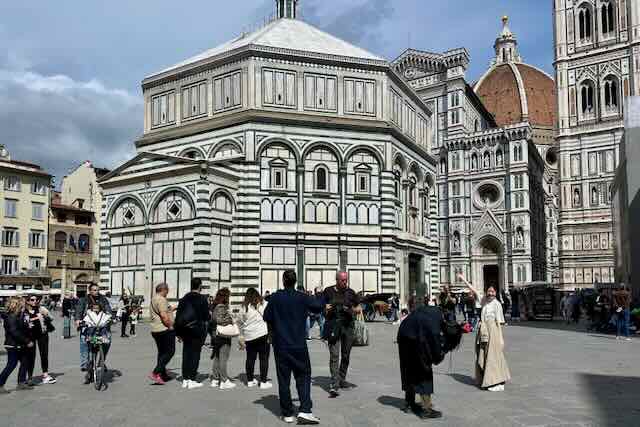
So how should you dress when you visit Florence in April?
You will probably be walking a lot, so you need good quality shoes.
Rule 1: Be Comfortable!
My number one rule for sightseeing in Florence, at any time of year: be comfortable .
This is most important when it comes to your shoes, it is crucial to wear good walking shoes, and good quality socks.
I would recommend only bringing shoes you have already broken in, and don’t worry about looking like a tourist - that’s exactly what you are!
Rule 2: Dress in Layers
The next rule, which is especially relevant for April is: dress in layers .
Since the weather in Florence can change significantly throughout the day, and it sometimes rains unexpectedly, it's necessary to wear layers that you can remove/put on easily such as cardigans/pullovers/jumpers and waterproof jackets.
This also means it's a good idea to wear a backpack as you travel around Florence , so you can have a place to put your layers if you take them off.
Bottom line, when packing for Florence in April, don't forget to:
- Extremely comfortable shoes /sturdy walking sandals
- Sturdy cotton long pants or jeans, or a long skirt
- Long-sleeved polo shirt or other medium weight cotton top
- Warm cardigan or pullover in your bag
- A light waterproof jacket or shell in your bag.
- Cotton scarf for men and women
- Don't forget your sunglasses and sunscreen !
If you are planning to go to an event, for example a wedding, opera or dinner at a special restaurant , then you may wish to bring something elegant to wear.
Otherwise, it is fine to wear more casual clothes to eat out at many restaurants in Florence so you do not need to pack much, if any, evening-wear.
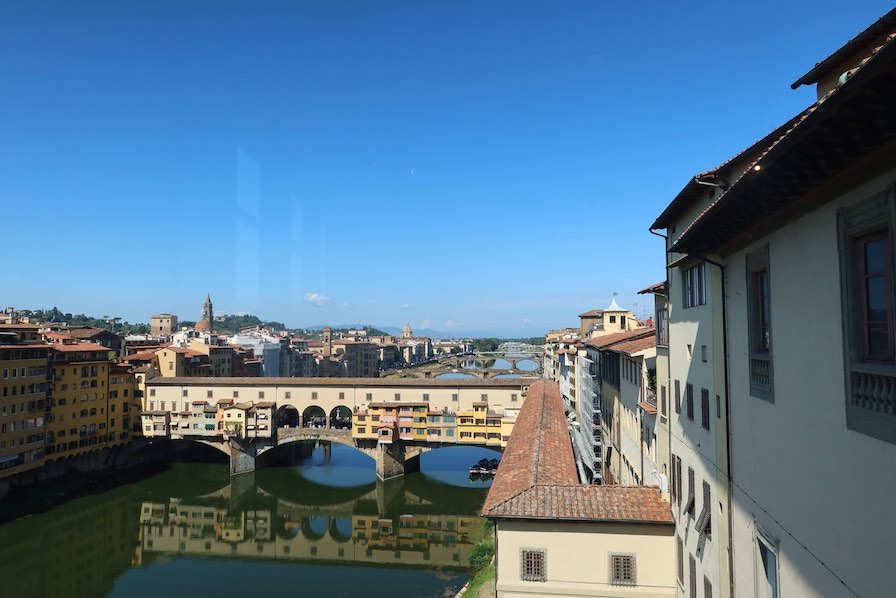
Is April a good time to visit Florence?
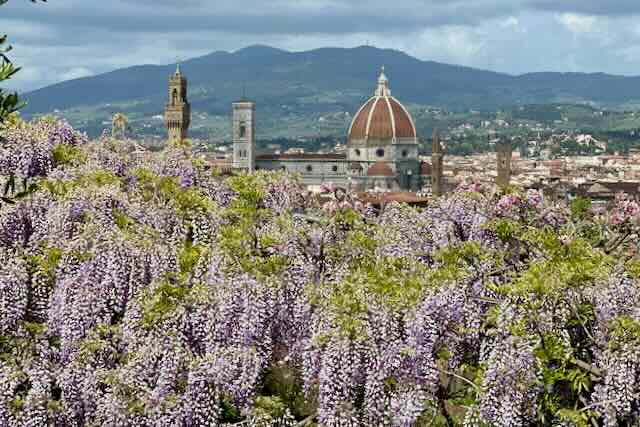
April is a great time to visit Florence for a lot of reasons, like the beautiful cool spring weather, flowers beginning to bloom, lots of new openings, and longer days.
The best time to visit is always subjective, but the April weather in Florence can still be cool, which makes it comfortable for sight-seeing.
It's also a good time to enjoy some tasty Florentine meals indoors with good Tuscan wine, be sure to try the Florentine steak ( bistecca fiorentina )!
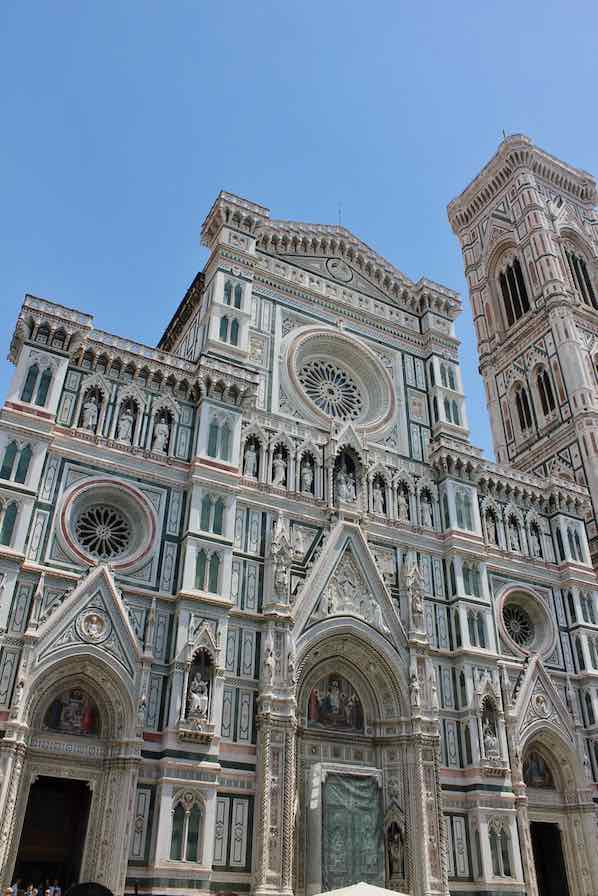
How crowded is Florence during April?
I get this question a lot, in particular because Easter is around this time of year.
The answer is: yes, it will be crowded in Florence in April , Easter or no Easter.
Florence in April is a beautiful month, weather-wise, it's not too hot (perfect for sight-seeing ), and many schools have breaks.
People who have the option to travel outside of a school calendar tend to choose spring and fall to visit Florence, for the milder weather.
That is why spring and fall months are the busiest times to be in Florence.
Just plan for it, and book things in advance when you can.
Ready to plan your trip?
Florence Seasonal Food in April
As I've written on other pages on this site , food in Florence (and in Italy) is eaten seasonally.
It's supposed to be, anyway.
And besides the fruits and vegetables you'd expect to find in spring, like asparagus and peas, there are some typical Florentine foods that must be tried in spring.
If you are in Florence in April, don't miss these:
Artichokes - these are definitely seasonal, but besides that, there are several varieties of artichoke that start to show up in Florence markets around November and go through to early May .
You'll find the carciofi empolesi variety only in Tuscan markets.
This artichoke is smaller and more delicate in flavor than the classic varieties, so if you see a raw artichoke salad on the menu, go for it!
Peas - fresh podded peas start showing up in April, which are surprisingly sweet!
Try them in the classic Florentine dish of piselli alla fiorentina , stewed peas flavoured with garlic, parsley and pancetta - delicious!
Discover the best of Florentine cuisine on a Florence food tour , led by a local expert who will show you what to eat and what's in season!
What to do during April in Florence
April holidays and special dates in florence 2024.
Special dates in Florence in April include Liberation Day and often, Easter.
easter 2024
In 2024 the Easter weekend and preceding Holy week is at the end of March .
Good Friday is on March 29, Easter Sunday is March 31, with Easter Monday on April 1.
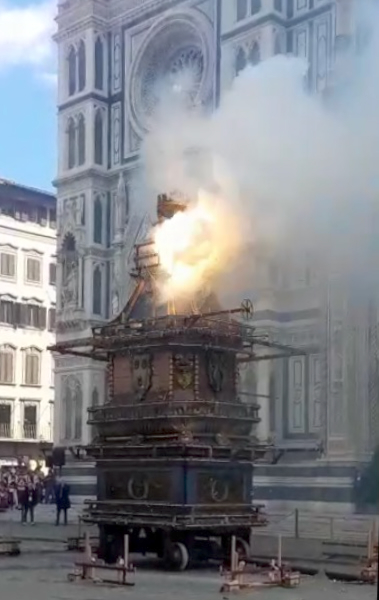
The Easter celebrations in Florence include a unique event known as the Explosion of the Cart.
This takes place on Easter Sunday morning, when a huge cart is pulled by oxen to the Piazza del Duomo, ready for the Easter mass in the cathedral .
As part of the mass, the archbishop comes out and lights a firework rocket known as the colombina because it is shaped to look like a dove, which ignites a cable running to the cart.
The cart, which is also rigged with fireworks then 'explodes' for a fun display!
As with many of the ways Florence celebrates major events, this tradition dates back hundreds of years.
APRIL 25 - LIBERATION DAY
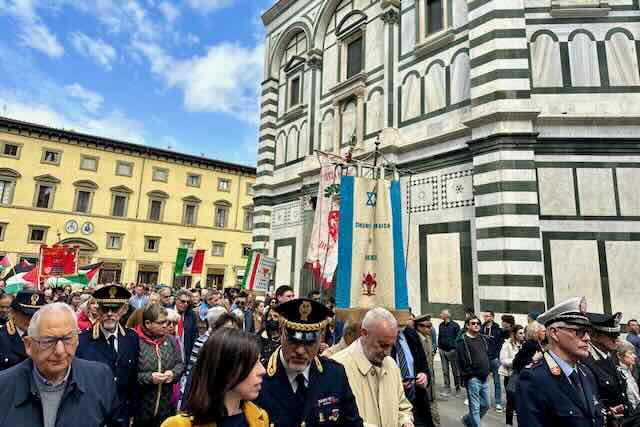
Liberation Day , the Festa della Liberazione , is an important national holiday in Florence and in Italy.
It celebrates the end of Nazi occupation during WWII, and the end of Fascist rule in Italy (Benito Mussolini was shot 3 days later).
Being a national holiday, schools, banks and shops are closed.
No tourist sites are closed .
Current exhibits and events at Florence's museums in April
The cooler spring months are a great time to take in the arts indoors. Some museums stay open later on the weekends.
There are several events in Florence in April 2024 at various museums around the city:
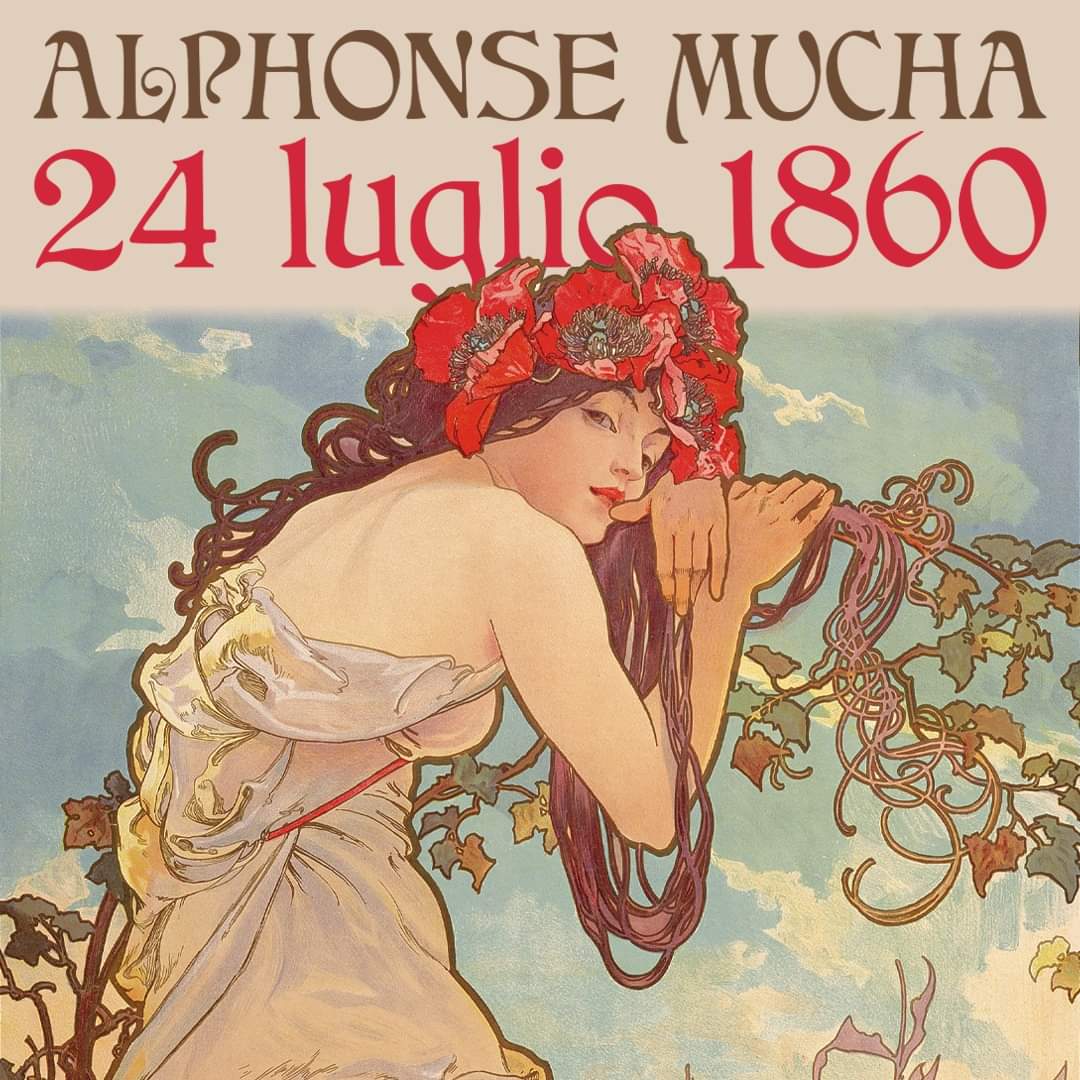
Museo degli Innocenti
Alphonse Mucha - The Seduction of Art Nouveau
Explore more than two hundred works from the era of the 'Belle Époque', the Paris art movement at the end of the 1800's that Mucha spearheaded, creating the iconic Art Nouveau images we still know today.
October 27, 2023 to April 7, 2024
Find out more details here .
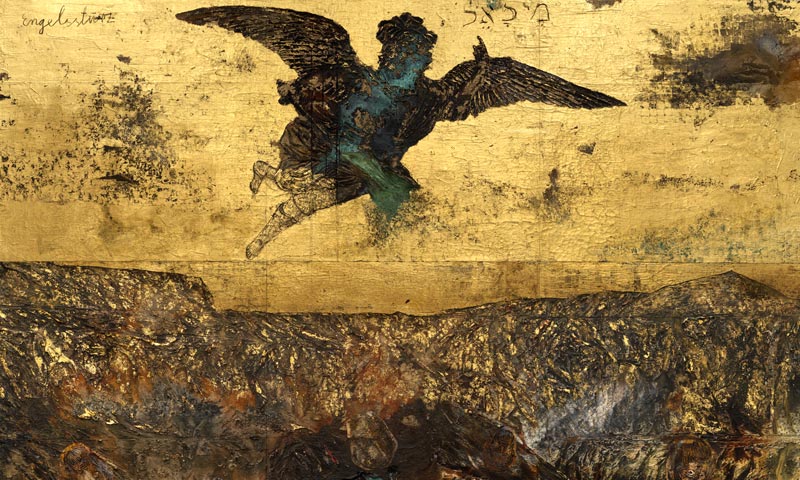
Palazzo Strozzi
"Fallen Angels" by Anselm Kiefer
This exhibition displays many of Anselm Kiefer's works, which through painting, sculpture and installations investigate the themes of memory, myth, war and existence.
March 22, 2024 to July 21, 2024
For opening hours and ticket information, click here .
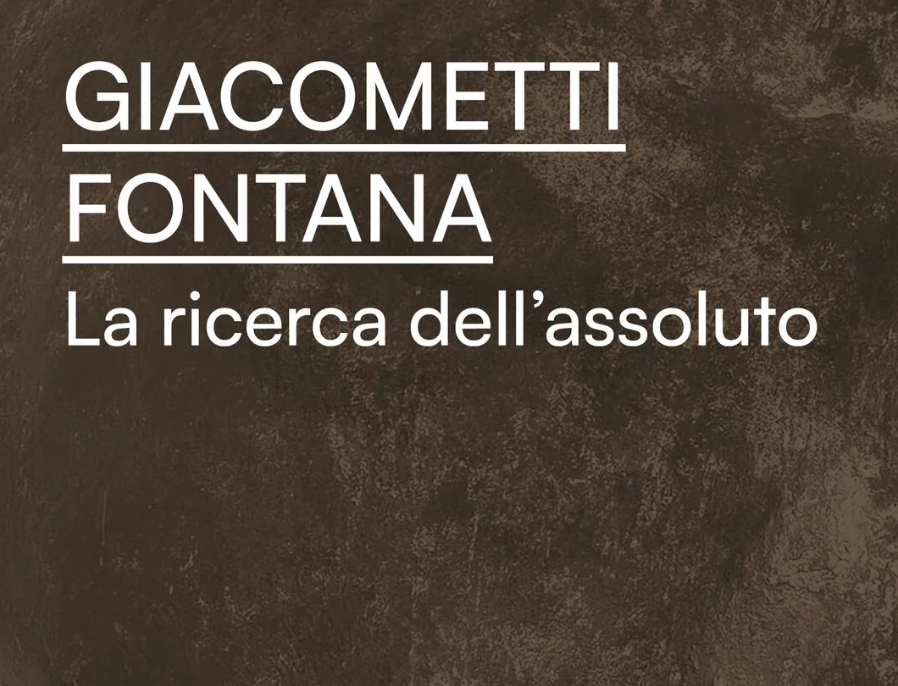
Florence Half-Marathon
Taking the participants on a route through the historic center and across the river to Oltrarno, this is a fun event for both runners and spectators.
Be aware some roads will be closed on this day and you may need to take an alternative route to your destination.
April 7, 2024
To enter or find out more information, click here .
Florence Concerts, Operas and other shows on in April
There are lots of concerts and other events available to book for your trip to Florence in April - take a look at some of our suggestions here:
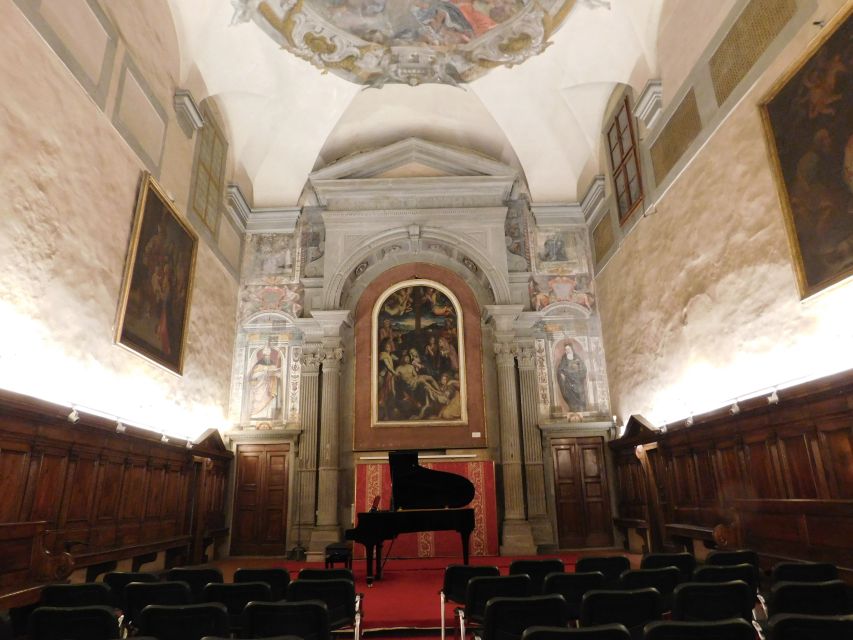
Enjoy operatic pieces from famous Italian composers live in concert in the evocative surroundings of the Santa Monaca church.
Concerts take place every evening, booking highly recommended .
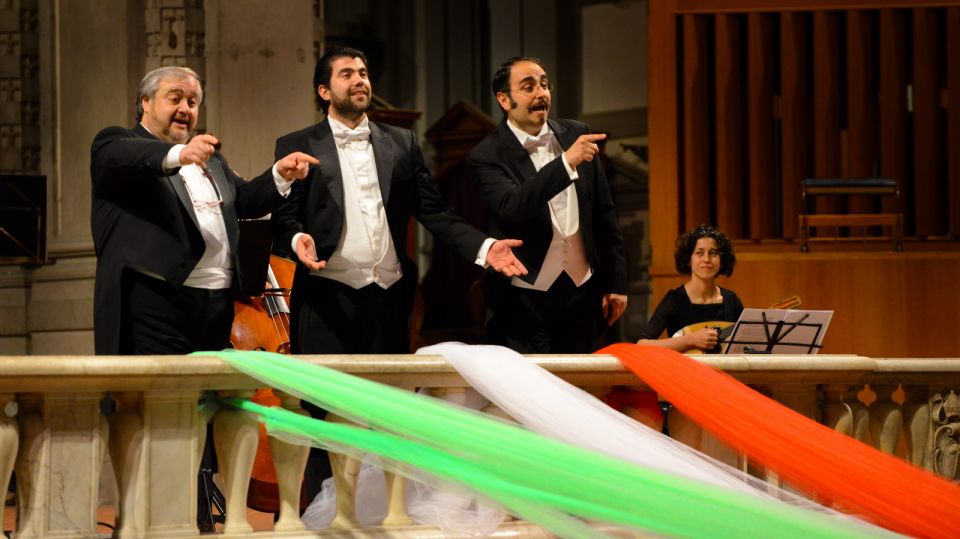
See the Three Tenors live in concert at the Santo Stefano al Ponte church.
You will be treated some of the best-known arias from the operas of Puccini, Verdi and Rossini, as well as Neapolitan songs.
Takes place twice a week - why not book your tickets to include a special 3-course Tuscan meal for an extra special evening!
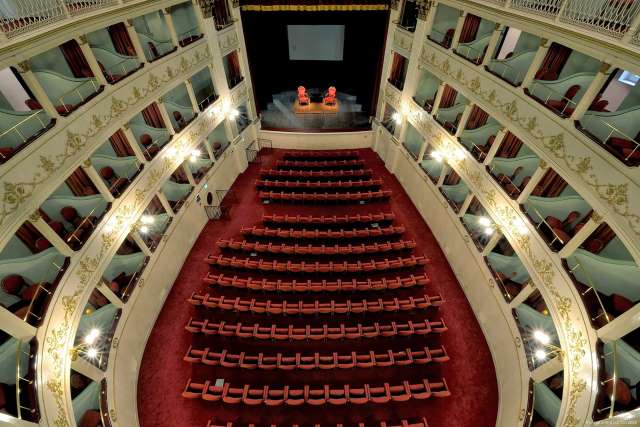
Enjoy a variety of concerts and events in Florence's oldest theater, Teatro Niccolini .
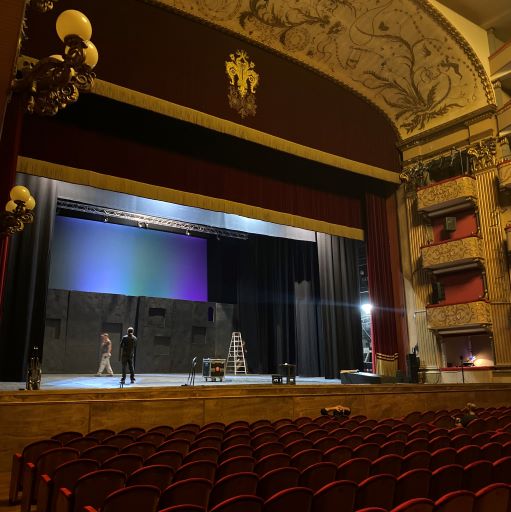
Teatro Verdi hosts many contemporary shows and concerts almost every day of the week.
Free Things to do in Florence in April
On the first Sunday of each month you can access Florence's state-run museums, archeological parks and cultural sites for free - yes, completely free !
This includes the Uffizi Gallery , Palazzo Pitti, Boboli Gardens, Accademia Gallery and many more.
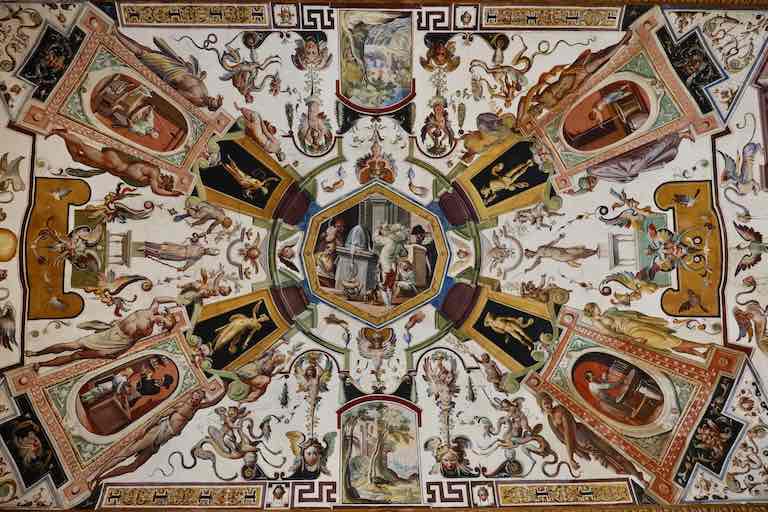
These free admission events are very popular, so plan to arrive early to be sure you get in.
More ideas for things to do in Florence in April
Maybe it's your 2nd (or 3rd or 4th) time in Florence.
Or you have more than 3 days here, or you just want to see and do lots of fun things.
Besides the obvious must-see tourist attractions, there are lots of great things to see and do in Florence !
While you can of course look at a day trip to the Tuscan countryside, Rome or even Venice, here are some ideas for your visit:
Receive the latest Florence news, travel tips, insights and more!
Simply sign-up today for our free newsletter:
We are committed to respecting your data. Click for our Privacy Policy .
Comments? Questions? Suggestions?
Please come over to the private Facebook group and join in the conversation.
You will often find me there, happy to answer your questions / comments!
You will also meet other Florence lovers and experts, too.
What are you waiting for?
Come join in the fun!

Read here about our sponsorship policy
Recent Articles
The best Florence day trips you can take | Florencewise
Apr 19, 24 09:38 AM
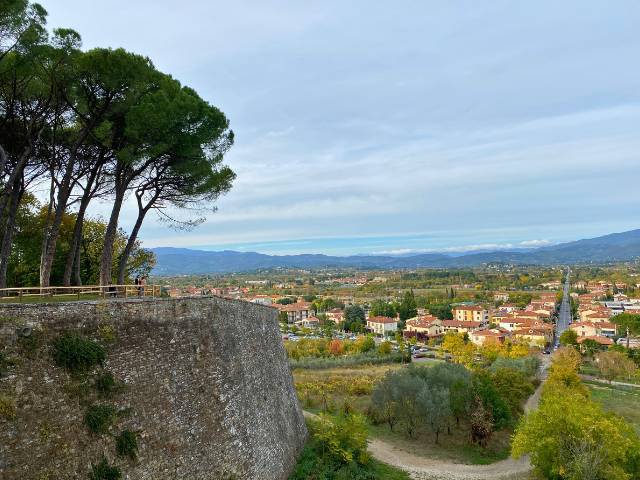
Apr 19, 24 07:41 AM
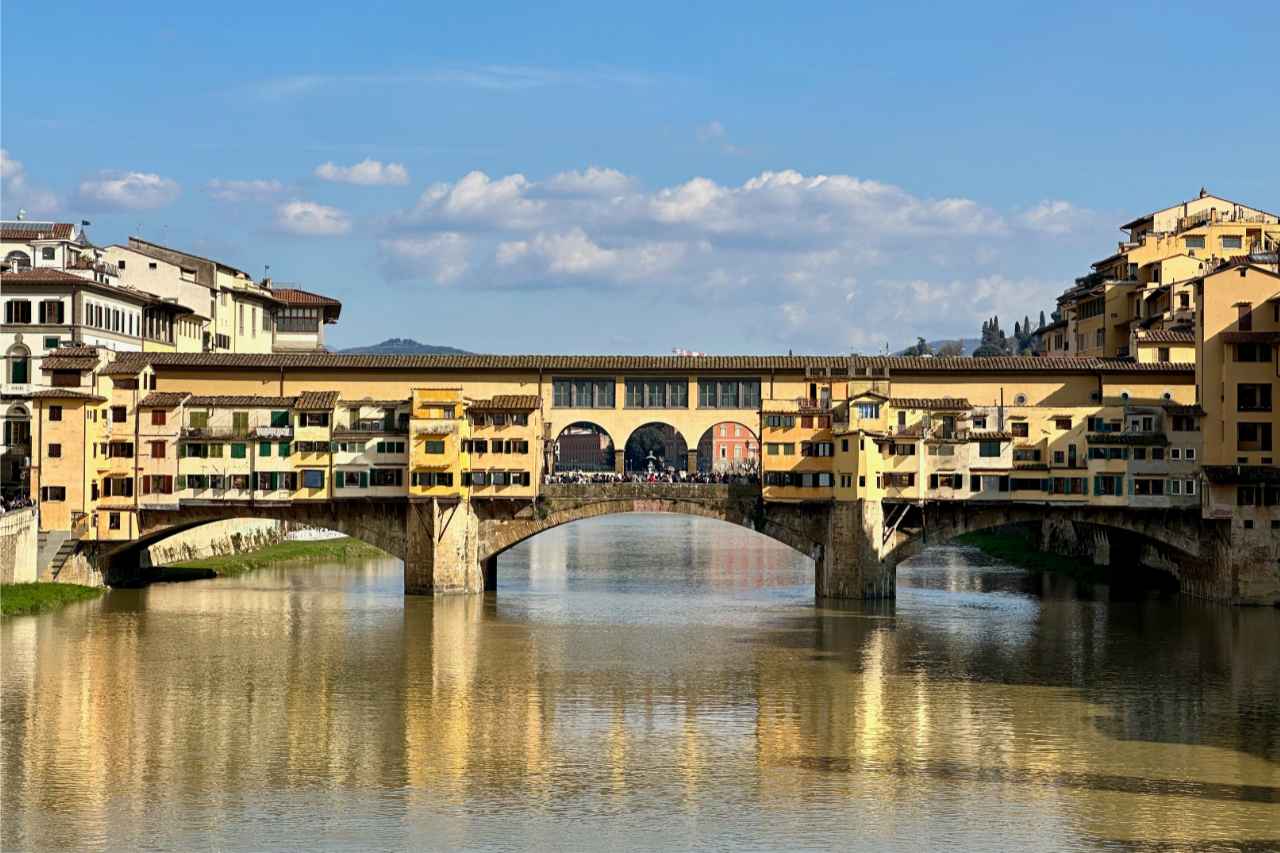
What to know about beautiful Florence in fall | Florencewise
Feb 19, 24 10:50 AM
New to Florencewise? Start Here
Coming to florence.
Things to Do
Free Things to Do
Florence With Kids
ALREADY IN FLORENCE?
Accdemia Gallery
Santa Croce
Home | About US | Privacy Policy | Legal Disclaimer | Affiliate Disclosure | Contact Me
Copyright © 2022-2024 by Elyssa Bernard, Florencewise.com | All Rights Reserved.
We also hereby confirm, as stated on our Privacy Policy page, that florencewise.com does not sell personal information.
Florence in April, Best Events and Things to Do
Early Spring is a great time to be in Florence . Nature comes back to life in an explosion of colours. Days are longer so you can spend more time outside. The temperature is pleasant, and lots of events are put on to liven up the city. Here are a few great ideas for things to do in April in Florence , from art to nature and traditional markets!
DID YOU KNOW? There are many links between Florence and Spring -> A legend traces the origin of the name Firenze (Fiorenza in Medieval time) to ‘fiore’ (Italian for flower). One of its symbols is the ‘ giglio di Firenze ‘ (Florentine iris), a variety that grows profusely in the fields surrounding Florence.
April in Florence – Best Events and Things to Do
Easter events.
Usually Easter falls in early April (though this year arrives earlier, on 31st march 2024), and Florence celebrates Easter with a spectacular event, the Explosion of the Cart . This traditional event happens every year on Easter Sunday morning in the cathedral Square . Exciting and full of folklore, the show involves a big cart filled with fireworks, a rocket in the shape of a dove and a parade in historical costume.
= > See more Easter Traditional Events in Florence
Open-air Markets
On 14th April the traditional food market Fierucolina is in Piazza del Carmine in the morning – local producers sell their wares with an emphasis on organic, local produce.
On 21st April the artisanal and food market Fierucolina is on in Piazza Santo Spirito from 9am to 7pm, with local food products and local crafts.
Every Tuesday morning there’s a huge market at the Cascine Park, with some food stalls and mainly cheap clothing and homewear. It’s a lively place and a great spot to wander along the river Arno.
San Lorenzo Food Market attracts visitors with its modern layout and varied food offering in the indoor Food Market, and dozens of stalls and shops selling all sorts of leather goods .
A photo under the wisteria pergola at Villa Bardini
April is the perfect time to visit one of our favourite Florentine gardens . The Garden of Villa Bardini , located on the slope of a hill in the Oltrarno area , is a 15 minute walk from the Ponte Vecchio , and a real delight. An historic terraced green space that offers mesmerising views over Florence .
In April the gardens put on their best show as the wisteria pergola comes into full bloom. You’ll be able to take gorgeous photos of Florence framed in purple, the perfect picture to illustrate the magic of spring.
=>Make the most of your visit to Florence with these Popular Tours in Florence
=> Read more about the Best Florentine gardens .

Exploring Boboli Gardens
Boboli , Florence’s popular historic garden is vast – over 30 hectares. And full of surprises . Its long history is visible in the range of buildings, fountains and architectural details that create a romantic and atmospheric ensemble.
BOBOLI GARDEN AND PITTI PALACE TOUR => Immerse yourself in Florentine art, nature and architecture . On this intimate small-group tour, you’ll explore some of the city’s highlights – Pitti Palace, the Palatina Art Gallery, and Boboli Gardens . Your guide will provide in-depth commentary about Renaissance history and fascinating details.
What’s on in Florence in April – Flower Shows and Art
From 25th April to 1st May 2024 it’s time for Florence’s annual Mostra dell’Artigianato , featuring hundreds of stalls with the best of Made in Italy , and art crafts from all over the world .
Flowers are the great stars of the show in Tuscany in April: on 6th-7th April 2024 there’s the Florence Flower Show at Giardino Corsini , a historic garden right in the centre of Florence. Another Flower Show is usually held every year at the Giardino Orticoltura at the end of April, just outside Florence’s city centre. From 25th April to 1st May 2024.
Art Exhibits – April 2024 in Florence
UFFIZI GALLERY – “Divina Simulacra. Classical Sculpture from the Uffizi Gallery” – from 12th December 2023 to 30th June 2024. A unique occasion to admire the Uffizi collection of ancient Roman and Greek statues close-up and appreciate all their details and lifelike quality. The statues, that are usually spread out in different rooms of the historic gallery, are now reunited in the Uffizi’s ground floor rooms , where visitors can admire them in all their beauty.
And of course, to stay on theme, you must admire the “Allegory of Spring” by Botticelli , one of Florence’s most celebrated masterpieces at the Uffizi Gallery.
PALAZZO STROZZI – Palazzo Strozzi hosts “Fallen Angels” (22th March to 21st July 2024) a major exhibition dedicated to German painter and sculptor Anselm Kiefer . Renowned for his impactful work that addresses controversial themes and taboos of recent history – notably the war and Nazi regime – Kiefer presents some of his historical and new artworks at Palazzo Strozzi, engaging in an interesting dialogue with Renaissance architecture.
=> See more Art Exhibits on in Florence in 2024 , including contemporary art at Museo Novecento.

Day Trip from Florence – a few ideas
April is a great time to explore the Chianti region , and enjoy some wine tasting . The countryside is alive with colours and the buzz of nature reborn.
Get a train or a guided tour to the magical city of Lucca . Wander along the city walls or visit the Villa Pfanner Garden. If you happen to be around on the 27th April, you’ll see the Saint Zita Festival.
Check out some more ideas for Things to do in April around Tuscany : traditional festivals, best places to visit.
=> My Secret Florence: Hidden Gems in the City of the Renaissance
=> 10 Top Art Museums in Florence
Weather in April in Florence
Temperature from 8 degrees (46 F) minimum to 18/20 (65 F) maximum . Expect fair to summery weather punctuated by a few rainy and windy days. It does get cooler in the evenings and on grey days. By the end of April, the weather gets really lovely, with balmy temperatures.
Author: Sabrina Nesi, founder of Lovefromtuscany.com, passionate about sharing the beauty of Tuscany and Italy with the world.
Disclaimer: some links to tours and services on this site will earn us affiliate commission, at no extra cost to you. The small commission we earn help us keeping the site going, thanks for reading! 🙂
Your friendly online guide to Florence and Tuscany. Get our insider travel tips delivered to your mailbox every month.
Email address:

When is the Best Time to Visit Florence?
Planning a trip but still unsure when to visit Florence?
Read on for a month-by-month guide to Florence’s weather, major events in Florence and to find out how busy the city is through the year.
Florence in January
January in Florence
Generally, one of the quietest months to visit Florence, January only has two big events to draw visitors – both part of Epiphany celebrations. With fewer tourists around, you can enjoy the city at your own pace and appreciate its culture and art — no tourists will crowd your view of David or Botticelli's Birth of Venus.
Sales are underway, so pack light and use the colder temperatures as an excuse to go shopping.
Florence weather in January
January is the coldest month of the year , with a typical daytime high of 7℃ (44℉) and a low of 0℃ (32℉) overnight. Despite an occasional snowfall, the sun shines most days. Remember to pack your sunnies, as well as some heavy-duty winter cashmere.
Days are short — a good excuse to begin your aperitivo at 5pm.
How busy is Florence in January?
Winter in Florence is low season for tourism. With fewer crowds at art museums or cookery classes, you may not need to book ahead. You can easily find a table at typical trattorias which are either fully booked or closed all summer, such as Da Camillo, Trattoria Sostanza, Trattoria Omero.
What’s on in Florence in January?
While the rest of the world rediscovers healthy living with juice-cleanses and Dry January, Florence prepares for the feast of the Epiphany. It is a national holiday across Italy. For the Cavalcata dei Magi , participants dress in medieval costume and wind around the streets of Florence singing and dancing. A live nativity and ceremonial mass is held outside of the Duomo.
A glass of juice made from Sicilian blood-oranges — in season each January — will ease your hangover.
Like everywhere in Italy, the first Sunday of the month is also free admission to state-owned museums (Uffizi, Bargello and others) and archaeological sites.
Florence in February
Romantic Florence in February Ponte Vecchio
Still a quiet month to visit Florence, February in Florence is for lovers and anyone with a sweet tooth. With fewer tourists you can see a quieter side to the city. Without a doubt, an ideal period for romantic getaway to one of our Florence villas.
Florence weather in February
February is a cold month , with a typical daytime high of 10℃ (50℉) and overnight lows of 2℃ (36℉). On most days the sun shines, but don’t let that fool you.
You might be lucky to catch a golden winter sunset from the Ponte Vecchio — where better to seal a Valentine’s kiss?
How busy is Florence in February?
Winter in Florence is low season for tourism. If you are arranging a last-minute holiday, you may not need to book activities ahead of time. You can easily find a table at romantic restaurants such as Enoteca Pinchiorri , La Bottega del Buon Caffè and Fuor d’Acqua , which are typically booked all summer.
What’s on in Florence in February?
Short, cold days call for afternoons buried in a book by the fireplace with a piece of Schiacciata alla Fiorentina.
This sweet pastry prepared during Carnival season resembles a sponge cake with a cream filling. Pasticceria Giorgio is renowned for the best; just ask the Florentines who queue outside.
The first Sunday of the month is free admission to state-owned museums (Uffizi, Bargello and others) and archaeological sites.
Florence in March
Truffle Hunting experience
As Spring draws closer, blue skies and colorful landscapes return. All the more pleasant for long walks in the Florentine countryside. If you’re lucky, you may even spot a mimosa tree in bright-yellow bloom .
Florence weather in March
Alongside warmer temperatures , March is known for occasional showers. An umbrella is your friend.
Dress in layers because the temperature fluctuates during the day, with a typical daytime high of 16℃ (61℉) and lows of 5℃ (41℉) overnight.
How busy is Florence in March?
Even late winter in Florence is still low season for tourism. With fewer crowds and cooler temperatures you can join activities like a countryside Fiat 500 Tour or Truffle Hunting , which are either fully booked or too hot to fully enjoy in high summer.
What’s on in Florence in March?
March 8th is International Women’s Day. Italian tradition is to gift the women in your life a yellow mimosa flower, as a sign of respect and solidarity.
On the first Sunday of the month state-owned museums (Uffizi, Bargello and others) and archaeological sites offer free admission.
Treat someone to a flavorful experience. The Taste fair is dedicated to excellence in food, wine, objects and ideas that rule contemporary Italian culture.
This is the season to try Italian vegetable, agretti . This underrated succulent — sometimes called “Barba di Frate” (Monk’s Beard) — is known for anti-aging, detoxifying properties.
Florence in April
Traditional Colomba di Pasqua
An exciting time to visit, Florence in April has one of the year’s biggest and loudest events: an exploding wooden cart . Spring promises renewal, a new start, and the end of Lent.
Florentines take everything chocolate seriously. Giant Easter eggs appear in store window displays all over the city.
Florence weather in April
Tuscan farmers survive April via the local motto, “Terzo aprilante, quaranta giorni durante”: if it rains on April 3rd, the rain will continue for another 40 days. Better pack that emergency umbrella.
Temperatures are warmer... but not yet bikini friendly. Expect daytime highs of 20℃ (68℉) and an overnight low of 7℃ (43℉).
How busy is Florence in April?
Easter weekend is packed, but the rest of April is still relatively low season for tourism.
If you come during the holiday weekend, however, we recommend you book major museums (especially the Uffizi ), restaurants, wine tasting and cookery classes in advance.
What’s on in Florence in April?
Florentines take stereotypical Italian loudness to another level with their most exciting festival of the year. The Scoppio del Carro is a folklore Easter Day tradition with 150 white oxen, an antique cart filled with fireworks and a very big, very loud explosion. Earplugs are recommended.
Alternatively you can celebrate Easter local-style, with an abundance of chocolate eggs and traditional Colomba di Pasqua . This sugar-topped sweet bread is similar to Panettone and baked into the shape of a dove.
Don’t forget the first Sunday of the month , when all state-owned museums (Uffizi, Bargello and others) and archeological sites offer free admission.
Florence in May
Piazza del Duomo
Seated on the steps of Santo Spirito, enjoying the sun, sipping on an Aperol Spritz, can mean only one thing: summer is in the air.
The Birth of Venus sounds exciting. So does climbing 463 steps to the top of the Duomo. But just ask yourself: “What would Frances in Under the Tuscan Sun do?” When in Rome….
Florence weather in May
Expect a daytime high of 24℃ (75℉), ideal to stay outdoors in the Iris and Rose Gardens. Florence’s flowers are in full bloom and nothing looks more Insta-friendly than #mayinbloom.
Make use of longer days to explore the city but carry a jacket: temperatures drop to 13℃ (55℉) overnight.
How busy is Florence in May?
We may fantasize about summer afternoons strolling Florence, but the reality will also require skills in crowd-dodging.
Genuine peak season has not yet begun, but we recommend you book everything in advance. ( Our travel concierges can help. )
What’s on in Florence in May?
One of Italy’s historic classical music festivals, Maggio Musicale Fiorentino takes place in May and June. You can enjoy concerts, opera and ballet.
Cherries — in season each May — are said to have antioxidant properties. A portion of 15 juicy ones counts as one of your 5-a-day, so multiply by 5 and you’re on track.
Night of the Museums (mid-May) sees museums open past midnight, with free or cheaper admission. If you miss the chance, on the f irst Sunday of the month state-owned museums (Uffizi, Bargello and more) and archaeological sites offer free entrance.
Florence in June
Art in Florence - Via CalimalaA busy month to visit Florence, June is the start of summer and the proper high season.
With the month’s big events all outdoors, you have excuses to be out enjoying the sun. Pack a hat, an extra pair of sunnies, and sunscreen.
Florence weather in June
The weather in June is great for outdoor activities . Temperatures are still tolerable, so you get to enjoy the city without drowning in sweat.
Expect a daytime high of 28℃ (82℉) and lows of 17℃ (63℉) overnight.
How busy is Florence in June?
Summer in Florence is high season , so expect crowds. This may be the time to relax by your private pool in a villa near Florence.
We recommend booking all activities in advance, including making restaurant reservations (especially on weekends).
What’s on in Florence in June?
Summer has sprung, so local events and activities take to the streets. Sixty days after Easter, Florence celebrates the Catholic feast of Corpus Christi with a street procession.
Calcio Storico is a violent version football from the 1500s — ruthless and uniquely Florentine. It takes place throughout the month of June, occupying Piazza Santa Croce.
When the sunshine gets overwhelming, stop by Gelateria della Passera for a thirst-quenching fig gelato. Figs are in season from June to September.
To escape the sun, stop by the Uffizi (or any state-owned museum or archeological site) on the first Sunday of the month for a free visit.
Florence in July
Cooking Classes at Villa di Petroio
Florence sits in a basin surrounded by mountains. This specific geography means cool, wet winters and hot, humid summers.
Summer is the busiest and hottest part of the year. As the city fills up with tourists, locals escape to the seaside and mountains.
No major city-wide events take place, so use the time to visit museums, lounge under a tree at the Boboli Garden, or read a book by the pool in your villa near florence.
Florence weather in July
The Florentine heat has officially arrived. You should expect a daytime high of 30℃ (86℉), dropping to 19℃ (66℉) overnight.
To avoid the blistering sun, explore outdoors in the early mornings and late afternoons.
How busy is Florence in July?
Summer in Florence is high season , and July is the busiest month of the year, so expect crowds. We recommend booking all activities in advance. Or just swap cultural activities for a cooking class or wine tasting at a villa near Florence.
What’s on in Florence in July?
Local-oriented events are thin on the ground, so you get to enjoy Florence’s museums at your own pace. On the first Sunday of every month , state-owned museums and archeological sites in Italy offer free entrance.
Most city trattorias have air-conditioning — much-needed after hours in the heat. A plate of prosciutto e melone (Parma ham and melon) works wonders in cooling you down.
Florence in August
Enjoy the large pool and the beautiful views at Villa di Masseto
Oh, Florence, the dog days are not over. They have only just begun.
August is Florence’s hottest month . Right across central Italy, cities become ovens and those clever locals escape to the mountains and coast.
And who wants to be out in the heat and sun all day? Lounging by the pool at your villa is much more appealing.
Florence weather in August
August is the hottest month of the year , with a regular daytime high of 32℃ (89℉) and low of 20℃ (68℉) overnight.
Humidity is at its highest, so wear loose clothing and drink plenty of water.
How busy is Florence in August?
Summer in Florence is high season . Book all activities and restaurants in advance (or ask our travel concierges to do it for you).
What’s on in Florence in August?
Don’t be surprised to find yourself spending your holiday in the pool.
For a dose of culture, enjoy a free visit to any state-owned museums and archeological sites on the first Sunday of the month. They are all air conditioned!
Many Florentines and visitors escape uphill to Fiesole for Estate Fiesolana . This summer festival features classical music and theatrical performances inside churches, gardens, elegant villas and Fiesole’s outdoor Roman Theatre.
If all else fails, max out on watermelon . Its cooling properties are renowned.
Florence in September
Pasta at I Corbezzoli
As high summer ends, Florence returns to (relative) quiet and calm. Like May, this is an ideal time to enjoy the city , along with its fine late-summer weather.
Florence weather in September
Autumn may be on the way, but Florence weather is still warm . You will be safe packing summer dresses, shorts and sandals. A light jacket for the evening is a good idea.
Expect a typical daytime high of 27℃ (81℉). Lows of 17℃ (62℉) overnight are standard.
How busy is Florence in September?
September in Florence is shoulder season for tourism. With fewer crowds you may not need to book activities ahead of time.
We recommend you reserve at high-end restaurants . Many close over the summer and only reopen in September.
What’s on in Florence in September?
The Festa della Rificolona is the oldest festival in Florence. It marks the birthday of Jesus’s mother with a procession of colourful papier-mâché lanterns, street performances, live music and food stands.
Culinary king of September is the Porcini mushroom . You will see it on menus everywhere, on pasta, pizza or even alone as a thin-sliced carpaccio.
All year, on every first Sunday of the month , state-owned museums and archeological sites across Italy offer free entrance.
Florence in October
Extra Virgin Olive Oil
Generally, a quiet month to visit, October in Florence signifies change. As the weather adjusts, autumnal colours appear — just in time for the olive harvest.
Don’t worry: driving with the roof down is still doable.
Florence weather in October
Summer dresses and sandals may be out of the question, but don’t forget your sunglasses.
You should expect a daytime high of 23℃ (73℉) with sunshine and blue skies, typically falling to 12℃ (54℉) overnight.
How busy is Florence in October?
Autumn in Florence is the start of low season for tourism.
With fewer crowds at art museums and cookery classes, you may not need to book ahead. You can easily find a table at typical Florentine trattorias which are either fully booked or closed in summer.
What’s on in Florence in October?
One of the most anticipated periods of the year has arrived: the olive harvest. You must try the new Extra Virgin Olive Oil. All you need is a slice of toast and the willpower to resist finishing the bottle.
Don’t forget every first Sunday of the month, when state-owned museums and archeological sites across Italy offer free entrance.
October also welcomes a new season at Florence’s opera house .
Florence in November
Another quiet month to visit Florence, November still draws weekenders. With fewer tourists you can appreciate the city’s culture, art, and most importantly... food.
Indeed, food ends up the star of the show: this month marks the annual return of Tartufo Bianco (White Truffle) season.
Florence weather in November
The temperature drops in November, with a typical daytime high of 15℃ (59℉) and a low of 5℃ (41℉).
The weather is cool and damp . But there’s an upside: this is the perfect climate for truffles.
How busy is Florence in November?
Autumn in Florence is low season for tourism. Excluding Florence Marathon weekend, you should not need to book either activities or restaurants.
What’s on in Florence in November
Firenze Marathon is one of the world’s top 20 marathons. The route passes through and around the historic centre of Florence, close to many prestigious art and architecture sights.
Does 26.22 miles (46 km) sound like a challenge? With just enough sweet bakery treats — the seasonal Schiacciata dei Santi and Castagnaccio — you’ll be running laps around the other competitors.
Florence in December
Christmas streets in Florence
December is a quiet month, yet there are many cheerful reasons to visit Florence.
Christmas is in the air; carols echo around cobbled streets cheered by Christmas decorations and lights . The air is sweet with the scent of mulling Vin Brulé.
With fewer tourists, you get Florence to yourself… including all 3,000 calories in a festive Panettone.
Florence weather in December
December is a cold month in Florence. The typical daytime high is 6℃ (43℉), with a low of 0℃ (32℉) overnight.
Days are shorter, but Christmas lights and hot chocolate at Paszkowski compensate.
How busy is Florence in December?
December is a low season for tourism. With fewer crowds at museums and classes, you may not need to book ahead. You can easily find a table at high-end restaurants and typical trattorias.
What’s on in Florence in December?
If you want to attend Mass, you will find services in most Florence churches. Midnight Mass on the 24th typically begins at 11 pm, with another service on the 25th at 10.30 am.
You can even attend traditional Christmas Eve/Morning Mass at the Duomo , celebrated by the Cardinal of Florence. Our front every year is a life-sized nativity scene, made with terracotta statues created by the artisans of Impruneta .
Although not genuinely Florentine, Christmas markets are in town. One of the biggest is outside Santa Croce. It draws on German traditions in food, wine, and crafts.
To end on something sweet, enjoy a piece Panettone . This festive bread containing candied fruit is best enjoyed with a glass of sweet wine. Buon Natale!
Book your luxury villa holiday
All experiences are exclusively available to you when you book a luxury villa in Italy with Tuscany Now & More. Too add on any enriching extras, contact our local Villa Specialists to share your villa shortlist and secure your stay.
(*)Please read this before completing any of our enquiry forms. The information you provide is to facilitate our response to your enquiry, a brochure request or to make a booking. Click here for our Web Privacy Statement for the full details of how your information may be stored and used.
By submitting your information, you agree that Tuscany Now & More may contact you via email or phone with commercial and informational purposes.
There is an option to discontinue direct communication and to do this simply click on this link [email protected] and follow instructions. All payments for bookings are done via a link having a Secure Sockets Layer (SSL) protocol. No information regarding credit card or debit card details is held by us.
Subscribe to our newsletter
Receive your Free ‟Tuscany in 10 Minutes Guide”
We respect your privacy. Learn how we handle your details in our Privacy Policy.
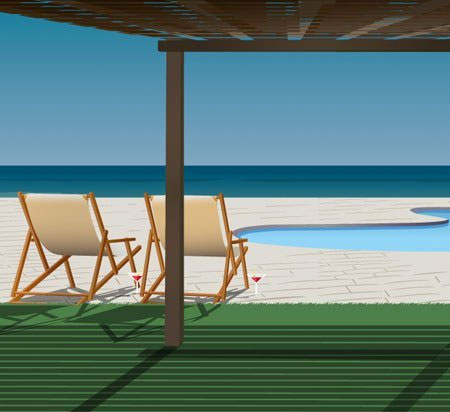
Keep in touch with Tuscany Now & More
- Top Things to do
- Florence Tours
- Attractions
- Uffizi Gallery
- Duomo Florence
- Accademia Gallery
- Boboli Gardens
- Palazzo Vecchio
- Palazzo Pitti
- Bargello National Museum
- Medici Chapel
- Florence To Chianti Tours
- Florence To Cinque Terre Tours
- Hzero - The Miniature Railway
- San Marco Museum
- Basilica of Santa Croce
- Walking Tours
- Guided Tours
- Hop-On Hop-Off Tours
- Theme Parks
- Water Parks
Florence in April | Weather, Museums, Attractions & More
Tipped off one of the most popular destinations in Italy, Florence is a place you cannot miss visiting. The city in the Tuscan region of Italy is known for its undulating hills, huge farms and vineyards, some classic galleries of the world, and marvelous architecture that capture the awe of tourists globally. Be it Michelangelo’s “David” sculpture or da Vinci’s “Annunciation,” the city has it all in the kitty.
Is April a Good Time to Visit Florence?
April is one of the ideal and finest months to visit Florence owing to the pleasant weather conditions and early spring seasons without much tourist influx.

Why You Should Visit Florence in April
- The temperature is mild and not unbearable to visit during the afternoon hours.
- The moderate temperature allows one to take an adventure and outdoor activities too.
- The tourist influx is relatively low during April and travel rates are cheaper
- One can grab some good offers on their stays and accommodation too.
- The flower gardens around Florence have bloomed; one cannot simply miss that.
Tickets are cheap as it is off-season.

What to Look Out for in Florence in April
- You might witness a few rainy days and a bit of warm temperatures during April.
- You might have to always carry an umbrella for safety as it might rain unpredictably.
Overview of Weather in Florence in April

The weather during April is still warm with some chilly and rainy times too. The overall weather is pleasant and the tourist crowds are very less during April which makes it ideal for people who want to avoid crowds during travels.
- Average Temperature: High - 19 ℃ Low - 8 ℃
- Average Rainfall: 86 mm
- Average Wind Speeds: 10.7 miles per hour
- Average Daylight Hours: 12.45 hours
More About Weather in Florence in April
How hot is Florence in April?
Florence has a mixture of warm and rainy days during April with temperatures soaring to 19℃.
Can you swim in Florence in April?
One should not consider swimming during April as the temperatures are not too high and the water is still a bit freezing.
Is it sunny in Florence in April?
Sun shows up in April with an average of 12.45 hours of sun the entire month.
Is it rainy in Florence in April?
Yes, it rains at times during April in Florence, With an average of 86 mm rainfall, it averagely rains on around 8-9 days of the month.
Best Things to do in Florence in April

1. Uffizi Gallery
Art gallery | tourist hotspot.
The significant art museum of Florence, Ufizzi gallery, holds prominence among the world's art galleries as it is one of the world's largest and most visited museums. Giorgio Vasari constructed the building which houses the Uffizi gallery in the 1560s.
Masterpieces from collections of different artists famous during the Renaissance period like- Giotto, Simone Martini, Beato Angelico, Mantegna, Correggio, Filippo Lippi, Botticelli, Raffaello, Leonardo, Michelangelo, and Caravaggio find a place in Uffizi gallery.
April Timings : 8.15 AM to 6.30 PM (closed on Monday)

2. Florence Duomo
Unesco site | tourist hotspot.
Consecrated in 1436, Florence Duomo is considered the largest church in the world and accommodates around 30000 worshippers. With a white, red, and green marble façade, the grandeur makes the visitors go in awe of the medieval architecture. Also known as Santa Maria del Fiore, the Duomo has the largest masonry dome in the world. One of the interesting facts about the cathedral is the person who designed the rooftop had no previous training.
April Timings:
Cathedral Timing: 10:15 AM to 04:15 PM (Monday to Friday)
Brunelleschi's Dome Timing: 12:45 PM to 06:45 PM (Monday to Friday)Saturday, Sunday closed

3. Accademia Gallery
Art gallery | top attraction.
Galleria dell' Accademia / Accademia Gallery has extensive collections of paintings and sculptures of the world, housing works of some of the greatest artists like Michelangelo, Bartolini, Pampaloni, and Gaddi, among many others. Some famous paintings in the gallery are Venus and Cupid, Descent from the Cross, Annunciation, etc., famous among art enthusiasts for their realistic models and forms. Sculptures like David, The Young Slave, and St. Matthew are prominently placed in the gallery.
April Timings: 9:00 AM to 6:45 PM (Tuesday to Sunday)

4. Boboli Gardens
Open-air museum | unesco site.
The UNESCO site is a 16th-century garden built by various designers in different stages. Some designers who participated in construction and sculpture completion were Niccolò Tribolo, Bartolomeo Ammanati, Giorgio Vasari, and Bernardo Buontalenti. The Italian Garden was built for the Medici, but also served as an inspiration for many European gardens. Statues of ancient, medieval, and modern Renaissance are well distributed throughout the park.
April Timings: 8:15 AM to 4:30 PM (Daily)

5. Palazzo Pitti
Museum | historical monument.
Palazzo Pitti, or Pitti Palace, is a historical monument that dates back to 1458 AD and is considered the township of a wealthy and prosperous Florential banker- Luca Pitti. However, it was later bought by the Medici family. You will be amazed to know that the palace was once made a political seat of power by Napoleon Bonaparte. The Palatine Gallery in the palace houses many classical Renaissance paintings, which form the private art collections of the Medici’s successors.
April Timings: 1:30 PM - 6:50 PM (Tuesday-Sunday)

6. Palazzo Vecchio
Town hall | top attraction.
Built for Signoria, the fathers of the Florence republican government, the palace's construction started during the early years of 1299 and was completed in 1314. The impressive architecture was built in the Tuscan Gothic style by Arnolfo di Cambio. Some of the most significant sculptures are those of Adam and Eve, Hercules and Caucus, the Fountain of Neptune, and the statue of Cosimo I. The Gothic windows and civic architecture are a hit among art enthusiasts who flock to the town hall in large numbers.
April Timings: 9 AM to 11 PM (Friday-Wednesday) | 9 AM to 2 PM (Thursday)

7. Museo del Bargello
Art museum | historical monument.
The word Bargello comes from the Latin word bargillus , which means a fortified tower. Palace construction started in 1255 and served as the chief residence of the city magistrate of Florence. Besides, the palace also houses classic pieces of art from the Renaissance period like Michelangelo's Bacchus , Pitti Tondo (or Madonna and Child ), Brutus , and David-Apollo . The Islamic Hall, though added at a later stage, is still a breathtaking piece of work.
April Timings: 8:15 AM to 5 PM

8. Medici Chapels
Tomb museum | top attraction.
The two structures- Sagrestia Nuova and Cappella dei Principi were constructed in 16th and 17th century Florence as an extension to the main church to celebrate the grandeur of the Medici family. Sagrestia Nuova was designed by Michelangelo. Sculptures of unfinished Madonna and Child flanked by the Medici patron saints and sculptures of days, nights, dawn, dusk, and tombs were also built within the premise. The striking look of Cappella dei Principi is due to the high-rise structure that rises to 59m. Designed by Matteo Nigetti, it is one of the finest examples of court art.
April Timings: 8:15 AM to 5 PM (Tuesday-Saturday)

9. Siena Cathedral
Church | historical monument.
Siena lies in the Tuscany region of Italy, and its huge popularity is due to the fact that it was the seat of the Diocese of Siena in earlier times. The mesmerizing art, architecture, sculpture, and paintings of the UNESCO World Heritage Site hold a lot of prominence. It is believed that the black and white pattern of the monument is due to the black and white horses of the city's founders, Senius and Aschius.
April Timing: 10 AM to 7 PM

10. Day Trip to Pisa
Day trip | international landmark.
Pisa, the city of the famous leaning tower, is quite near Florence, and a daily train takes around 1 hour and 15 minutes to reach. From striking church architecture to splendid monuments and Italian squares, Pisa is a place that is worth visiting. The tower can be climbed and can be captured from different angles. Do not forget to score Gelato ice cream when in Pisa.

11. Wine Tasting at Chianti
Day trip | culinary experience.
Chianti is one of the most beautiful destinations in Florence, known not just for fine wine tasting but also for breathtaking places. The place is the hub for wine production, owing to some of the marvelous vineyards. The wavering hills and plains make the place worth visiting, along with the fine arts of medieval times. You can participate in organized as well as self-wine tasting based on the appointments at various restaurants.
April Timing: All day long

12. Train Rides at Cinque Terre
Day trip | adventure experience.
Cinque Terre is one of the most popular destinations which characterizes Florence in world postcards and photographs. The UNESCO World Heritage Site is a sea destination that is reachable using a daily express train that runs between La Spezia and Levanto in Sestri Levante, which stops at all fishing villages and runs in each direction. The breathtaking place is famous for its vineyards, windy cliffs, sumptuous cuisines, and wines.
April Timing: Fixed as per the train schedule
Top Experiences & Things to do in Florence in April
Festivals in florence in april.

Gelato Festival
Dates: During April
The festival held in Piazzale Michelangelo is an invitation to all sugar lovers who want to try their taste buds for some lip-smacking gelatos.

Liberation Day
Venue: Throughout Florence Dates: 15th April
The national public holiday to mark the end of World War II in Italy is celebrated on Liberation Day. Food festivals, concerts, theatrics, and fairs are held throughout Italy, including Florence. People wave the national flag of Italy and honor the fighters who fought in the war.
Events in Florence in April

Il Pagliaio
Venue: Chianti Dates: 4th Sunday of April
The event commences with local artisans offering different kinds of their products and craftsmanship for purchases to tourists and visitors. The wine tasting events are organized on the day, and good music and food elements add to the event's overall feel.

Florinfiera
Venue: Borgo San Lorenzo Dates: April month
The town is just outside central Florence city and is known to showcase the colors of various flower blooms, their aromas, and vibrancy during the spring month. The ideal weather not only helps the nursery grow in full swing but also adds to visitors' overall experience.

Florence Bike Festival
Venue: All across Florence Dates: April 12- April 14
The Florence Bike festival incentivizes every person in the city- youngsters, elderly, visitors, and tourists to try their hand at biking. Cycle enthusiasts find this event a real fun to catch up on fitness and overall biking experience.
Know Before You Visit Florence in April

- Time Zone: Central European Time (CET) -2 hours ahead of GMT (GMT+02:00).
- Currency: Euro | EUR | €
- Language: Italian
- Country code: +39
- Emergency number: Dial 112 for police, fire, and medical services.

What to Wear in Florence in April
- If you're planning a trip to Florence in April, you'll want to pack some light and comfortable clothing. The weather in Florence during April is typically mild, with highs in the low-70s Fahrenheit (around 21 degrees Celsius).
- However, it can rain occasionally, so you'll also want to bring along a jacket or umbrella. Florentine Aprils is relatively dry, so you won't need to worry too much about packing for wet weather.
- Long Cotton pants or jeans
- Comfortable shoes or pair of sandals
- Umbrellas are a must
- Casual dresses and shirts
- Raincoat and water-repellent shoes.

What to Pack For Florence in April
- Temperatures are mild during April so it is advisable to carry cotton clothes for day time and some sweater or cardigan during the evening
- As there might be rain during 5-6 days of the month, it is considered to carry raincoats or waterproof clothes and footwear
- Carry extra pair of socks (just in case).
- Lightweight jackets can be carried too.
- A waterproof phone case can be carried.
- 3-pin - 2-pin converter plugs with round pins for the C, F, and L-type sockets can be kept.

Getting Around Florence in April
- Buses : With over 100 bus lines, the bus system of Florence city is quite extensive and helps people to cover the city at an affordable rate. Bus services are available during night (10 PM to 2 AM) hours. C1, C2, C3, and C4 are electric lines and cover almost all of the city.
- Trams: Trams started functioning in 2014, and currently, three lines are actively connected using trams. However, none of the city's historical monuments are widely connected using trams, making it a less convenient option for travel and more of an experiential ride.
- Taxis : They are a popular choice of travel among visitors and tourists as they connect almost any place in the city to anywhere else. In fact, intercity taxis to the other parts of Tuscany are also widely available and are available on all days.

Where to Stay in Florence in April
One can choose a convenient place to stay depending on their travel needs.
- Budget Hotels: Residenza Florentia , YellowSquare Florence , Camping Village Panoramico Fiesole
- Mid-Range Hotels : Atelier delle Grazie , Duomo View , Hotel Medici
- Luxury Hotels: The Place Firenze , Casa Howard Guest House Rome and Florence , Novotel Firenze Nord Aeroporto

What to eat in Florence in April
Being a hub of food lovers from around the world who go to Italy to specifically try their various food options and beverages, Tuscany gastronomic experience is a must. Some of the widely known options that cannot be missed are:
Gelato : Italy has some of the tastiest gelatos in the world, coming in various tastes. The handmade gelatos are a total food delight and the best form of sugar rush one can ever experience.
Schiacciata Fiorentina: The soft, spongy, sweet taste cake is covered with powdered sugar and is rectangular in shape. This cake is an absolute treat if you are traveling during the time of Easter to almost any bakery in Florence.
Ribollita : Loaded with different kinds of vegetables, bread, and Parmesan cheese, the vegetable soup or Ribollita is loved by locals as well as visitors. Even though it is a typical winter dish, it can be tasted around the year for its amazing flavor.
Tips to Visit Florence in April
- Withdrawing money from ATMs in Florence can cost your pocket, so be aware and carry sufficient cash during your travels.
- Carry layered jackets or clothing as the temperature is not yet warm, and you might need it during evening hours.
- Pre Book your taxi rather than getting it on the spot as this might be costly.
- Book your travel tickets well in advance as April is not a month of tourist crowds and you might get some exciting deals too.
- Try indulging in street shopping where you can get some nice artifacts, pieces of jewelry, apparel, and dresses at an affordable rate.
- Consider historical spaces and some new coffee cultures too in Florence as it is a place of brewing delight.
Explore Florence Through the Year
Frequently asked questions about visiting florence in april.
April is one of the ideal months to visit Florence , as the crowd influx has not yet begun and the accommodation and travel costs are reasonable. It is one of the seasons just before the touristy crowd starts arriving in Florence.
The best things to do in Florence in April are visiting vineyards in Chianti and going wine tasting in some local restaurants along with getting hold of some local festivities like Easter in full swing.
No, it is not too cold in April and the minimum temperature you may experience is around 8° C.
The temperature in Florence can range to a maximum high of 19° C and it is not too warm during April.
Yes, you can swim in Florence in April. The weather is usually warm enough to enjoy swimming in the city's pools and rivers. However, be sure to check the weather forecast before heading out, as the occasional cold front can make the water too chilly for comfortable swimming.
Yes, it is sunny in Florence in April and average daylight hours in the month is around 13 hours.
Light and comfortable clothing are the best options to wear along with waterproof jackets and shoes.
On an average it rains around 8 days in Florence with 86 mm of rainfall.
If you plan in advance, Florence might not be that expensive to travel to.
One should remain aware of pickpockets in crowded spaces and thefts. Besides, avoid strolling down alone in the silent lanes of Florence during the night hours.
You can expect to see flower blossoms and Easter celebrations during April.
Florinfiera, Florence Bike Event are some of the major events in Florence in April.
Average temperature in Florence is around 8°C to 19° C.
Liberation Day, which is one of the national holidays in Italy falls during the month of April and one can take part in fairs and food festivals around this time.
Florence Travel Guide
Courtesy of ricardomartinez | Getty Images

Best Times To Visit Florence
The best time to visit Florence is between May and September when warm weather ushers in art festivals, open-air dining and the kind of Italian sunshine that inspired the Renaissance painters. Unfortunately, it also brings sweltering weather, tourist swarms and high hotel rates. If you visit in late fall or winter, you'll enjoy lower room rates and much shorter lines at the Uffizi . But the meteorological conditions won't be as hospitable, with low temperatures dropping into the mid-30s Fahrenheit.
Weather in Florence
Data sourced from the National Climatic Data Center
Find Flight and Hotel Deals
Navigate forward to interact with the calendar and select a date. Press the question mark key to get the keyboard shortcuts for changing dates.
Navigate backward to interact with the calendar and select a date. Press the question mark key to get the keyboard shortcuts for changing dates.
Popular Times to Visit Florence
Tourism volume is estimated based on in-market destination search query interest from Google and on travel.usnews.com in 2015-2016. Hotel prices are sourced from a sample of U.S. News Best Hotels rates through 2015-2016.
Explore More of Florence

Things To Do

Best Hotels

You might also like

# 1 in Best Winter Vacations in Europe

Tuscany, Italy
# 1 in Best Wine Vacations

Cinque Terre
# 4 in Best Places to Visit in March 2024
If you make a purchase from our site, we may earn a commission. This does not affect the quality or independence of our editorial content.
Recommended
The 18 Best Napa Valley Wineries to Visit in 2024
Lyn Mettler|Sharael Kolberg April 23, 2024

The 25 Best Beaches on the East Coast for 2024
Timothy J. Forster|Sharael Kolberg April 19, 2024

The 50 Best Hotels in the USA 2024
Christina Maggitas February 6, 2024

The 32 Most Famous Landmarks in the World
Gwen Pratesi|Timothy J. Forster February 1, 2024

9 Top All-Inclusive Resorts in Florida for 2024
Gwen Pratesi|Amanda Norcross January 5, 2024

24 Top All-Inclusive Resorts in the U.S. for 2024
Erin Evans January 4, 2024

26 Top Adults-Only All-Inclusive Resorts for 2024
Zach Watson December 28, 2023


Solo Vacations: The 36 Best Places to Travel Alone in 2024
Lyn Mettler|Erin Vasta December 22, 2023

26 Cheap Beach Vacations for Travelers on a Budget
Kyle McCarthy|Sharael Kolberg December 4, 2023

The 50 Most Beautiful White Sand Beaches in the World
Holly Johnson December 1, 2023

The best times to visit Florence

Apr 7, 2024 • 5 min read
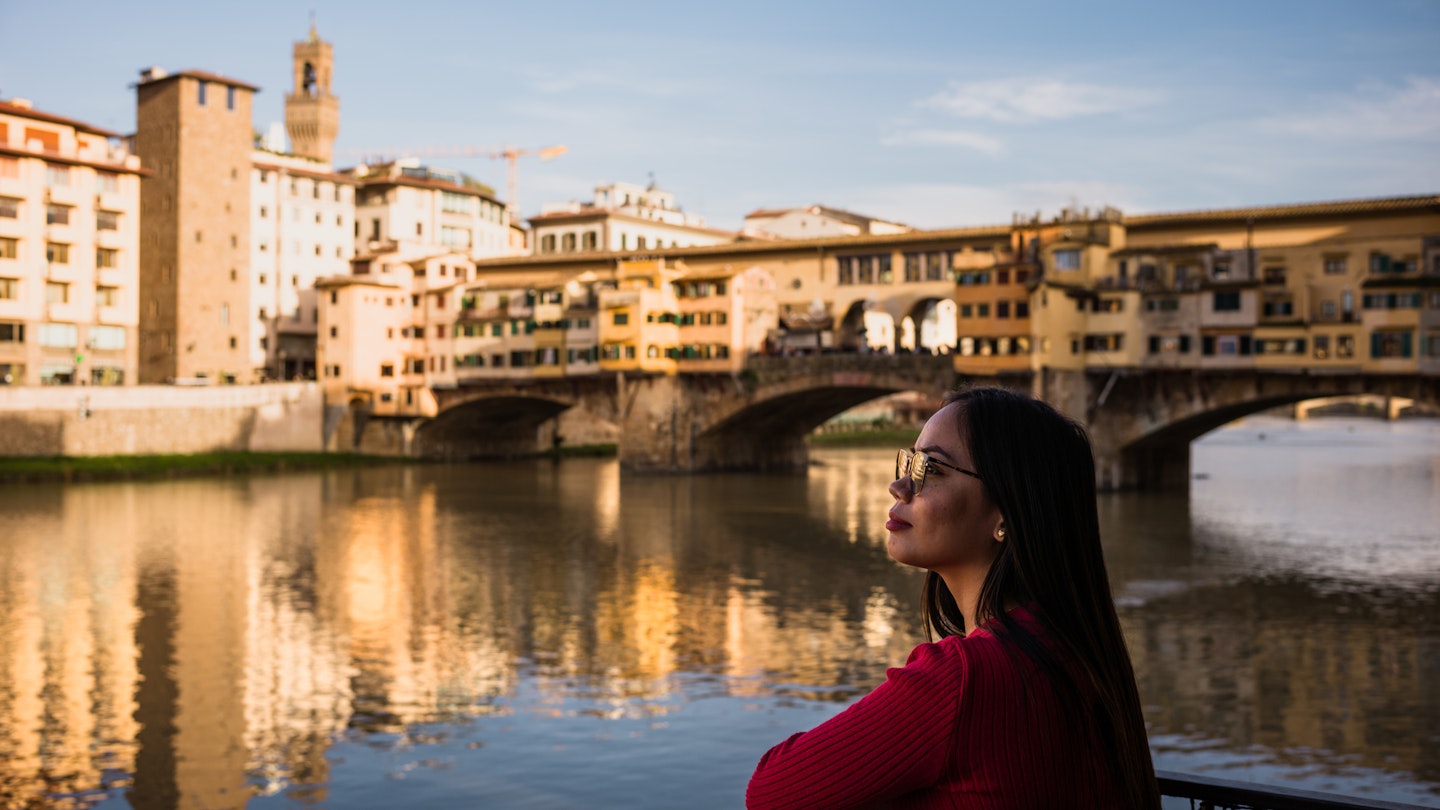
Choose the right time for your visit to Florence with our seasonal guide © Matteo Colombo / Getty Images
Many of Florence ’s most iconic sights are iconic precisely because they haven't changed in hundreds of years.
But while the allure of medieval and Renaissance art may be timeless, your experience in the city will change depending on when you visit. While there is no shortage of things to see and do throughout the year, each season offers the chance to see the Tuscan capital from a different perspective. No matter what your motivation – perhaps avoiding crowds to enjoying outdoor dining – you’ll find plenty of reasons to come back to Florence season after season.
Here is a round-up of what you can expect during spring, summer, autumn and winter.
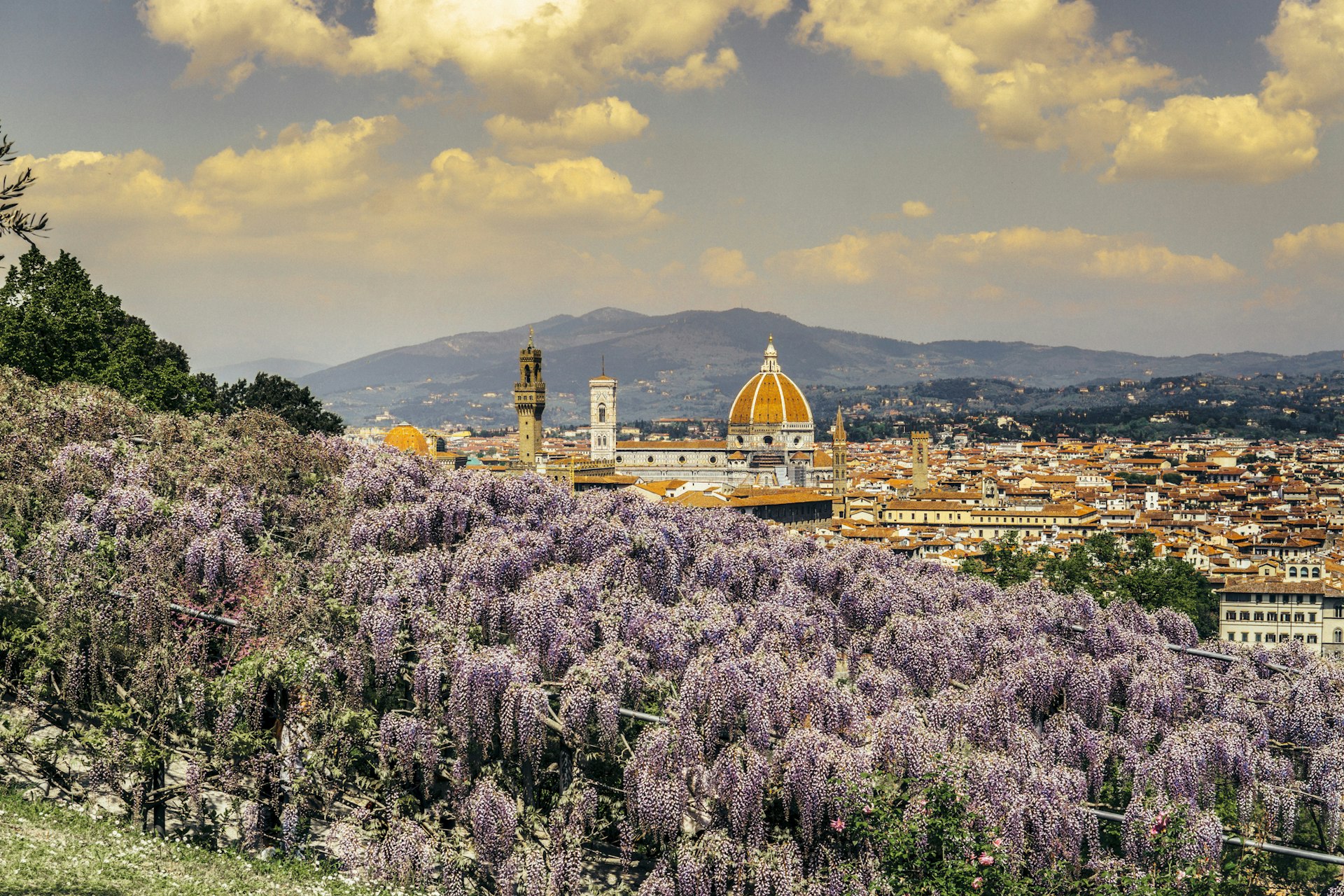
The city blossoms between March and May
There are many good reasons why spring is often described as the best season to visit Florence. The weather improves and days get longer following the typically gloomy winter, pushing people outside to enjoy the sunshine. The tables of restaurants and cafes are once again scattered on sidewalks and piazzas and the city’s gardens invite long strolls amid the blossoming flora.
This is the ideal time to explore the hilly neighborhoods of the Oltrarno on foot. In mid-April, for about 10 days, the wisteria covering the passageway that runs through Villa Bardini ’s garden turns pink and purple, creating a unique, natural frame for one of the most captivating city views.
The Giardino dell’Iris, found steps away from Piazzale Michelangelo , opens for about a month as the iris flower – one of Florence’s symbols – shows its true colors in April. Likewise in the nearby Giardino delle Rose, red roses open up, dotting the grounds that host the sculptures of the Belgian artist Jean-Michel Folon.
On Easter day the Scoppio del Carro ceremony takes place in Piazza del Duomo . In the morning, a 500-year-old cart filled with fireworks is brought in front of Florence’s Santa Maria del Fiore Cathedral and ignited by the cardinal to wish the city a plentiful spring season.
Spring is also a good time for classical music lovers. Between April and June, the Maggio Musicale Fiorentino festival takes place in the city’s Opera Theater, tributing an ancient celebration held in the city during the Middle Ages at the beginning of harvest season.
Ready to plan your trip? Here are the top things to know before going to Florence

Go in June for festivals, before locals flock to the coast in July and August
The high season opens with one of the most awaited events of the year in the city. The Calcio Storico tournament, where Florence’s historic neighborhoods compete in a brutal game that blends elements of soccer, rugby and boxing, is held in Piazza Santa Croce in June. The square – one of the largest in Florence – is turned into a sand arena where 4000 spectators gather during three consecutive weekends to support their district as they clash with their opposers.
Folklore isn’t all Florence has to offer in June. The Visarno Arena, on the outskirts of the city center in the Cascine Park hosts Firenze Rocks , one of Italy’s largest rock music festivals for a week in June, bringing artists of the caliber of Metallica, Green Day and Red Hot Chilli Peppers to Tuscany.
Prices rise together with temperatures at this time of the year. On the hotter days of July and August the city can turn into a furnace, making evenings the only time to enjoy the city’s many squares. August is also the peak holiday season in Italy. The majority of locals will take their yearly work leave around the holiday of Ferragosto (August 15), moving en masse to the coast to cool down in Mediterranean waters.
Part sport, part historic reenactment – learn more about calcio storico with our guide
September, October and November are full of flavor
As tanned residents return to the city and kids go back to school, Florence’s second shoulder season begins. Like spring, this is a great time to visit: prices decrease and the queues in front of museums get shorter.
Autumn is an especially important season in Tuscany, as many of its most highly prized food products reach the table at this time of the year. Chianti wineries are busy with harvest in the final weeks of summer together with olive oil producers in the farms that surround the city. White truffles from San Miniato appear on the menus of high-end restaurants, followed by chestnuts and porcini mushrooms.
Besides trattoria hopping, it’s worth taking a stroll through Florence’s lively markets – in Sant’Ambrogio , San Lorenzo , Santo Spirito or the Cascine Park (on Tuesdays) – to stock up on seasonal products to take home with you.
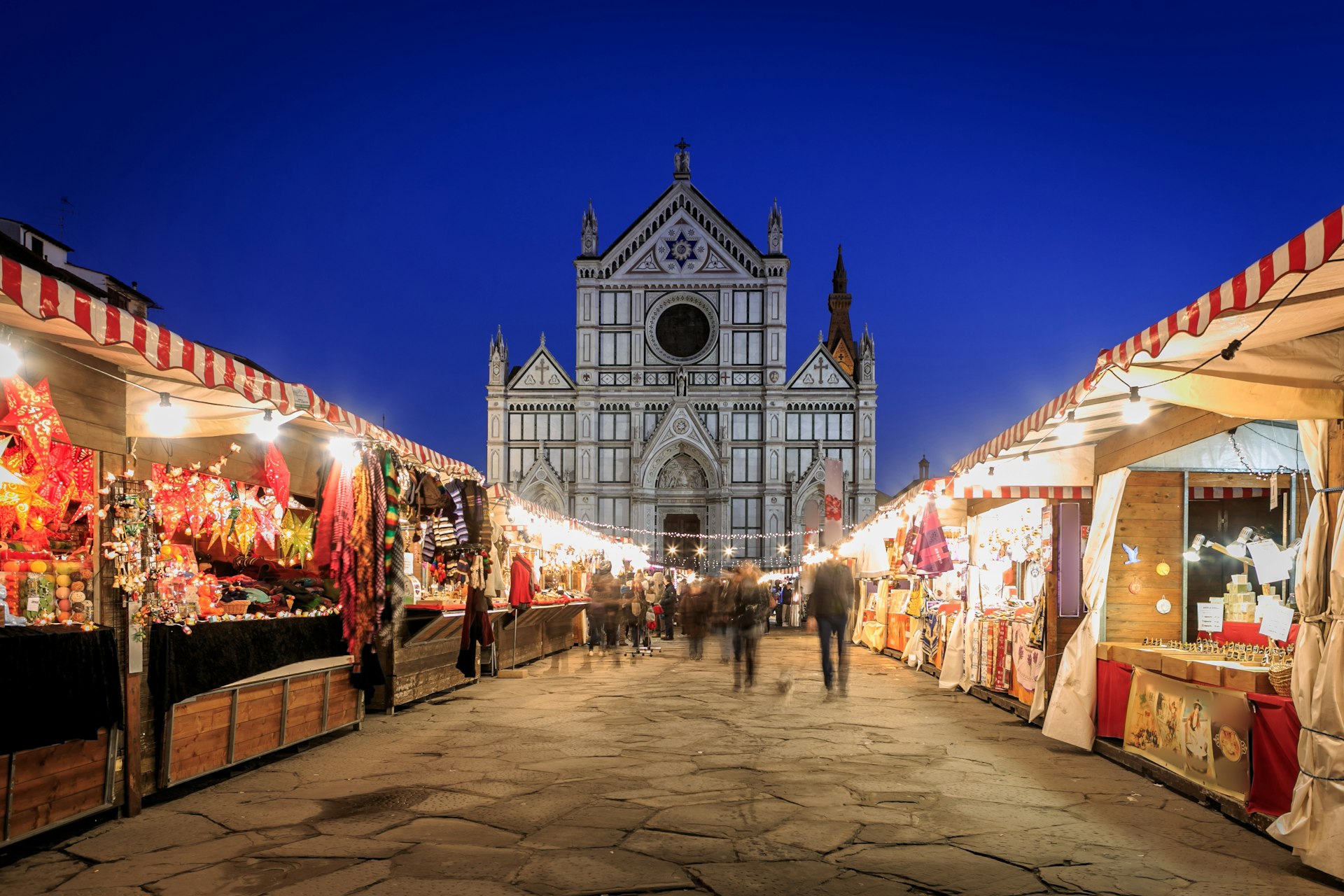
It's festive in December and there are low-season deals and discounts in January and February
With the end of autumn, the Christmas spirit takes over lighting up the city’s streets with installations and bright decorations. Artisans and food vendors set up their stalls in Piazza Santa Croce for Florence’s largest Christmas market, while Ponte Vecchio , Palazzo Vecchio and other major monuments are covered in colorful patterns during the Green Line Festival .
The action slows down after the festivities and January is typically quiet in Florence. The weather may not be appealing, but visiting in the middle of winter offers the chance to tour the museums free of crowds. Also, the Uffizi , Palazzo Pitti and the Boboli Gardens all offer discounts between January 10 and February 10, allowing access at up to half the price you would pay during the rest of the year.
Reduced tourism doesn’t mean that the city is dead. In January, Florence hosts one of Italy’s biggest fashion events: Pitti Uomo draws in designers from all over the world to the Fortezza da Basso, with many exclusive events popping up around the city during the days of the event. In February, wine producers meet at the Stazione Leopolda on the occasion of the Chianti Classico Collection , a fair organized to showcase the latest vintages of Tuscany’s best-known wine region.
This article was first published October 2021 and updated April 2024
Explore related stories
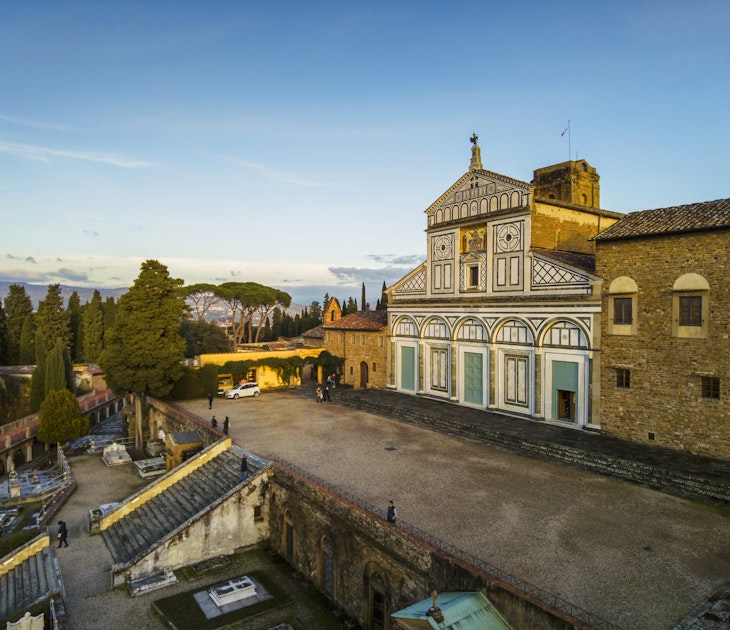
Public Transport
Apr 22, 2024 • 7 min read
Here are our top tips for finding your way around in Florence.

Apr 29, 2024 • 5 min read

Apr 29, 2024 • 11 min read
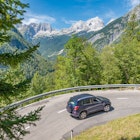
Apr 29, 2024 • 7 min read
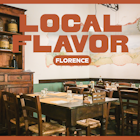
Apr 28, 2024 • 7 min read

Apr 28, 2024 • 11 min read
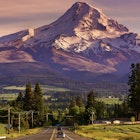
Weather & Climate
Florence Airport Guide
Neighborhoods to Know
Driving in Florence
48 Hours in Florence
Day Trips From Florence
Top Things to Do
Free Things to Do
Top Museums to Visit
Performing Arts in Florence
Shopping in Florence
Guide to Mercato Centrale
Food to Try in Florence
Florence's Best Restaurants
Nightlife in Florence
Best Time to Visit
The Best Time to Visit Florence
:max_bytes(150000):strip_icc():format(webp)/ElizabethHeath-Headshot-horiz-e7525e97616245958bf3d94e8db7f119.png)
TripSavvy / Christopher Larson
Florence, Firenze in Italian, is on many a traveler's must-visit list. Considered the birthplace and the nucleus of the Italian Renaissance, the city is famous for its stunning architecture, famous works of art, important landmarks, and delicious food. For visitors to Florence, the most challenging part of their stay might be the high volume of fellow travelers—the city is busy much of the year, with crowds peaking spring through early fall.
Deciding when to visit depends on what matters more to you—good weather or minimal crowds. Winter brings smaller crowds but also inclement weather. Spring and fall are both glorious weather-wise but crowded. In the summertime, Florence is very hot and packed with U.S. students visiting for summer abroad programs. Ultimately, the best time to visit is early spring, say March or April—you'll be sightseeing in colder temperatures and rainy weather but with fewer crowds than other times of the year.
Weather in Florence
The weather in Florence is seasonal and typical for southern Europe. That means that summers, particularly July and August, are usually extremely hot, with daytime temperatures reaching into the 90s and sometimes even cracking 100 degrees Fahrenheit during an extreme heatwave. Summer evenings are cooler, but you'll seldom need a jacket or sweater. Springtime is widely regarded as the best weather. Although there may be some rainy days, April and May offer generally sunny and pleasant days and cool nights. September can still be quite warm but nights are cooler. October is usually sunny and cool and a good time to visit before November and December, which can be rainy. January to March is mildly cold and often cloudy, if not rainy. Snow is infrequent in Florence.
All that said, the weather in Florence, as in the rest of Italy, is increasingly unpredictable. July may see a surprise cold front, and a normally sunny and dry month may be rainy and overcast for weeks on end. You might need barely a sweater in January or February, or you might be throwing snowballs in the Piazza della Signoria. The moral of the story is to be prepared and pack layers, as well as a rain jacket and an umbrella.
Crowds in Florence
If you visit Florence from April to October, you will find it crowded—there's simply no avoiding other tourists (lots of them) in one of Europe's most popular destinations. The city's main thoroughfares and popular piazzas will be wall-to-wall people, and narrow arteries, such as the Ponte Vecchio bridge, will be packed and slow-moving. At any time of year, you should plan to reserve in advance for timed entrance to the attractions you don't want to miss, such as the Uffizi and Accademia galleries. Otherwise, you will spend your precious vacation time waiting in line possibly for hours with all those other people who didn't plan ahead. If you want to climb Brunelleschi's iconic dome at the aptly named Duomo , you must reserve in advance for that as well.
If you can put up with rainy and possibly cold weather, a visit from November to March (with the exception of the Christmas and New Year holidays) means you'll find diminished crowds and greater availability in hotels and restaurants. You'll never have the city to yourself, of course, but you may be able to gaze at the Botticelli's Birth of Venus , Michelangelo's David or Ghiberti's Gates of Paradise without someone trying to jostle for position right next to you. And while there might be shorter lines to enter museums and other monuments, we still recommend you reserve in advance wherever you can to avoid delays or disappointment.
Seasonal Attractions and Businesses
Since Florence hosts tourists year-round, its tourist attractions and hospitality providers tend to follow suit. August is traditionally the month when Italians take their vacations and clear out of hot cities to head to the sea. So you may see some stores, restaurants, and even smaller hotels closed down for all or part of August, though this is less and less prevalent. Tour providers may run fewer tours in winter months, but chances are if you're interested in a city tour or food tour, you'll be able to find a tour that suits you any time of the year. Tourist attractions will remain open year-round, with the exception of December 25 and January 1, when virtually every attraction will be closed. Some attractions will close on Easter Sunday, all of Holy Week , or the entire week between Christmas and New Year's Day. Note that most museums in Florence are closed on Mondays.
Prices in Florence
If your goal is to save money on your vacation to Florence, then you should absolutely visit in the off-season. From November to March, particularly after the first week of January and before Easter, hotel prices are much lower and there are some real bargains to be had. International airfares are typically at their lowest during this period as well.
Florence Holidays and Events
Florence's Easter event, the Scoppio del Carro , takes place in March or April, depending on when Easter falls. April 25 is a Liberation Day all over Italy and a national holiday. May sees the Maggio Musicale Fiorentino music festival and a gelato festival. June 24 is the feast day of St. John the Baptist, the patron saint of Florence, and the date of the final match of the Calcio Storico, a historic soccer match that is a raucous free-for-all. Estate Fiorentina , a summer arts and music festival, takes place in May, June, and July and Pitti Week, a major men's fashion and accessories show, is held in June. The Festa della Rificolona or Festival of the Lanterns, is held September 7 and includes a lantern parade, boat parade, and a fair.
Throughout the month of December, you'll find Christmas markets, including a popular German-style market on Piazza Santa Croce. For more on events and holidays in Florence throughout the year, see our Florence Month-by-Month guide.
January is one of the coldest months in Florence, with daily temperatures ranging from an average high of 52 degrees F to 36 degrees F and the possibility of sleet or snow. You'll want to dress warmly (layers are always best), and plan on temperatures dropping significantly after sunset, which will be around 5 p.m.
Events to check out:
- New Year's Day is quiet as locals and visitors alike recover from the previous night's festivities. Most stores and tourist attractions will be closed, as will many restaurants.
- La Befana , or Epiphany, on January 6
February weather is similar to January—it's one of Florence's coldest months. You might get lucky with some clear, crisp days. Snow is possible, but increasingly less likely.
- Carnivale may fall in February, depending on the date of Easter.
- The Fiero Del Cioccolato (chocolate fair) takes place in February. It's held at Piazza Santa Croce.
March may tease you with incredibly pleasant spring weather, followed by a late winter snowstorm. While you'll probably be okay with a mid-weight jacket, make sure it's waterproof and roomy enough for some layers underneath, if necessary.
- If Carnevale didn't fall in February, it will take place in March.
- Holy Week , the week leading up to Easter, will see masses and processions throughout the city.
- The Scoppio del Carro , one of Florence's most important events, takes place in front of the Duomo after Easter Sunday mass.
While April weather can also be unpredictable, it's usually more reliably warm (but not yet hot), especially after Easter. You're still wise to pack a waterproof jacket, plus a scarf and sweater for chilly nights.
- Easter and Holy Week, if not in March
- Gelato Festival is in early April.
- Festa della Liberazione, or Liberation Day, on April 25 is a national holiday marking the end of World War II.
May sees mostly warm, sunny days with the occasional rainy day or days thrown into the mix. Evenings will still be pleasantly cool, so pack a few lightweight layers.
- Maggio Musicale Fiorentino , a classical music festival, takes place throughout the month.
Even though summer doesn't officially begin until June 21, it will likely have arrived in Florence by late May or early June. Bring a hat, sunscreen, and lightweight clothing, though do make sure your shoulders and legs (to the knee) are covered for entering churches. Pack a small umbrella, just in case June decides to be rainy.
- Estate Fiorentina kicks off this month, with a summer-long series of concerts, art exhibits, and dance performances.
- Calcio Storico : This historic football (soccer) match is one of Florence's best-loved and rowdiest events. It takes places June 24, on the feast day of St. John the Baptist, the city's patron saint. There's a big fireworks show that night.
July in Florence is hot. The only variance might be in how hot, but in any case, be prepared for daytime temps of 90 degrees F or higher. Do as the Italians do, and rest in your cool hotel room during the hottest part of the afternoon, before venturing out again around 6 p.m.
- Estate Fiorentina continues this month.
- If you have a way to get out of the city, smaller towns outside of Florence will have sagre , or local food festivals.
August is traditionally the month when Italians head to the sea for their annual vacations, so you may find some stores and businesses closed, though most attractions will remain open. Like July, August is hot. Temperatures in the high 90s are not unusual. Seek shade whenever possible, and carry a refillable water bottle and refill it often.
- The Festa di San Lorenzo takes place the evening of August 10 at Piazza San Lorenzo, with live music and free food for everyone.
- Ferragosto, August 15, marks the quasi-official end to the summer holidays. Expect some closures, but also a party atmosphere (more than usual) in piazzas and nightlife zones.
Was that an ever-so-slight hint of a cool breeze? It must be September in Florence, when daytime temperatures are mostly tolerable and evenings can be perfectly lovely. Pack a sweater, and enjoy one of the most pleasant months in Florence.
- The Festa della Rificolona or Festival of the Lanterns, is held September 7 in honor of the Virgin Mary. The evening procession starts at Piazza Santa Croce and winds through Piazza della Signoria and Piazza del Duomo before finishing at Piazza S.S. Annunziata.
- The Nativity of the Virgin Mary, September 8, is marked by a special free opening of the Duomo terrace to all visitors.
Perhaps our favorite month in Florence, October is marked by beautiful sunny, cool days and chilly nights. You'll need layers but not a heavy coat. Note that this is one of the most popular times to visit Florence—apparently the great fall weather and clear skies are an open secret.
- Held in odd-numbered years, the Biennale dell'Antiquariato di Firenze is a major antiques show and sale held either during the last week of September or the first week of October.
- The Festa di Santa Reparata on October 8 celebrates Florence's first cathedral, built at the present site of the Duomo.
Cool and rainy November is still a great month to visit Florence, as long as you pack for the weather. Crowds have died down this month, and you'll find it much easier to reserve at hotels and restaurants. Don't discount the beauty and tranquility of a walk through rainy Florence (assuming you've got an umbrella).
- November 1 is All Saints' Day, a public holiday.
- Lace up your running shoes for the Florence Marathon , held the last Sunday of the month.
Easily one of the coldest months of the year, Florence in December warms hearts nonetheless with its festive holiday decorations and atmosphere. Pack for winter weather, but also allow for peeling off some layers if the temperatures are mild.
- A traditional German-style Christmas Market takes place on Piazza Santa Croce.
- Firenze Winter Park ice-skating rink is open at Teatro Tuscany Hall, about three miles from the centro storico.
- If you're in Florence for New Year's Eve , choose from gala dinners or parties and concerts in piazzas, followed by fireworks over the city—any of the bridges are a good vantage point.
To balance out the crowds with good weather, visit in the early spring or late fall. From April to September, the city is packed with tourists and summer is sweltering.
Florence is a city that is popular all year long, but you'll find the smallest crowds in the winter months of November to February (apart from the Christmas and New Year holidays).
Rain is possible at any time of year, but the wettest months tend to be April, October, and November. Pack something water-resistant for Florence regardless of what season you visit.
Experi. "Visit Florence - The birthplace of the renaissance." Retrieved January 3, 2020.
Weather Spark. "Average weather in Florence, Italy, Year Round." Retrieved January 3, 2020.
The Best Time to Visit Naples, Italy
The Best Time to Visit Spain
Florence Month-by-Month
The Best Time to Visit Japan
The Best Time to Visit Tuscany
Your Trip to Florence: The Complete Guide
Florence Events and Festivals in March
The Best Time to Visit Munich
The Best Time to Visit the Dominican Republic
The Best Time to Visit Johannesburg
The Best Time to Visit Disney World
The Best Time to Visit the Maldives
The Best Time to Visit Boston
20 Best Things to Do in Florence, Italy
The Best Time to Visit Milan
The Best Time to Visit Macao

- What to do in Florence in April 2024
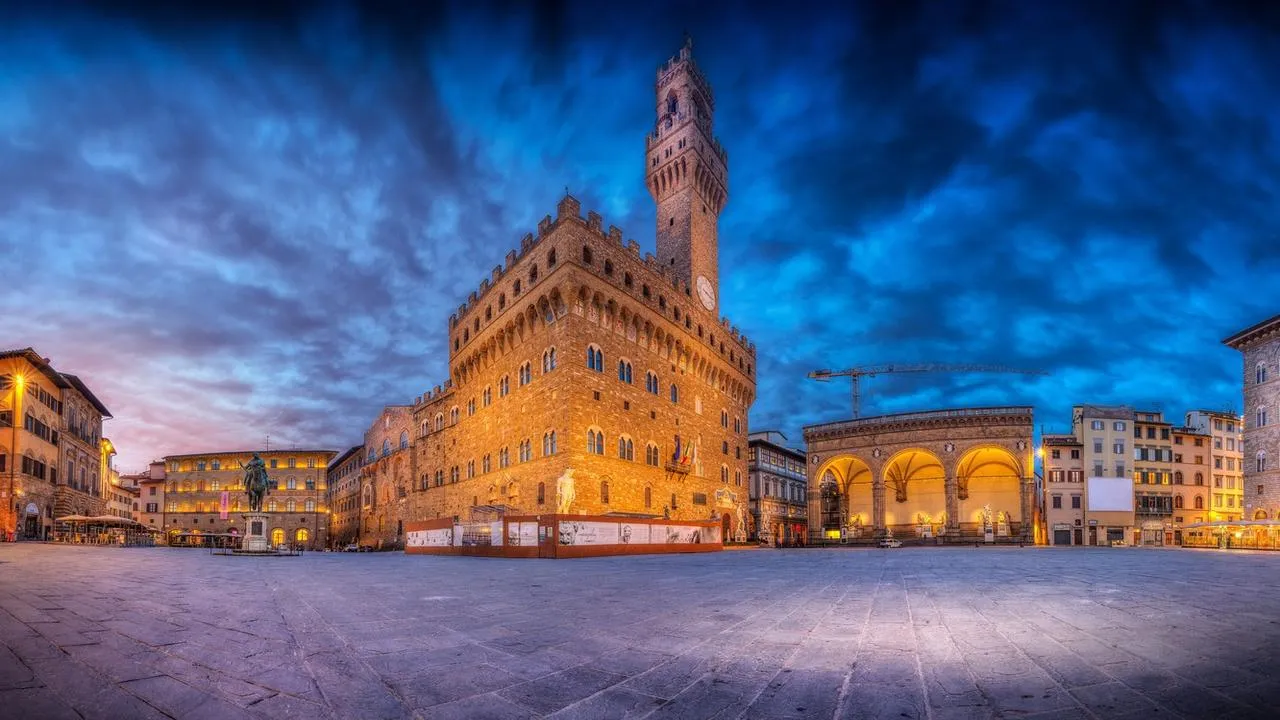
Why you should visit Florence in April
Florence weather in april, florence events in april.
- Florence's top places to visit in April
Flights, tours, and hotels in Florence
Video guide.
April is a magical time to visit Florence , as it marks the beginning of spring and the city comes alive with colorful blooms and cultural events. With mild temperatures, fewer tourists, and a buzzing atmosphere, Florence in April offers a perfect blend of outdoor exploration and indoor cultural indulgence.
In April, Florence experiences mild and pleasant weather, with average temperatures ranging from 10°C to 20°C (50°F to 68°F). The city starts to bloom with spring flowers, and occasional showers bring a refreshing touch to the scenery. It’s a great time to explore the city on foot, enjoying the pleasant weather and vibrant atmosphere.
Artisan Fair – “Mostra Internazionale dell’Artigianato” (International Handicrafts Fair)
The Mostra Internazionale dell’Artigianato is a renowned event that celebrates traditional craftsmanship from around the world. Held at the Fortezza da Basso, it showcases exquisite handcrafted goods, including textiles, ceramics, jewelry, and leather products. Visitors can witness live demonstrations, interact with artisans, and purchase unique, artisanal souvenirs.
Easter Sunday Procession
Experience the profound cultural significance of Easter in Florence by witnessing the solemn yet stunning procession leading from the Cathedral of Santa Maria del Fiore. This religious event, featuring a grand procession and the Scoppio del Carro (Explosion of the Cart) tradition, offers a glimpse into the rich religious heritage of Florence .
Birthday of the City – “Festa di San Giovanni” (Feast of St. John the Baptist)
Celebrate the birthday of Florence with the Festa di San Giovanni, a historic festival that honors the patron saint of the city. This colorful event features a captivating parade, traditional games, musical performances, and a spectacular fireworks display over the Arno River. It’s a fantastic opportunity to immerse yourself in Florence ‘s vibrant local culture.
Florence’s top places to visit in April
The boboli gardens.
Explore the enchanting Boboli Gardens, an outdoor oasis offering a peaceful retreat from the bustling city. Adorned with blooming flowers and lush greenery, these historic gardens provide breathtaking views of Florence , making it an ideal spot for a leisurely springtime stroll.
Ponte Vecchio
Stroll across the iconic Ponte Vecchio, the oldest bridge in Florence , adorned with charming jewelry shops and picturesque views of the Arno River. In April, the bridge’s unique architectural beauty and the gentle river breeze create a delightful ambiance for exploration and photography.
Galleria dell’Accademia
Step into the renowned Galleria dell’Accademia to marvel at the awe-inspiring sculpture of David by Michelangelo. This world-famous masterpiece, displayed in a stunning gallery, offers a captivating cultural experience that art enthusiasts and history lovers will cherish.
Piazza della Signoria
Visit the historic Piazza della Signoria, an open-air museum adorned with remarkable sculptures, including the replica of Michelangelo’s David, and the grand Palazzo Vecchio. In April, the square’s lively atmosphere and architectural marvels create the perfect backdrop for absorbing the city’s rich history and culture.
During April, it’s recommended to book tickets in advance for popular attractions to avoid long queues.
Tours in Florence
On our website you can compare prices at 120 of the most popular travel agencies
Hotels in Florence
On our website you can find and book hotels with a discount of up to 60% off
Flights in Florence
On our website you can compare prices on 728 airlines to find the most suitable tickets
More articles on this topic
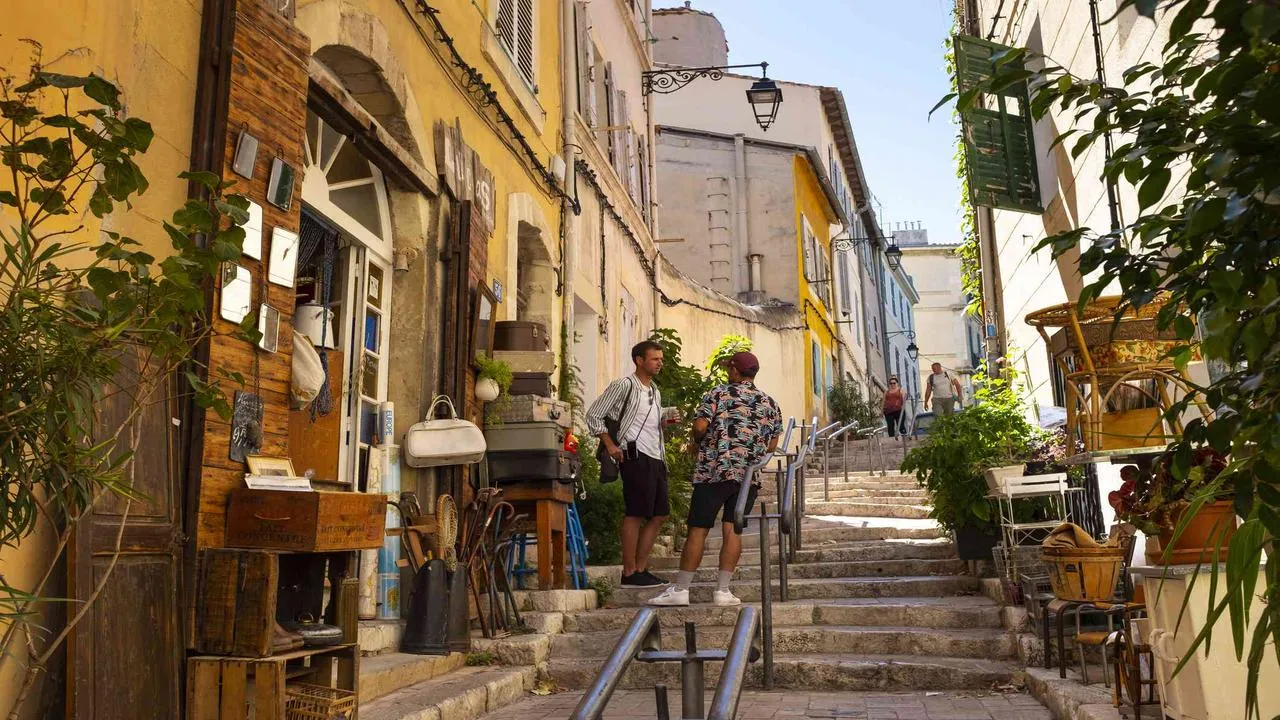
What to do in Marseille in October 2024
Why you should visit Marseille in October October is a fantastic time to visit Marseille, as the summer crowds have dispersed, and the weather is still pleasant. The city's vibrant...

What to do in Lucerne in May 2024

What to do in Bologna in July 2024
Why you should visit Bologna in July July is a fantastic time to explore Bologna, as the city comes alive with vibrant events, pleasant weather, and an energetic atmosphere. The...

Girl in Florence
A tuscan texan immersed in florentine life.

- April 2, 2019
Visiting Florence this April? Here’s What to Do, Events and My Personal Suggestions
- 72 hours , April , artisans , events , italy , life , tips , tuscany
April, oh hear we are you sly dog!
Just like that, we’re here in the midst of Spring in Florence, April is typically associated with the Easter Holiday (April 21st) and “Pasquetta” (Little Easter, the Monday after) which this month arrives a little later.
It feels like the city has doubled in terms of visitors and the weather has been consistently gorgeous though rain showers are predicted for this week and probably next ( Tuscany needs it). I have some really exciting news to share with you guys that you might have already spotted on my Instagram or Facebook but in case you actually are one of the few that only reads the blow (thank you), we’re expecting a baby this September and I cannot even tell you how over the moon we are about it!
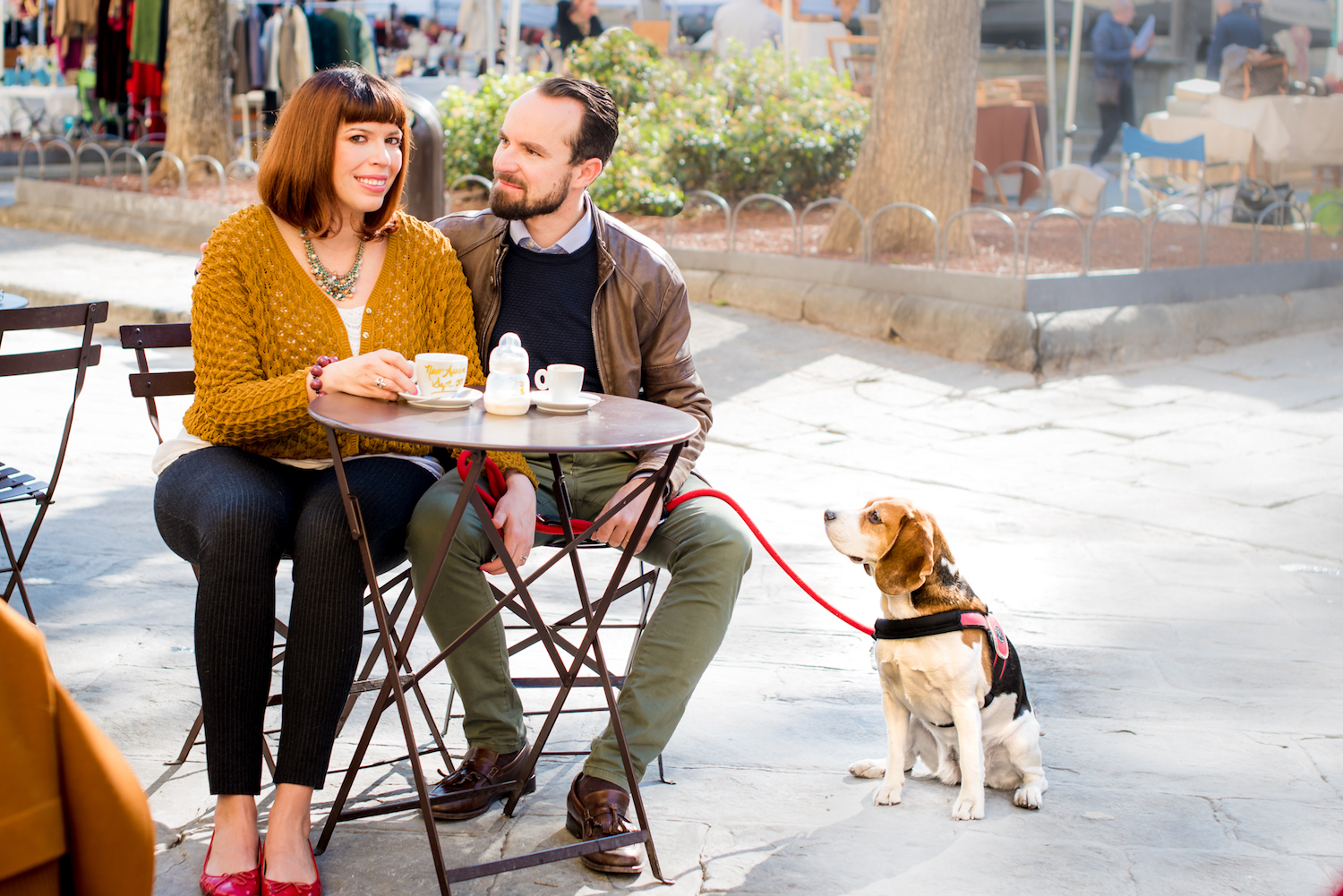
I’m planning to write a blog post about our journey to this baby, which definitely had it’s highs and lows, but ultimately this news came as a very happy, and very welcome surprise but I imagine most of you want me to get on with what’s on this month in April in Florence in terms of cool events around town. I hear you!
In regards to the month of April in Florence, allow me to provide you with a [brief] introduction.
The average temperature for the month typically hovers at highs of 18 degrees (65 Fahrenheit ) and lows of 7 degrees (45 Fahrenheit ) but anything can really go, it can sometimes feel warm enough for no jacket but often you’ll need a scarf, especially during the latter half of the day. When it comes to packing, layers are your friend — especially waterproof shoes, a small umbrella. You won’t need a heavy jacket but pack your sunnies and clothes that can last you the entire day. Keep in mind Italians tend to dress up a bit more in their daily life but casual nice (street sneaks, tailored jeans) are completely acceptable.
Besides this list, what else could you do while in Florence?
- Visit one of Florence’s beautiful gardens , not all are free but they all offer a pretty cool perspective of the city.
- Go on an urban hike (which I do often) around the city. My favorite paths can be found here .
- Plan Easter lunch WELL in advance, restaurants book up quick as this is one of the most important holidays in Italy.
- Tuscan Day trips in Spring are marvelous, places like Assisi or Vinci . Or one of these three spring Tuscan destinations !
- Rent an e-bike and explore some of the outlying neighborhoods of Florence, I did this and had a BLAST !
- Take a side-car tour to an organic winery in Tuscany , fun in any season but seriously… SPRING!
- If you plan on visiting this Easter, I recommend you check out my guest post for Dievole outlining ideas for what to do in Tuscany
It’s worth noting that this list of events is entirely personal according to what I adore and plan to do this month and is by no means an “official” city list :). It’s something I do from the heart, free of charge, and as a personal reminder myself of all there is to do in this city.
If you haven’t yet, consider subscribing to the blog to get posts directly to your inbox , if you like what you read. I promise to send no spam or ask you to do anything else, but I do appreciate the support! As you know this blog only works if people read and enjoy it and I don’t ask often!
Link Love For The Month of April
- There’s a certain someone who is currently shining bright in Piazza Signoria (nope it’s not you Nardella, sorry).
- Since the weather is getting better I know people are looking for those rooftop bar experiences and here are Natalie’s choices in Rome!
- My girl Livia makes a compelling case on why you should visit Italy’s historic homes , and she’s got a point!
- “Experts cleaning a supposed imitation of a Botticelli painting have discovered it was actually created in the Renaissance master’s own studio.” WOAH what?
- The Pasta Eaters of Naples, sounds more fun than tasty but I had no idea this was actually a historical reality!
- I’m not always Rick Steves biggest fan however I thought this NY Times article did credit the travel guru in a way he deserved.
- People always ask me how they should visit Florence if they only have a few days — here are a few of tips for 36 hours in the city!
It might not be in the “center” center but Pratolino park is one of the best green spaces in the vicinity of Florence and is well-worth the half-hour bus trip. The season opens on April 5th this year and will be open all weekends: Friday, Saturday and Sunday until October 27th (10am-8pm). address: Strada Provinciale della Casa Al Vento · Vaglia. Take ATAF bus #25A from Piazza San Marco.
One of my favorite film festivals is back “Middle East Now” from April 2-7th at the Cinema La Compagnia. The 2019 edition looks back at the past, with this year’s theme being “Remix.” Download the event program here .
The glicine or “wisteria” are currently in full bloom in Florence and Villa Bardini is the best place to enjoy these seasonal blooms! In fact, they’ve gotten so popular they have installed a webcam where you can check out the blooms yourself.
Looking to meet some interesting new people in Florence? I always personally enjoy the open-mic night at Tasso Hostel (via villiani 15) held the first Wednesday at every month. The April edition will take place on April 3rd and is open to anyone who wants to share a song, a story or basically anything they’d like to present! Check out the info here. New this month they are collaborating with St. Mark’s English Church to bring more interesting evenings like this “unlocking stories from the body” with Marissa Garreffa on the 14th and 28th as well as “Skills for Hands Free Storytelling: Speak Live Without a Script” on April 29th.
Don’t miss out the chance to see a specia l “Leonardo in Florence” exhibition at the Uffizi featuring a selection of pages from Leonardo’s Codex Atlanticus lent by computer pioneer Bill Gates related to his stays in Florence, this is just one of many Leonardo-centric exhibits around Italy as part of the 500th anniversary of his death.
Wanting to practice Italian or another language you are currently learning (for example, I’m taking French lessons again) and meet people in Florence? The fine gals of Speakeasy Multilingual host a weekly happy hour language exchange encouraging you multi-linguists to come out of your shells and have a little fun. The next edition will be held at Italian Tapas on April 2nd from 7-9 pm. More info can be found here.
My pals over at Relax Firenze, the only true wellness center in the city offer such a wonderful array of services, besides your usual spa fare of massages, facials and reflexology (YES), they kick it up a notch by including tibetan ceremonies, a super himalayan salt room, yoga and pilates and EMS muscle training. For those looking for a true mind body experience, give them a try.
This Friday, April 5th will be the showcase open-mic night at the Virgin Rock Pub , which happens every first Friday of every month at 9:00pm. Performers can sign up to play (usually for 10 minutes or 2-3 songs). Each week there is a “Guest Artist”, (a local or touring musician) who performs a special 30 minute set, this week’s is Mattia Rossignoli. After the Guest Artist, the open mic resumes until 11:30pm.
This Saturday April 6th returns Storytellers in Florence with the theme of “temptation”. As per usual it will take place at independent bookshop cafe Todo Modo (Via dei Fossi) starting at 7pm and ending at 9pm but this time we get the whole place to ourselves. You are more than welcome to just come and watch people share their stories. there will be a minimum participation fee of 10€ which will include a drink. Beyond the costs to keep Storytellers going, any proceeds from the entry fee will be donated to an organization that, if possible, will be related to the theme. If you have a story to share based on this theme, be sure to contact Linda on Facebook or by email at [email protected] .
The gelato festival is back this April 6-7th in Piazzale Michelangelo where anyone and everyone can and should come for the sugar rush, gelato excellence and amazing views.
After you’ve indulged in all of that gelato you can join a half-marathon “Vivicitta” on April 7th. Here’s how to participate.
I’m really quite excited about the new exhibition “Heroes: Bowie by Sukita” dedicated to David Bowie, an undisputed icon of pop culture , portrayed by a master of Japanese photography: Masatoshi Sukita (who was a personal friend of Bowie and features him in over 60 photos.) I first fell in a sort of trance over Bowie’s music myself due to an obsession with a dark European movie about drugs from 1981 called “Christiane F”. You can check out the exhibition at Palazzo Medici Riccardi on Via Cavour until June 28th.
https://www.instagram.com/p/Bvtg-HJlKY6/
The next exhibition of Palazzo Strozzi “ Verrocchio, Master of Leonardo” is back with a 120 new pieces and it’s all about a certain Renaissance artist Andrea del Verrocchio in which Leonardo da Vinci was a pupil (part of a series of initiatives honoring of the 500th anniversary of his death). There will also be a special section at the Museo Nazionale del Bargello, for a full description – click here . I got to visit recently myself and was blown away by how much I had to learn about Vercocchio!
Also this month is The Scandicci Tulip Garden currently in Parco dell’Acciaolo on Via Pantin 63 where visitors can wander and pick flowers at their leisure (thank you Holland) for a minimal fee. It’s so beautiful but I really recommend going soon or else there may be nothing left to pick. More info can be found here .
Keep in mind that every Thursday morning there is a flower market ( see featured image) in the porticoes of Piazza della Repubblica. If you’re serious about buying flowers and plants come early to get the best of the bunch.
Scandicci is an easy suburb to arrive thanks to the Tramvia and from April 11-14th there will be an outdoor festival dedicated to street food .
The Florence Bike Festival is back in Cascine Park this April 12-14th for bike-lovers to unite together on two wheels as part of a eco-friendly community.
You may not know this but during the nineteenth century, the Rificolona farmer’s market was traditionally held in Piazza SS. Annunziata on the occasion of the birth of the Virgin Mary. From 1984 onwards this tradition has seen a revival and nowadays multiple ‘Fierucole’ are being held every month, dedicated mainly to small-scale organic farming, crafts and rural life , involving small family farms and local artisans. This April, head to SS. Annunziata the 6-7th of April for a wood-themed market, and Piazza Santo Spirito on the 21st of the month for a peek into one of my favorite, and most traditional, local markets where you can buy organic honey, kombucha, the best organic parmesan cheese, balsamic vinegar, and partake in the local past-time of people-watching.
Easter in Florence. How could we forget the “Scoppio del Carro” ‘Explosion of the cart’ every Sunday on Pasqua, this year it falls on April 21st! Obviously the biggest Easter celebration happens in the center of piazza duomo, which dates back over 350 years. These Florentines know how to have fun! Keep in mind that you need to get there early for a nice spot, the procession starts at 10am, explosion at 11am. You can read more about the history about this event om Discover Tuscany . Be aware that many shops will likely be closed on Easter Sunday and Monday and you’ll need to book lunch out well in advance. I predict there will be a ton of people as it is a long weekend and it’s the beginning of ‘the season’ of tourism in Florence.
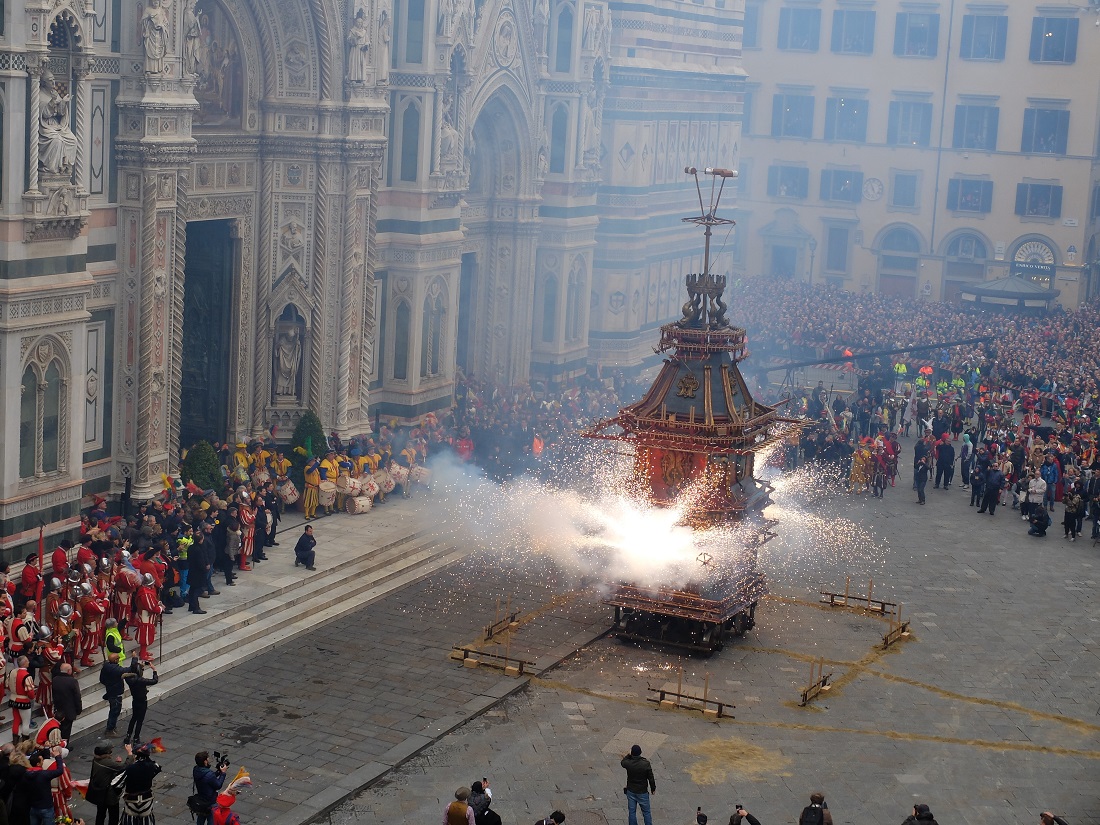
For fellow lovers of artisans and all that they do, on April 24th (until May 1st) kicks off the Mostra dell’Artigianato (Handicraft Fair) at the Fortezza da Basso complex. What can you expect? Tons of stands hosting work by artisans with Florence, Italy and the Oltrarno as this year’s special guest. There are also crafts from all over the world as well. It does get crowded (especially on the weekend) but I highly recommend a visit as it is the perfect bad-weather activity and this particular week is pretty touch and go in regards to rain. Cost to enter is €7.70 (5 for reduced). More info can be found here.
The perfect bad weather (or good weather, let’s be honest) activity is a trip to the trusty cinema , in my case our beloved original-language theater Odeon which is back on track with an interesting mix of options. Notable movies this month include Avengers Endgame, Peterloo, Aftermath,Being Leonardo da Vinci, . check out the program until May here Price: 8 euros for a normal ticket.
Ps. Enjoyed this post? As always, I appreciate your support and comments so please share this article with anyone you think could benefit from a friendly-Florence roundup and I’ll be forever thankful! I also included a Pinterest-friendly pin here.
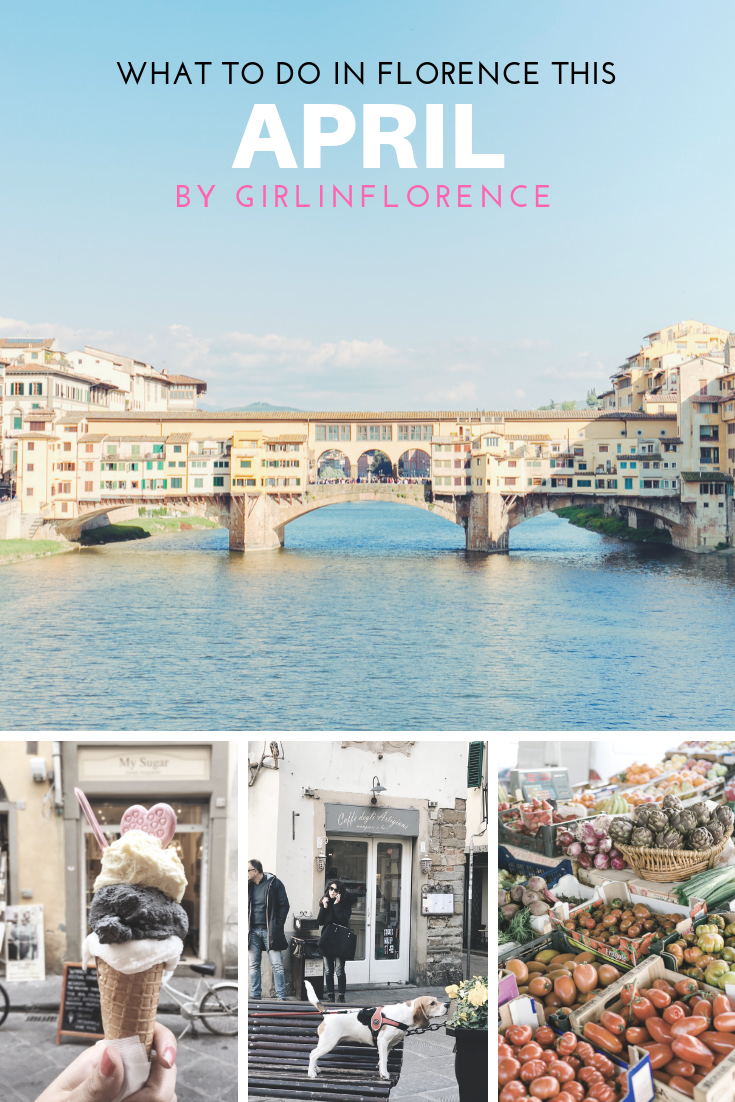
Related Posts
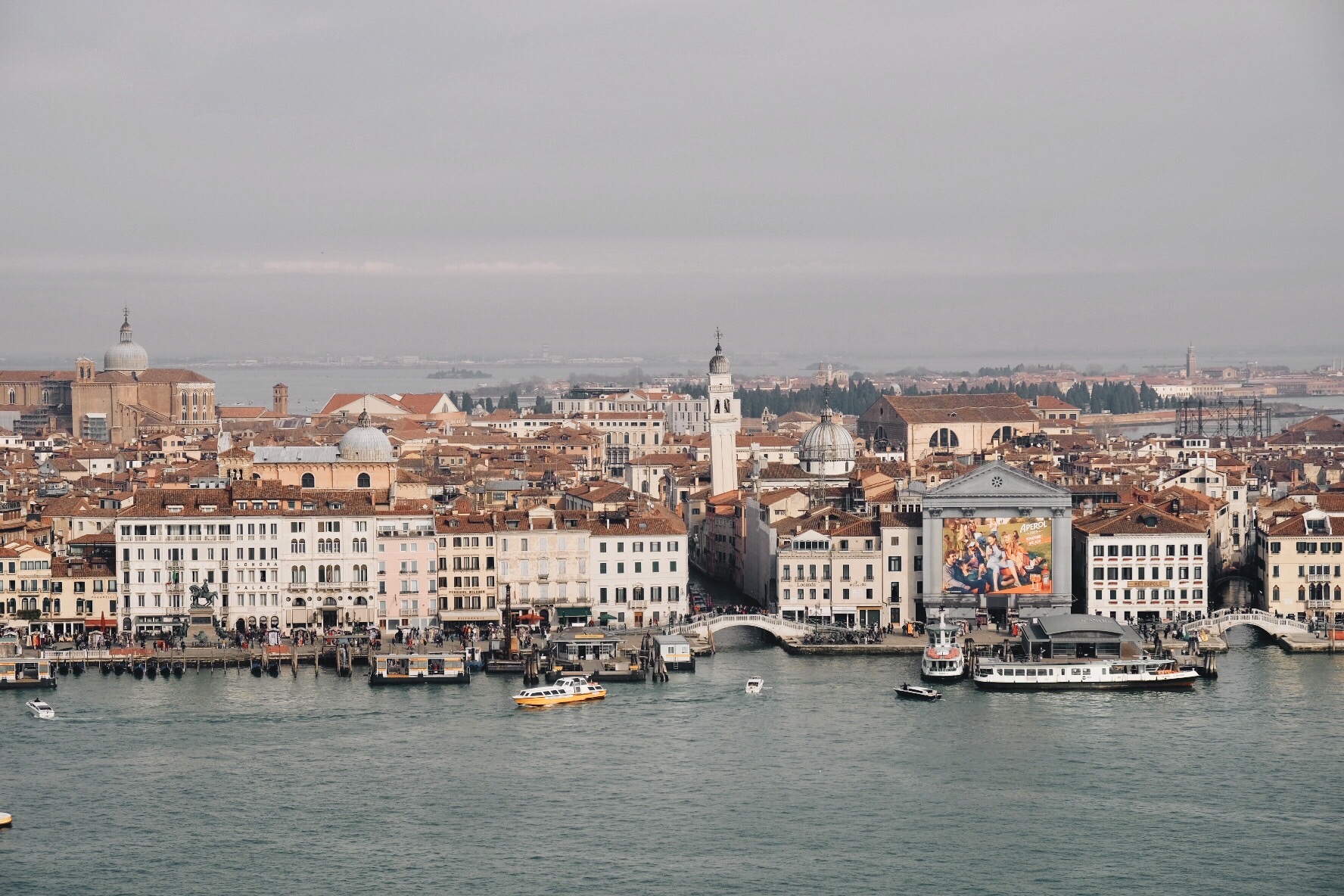
Returning to Venice For a Weekend
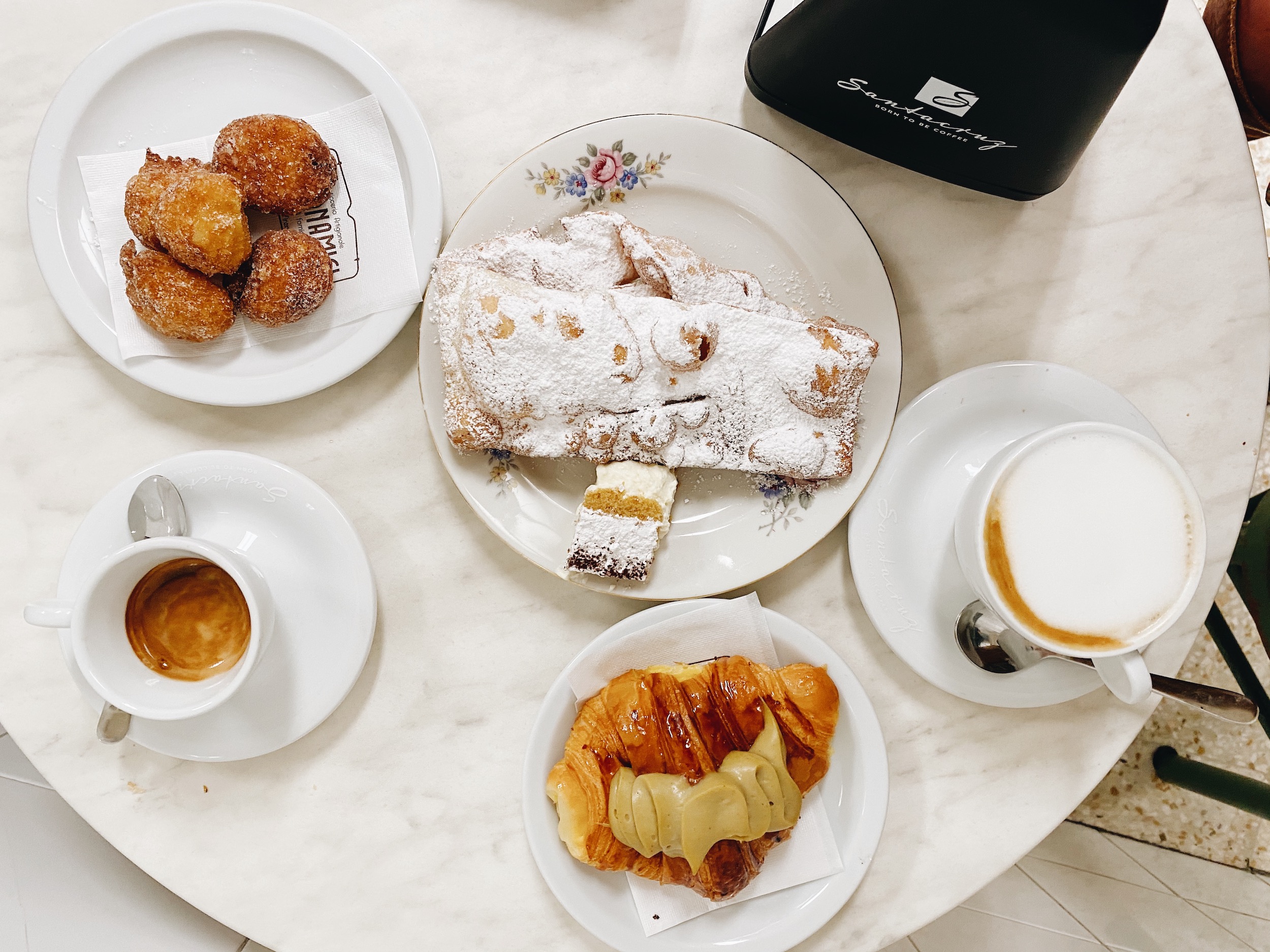
Pasticceria Buonamici for Artisanal Pastries and Coffee in San Frediano
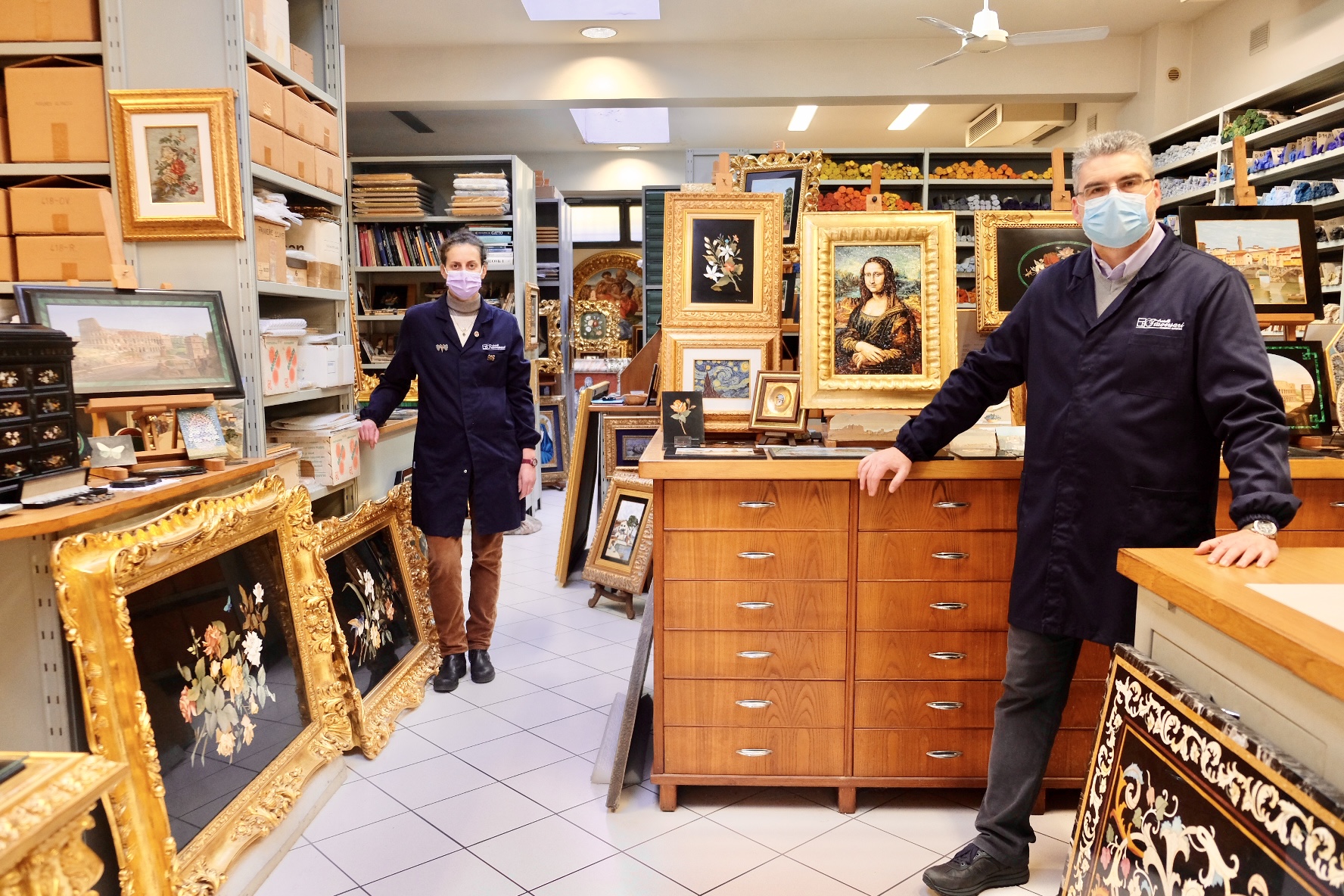
Discover One of Florence’s Most Treasured Artisans: Fratelli Traversari
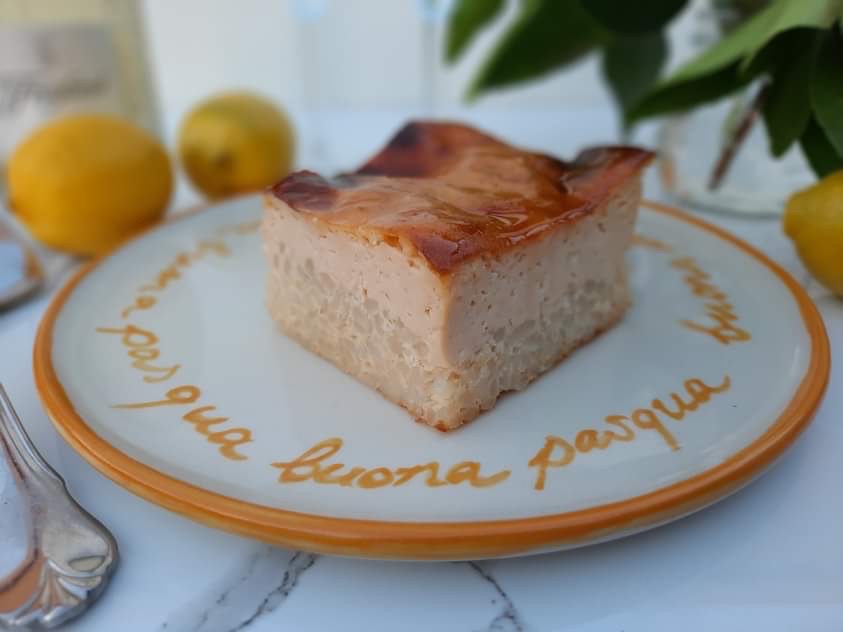
The Scoppio del Carro Returns and A Recipe for Tuscan Custard Rice Pudding

Destination Weddings in Italy: What You Need to Know
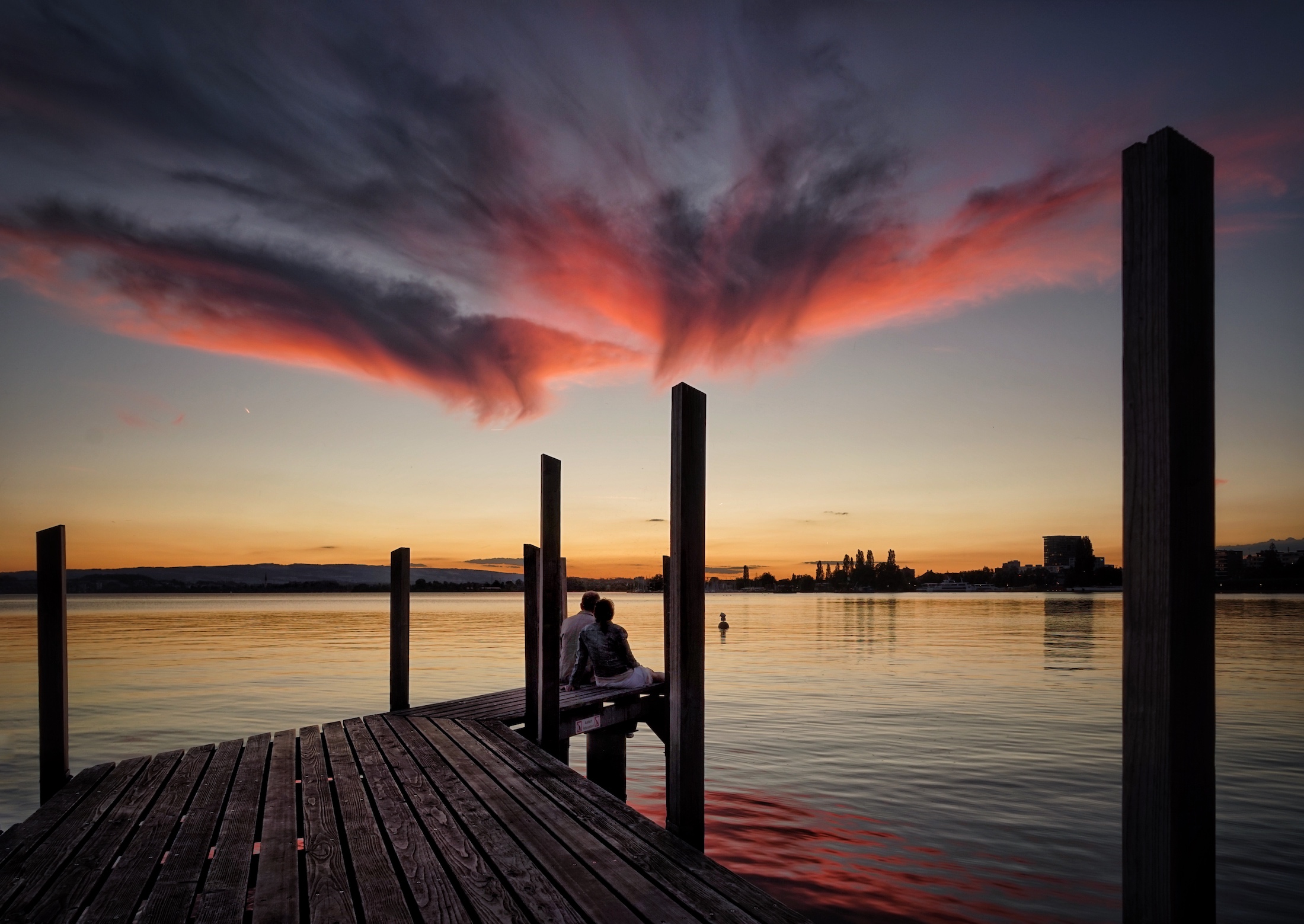
Locals I Love Switzerland: Talking to Alexandra Bilisi

Quaresimali – Tuscany’s Alphabet Cookies For Lent

Events this March in Florence, Italy and Something Big to Celebrate
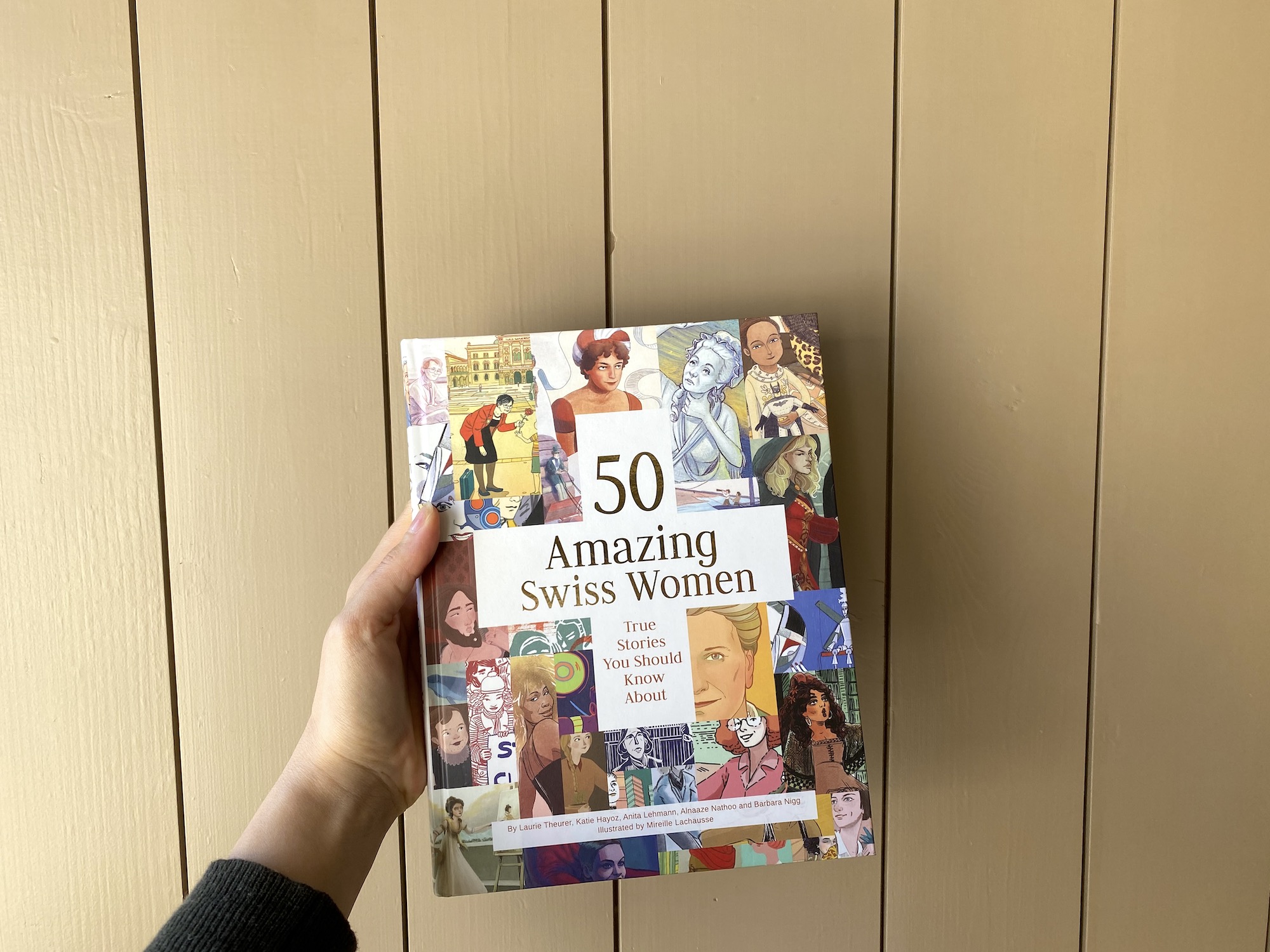
6 Amazing Swiss Women You Should Know About

“Prima e Dopo” Chao Li’s Interpretation of Florence
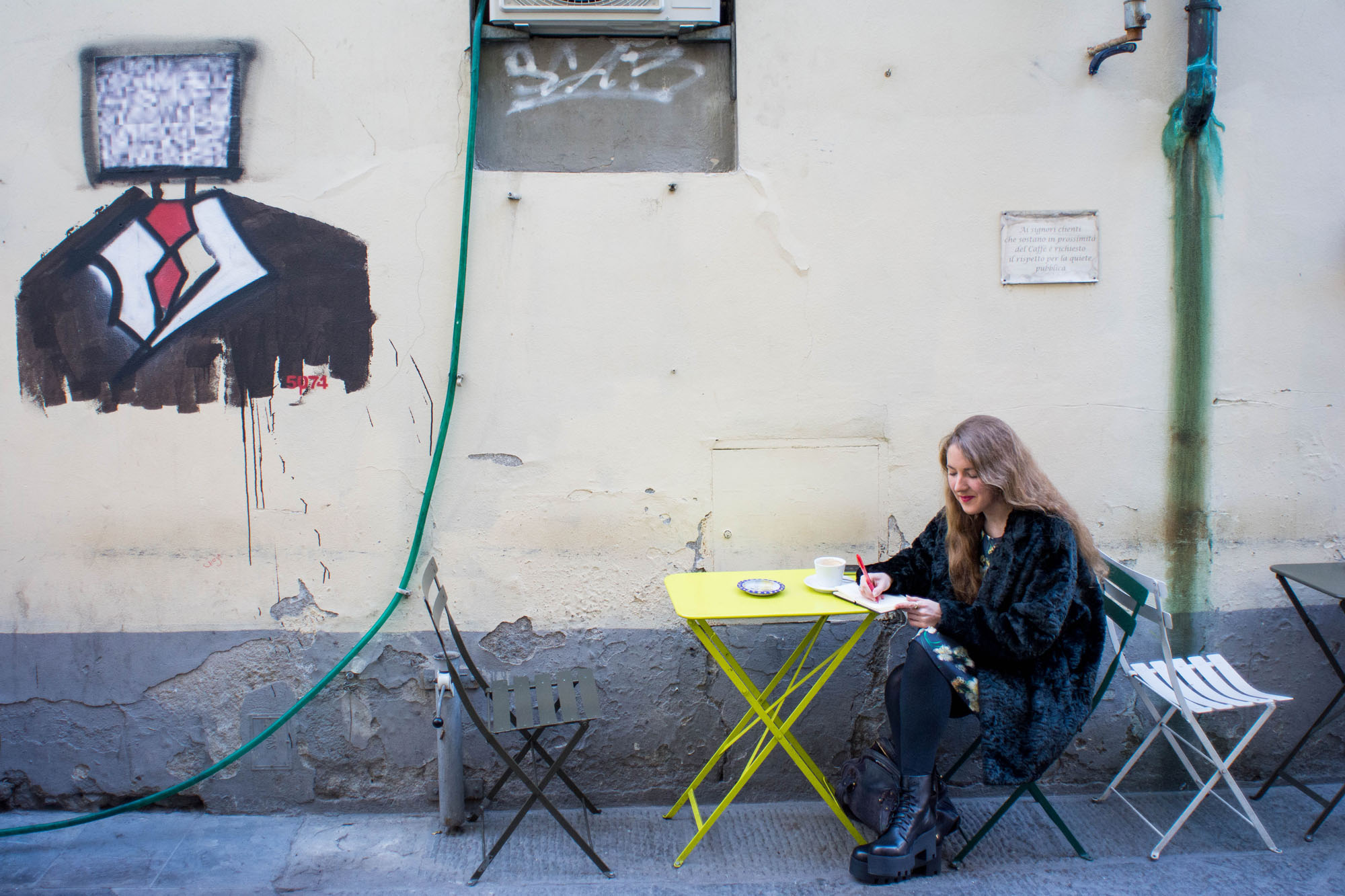
Embrace Your Inner Writer With Mary Gray
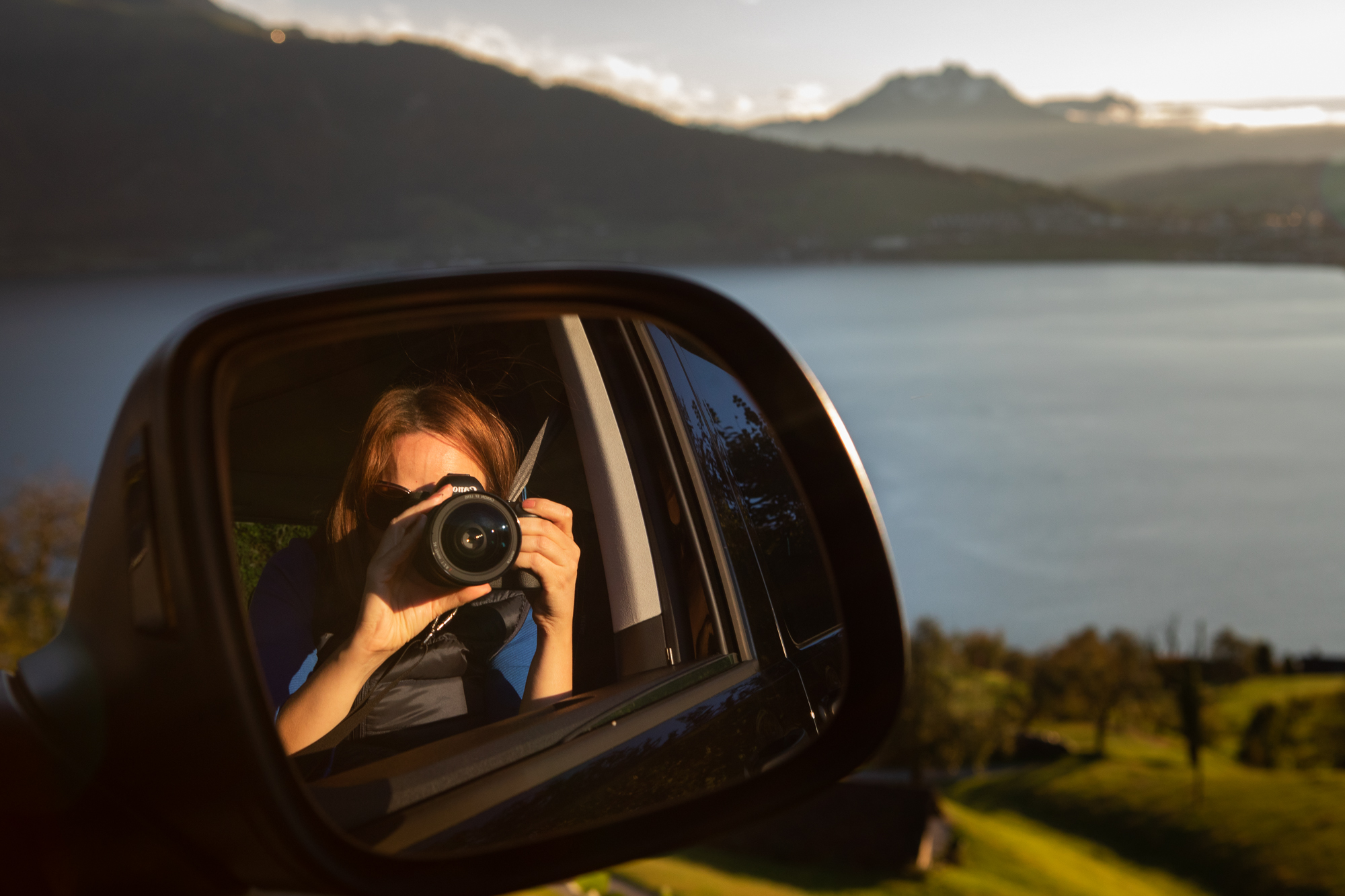
Locals I Love Switzerland: Talking to Kristin Reinhard

What would Dante do? How a 700-year-old poem keeps it relatable
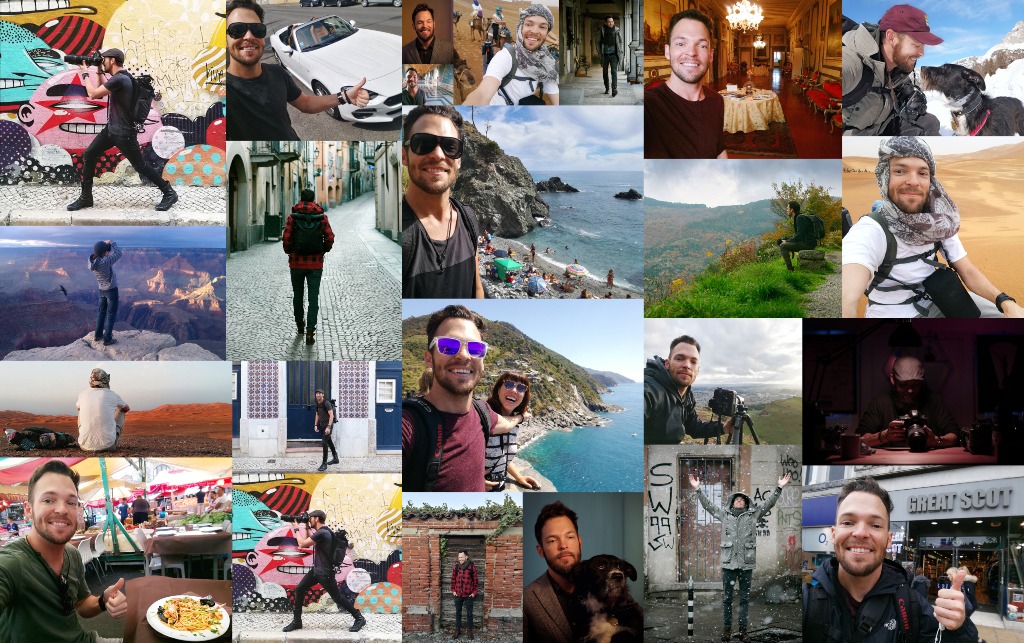
Locals I Love: Talking To Scott Allen Wilson
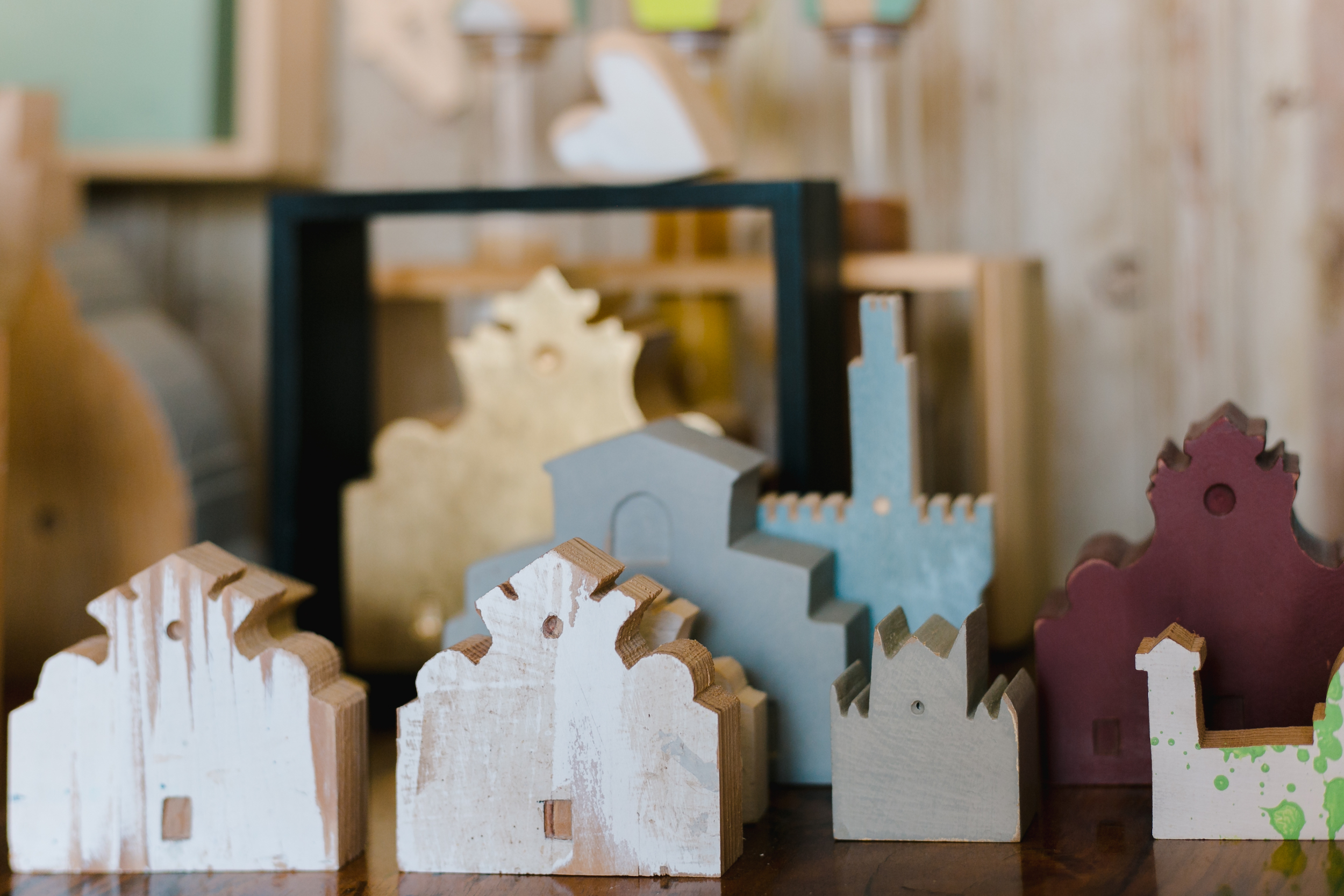
The 2020 holiday gift guide for Florence and Made in Italy Lovers

All Souls Day in Italy: Festa nel Giorno dei Morti on November 2nd

Why should you vote in the 2020 elections?
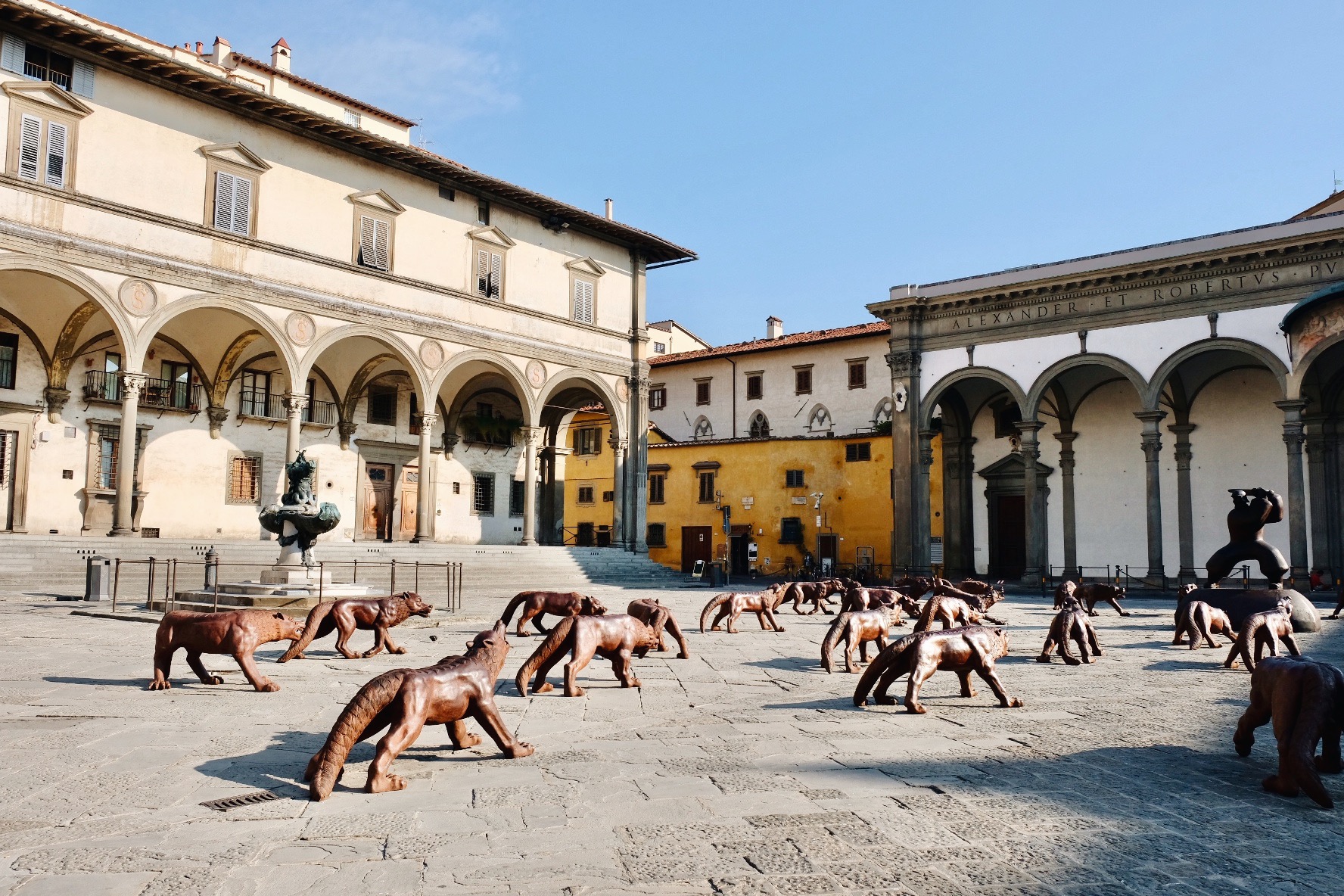
What to Do in September in Florence, Italy: Events & More

Shop Local: Hello Wonderful Boutique in Florence
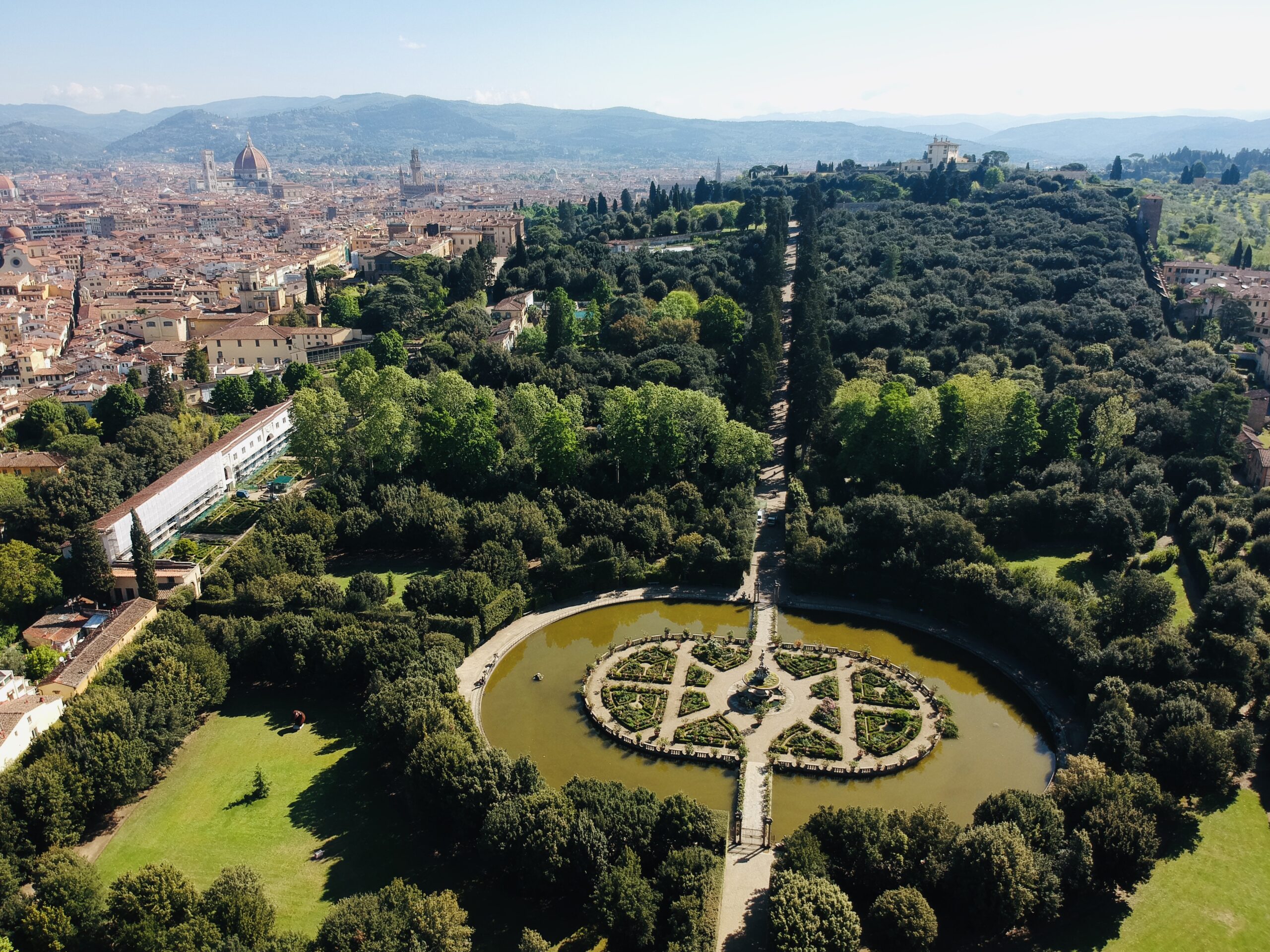
The ReGeneration Festival This August in the Boboli Gardens
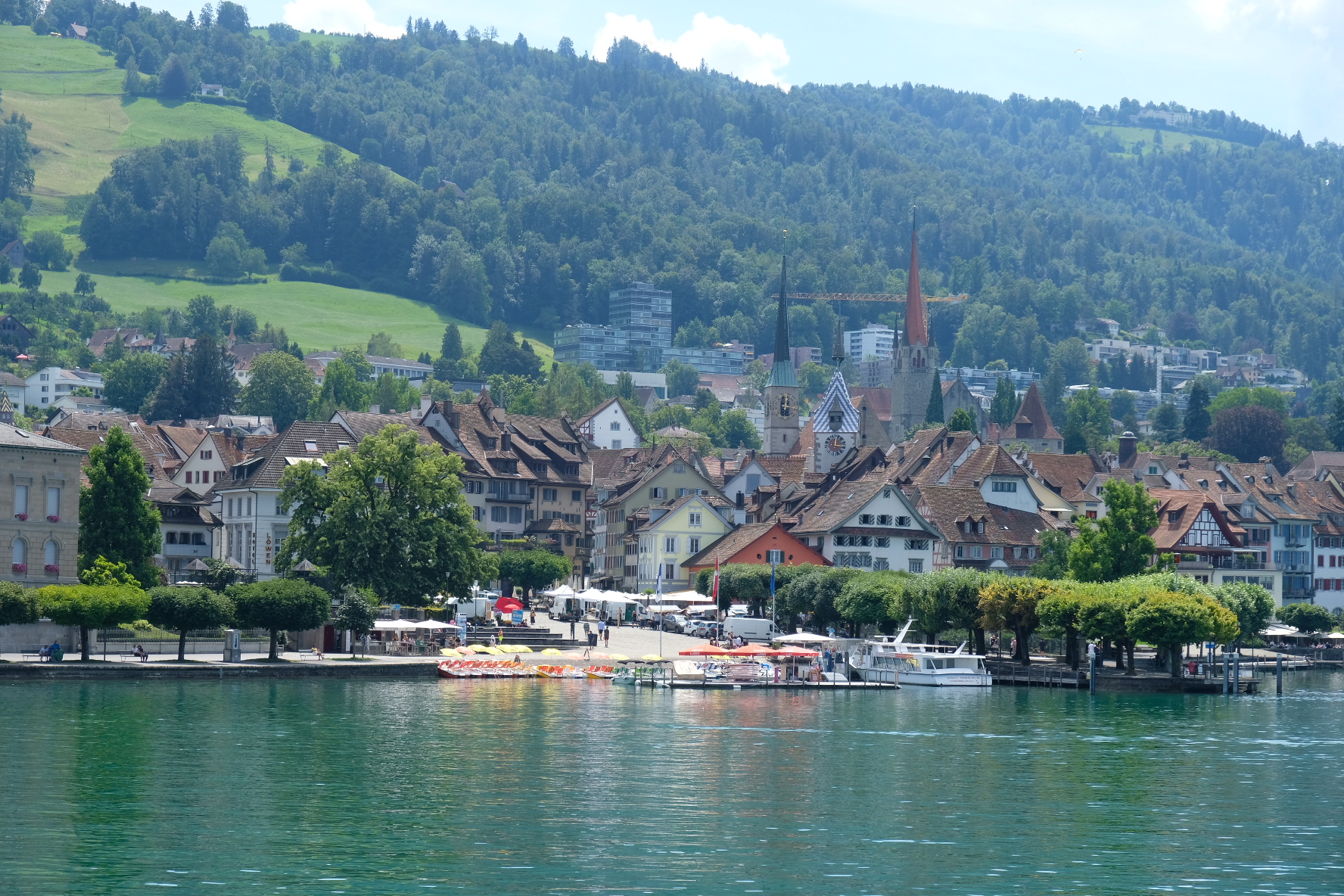
Moving to Switzerland from Florence, a few thoughts

Where to Eat in florence this August 2020
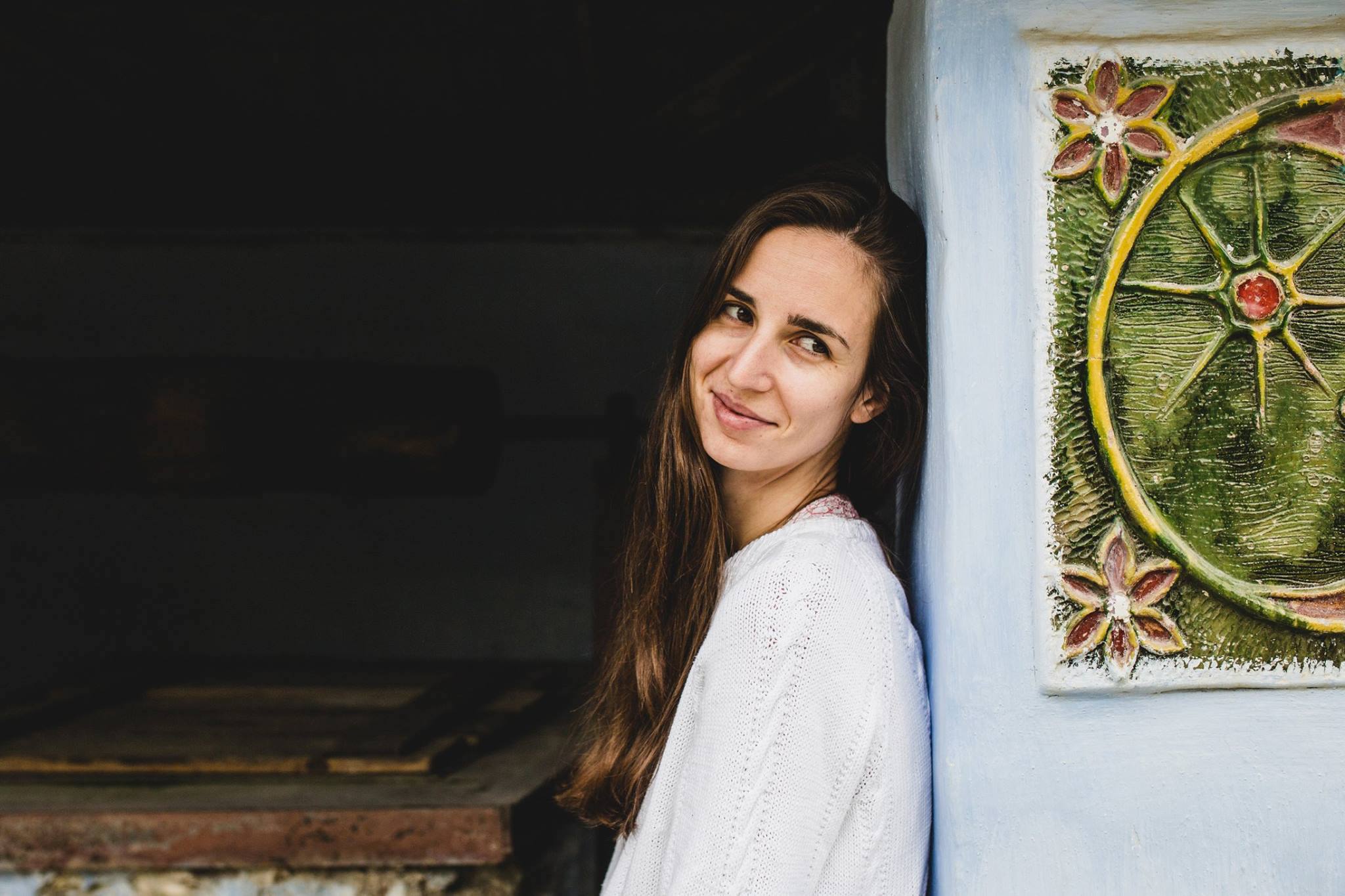
Locals I Love: Talking to Laura Masi

Firenze NOW! Talking About the Future of Florence

Locals I Love – Meet Lisa brancatisano aka “This Tuscan Life”
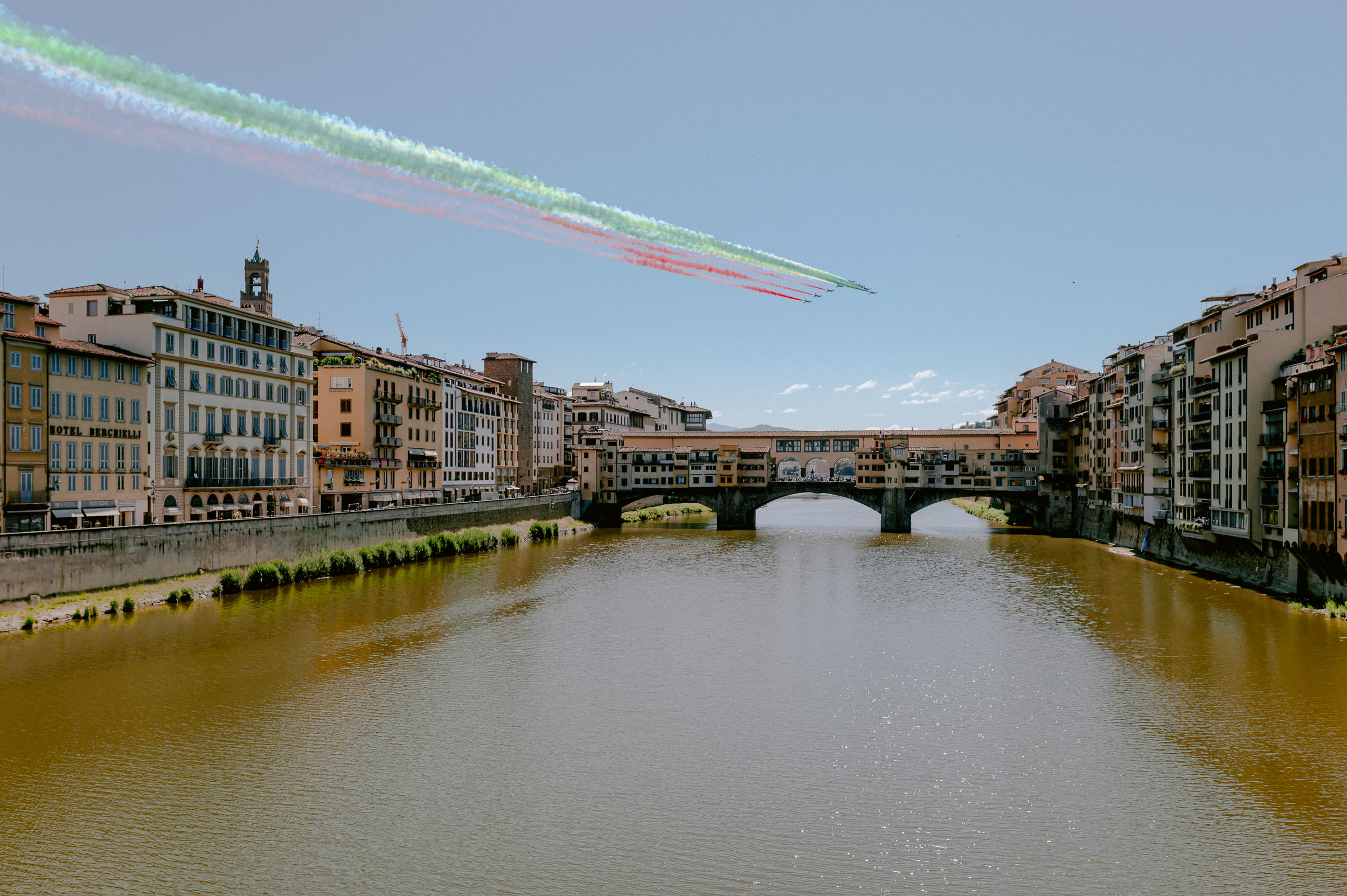
Celebrating June 2nd in Italy: festa Della Repubblica

Innovative Outdoor Dining Ideas In & around Florence
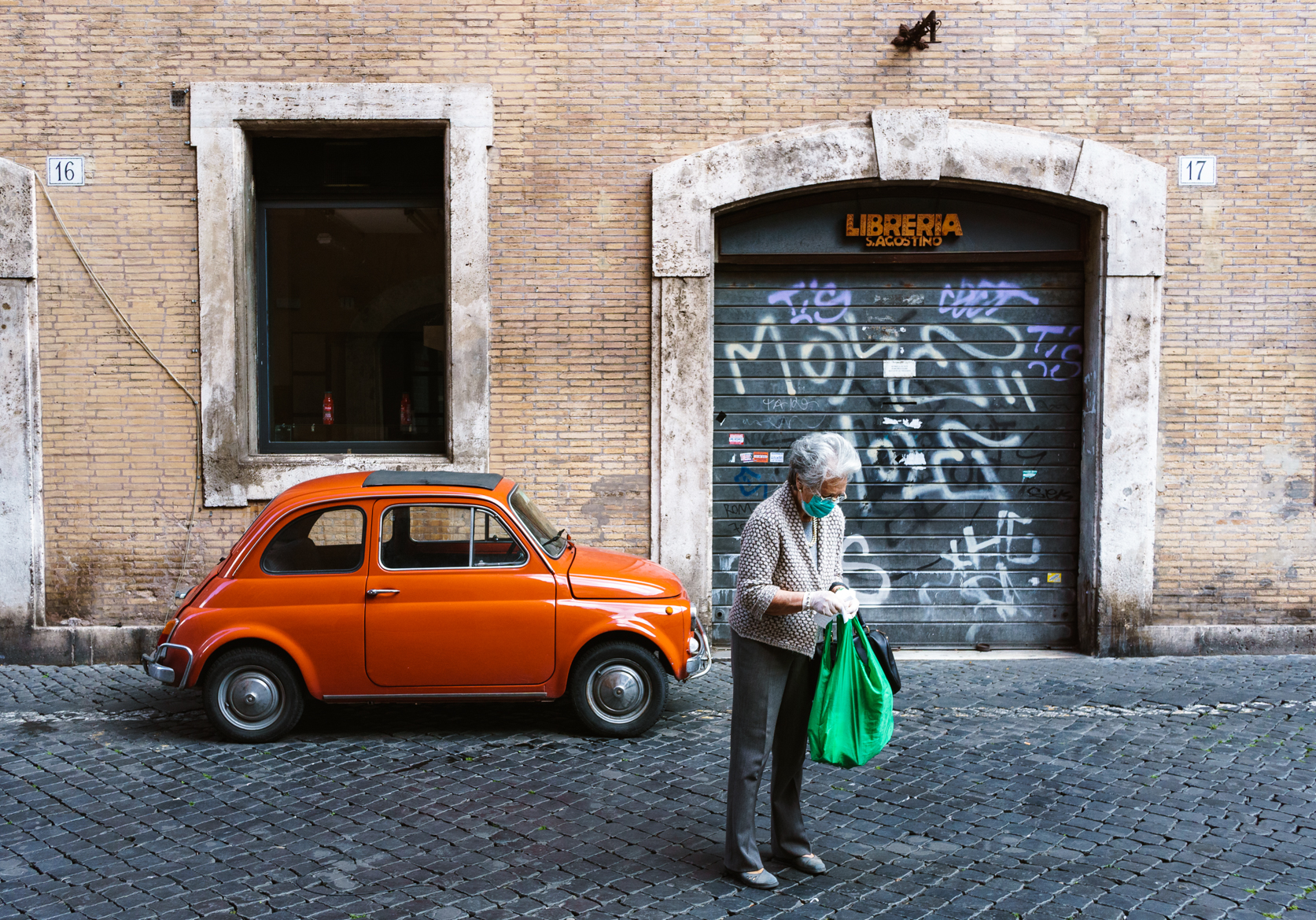
40 incredible photos of Annie Ojile’s Rome
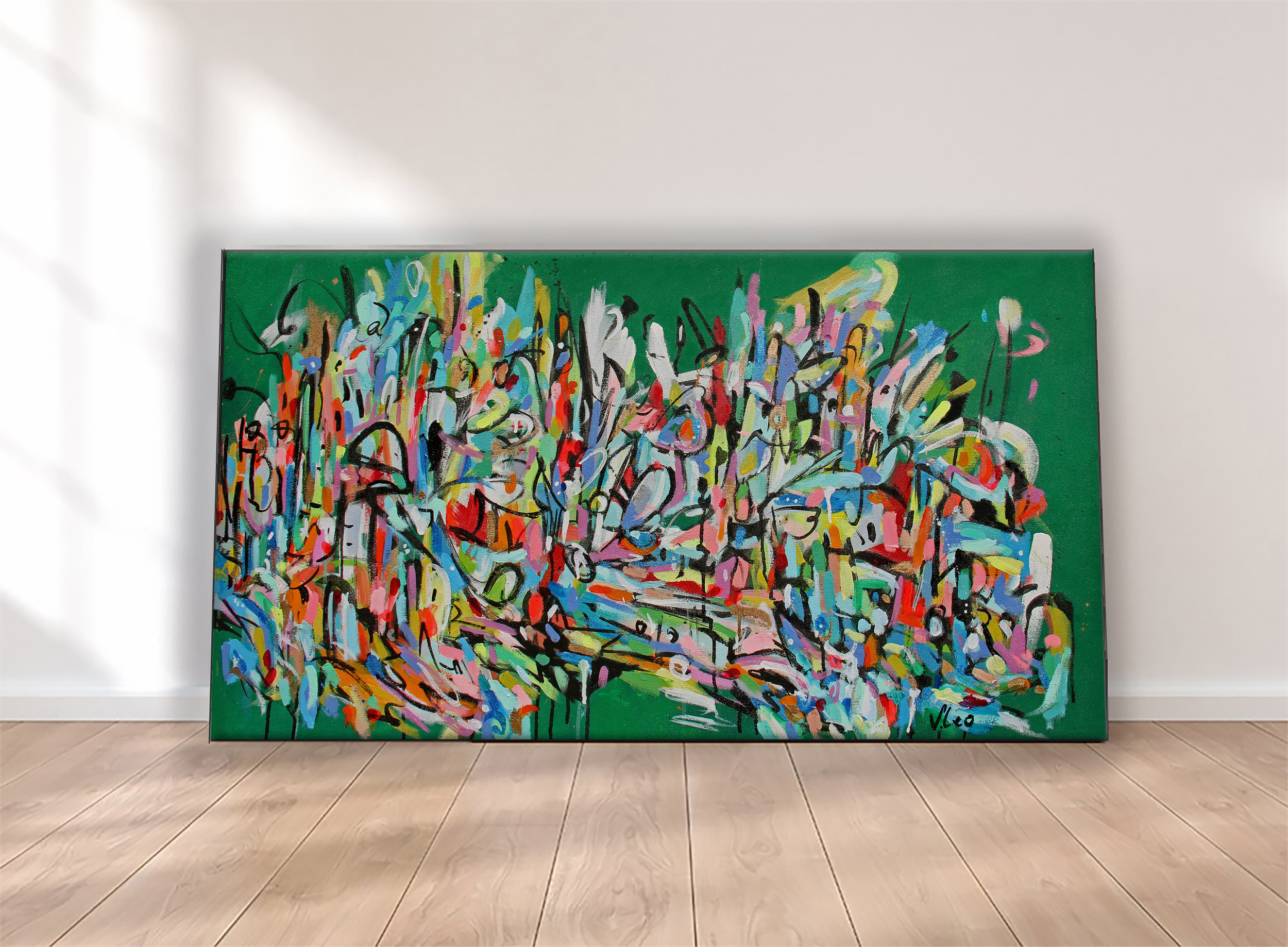
Artist Jennifer Leo on Creating Art and Life under Lockdown in Florence
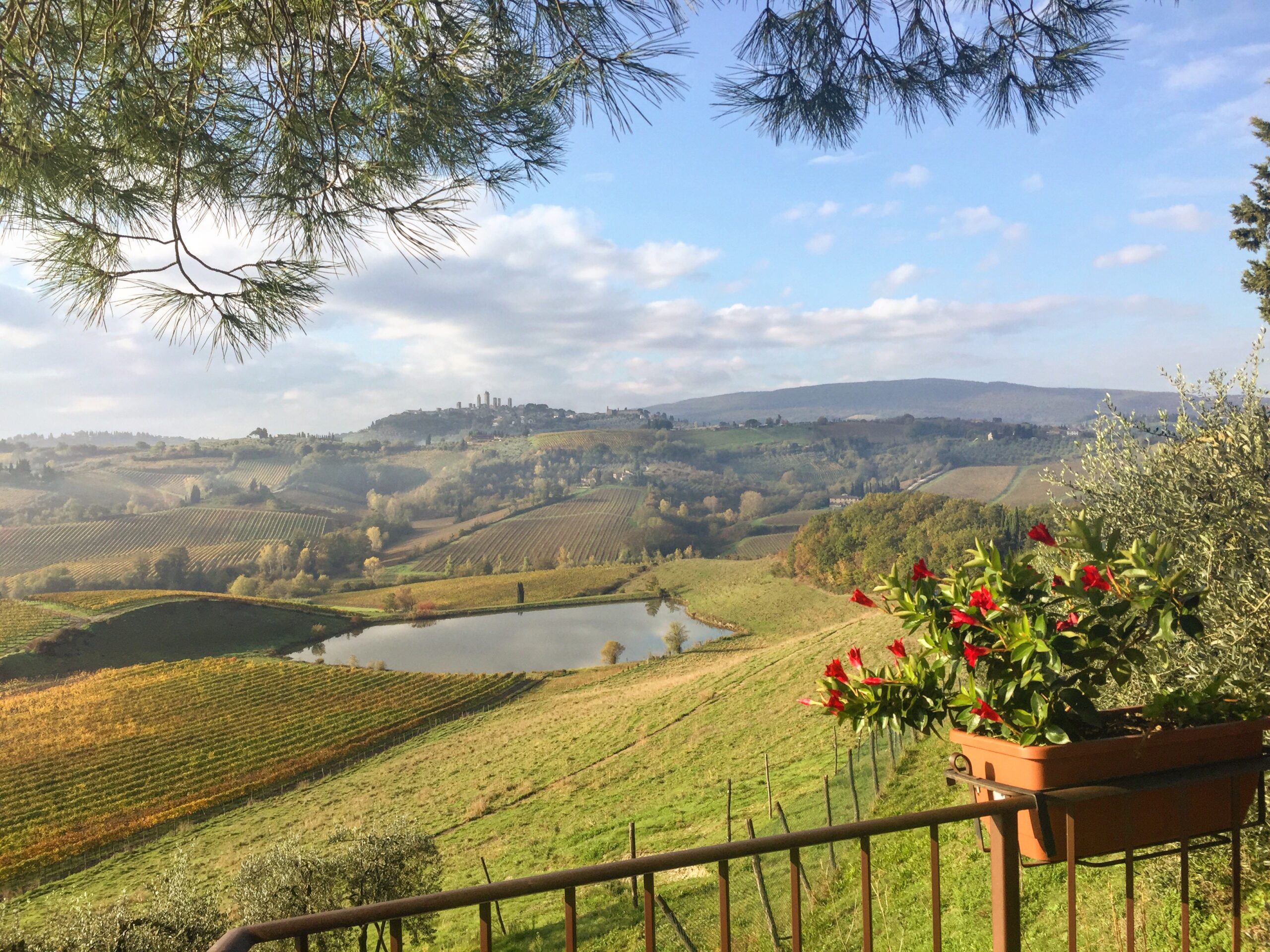
How to Enjoy a Taste of Tuscany and a Recipe for Ribollita

Honest Conversations: Looking at Pregnancy Loss One Year Later
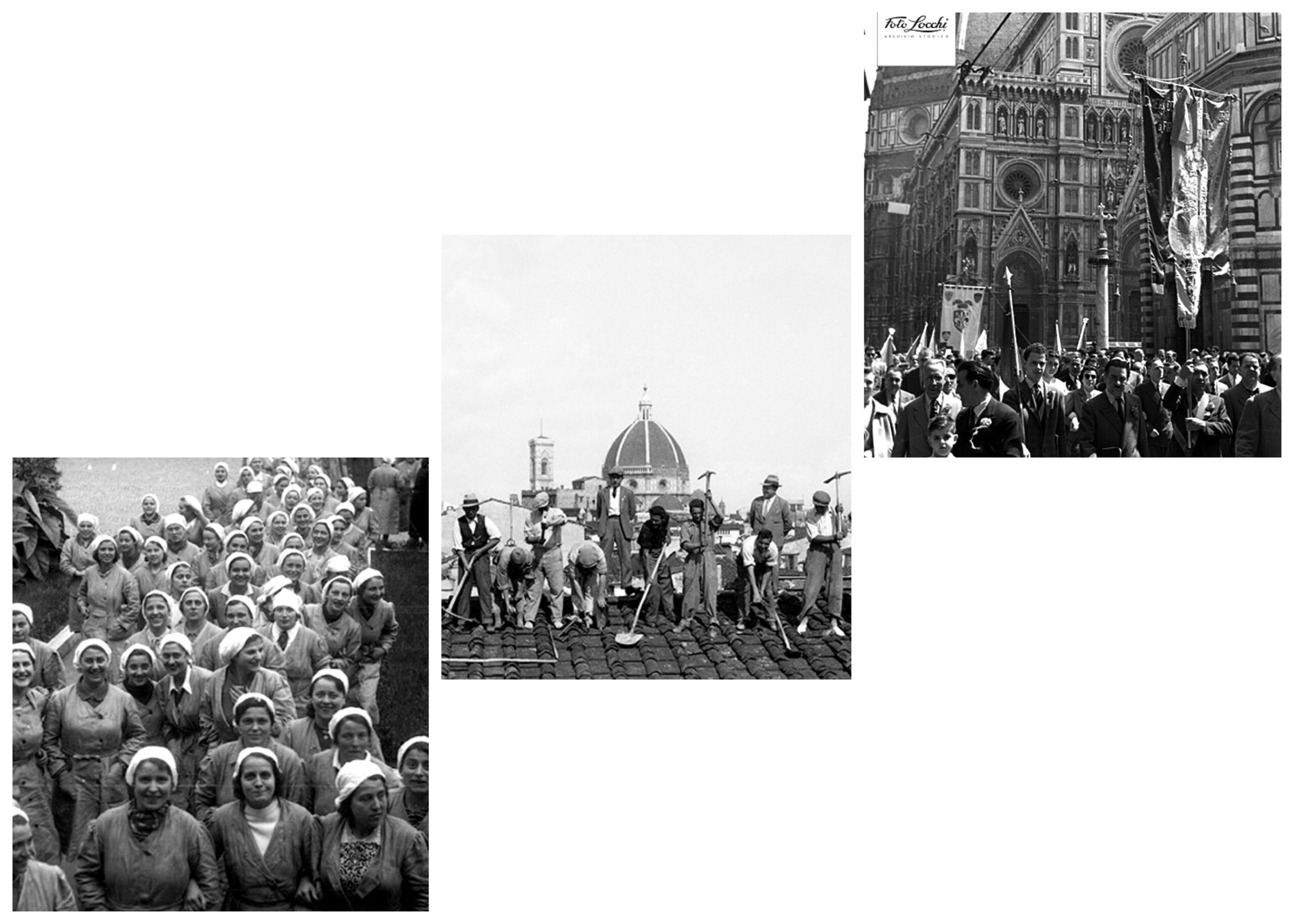
Celebrating Labor Day in Italy – A Historical Look in Florence

What to expect from Phase Two in Florence, Italy
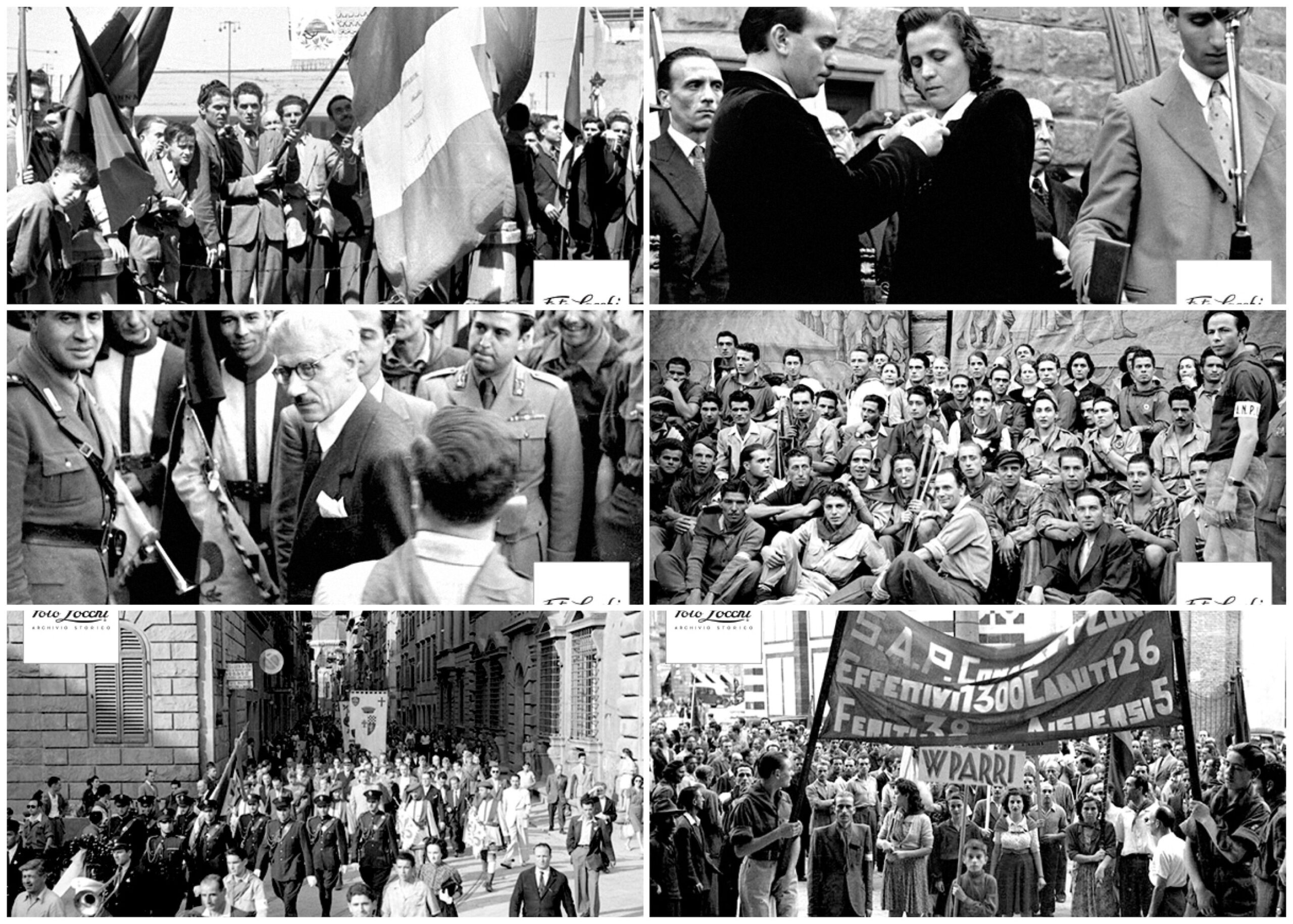
Happy Liberation Day in Italy – A Historic look in Florence
7 ways to “visit” italy virtually right now.
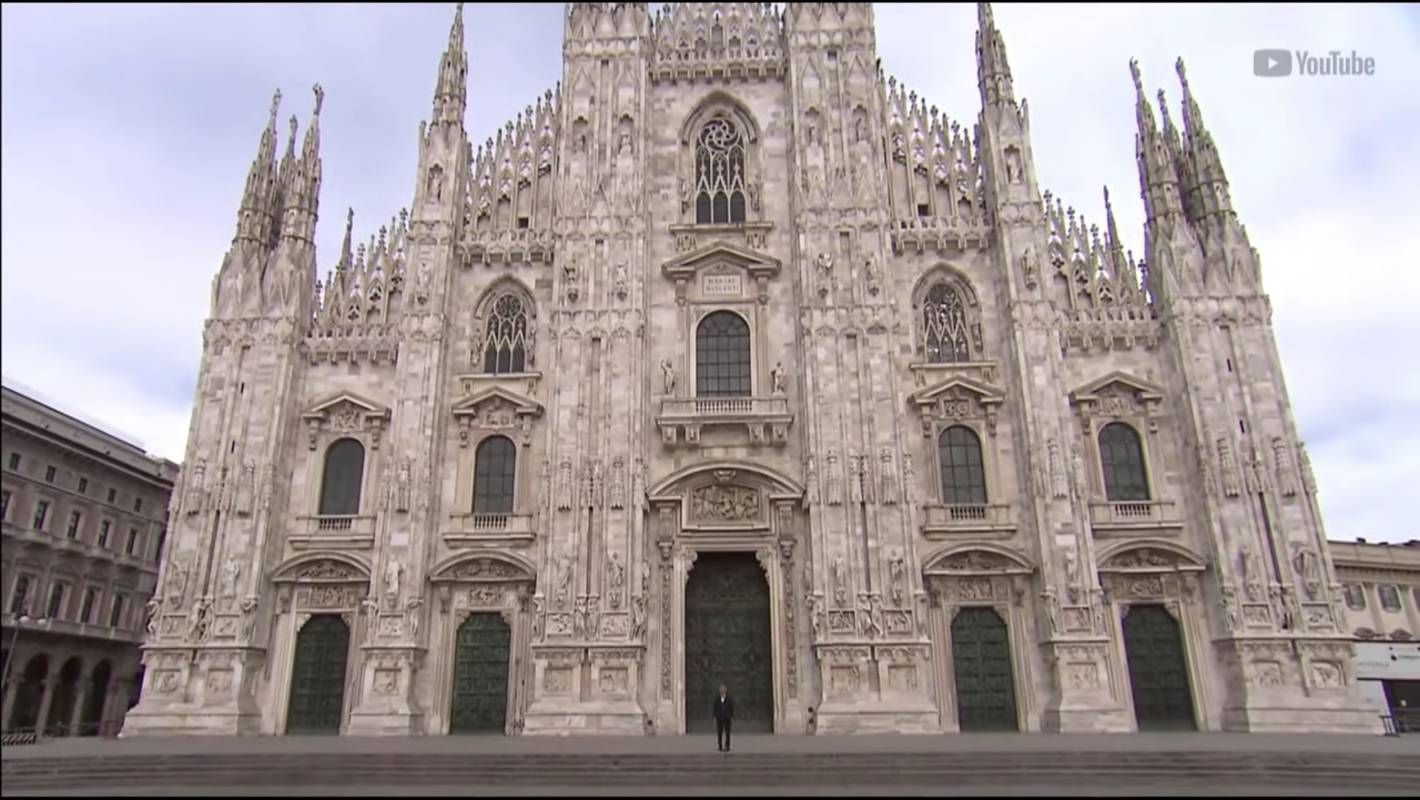
VIDEO: Watch Andrea Bocelli Perform “Music for Hope” in Milan’s Cathedral
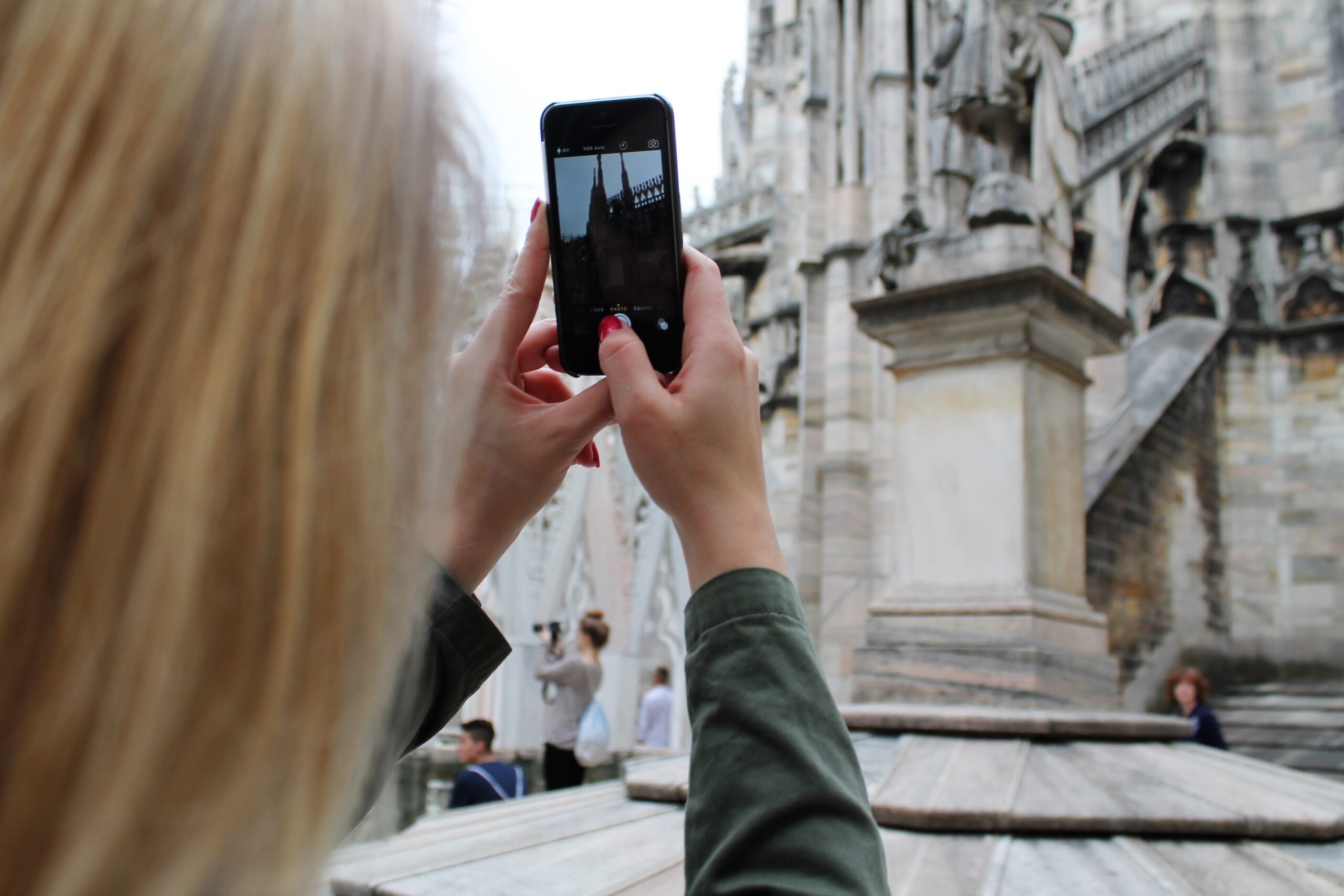
The best Instagram accounts in Italy to follow

Italian Tv Shows and Movies You Should be Watching Right Now
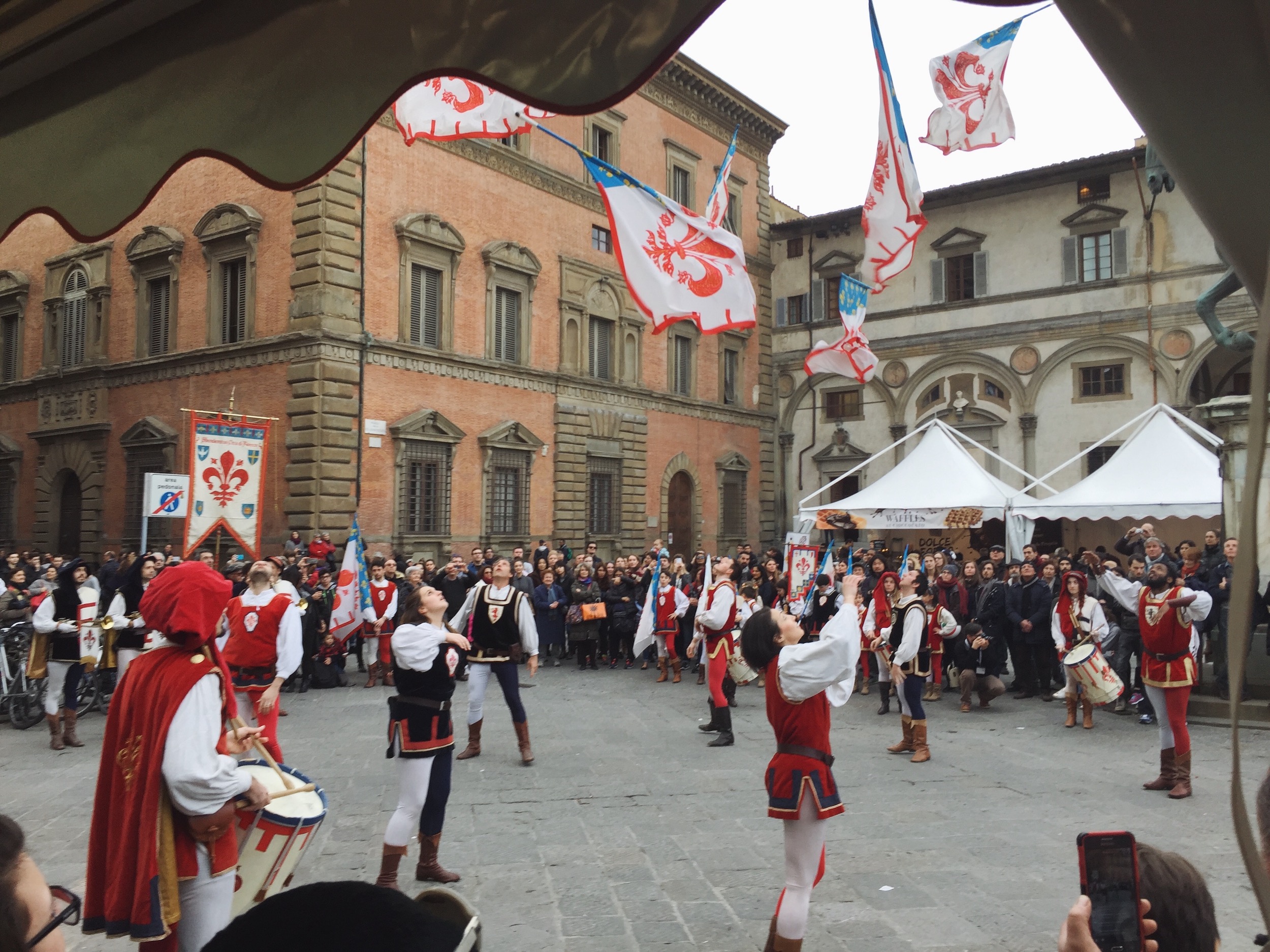
March 25th Marks the Florentine New Year and DANTEDÌ
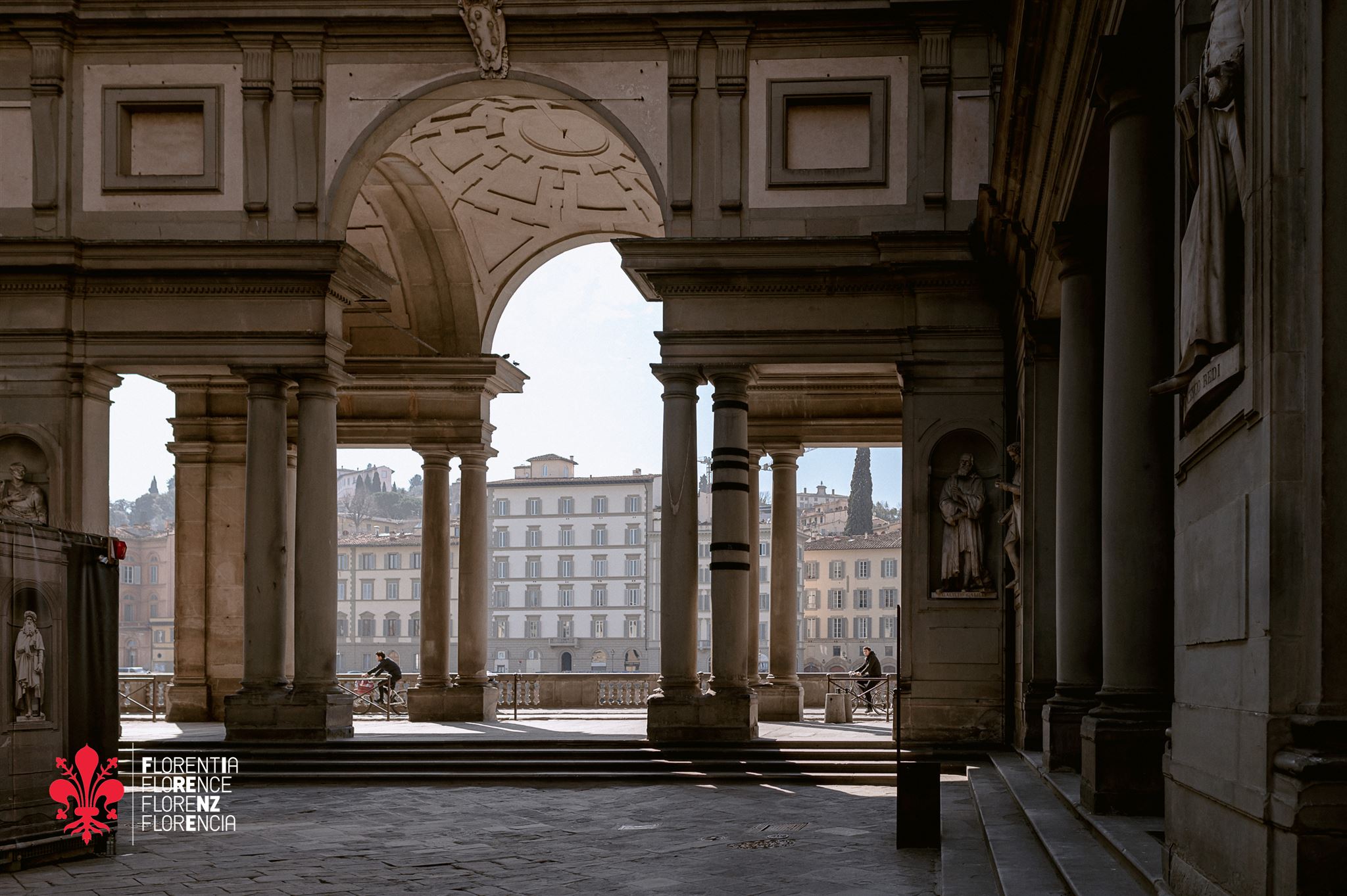
Buy A print of Florence ‘like you’ve never seen before’ for a Good Cause

Home Delivery in Florence – From Food to books
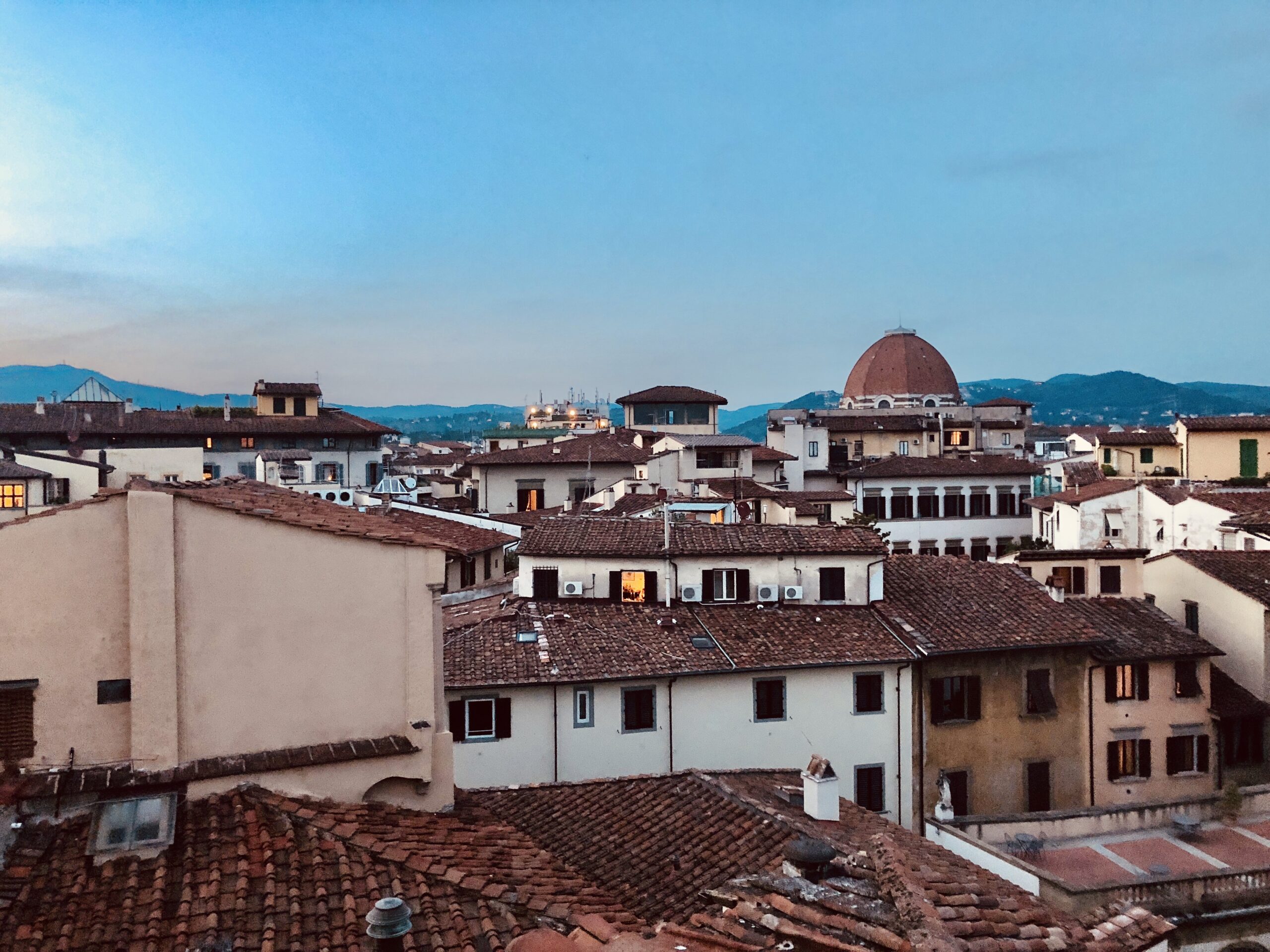
Songs for Solidarity: Italians Unite through music from balconies, terraces and windows
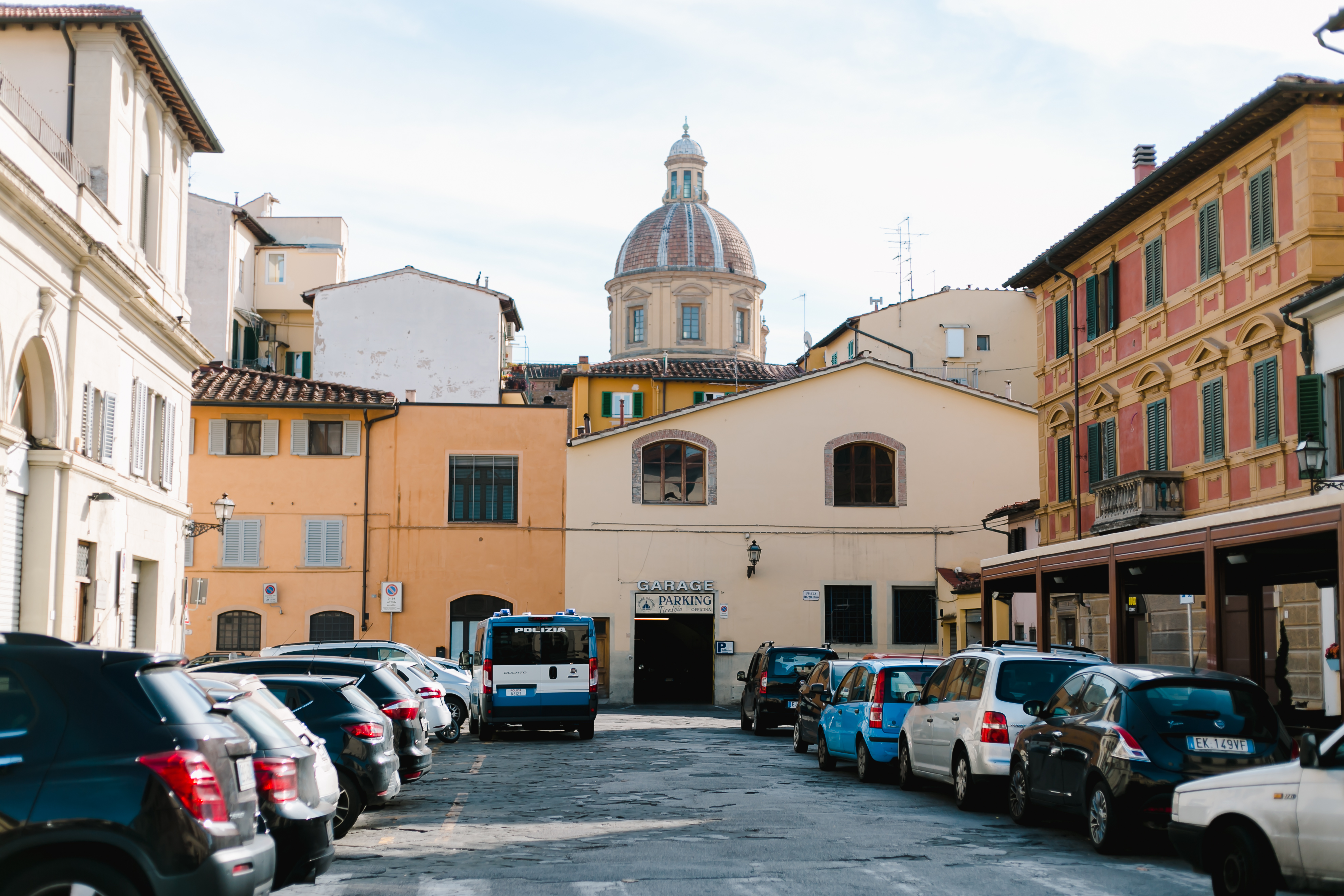
Coronavirus: A Letter from Florence (and how to help)

Locals I Love: Meet Artisan Joy Franklin
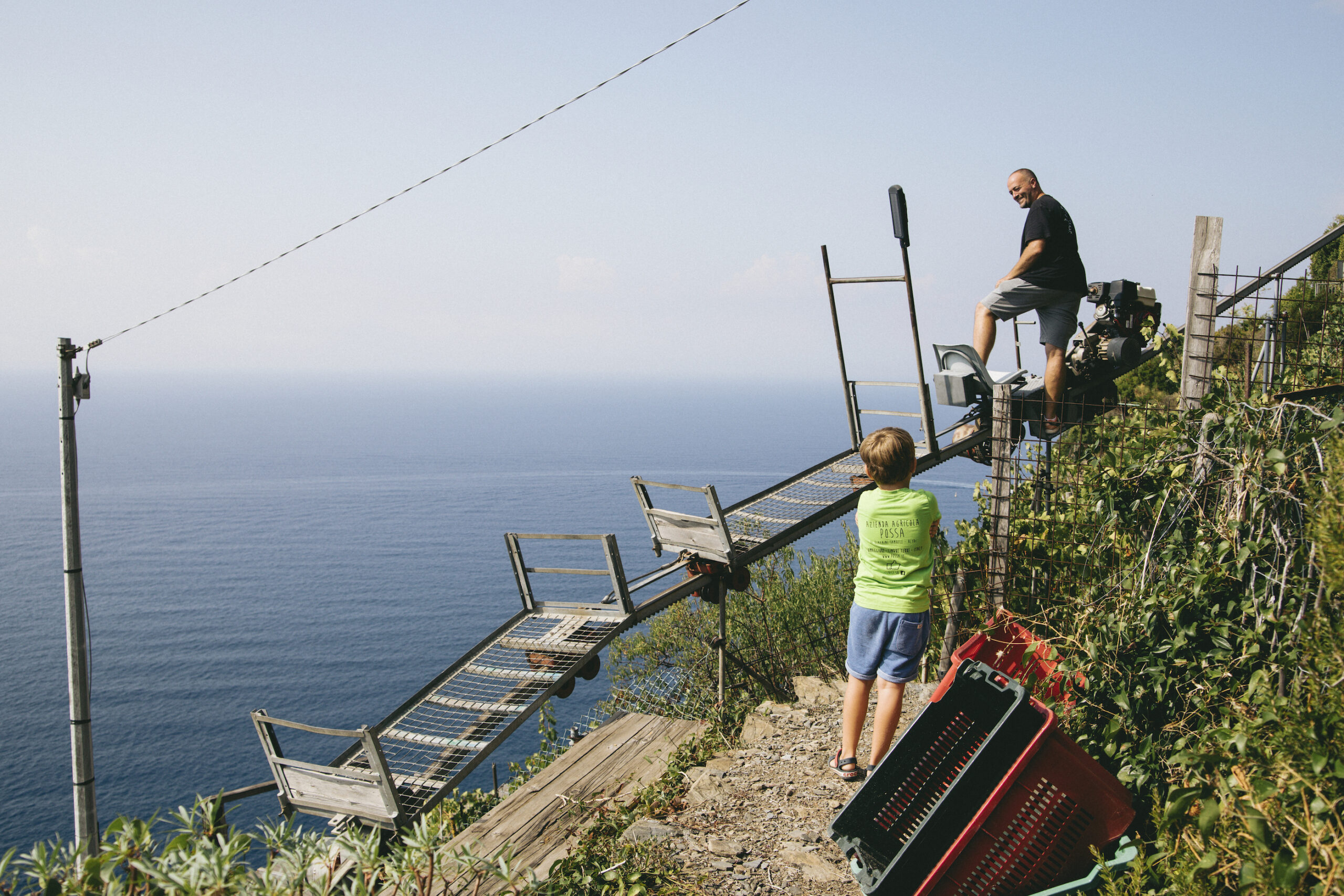
Love Cinque Terre? Here’s How to Help Save it
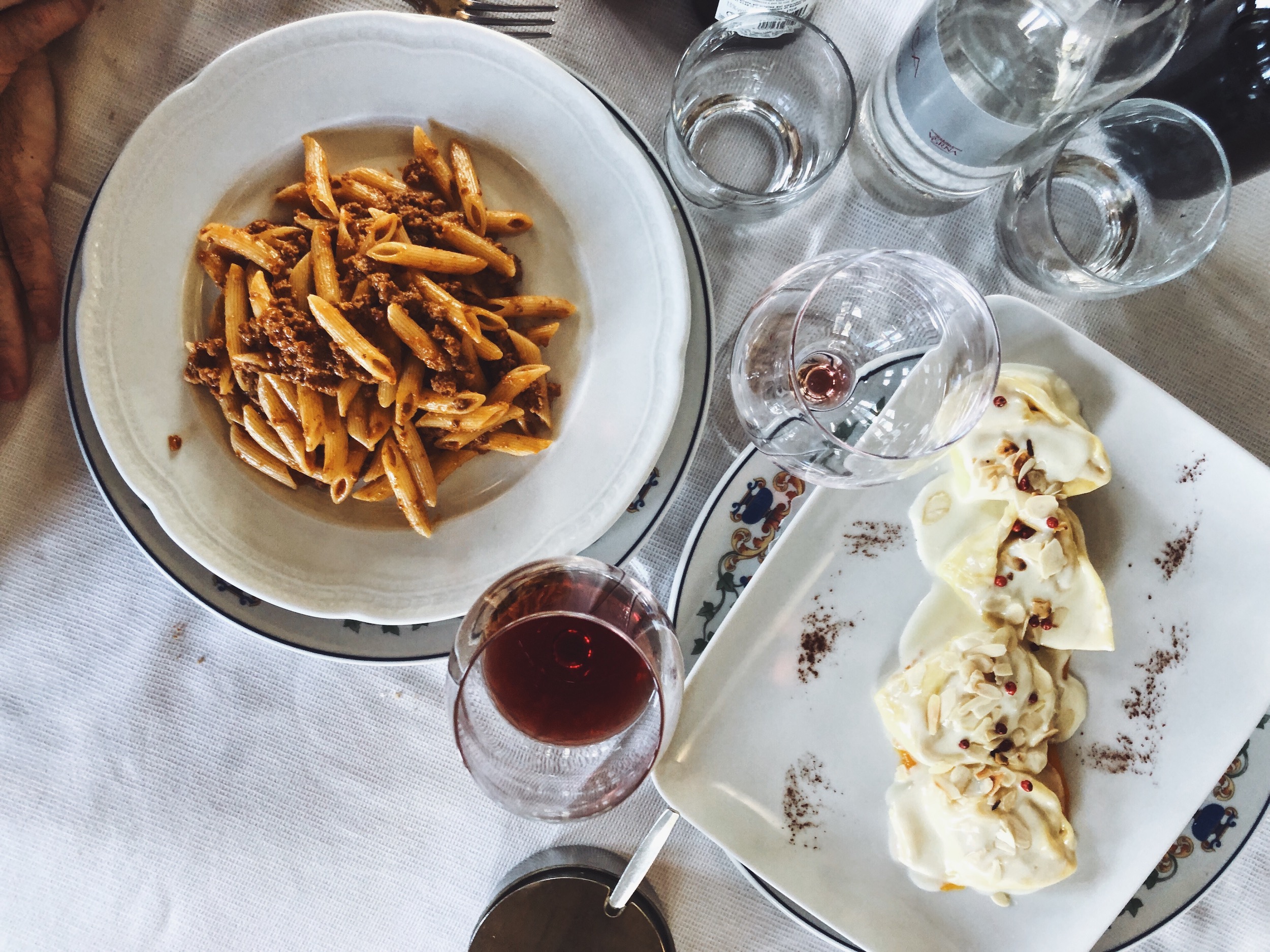
5 Reasons Why Pasta Deserves A Love Letter this Valentine’s Day
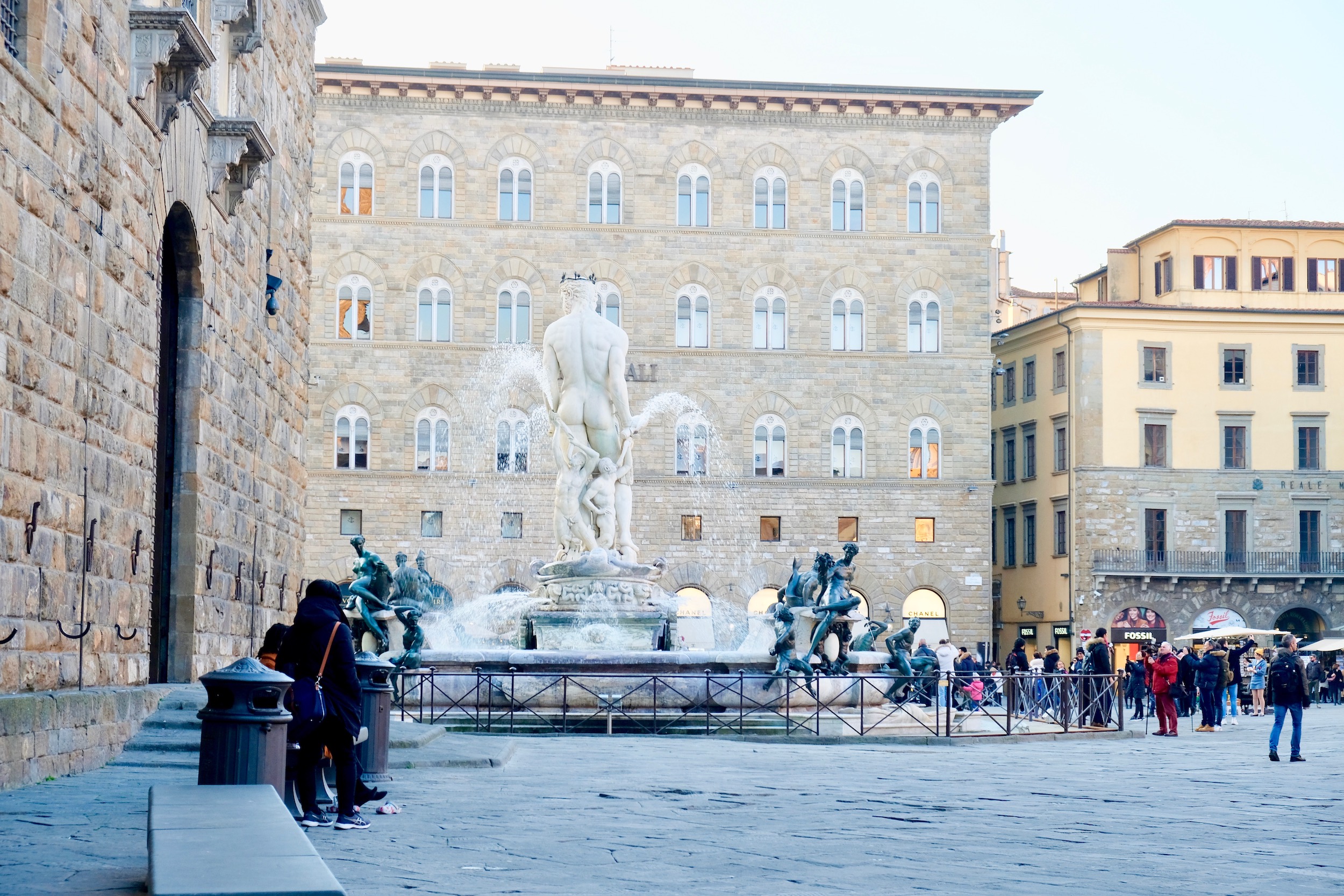
What To Do In Florence This February 2020
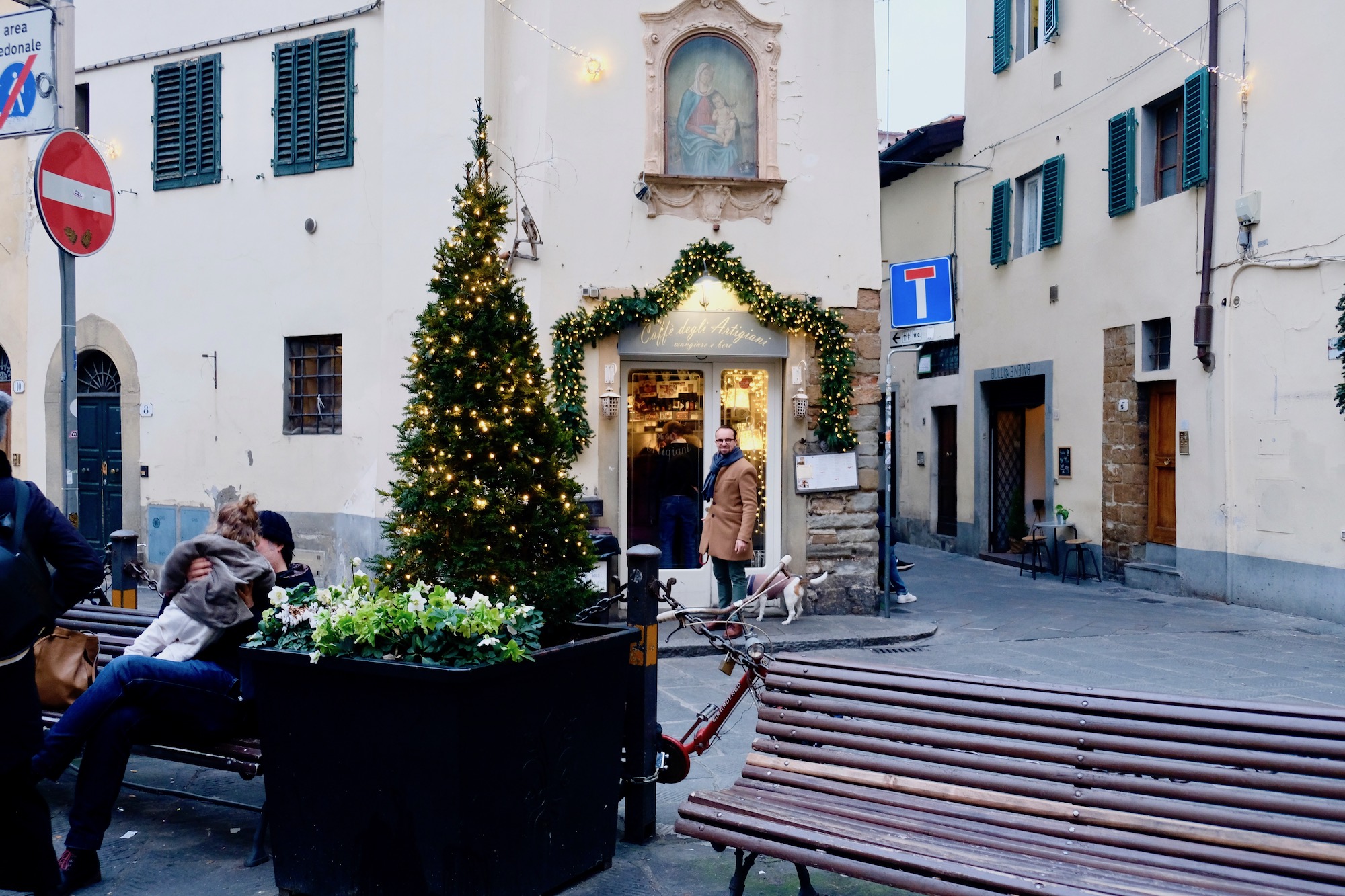
What to do in Florence this January
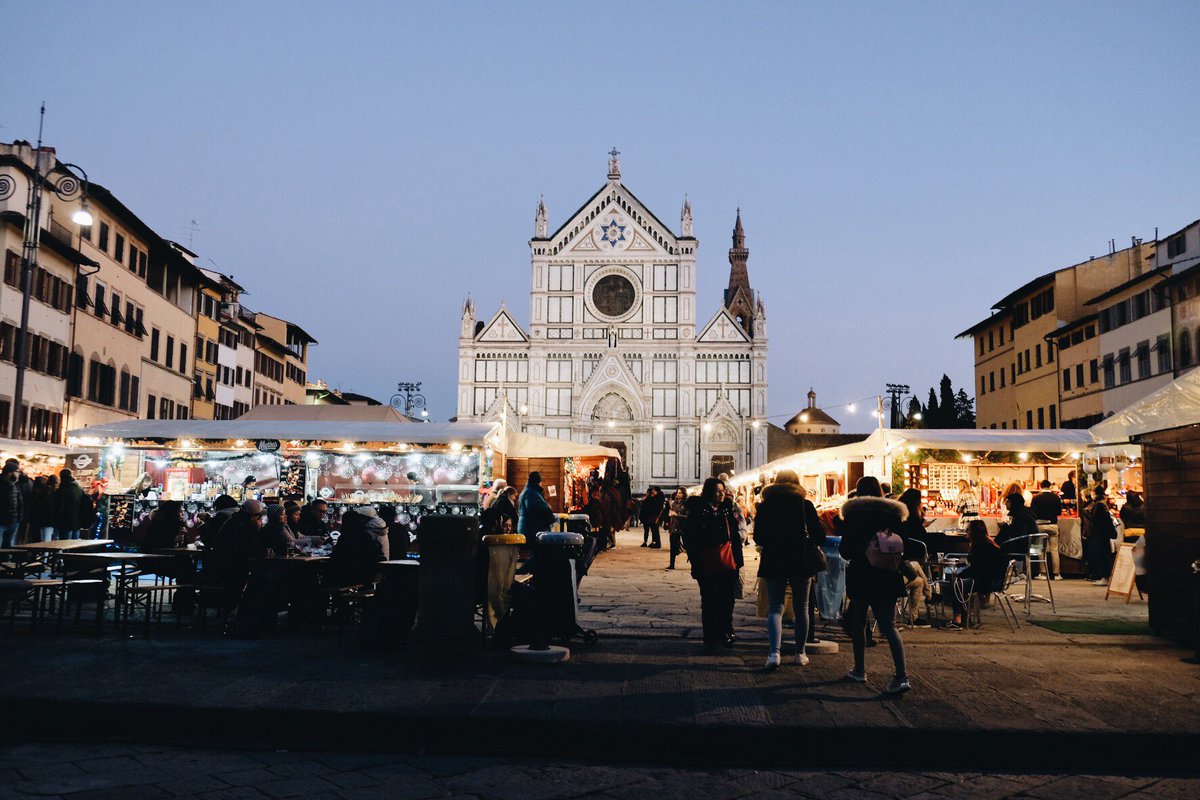
What to do in Florence this December
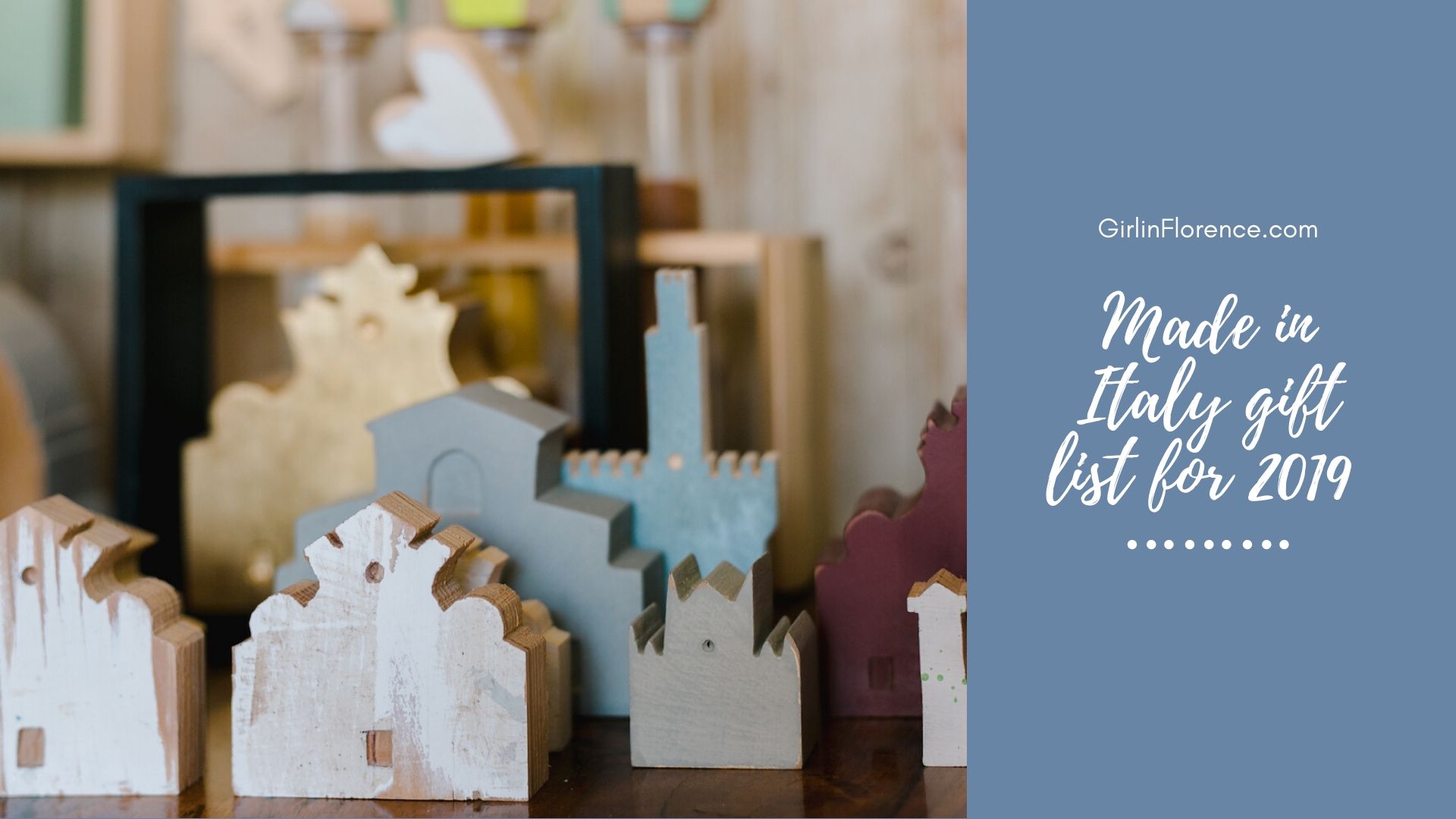
Made in Italy: Great Gifts From Tuscany For The Holidays
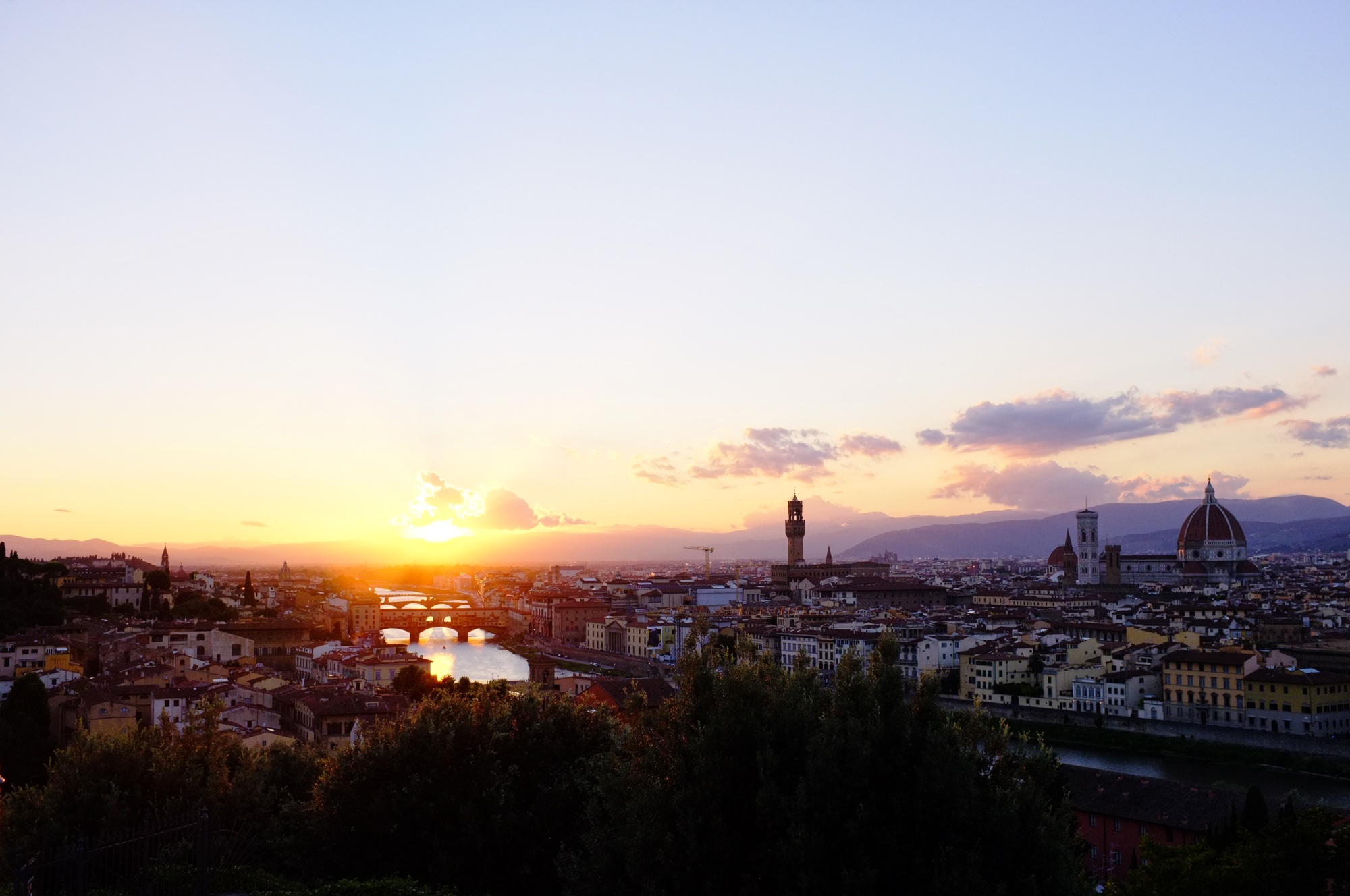
Quotes About Florence From Then to Now
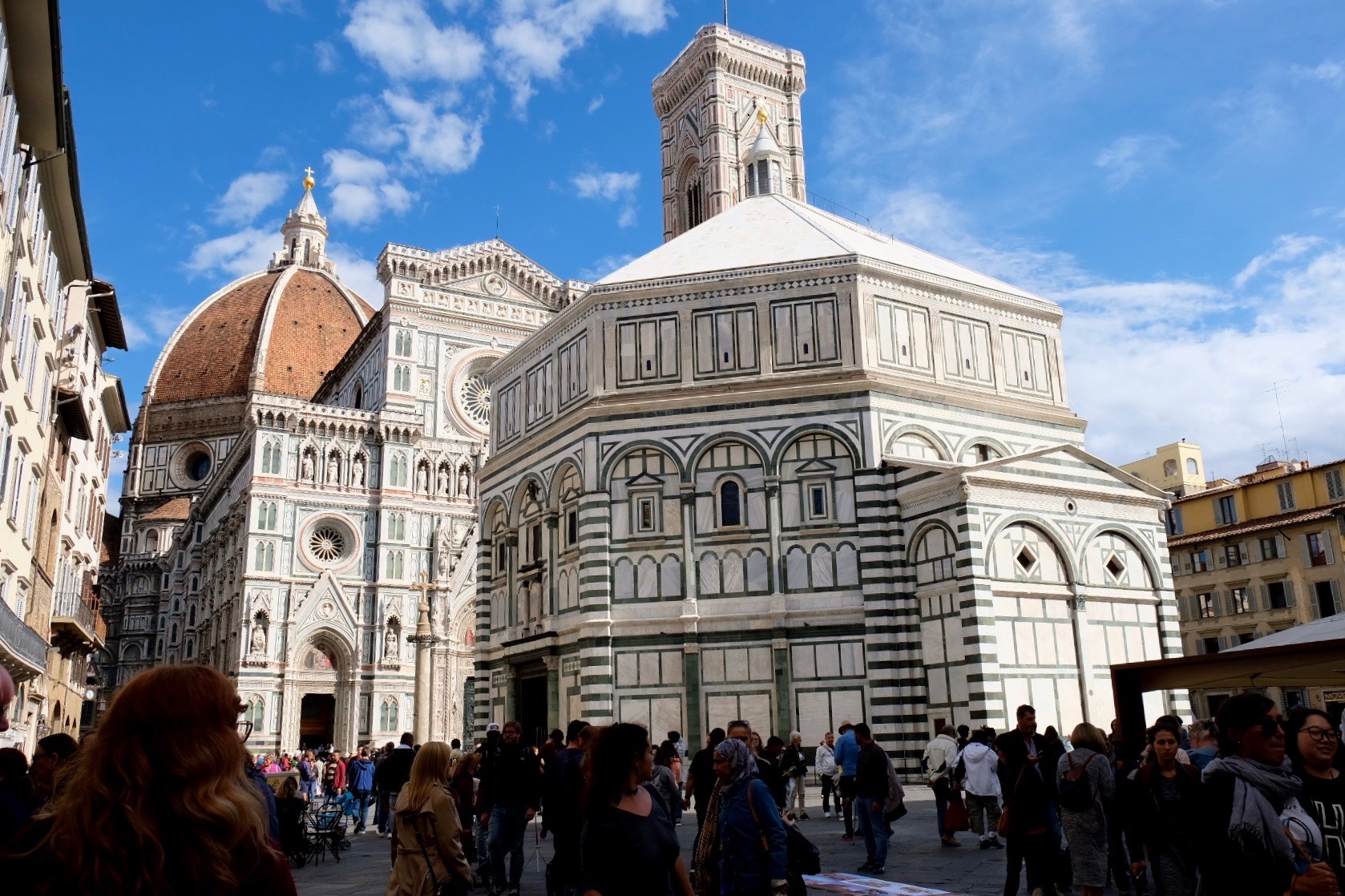
What to do in Florence this November
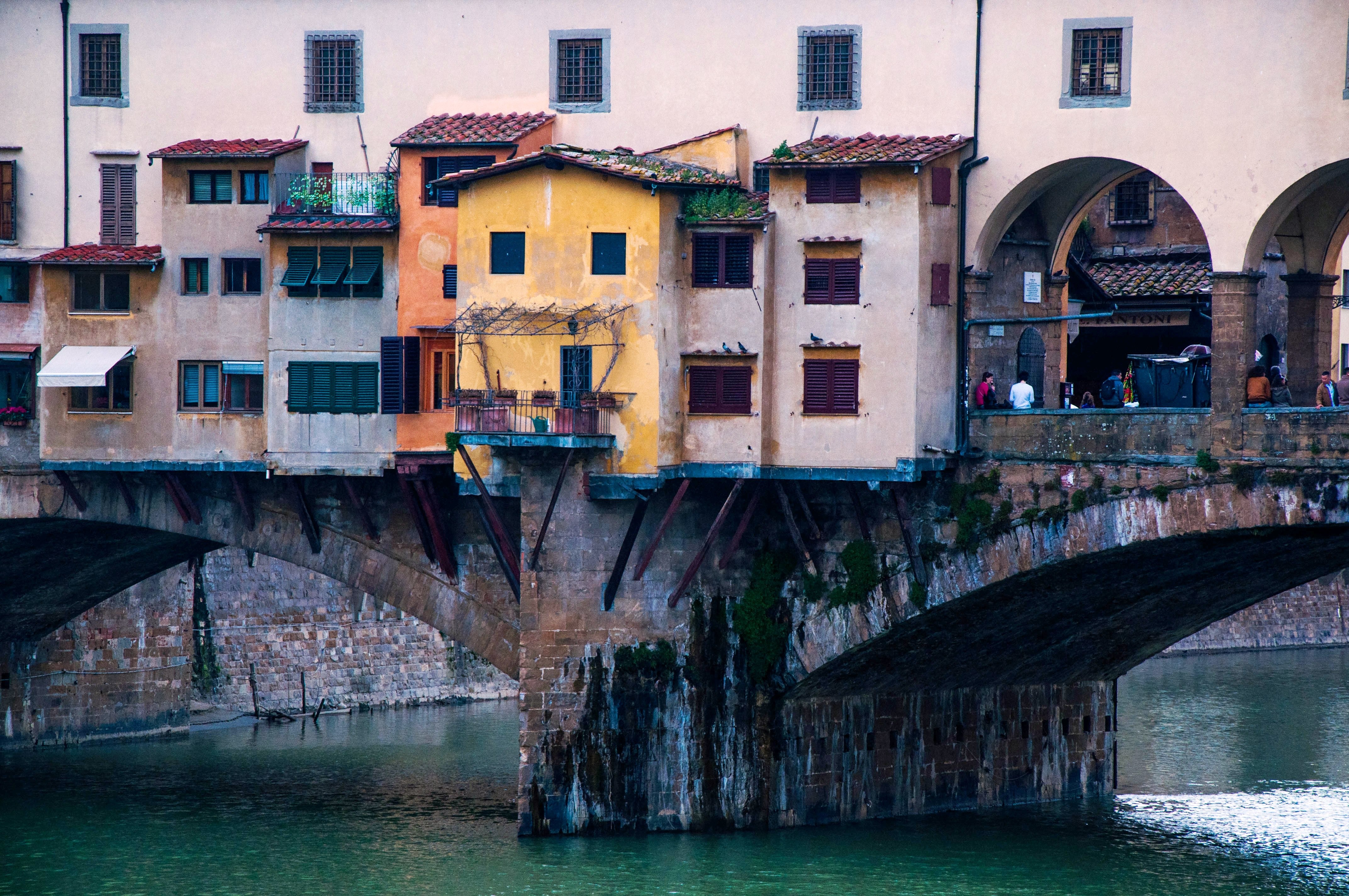
What to do in Florence this October

What to do in Florence This September: Personal Suggestions
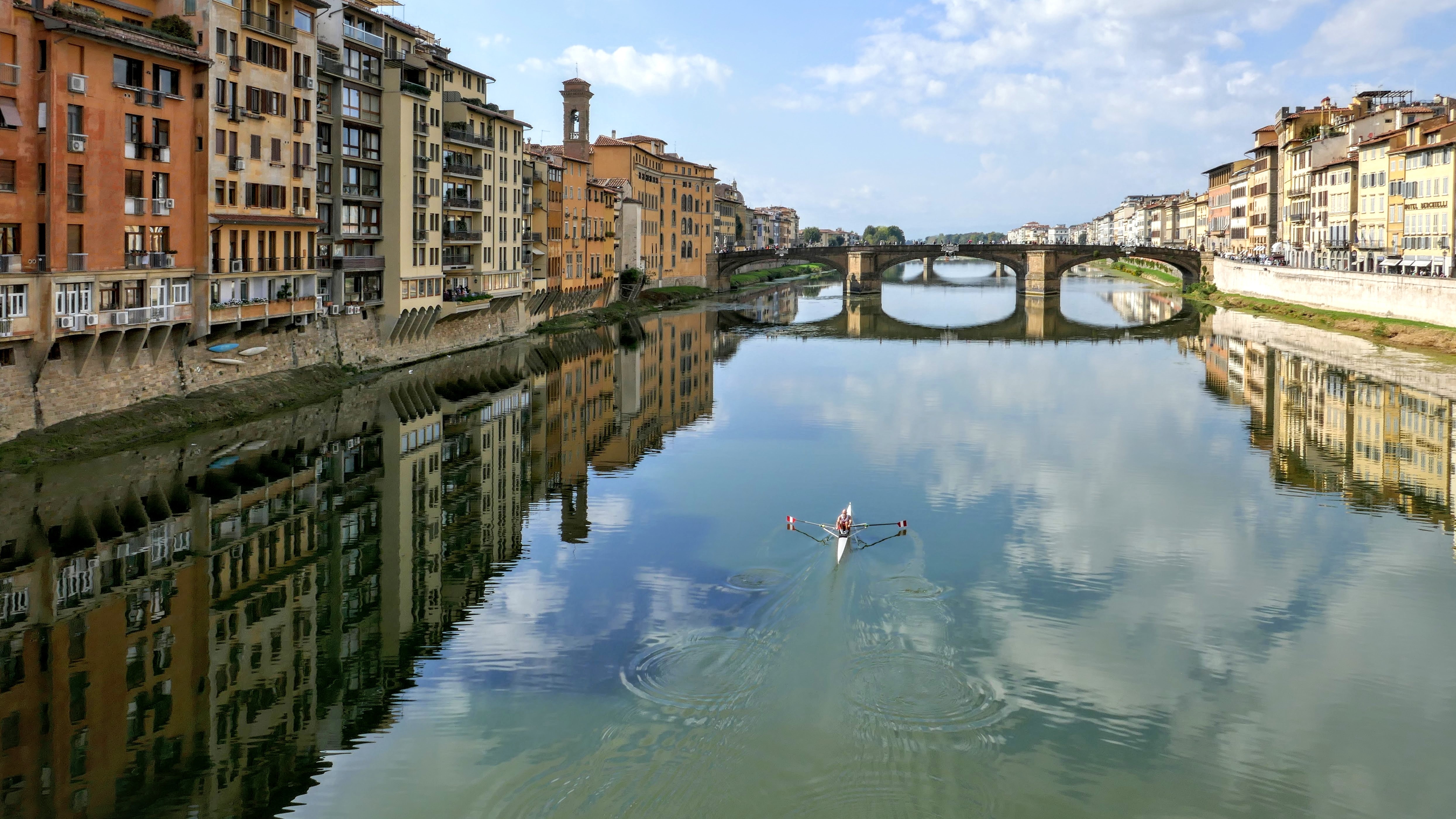
What to do in Florence This August: Personal Suggestions

Where to Eat in Florence This August 2019
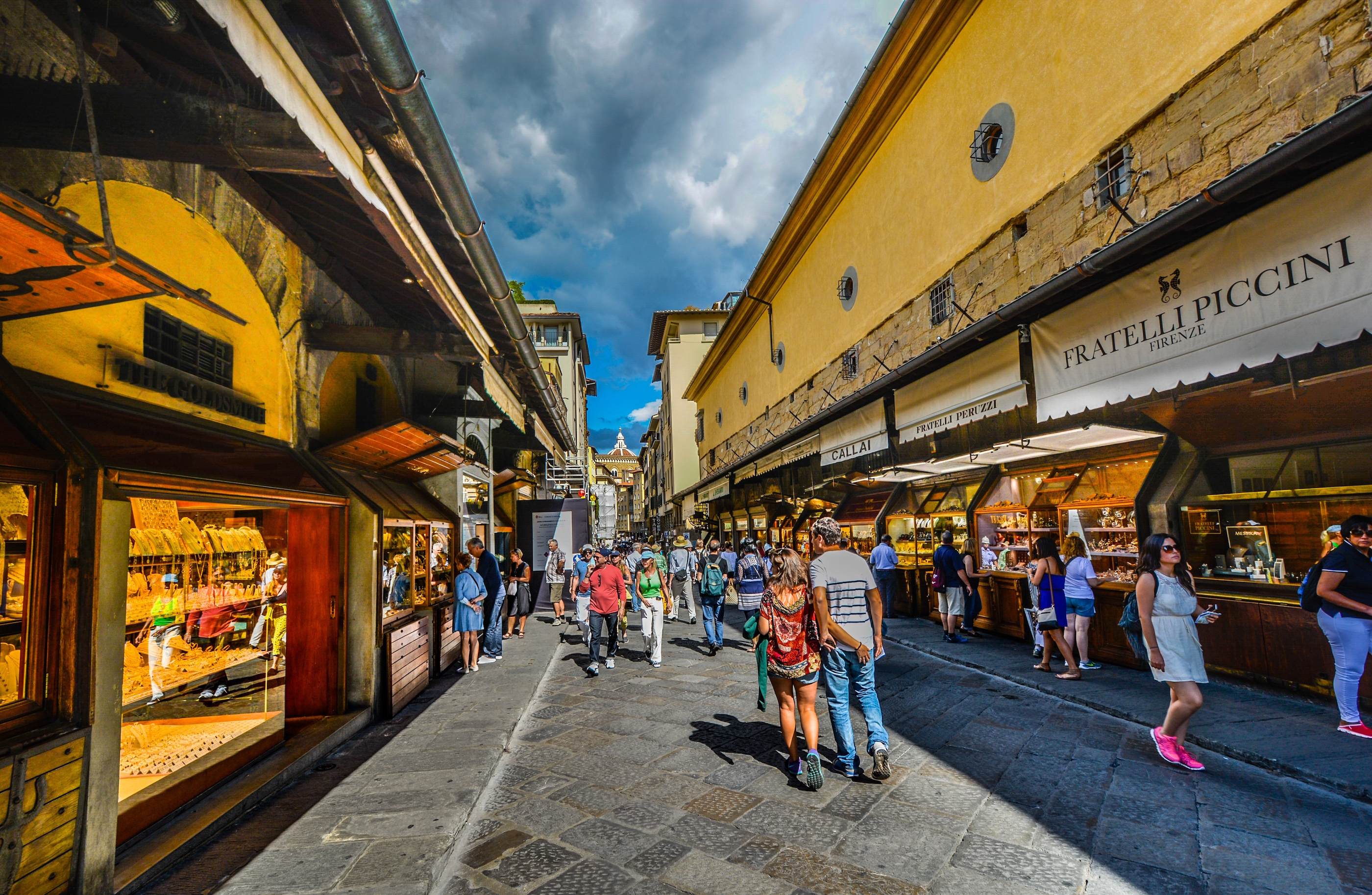
WHAT TO DO IN JULY 2019 IN FLORENCE: My PERSONAL SUGGESTIONS
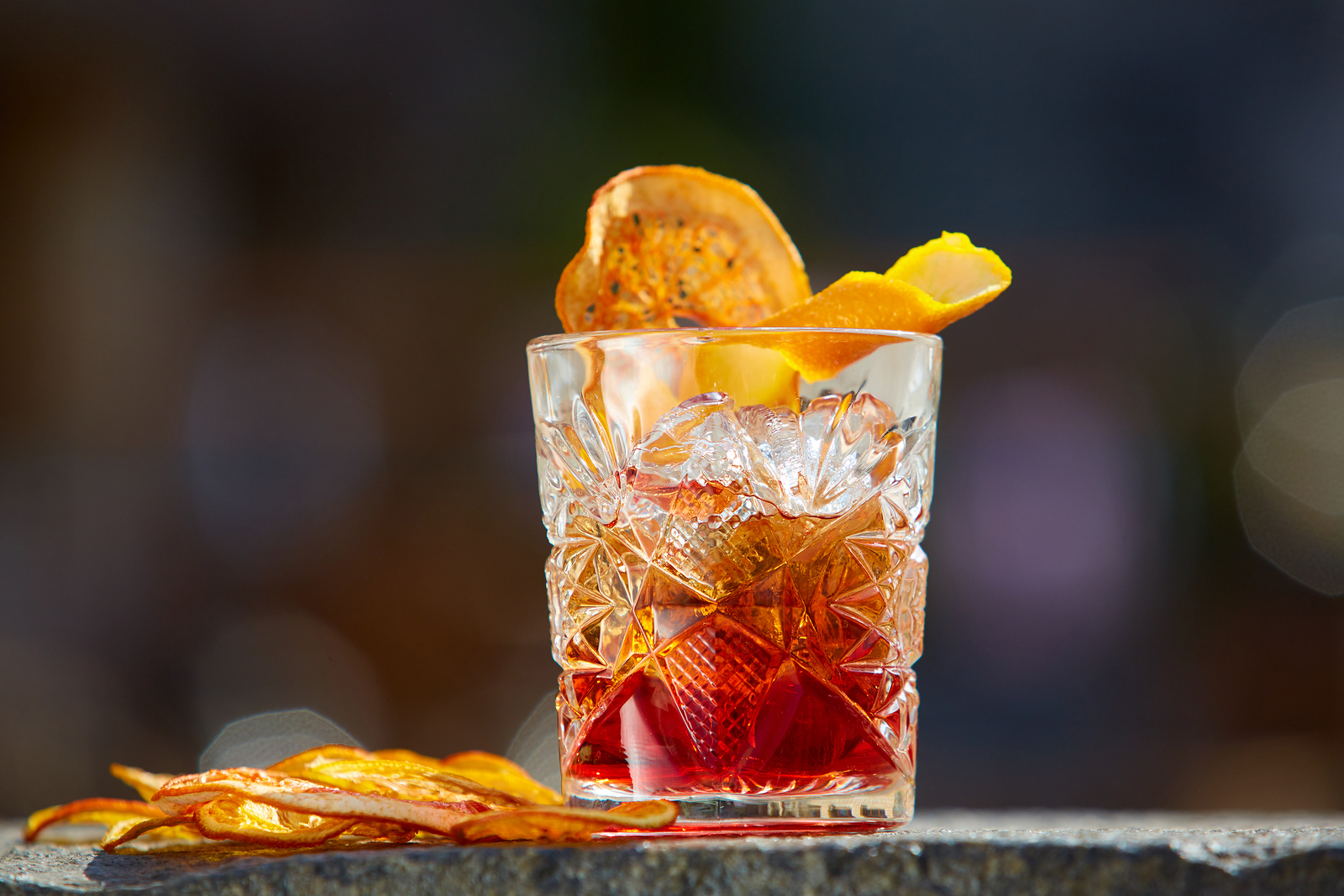
A Love Letter to the Negroni Cocktail: Celebrating 100 years of this iconic Italian cocktail

Making Panzanella With Manuela – Cooking Class & Market Tour in Florence
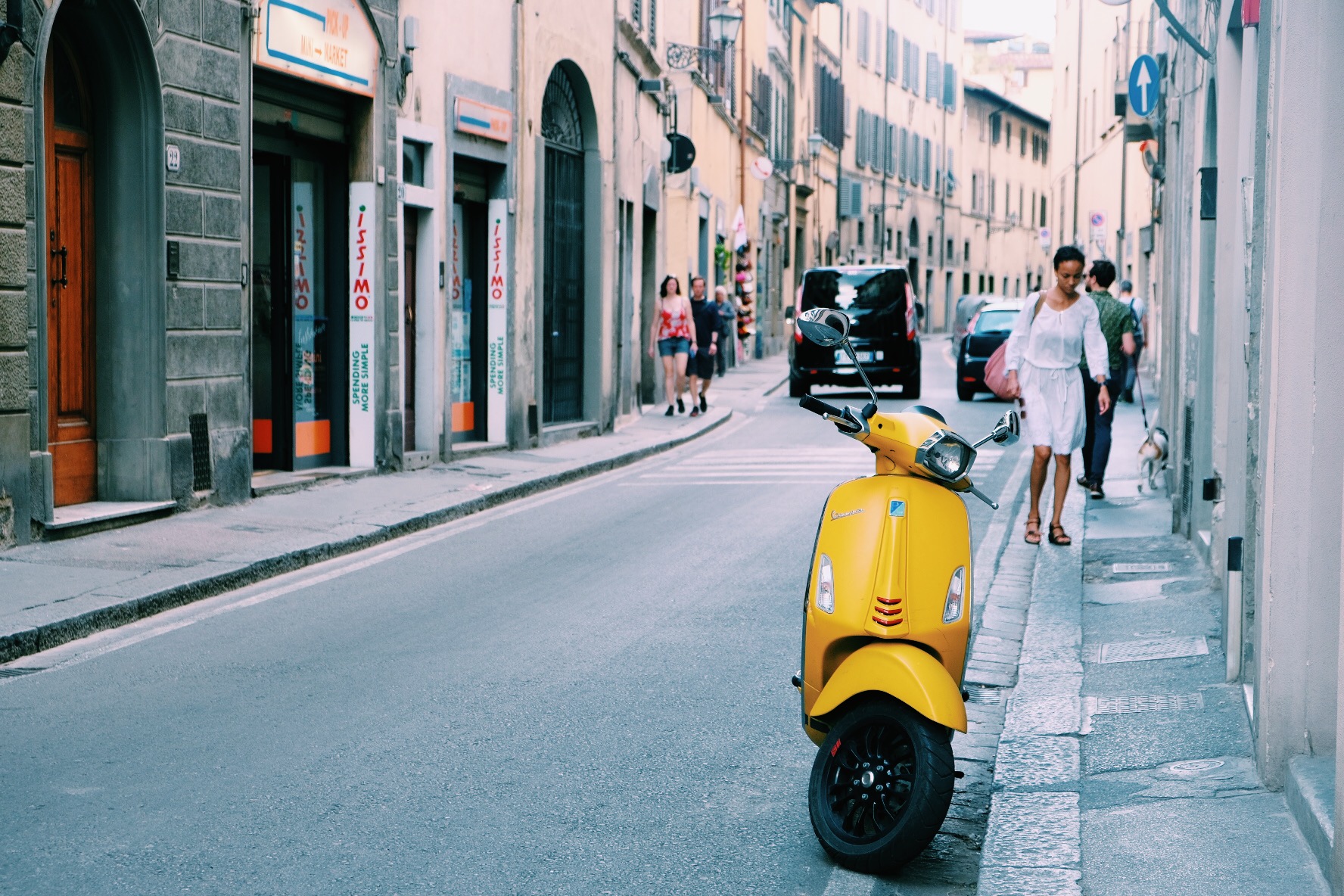
WHAT TO DO IN June 2019 IN FLORENCE: PERSONAL SUGGESTIONS FOR A GREAT MONTH
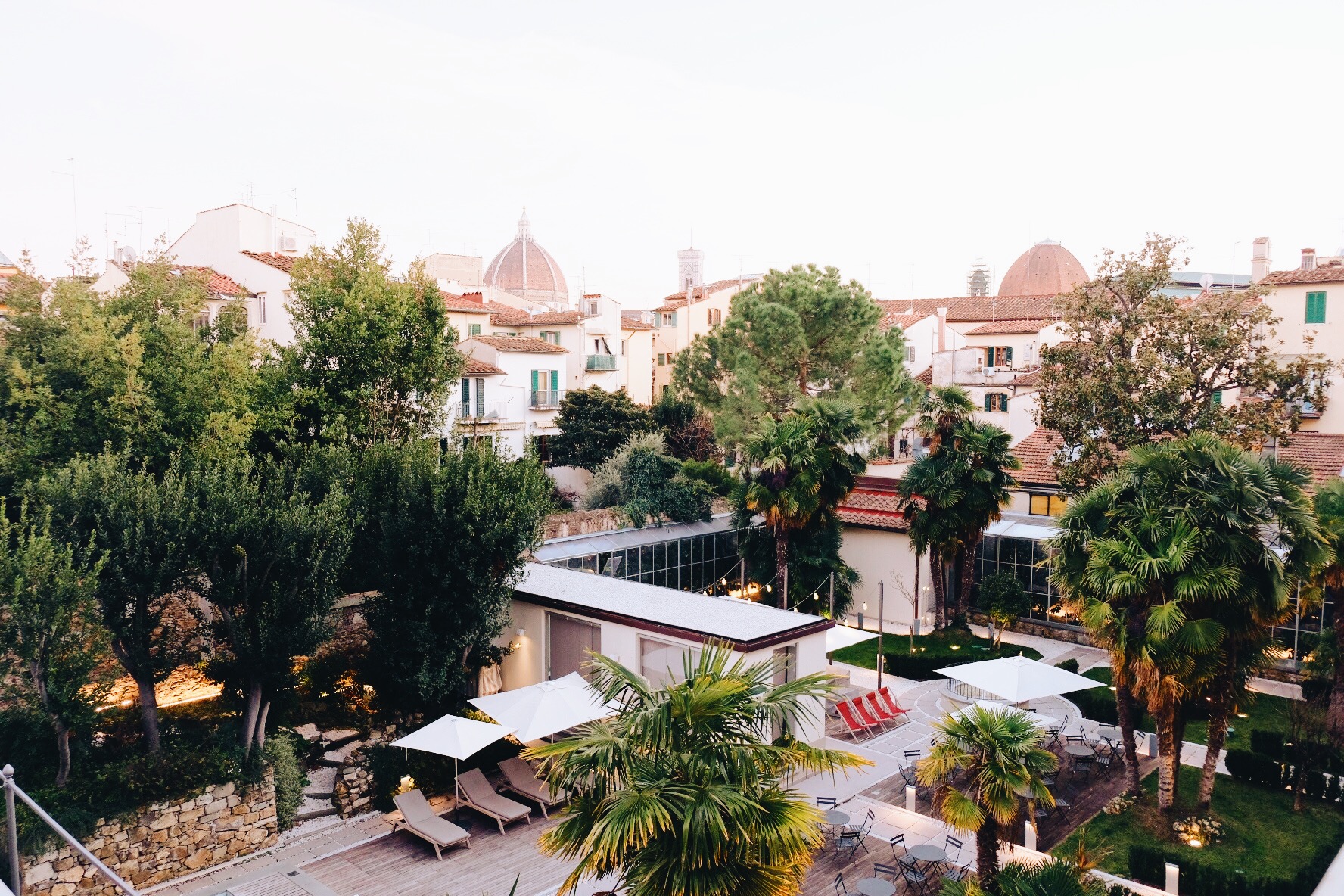
Hidden in Plain Sight – A Staycation at Palazzo Castri 1874

Bursting out of our social bubbles
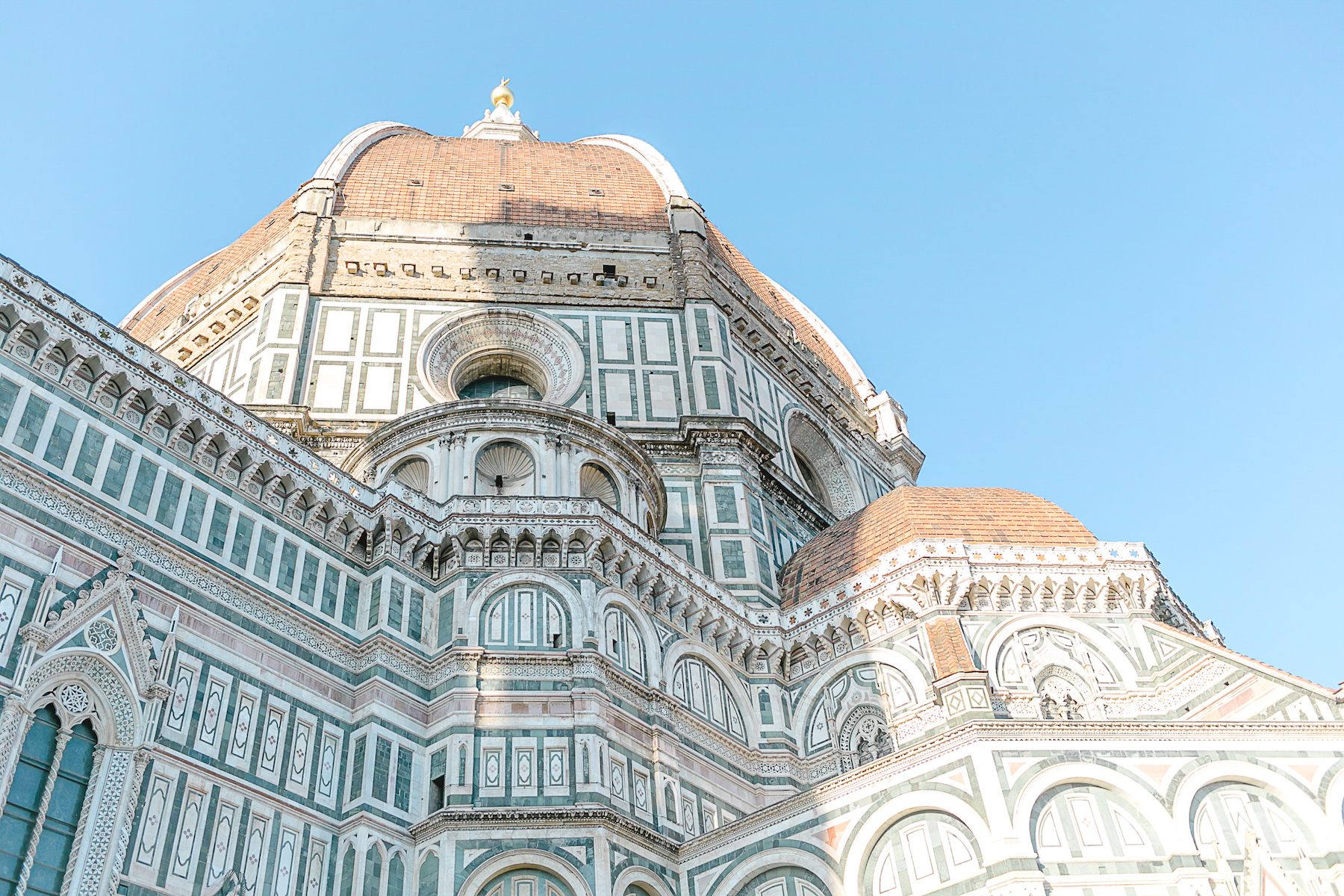
Honest Conversations: Facing Loss

WHAT TO DO IN MAY 2019 IN FLORENCE: PERSONAL SUGGESTIONS FOR A GREAT MONTH

Eat, Drink, & Be Merry: Tips From a Local
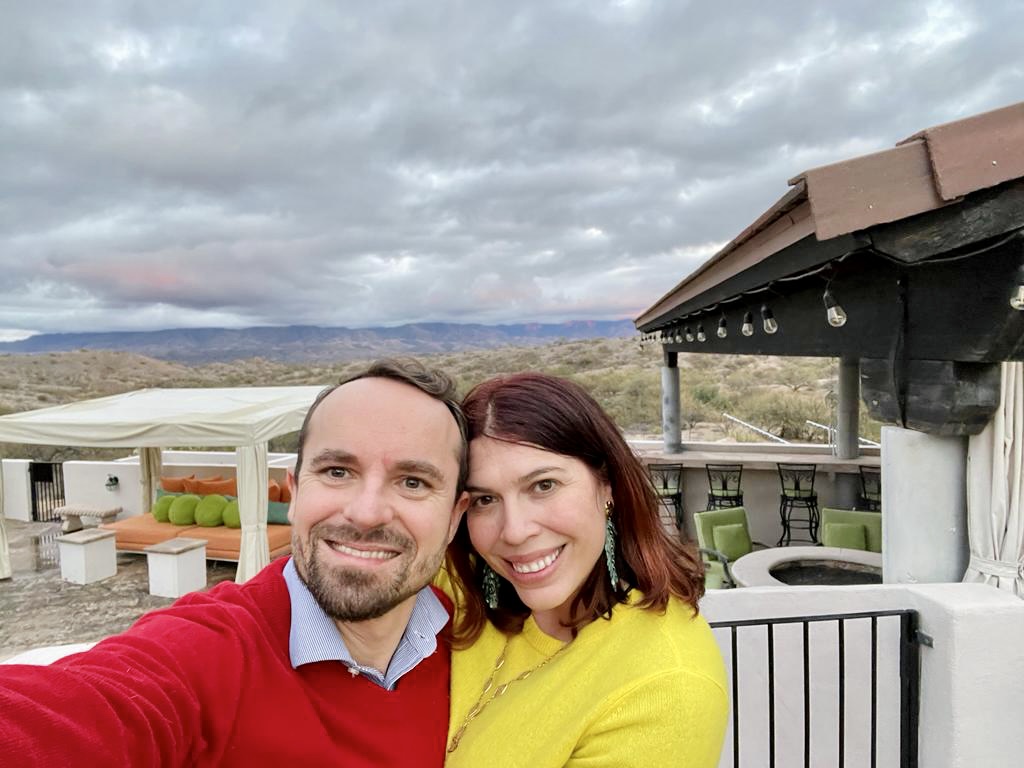
Honest Conversations: It’s Me, I’m the Problem It’s Me
What’s hot this summer in events in florence.
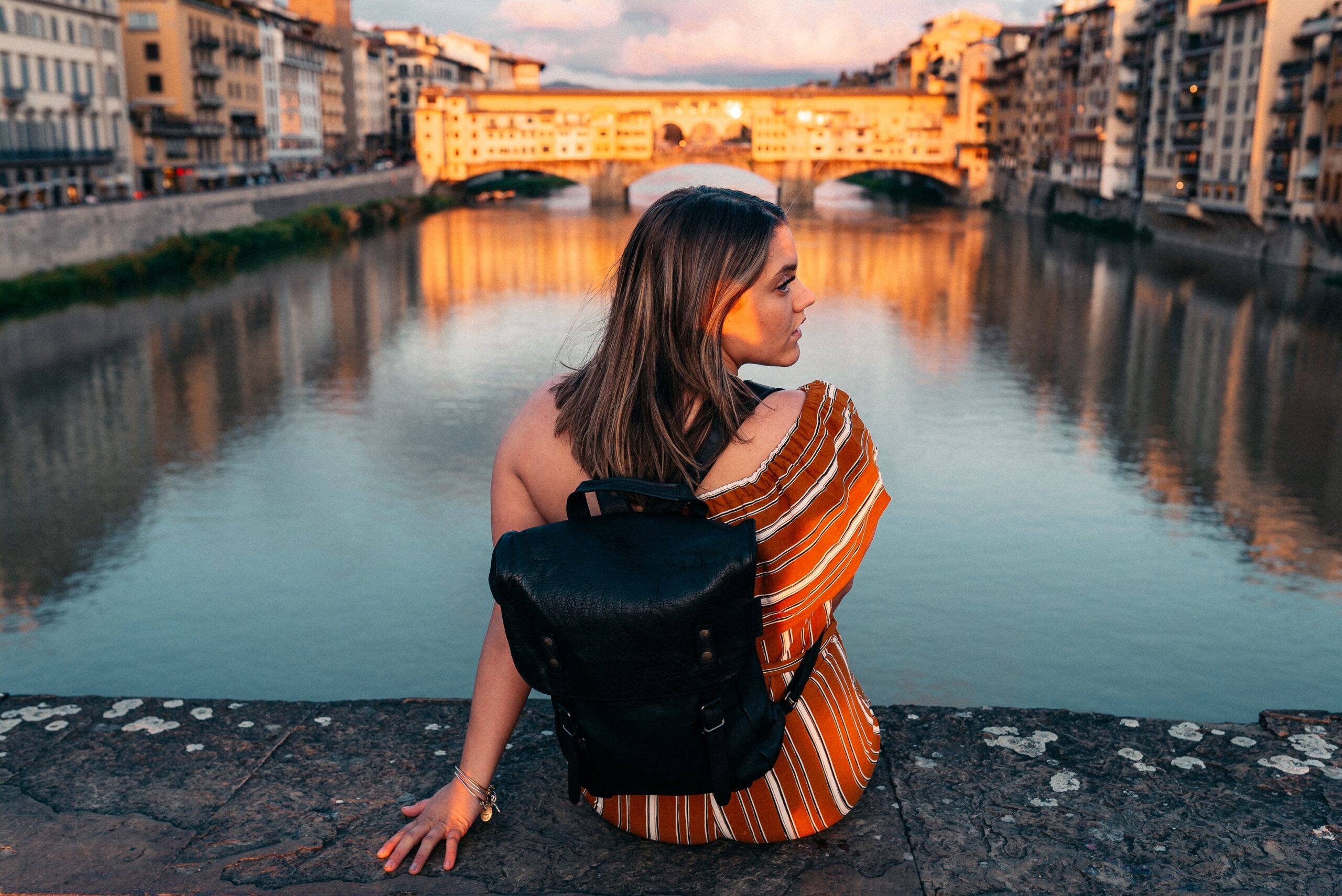
How to Perfect Your Italian Summer Wardrobe

Shopping Vintage In Florence: Five Walkable Picks
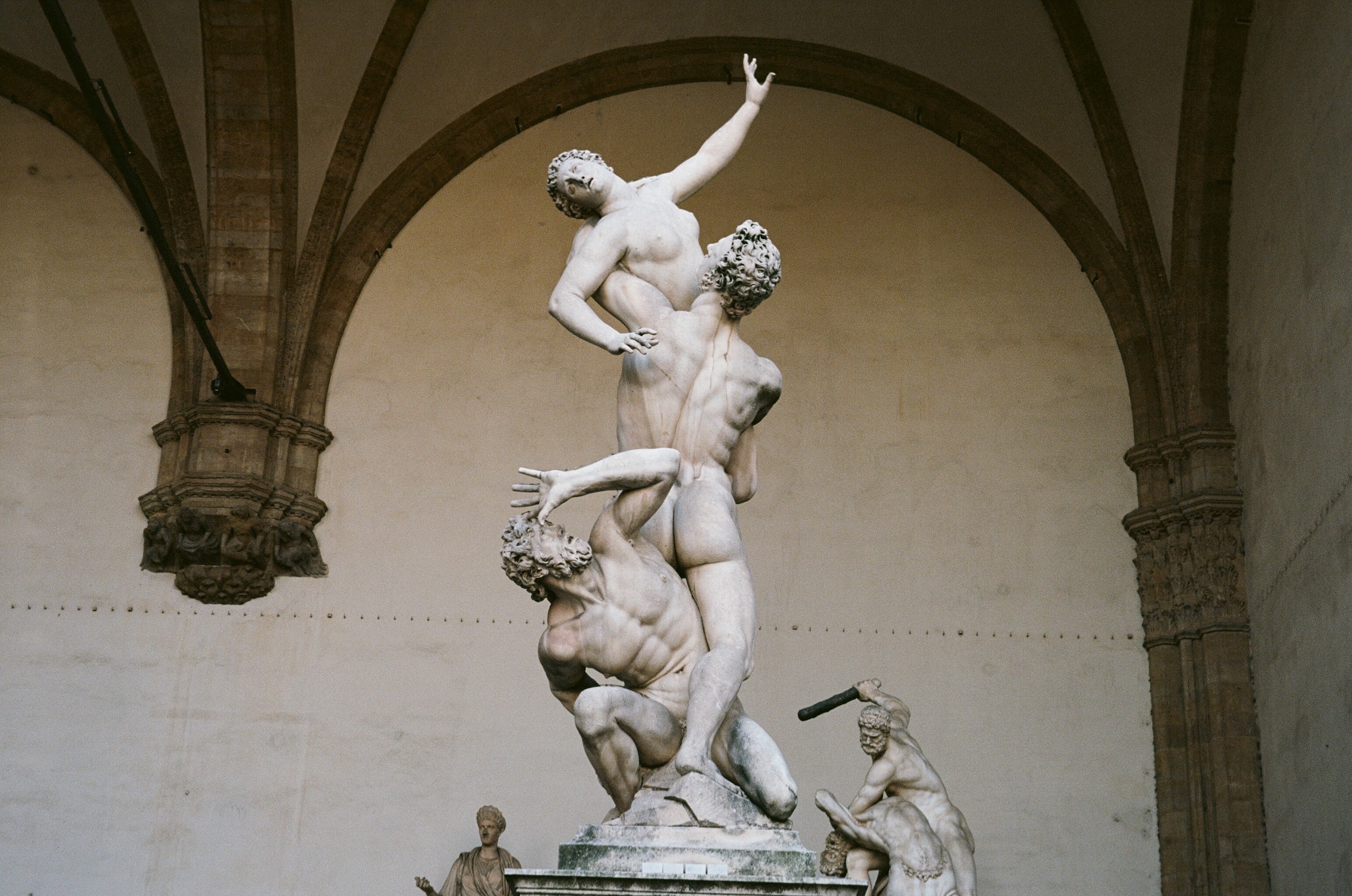
How to have Fun in Florence this January
GirlInFlorence
8 responses.
You saved the best for last. The Crazy Cart celebration in Piazza Duomo is so over the top. Almost impossible to believe! I suggest claiming a spot early, and have plenty of space on your camera’s card. The pageantry, complete with Medici noses, the horses, flags, costumes, ending in the arrival of the cart. Last time I was there, the crowd was large, but remained friendly and calm. As a matter of fact, I met a cute couple from South Africa, and ended the day having drinks with them.
I could not agree more, I’ve seen it a few times and will likely check it out again this year and it’s always such an amazing thing to witness firsthand. I have to wonder how much pyrotechnics go into the making of this event! How lovely that you were able to make friends at the scoppio del carro!
Carissima Georgette, what wonderful and splendid news about your bebè!!
Tanti, tanti affettuosi AUGURI!! Baci e abbraccio, O
Ciao bella Olga, grazie davvero per le tue belle parole! We are very very excited!
Congratulations Georgette on your impending arrival, you must be so excited. I love reading your blog and it really enhanced my recent visit to Florence at the end of March. We were in town when the weather was in the low 20’s, such a surprise, but lovely all the same. Travelling at this time of the year you really need an array of layers because in Cortona and the other hilltowns it was much colder eg 8 degrees. Thanks again, Alice, Vancouver, Canada
Thank you Alice, we are beyond excited and perhaps a tiny bit terrified! I do sincerely feel ready for this next life adventure and doing so in a place I genuinely love to be. This month’s weather has been the most varied yet! So far this April I have been covered like an onion and I don’t foresee this changing until May. I hope you do get to visit again!
Lovely Georgette,
Congratulations on your forthcoming baby and becoming editor of Italy Magazine.
Melissa Ormiston did an article on me when I had a solo exhibition in Caulonia, Calabria. if you have a moment, please look me up on page 57 of the August 2008 edition of Italy Magazine.
I live mainly in London, but look forward to going down to our house in the toe of Italy, this Summer.
I love reading your blog and must visit your area of Florence when next there.
Thank you Linda, I will most definitely check out your article in ITALY Mag :). Thank you so much for reading and supporting this blog, I do appreciate it!

Welcome to my personal blog by a curious American girl living and working between Zug, Switzerland and Florence, Italy with my husband Nico, our newborn Annabelle and Ginger the beagle. This space is primarily to share about my love for Italy (currently on a 13 year romance) with a fair amount of real talk, practical advice, travel suggestions and adjusting to a new culture (Switzerland). Find me on IG @girlinflorence @girlinzug

- American in Italy
- ask an expat
- blogger roundtable
- cooking class
- crowdfunding
- curious florence
- Florence neighborhoods
- historical florence
- honest conversations
- independent bookshops
- Italy Blogger Roundtable
- locals i love
- los angeles
- made in Italy
- one perfect day
- photography
- San Frediano
- social media
- Switzerland
- working in italy

Lorem ipsum dolor sit amet, consectetur adipiscing elit. Ut elit tellus, luctus nec ullamcorper mattis, pulvinar dapibus leo.
@girlinflorence
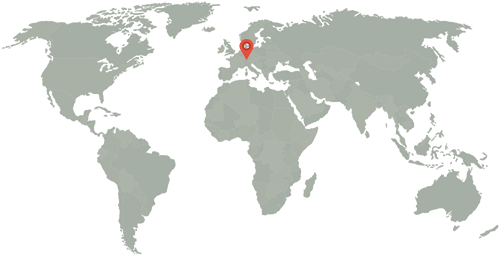
Florence,Italy
©2024 girl in florence..
The Florence Insider
Your guide to travel and experience Florence, Italy
Best time to visit Florence, Italy, and season to go
What’s the best time and season to visit Florence? This is certainly one of the questions I get most often from travelers. And in fact the time of year is a very important aspect to consider when planning a trip.
So I created this seasonal guide to the best time to visit Florence , evaluating the pros and cons of each month of the year . Will it be too hot? Or too crowded? Or too expensive? Here you will find all my tips on the subject . Hope you’ll find it useful!
- I’m local licensed tour guide in Florence, learn more about me and my job !
Average temperature in Florence, Italy
Here is a useful table that shows the average temperature in Florence, Italy, for each month of the year.
As you can see, J anuary is the coldest month in Florence, and J uly and August are the hottest ones. Also keep in mind that fall and winter can be rainy, while summer is very dry with almost no rain. This is not necessarily a good thing, as hot and dry summers are flaming hot.
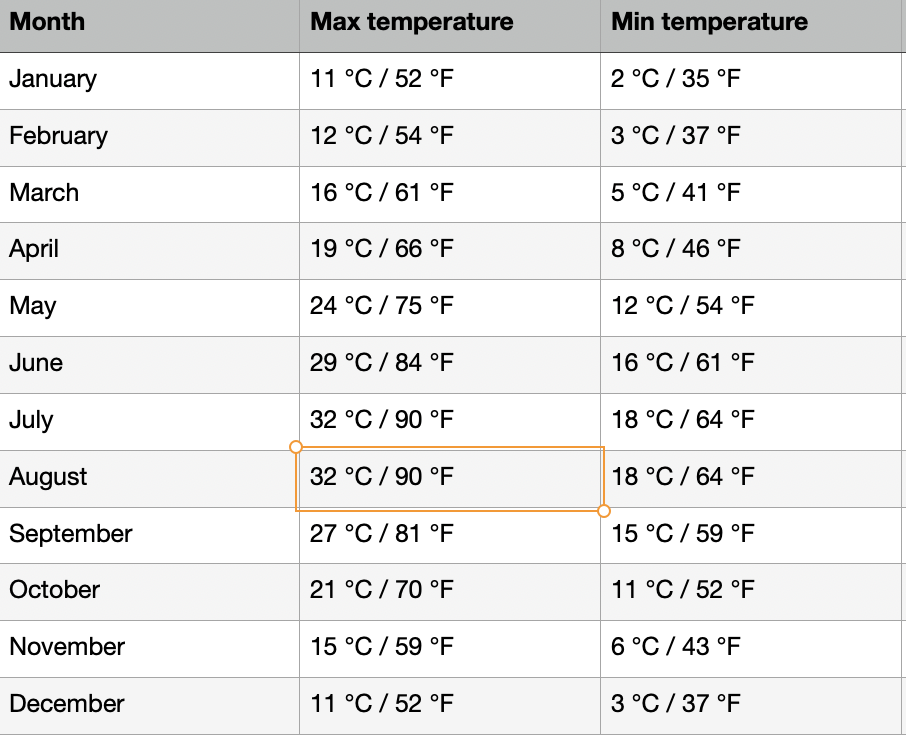
Florence in springtime
Spring is a fantastic time to discover Florence . The city gardens are in bloom, the weather is lovely and there aren’t too many tourists yet. But we must distinguish in at least three periods:
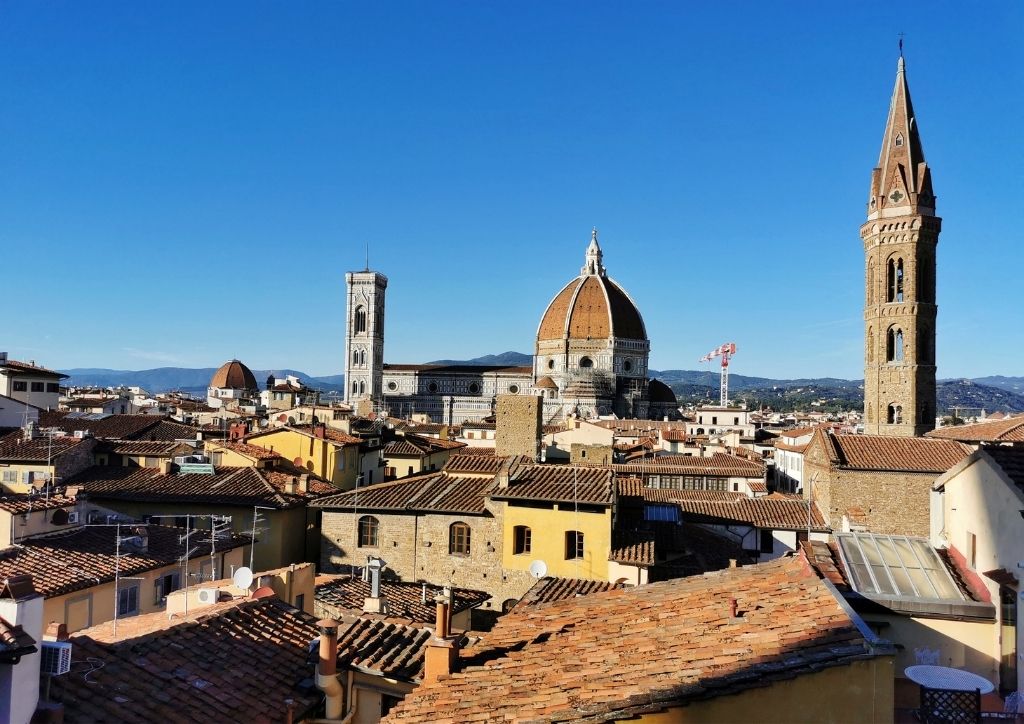
Early spring (March and early April)
Until Easter arrives it is still low season so prices are generally lower. The beginning of the high season depends on when Easter comes each year. If Easter comes late (like in mid-April) probably the prices will start to rise a bit before Easter.
You can generally expect quite a good weather in March and April: warm during sunny days and more chilly at night. However, it could still be cold and there may be a few days of bad weather, especially in March.
Easter and spring holidays
Mid-spring (April and early May) is one of the hottest times of the year, because in addition to Easter there are other national holidays in Italy (May 1st and April 25th) that make Florence very crowded and more expensive than in the previous weeks.
Late spring (May and early June)
The weather is perfect, not too hot yet (hopefully), and with long and sunny days. However, since it is already high season, both prices and the amount of tourists are higher.
This is the ideal time to visit the gardens of Florence !
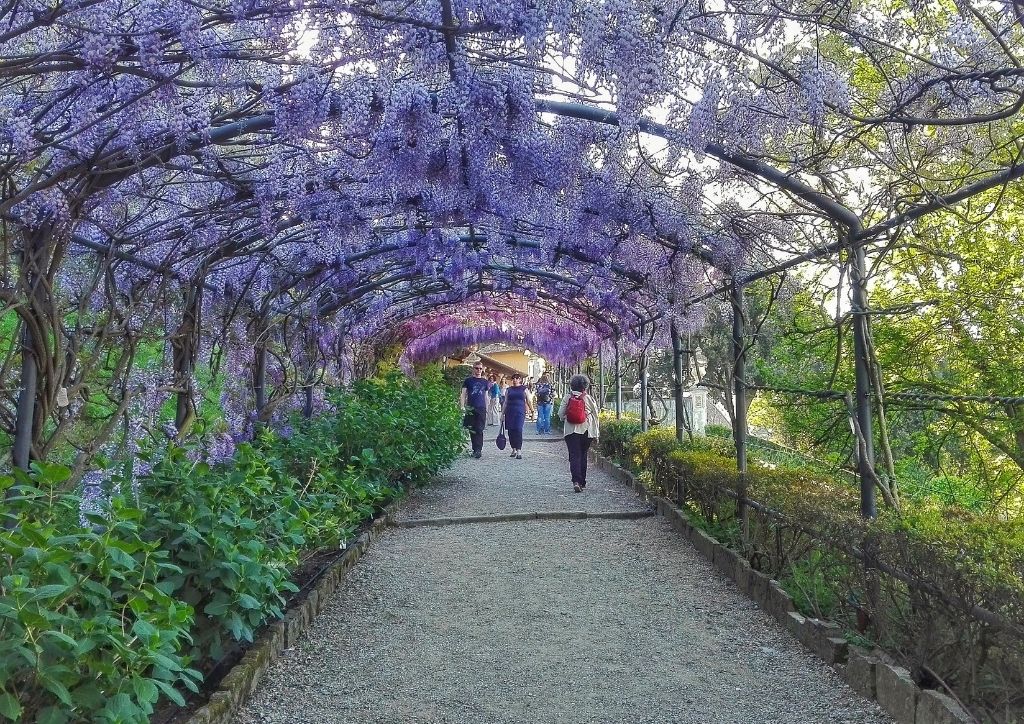
Visiting Florence in summer
Summer is the hottest season, and Florence is definitely one of the muggiest cities of Italy.
Personally, I do not recommend summer, in my opinion it is the worst time to visit Florence, but I understand that sometimes you don’t have other choices. However, the city remains gorgeous, and there is the bonus of the large number of outdoor events such as concerts and historical parades.
- Read also: what to pack for Florence in summer
Florence in July and August
July and August are unbelievably hot months in Florence! Be prepared for temperatures as high as 38-40 ° C (100-104 ° F) and just forget about the rain. Summer is also the busiest time of the year: from June to September there are so many tourists, and booking everything in advance is absolutely necessary . Obviously this is also the most expensive time of the year, especially the months of July and August.
August 15th is a national holiday ( Ferragosto ) and practically every shop and business in Italy is closed that day. But the holiday of Ferragosto is also an opportunity for many Italians to go on vacation , so even during the week of August 15 and the following, many places (restaurants, stores, etc.) could be closed for holidays . However, most tourist businesses remain open and operational.
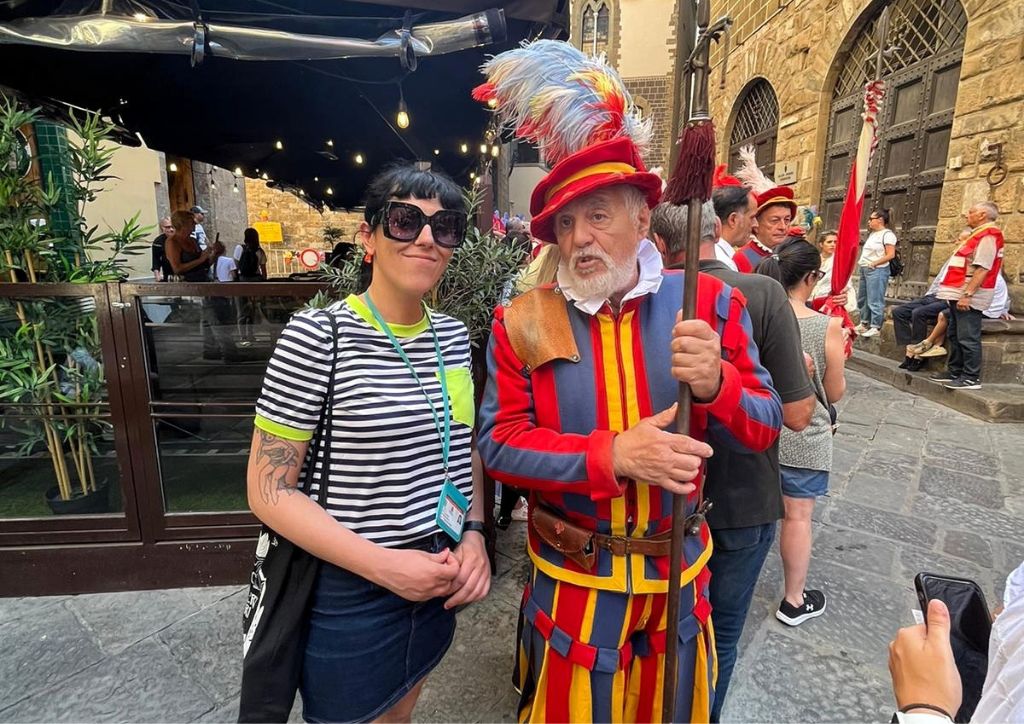
Fall in Florence: October and November have a good weather
Autumn is definitely a good time to visit Florence: summer crowds are now a distant memory and average prices are lower. The climate is still warm until the end of October, while from November it becomes colder and rainier.
Autumn is a great time to hike and explore the Tuscan countryside, with the warm colors of foliage. One of my favorite things to do in fall is truffle hunting in Tuscany .
In case of gloomy weather, here are some ideas about what to do on a rainy day in Florence .
October and November is a perfect time to enjoy the city!
Furthermore, autumn is the best time to visit the vineyards in the countryside, because you can watch and take part to the grape harvest (that usually takes place in late September and early October).
- Check my best tips for accommodation and hotels in Florence !
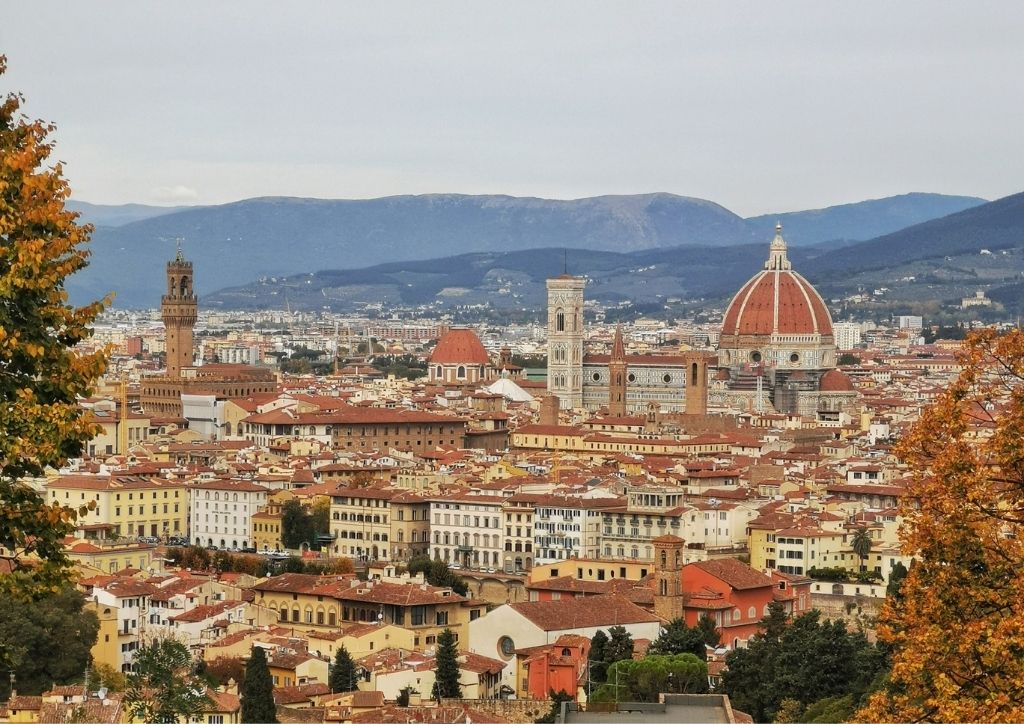
Visiting Florence in winter and Christmas time
This is the coldest season, especially the months of January and February, but the temperature drops below freezing for only a few days a year.
During the Christmas holidays ((which run from 8 December to 6 January) the city is filled with lights, events and Christmas markets, it’s such a beautiful time! But of course in those weeks Florence becomes more expensive and crowded.
After January 6 prices drop and the crowds disappear , at least until the beginning of spring. Therefore the months of January and February are an excellent solution for those who want to save money and experience the city in a more authentic way, without too many tourists.
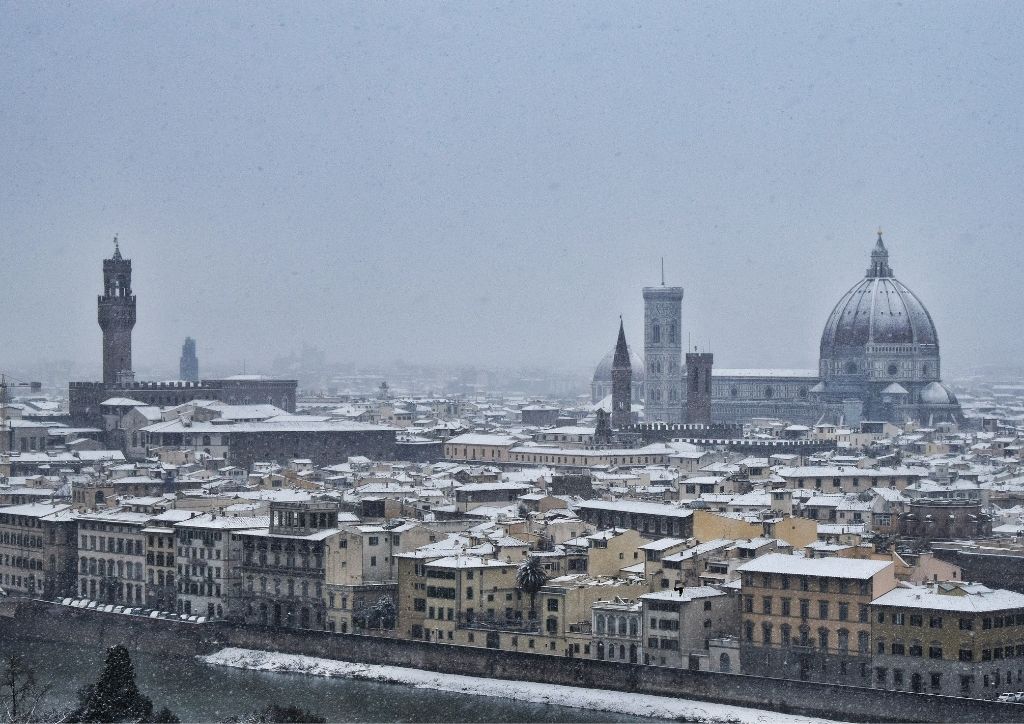
So what’s the best time to visit Florence?
To answer this question clearly: considering the pros and cons , in my opinion the best times to travel to Florence are:
- Early spring (from mid-february to mid-march)
- Late fall (from early October to late November)
Unfortunately, we can’t always choose which season to travel, but Florence remains a wonderful destination every month of the year. The important thing is to be prepared for what awaits us during the trip in terms of weather, prices and seasonal trends.
I hope this post was useful to you in organizing your trip to Florence!
If you need a local licensed tour guide for your trip to Florence , don’t hesitate to get in contact with me!
You might also like:
- Florence travel planner. All the info you may need to organize your trip.
- Florence in 3 days : a flexible itinerary
- All my best tips for visiting Florence .
- How many days to spend in Florence ?
- Top museums to visit in Florence
- What to do in Florence and Tuscany
substack subscription
Demo Description
Subscribe the newsletter!
Tips for traveling Italy, news and updates from Florence, next events in town and more!
This will close in 70 seconds
The Best Time to Visit Florence
Italy › Florence › When To Go Updated: March 24, 2023 By Santorini Dave
- Where to Stay in Florence
When is the best time to visit Florence, Italy?
- Florence Hotel Map
My favorite time to visit Florence is during the shoulder seasons of spring (April to June) and fall (September to October). The weather is typically warm, sunny, and pleasant during these months. For me, it’s an ideal time to explore the city’s renowned landmarks, such as the Duomo, Uffizi Gallery, and Ponte Vecchio, while avoiding the peak tourist crowds and heat of the summer months (July and August).
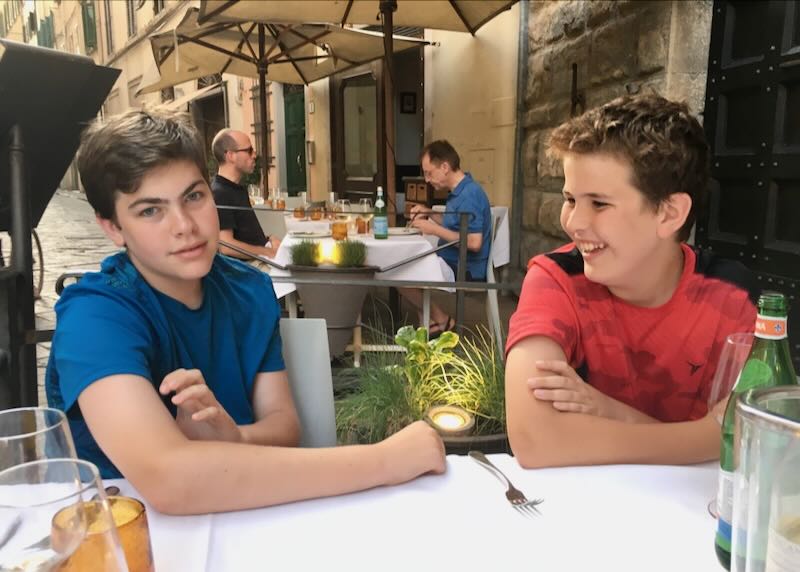
My two sons in Florence during a visit in July – not my favorite time to visit but still pretty great.
Weather : The most pleasant weather in Florence is typically from April to June and September to October. During these months, the temperatures are mild and pleasant, ranging from 60°F (15°C) to 80°F (27°C), with mostly sunny days.
Museums : Florence’s museums, such as the Uffizi Gallery and the Accademia Gallery, can be visited year-round. However, to avoid long lines and crowds, consider visiting during the shoulder seasons (April to June and September to October) or on weekdays when tourist numbers are generally lower.
Shopping : Florence offers great shopping opportunities year-round, especially for leather goods, jewelry, and local crafts. The best shopping deals can be found during the winter and summer sales seasons. In Italy, the winter sales usually start in early January and run through February, while the summer sales typically take place from July to August.
Honeymoon : For a romantic honeymoon, consider visiting Florence during the late spring (April to June) or early fall (September to October). The weather is mild and pleasant, perfect for strolling through charming streets, enjoying outdoor dining, and taking in the iconic sights of the city. These periods are also slightly less crowded than the peak summer months, providing a more intimate experience.
Avoiding crowds : To avoid the largest crowds in Florence, visit during the off-peak season, which typically runs from November to February. During this time, you can expect fewer tourists, shorter lines at popular attractions, and lower prices for accommodations. However, the weather can be cooler and wetter, with temperatures ranging from 40°F (4°C) to 60°F (15°C).
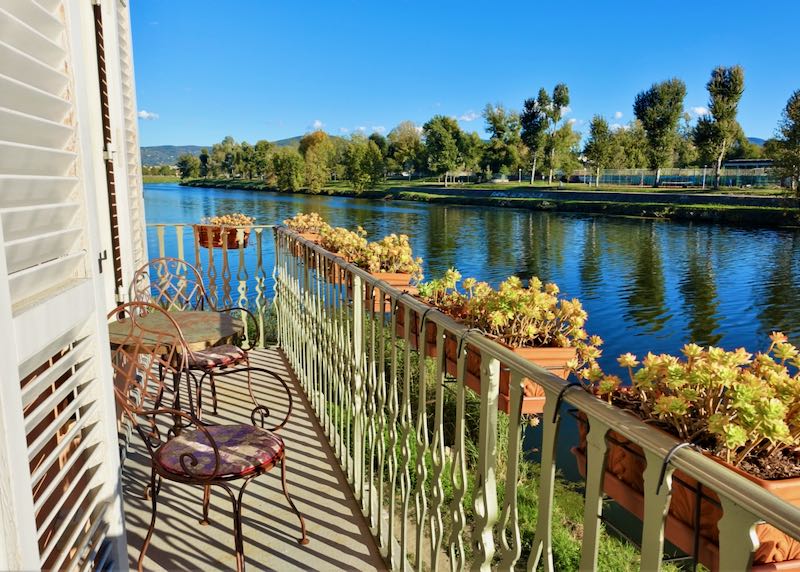
The wonderful Ville Sull’Arno Hotel in Florence.
Florence Travel Seasons
- High Season (mid-May through July and September) : Summer is high tourist season in Florence, with one exception. During the month of August, the majority of Italians take a holiday away from the city, which means the crowds will mostly be tourists then and it may be possible to find some discounted hotel rates. Between mid-May and July, and through the month of September, airfares and accommodation rates are highest, it’s likely to be hot, and crowds will be at their peak.
- Shoulder Season (March through mid-May, except Easter; October and November) : The shoulder season, especially March, April (outside of Easter week), and October, is considered by many to be the best time to visit Florence. This is when the weather is often pleasant and the hordes of tourists either haven’t arrived or are beginning to diminish.
- Low Season (August and December through February, with the exception of Carnival) : The low season in Florence is generally winter, aside from Carnival (usually in February but sometimes in March). During winter expect smaller crowds and bigger discounts on accommodation and airfare. A winter visit means cooler temperatures, but snow is extremely rare – in most cases, the city can be enjoyed comfortably by preparing for fog and rain. Outside of the winter months, August is also considered the low season, because most Italians take their vacations during this month, which means many small hotels, restaurants, and shops close down.
Florence Weather by Month
- Florence Weather in January : The chilliest month in Florence, January tends to bring fog and rain to the city but it’s unlikely to be so chilly that you’ll need a heavy winter coat. Snow is unlikely, with the average high temperature at 12°C and the low at 3°C. Dressing in layers with the final layer a waterproof jacket, along with a hat and gloves, is a good idea if you plan to visit this month, due to an average of 63mm of precipitation falling over 11 days. While days are shorter now, there is still around nine hours of daylight for enjoying the sights, with sunrise at 7:48am and sunset at 4:48pm on January 1. (Average Max Temperature: 12°C. Average Precipitation: 63mm.)
- Florence Weather in February : Things are slowly warming up in February, which also brings slightly less precipitation. While the average high remains at 12°C, the low creeps up a degree to 4°C and there is only 49mm of rainfall on average over 8 days. While about half the month sees gray or foggy days, the other half enjoys more sun. Like last month, pack clothing that can be layered. While it can be chilly, some days may feel warm, so you’ll want to be able to remove an outer layer easily. (Average Max Temperature: 12°C. Average Precipitation: 49mm.)
- Florence Weather in March : Weather continues to warm throughout March, with the average high now climbing several degrees to 15°C and the low at 6°C. While precipitation increases again slightly, it oftentimes appears in the form of mist or fog. The more the month progresses, the sunnier the days are likely to be. Days are getting longer too; after the time change on March 31st, the sun rises just before 7 a.m. and won’t set until 7:40 p.m. Plan to pack as you would for January or February, but you probably won’t need to bundle up as much. You may want to bring a few items for warmer weather too, especially when visiting during the second half of March. (Average Max Temperature: 15°C. Average Precipitation: 69mm.)
- Florence Weather in April : April weather in Florence can be somewhat unpredictable, although it’s likely to be much sunnier than it is wet. It will be quite a bit warmer now with the high temperature at around 19°C, though the increase in rain means that you’ll still need clothing that can be worn in layers, along with a waterproof jacket and sunglasses. It may be a good idea to prepare for every type of weather, with April temperatures possibly climbing as high as 25°C, or as low as freezing. (Average Max Temperature: 19°C. Average Precipitation: 78mm.)
- Florence in May : May is a fabulous time to be in Florence, temperatures really rising; a full five degrees over last month. On most days it’s likely to feel like summer, with many more bright sunny days than gray ones, and a bit less rain than April sees – a little over 70mm on average. As it can still get quite cool in the evening with the low dipping to 13°C, you’ll need a jacket or sweater for evenings. Pack a variety of clothing for both cooler and warmer weather, like t-shirts, shorts, and dresses along with long pants and long-sleeved shirts and you’ll be prepared for whatever weather hits. (Average Max Temperature: 24°C. Average Precipitation: 72mm.)
- Florence Weather in June : Summer is in full swing now and it can get quite warm in Florence; the average high temperature is now at 28°C. On occasion it can climb into the low 30s, so if you plan to visit this month, packing should be all about keeping stylishly cool. Only 50mm of precipitation falls over 8 days in June, so rain is unlikely to put a damper on your plans. Bring plenty of sunscreen, hats, and a pair of sunglasses along with lightweight clothing. With the low temperature at 17°C, you may not even need a sweater. (Average Max Temperature: 28°C. Average Precipitation: 50mm.)
- Florence Weather in July : July and August are the hottest months of the year in Florence. Afternoons frequently reach maximum temperatures of 31°C or higher, and there are few clouds to block the rays of the sun. Rain is few and far between, with only 31mm of precipitation this month. Most comes in the form of thunderstorms that leave as quickly as they arrive. Like last month, pack lightweight clothing and bring items for sun protection. (Average Max Temperature: 31°C. Average Precipitation: 31mm.)
- Florence Weather in August : It’s just as hot or slightly hotter in August, the month that most Florentines traveling elsewhere to avoid the scorching heat. The afternoon high averages 31°C and occasionally rises to 40°C. Many businesses, including some shops and restaurants, close down for at least some of August, and visitors might find the streets to be less crowded. You’ll need the same attire now that you would for July, focusing on clothing for keeping cool and protection from the searing sun. (Average Max Temperature: 31°C. Average Precipitation: 48mm.)
- Florence Weather in September : Early September continues the warm summer weather, with temperatures beginning to cool just slightly. The average high temperature now drops to 27°C, and the chance of rainfall increases a bit, especially later in the month, though you’re likely to enjoy plenty of sunshine on most days. Low temps dip to 16°C; if you plan to go out late at night, it may be cool. Pack a range of clothing, primarily items for warm weather during the day, along with a jacket or sweater for early mornings and evenings. (Average Max Temperature: 27°C. Average Precipitation: 76mm.)
- Florence Weather in October : Fall has arrived, with cooler temperatures and thinner crowds. October is a great month to visit Florence, as it is still fairly warm earlier in the month, and parks and forests are transformed by autumn’s brilliant foliage. The average high temperature dips a full six degrees down to 21°C, and precipitation increases quite a bit to 96mm over 12 days; pack a waterproof jacket and/or umbrella, as well as pair of sunglasses to be prepared for both sun and rain. (Average Max Temperature: 21°C. Average Precipitation: 96mm.)
- Florence Weather in November : November sees the return of gray, rainy days to Florence, with average precipitation rising to 102mm over 15 days, making this the wettest month of the year. The average high is a crisp 15°C – perfect sweater weather. (Though you’ll likely need a rain jacket on top of it.) Nights can get quite cool too, with the low now a chilly 7°C. If you visit Florence this month be sure to pack waterproof items for cooler weather. Having a waterproof coat and boots can make exploring the city a lot more comfortable. (Average Max Temperature: 15°C. Average Precipitation: 102mm.)
- Florence Weather in December : It continues to get colder in December, with the average high falling another four degrees to 11°C and the low at a brisk 4°C. The chance for rain decreases quite a bit to 72mm of precipitation over 13 days, and the odds of snow are extremely rare right in the city. Pack heavier winter gear now, including a warm coat, hat, gloves, and waterproof boots. Plan your itinerary accordingly for shorter days – there are fewer than nine of daylight on Winter Solstice. (Average Max Temperature: 11°C. Average Precipitation: 72mm.)
Florence Events and Festivals
Florence in january.
- New Year’s Day – January 1 is a national holiday celebrated around the country, bringing closures to many attractions, including historic sites and museums as well as some restaurants and shops, though a number of eateries will be open. For the locals, it’s a day to recover from the previous night’s festivities or enjoy get-togethers with family and friends, exchanging New Year’s greetings and dining on traditional foods like raisins, lentils, and cotechino.
- Winter Park – While snow is unlikely to fall naturally in Florence you can still enjoy it at Winter Park throughout the month of January. It includes snow tubing and ice skating along with hot cocoa and roasted chestnuts along the Arno River.
- Winter Sales – One of the biggest events in January is the Winter Sales. They start here every year on January 5th, the eve of Epiphany/La Befana and run for 59 days. Prices are discounted everywhere from big-name fashion designer stores to small boutiques and outlets.
- Epiphany/La Befana – January 6, The Epiphany, is a national holiday marking the 12th day of Christmas and commemorating the day the Three Wise Men arrived with gifts for Jesus at the manger. Locals throughout the country exchange gifts, and in Florence the traditional Procession of the Magic takes place, led by the Three Wise Men on horseback wearing lavish costumes. It marches to Piazza Duomo, where a reading of the story of the Magi takes place followed by a performance by flag throwers.
Florence in February
- Carnival – One of the year’s biggest events, Carnival usually occurs in February, although it can occur any time between late January and early April. While there are festivities throughout the country, Florence is especially renowned for its Children’s Carnival which takes place in Borgo Ognissanti.
- Valentine’s Day – February 14, St. Valentine’s Day, is a relatively new celebration in Italy, but as Florence is such a romantic city, some establishments here have begun to take advantage of that by offering special dinners, flowers, and gifts.
- Chocolate Fair – For 10 days in early to mid-February, this artisanal fair takes place at Piazza Santa Croce. Expect lots of chocolate tasting, as well as a cooking show and a wide range of events based on everyone’s favorite sweet treat.
Florence in March
- Festa della Donna – Women’s Day is celebrated annually on March 8 to honor women, in Florence, across Italy, and beyond. It began following a tragedy in the U.S., but today many Italians use it as an excuse to give small bouquets of mimosa flowers which bloom this time of year. The city of Florence, and other cities, grant free entrance to women for the city and state museums. Some restaurants may also offer special meals for the day.
- Festa di San Giuseppe – Father’s Day is celebrated on March 19 in Italy. It is similar to Father’s Day in many other countries, but it includes the consumption of zeppole, a food that’s similar to a doughnut.
- Feast of the Annunciation – This is the day in which the Catholic Church considered to be the beginning of a “new” year, a tradition that was followed through until 1749, well after the Gregorian calendar went into effect in the late 16th-century. Celebrations will be held throughout the city, with the Basilica della Santissima Annunziata offering the most elaborate.
Florence in April
- Half Marathon Firenze – This traditional Florentine non-competitive half-marathon race mixes sport and culture, while providing a unique artistic and cultural backdrop. It’s hosted on a Sunday in early to mid-April.
- Holy Week and Easter – Celebrated from Palm Sunday to Easter Sunday throughout Italy, Holy Week sometimes falls in late March, but most often it occurs in early to mid-April. There will be Easter mass at churches throughout the city and the entire country. In Florence, the highlight is the “Explosion of the Cart” that takes place on Easter Sunday morning in Piazza del Duomo. This is when the cart, an elaborate 17th-century wagon that stands two- to three- stories high, pulled by a pair of oxen decorated in garlands and jam-packed with firework is lit, providing a grand spectacle.
- Liberation Day – Liberation Day, April 25, is a national holiday that will bring many business closures and limited hours to some attractions like museums, although many restaurants will be open. There may be a military demonstration or laying of wreaths at various monuments, and there is usually a variety of special events and museum openings that run late into the night.
Florence in May
- Labor Day – May 1 is a national holiday throughout Italy, including Florence. Labour Day brings closures to businesses and attractions like museums, including many shops and restaurants. Special events and concerts are sometimes hosted and there’s usually a colorful flag-throwing contest in Piazza della Signoria.
- Iris Garden – The Iris Garden by Piazzale Michelangelo at Viale dei Colli will be open throughout the month, with gorgeous irises in bloom. Just below, roses will be bursting in the rose garden that has over 350 different varieties as well.
- Artigianato e Palazzo – This unique artisan crafts fair is held over four days in the gardens of the Palazzo Corsini, which isn’t typically open to the public. Visitors can watch artisans create works by hand in workshops that are set up in orangeries and the garden.
Florence in June
- Republic Day – Celebrated on June 2 each year, this annual Italian national holiday marks the day Italy became a Republic in 1946, following the Second World War and the fall of Fascism. While it is somewhat like Independence Day in other nations, there are no fireworks, but in Florence there is a parade, flag ceremony, and singing at the Piazza della Signoria.
- Tuscan Sun Festival – Formerly hosted in Cortona, this popular summer arts festival now takes place in Florence annually in June, bringing well-known musicians and artists together for a week of art, music, wine, cuisine, and wellness. There are art exhibitions, cooking demos, and pre-concert receptions that include locally-made products and Tuscan wine.
- San Giovanni Feast Day – Celebrated on June 24 each year, in Florence this day brings a medieval tournament that’s followed by drinking, feasting, and music. Along the Arno River there will be rowboats that carry lit candles followed by fireworks.
- Saints Peter and Paul Day – A national religious holiday, this day is celebrated on June 29 each year throughout the country honoring two of Catholicism’s most important saints. The general population enjoys the day off and most businesses will be closed.
Florence in July
- Florence Dance Festival – Held throughout July, the Florence Dance Festival features important international dance companies inspired by great historical figures, hosted at the historical Teatro Verdi and the Teatro Romano.
- Florence Folks Festival – For four days in Late July, this popular urban event features free concerts, including local and international music, along with lots of food and drink.
- Festival of the Unicorn – This unique event that takes place in late July every year includes a Fantasy Festival with more than 100 shows daily, eight themed areas, comics, concerts, cosplay, a medieval market, themed venues, role-playing games, an Elf parade, and more.
Florence in August
- Feast of San Lorenzo – This annual event takes place at the Piazza San Lorenzo on August 10, a time when locals and visitors are given lasagna and watermelon following a historical parade through the city center.
- Ferragosto – August 15 marks the beginning of the summer holiday for most Italians. It’s also a national religious holiday of Assumption, celebrating the Assumption of the Virgin Mary into heaven. While there may be some closures, most museums and cultural sites are open.
Florence in September
- Festival of the Lanterns – The Festival of the Lanterns is hosted annually on September 7. One of the most traditional and largest festivals in Florence, it features a fair, as well as boat and lantern parades.
- Nativity of Virgin Mary – The cornerstone of the present Duomo, Santa Maria del Fiore, was laid on September 8, 1296, the feast of the Nativity of the Virgin Mary. In her honor, the terrace around the base of the cupola opens to visitors, can walk around freely and enjoy the view of the city’s rooftops and surrounding hills.
- Carro Matto/Crazy Cart – Every year on the last Saturday of September, downtown Florence comes to life with one of autumn’s most popular events, Carro Matto, which translates to “crazy cart.” A large wooden wagon is loaded up with a pyramid construction made up of round glass wine bottles. It’s pulled by oxen from the Piazza del Duomo to the Palagio di Parte Guelfa and back, before receiving a blessing from the city’s religious leaders. It ends with a performance of the Florentine Republic historical parade and flag throwing.
- The Grape Festival of Impruneta – Held in the pretty village of Impruneta, just minutes from the city of Florence, the Grape Festival takes place on the last Sunday of September each year in the main square, the Piazza Buondelmonti. Four neighborhoods challenge each other for the best float inspired by wine, with the event concluded with a parade, music, and dancing performances.
Florence in October
- Festa di Santa Reparata – On October 8, this festival celebrates the co-patron saints Santa Reparata and San Giovanni Battista. A procession takes place with participants donning medieval dress, traveling from Piazza di Parte Guelfa to the saint’s crypt at the cathedral.
- Festival Delle Mongolfiere – For two consecutive weekends in mid-October, this festival is all about hot air balloons, kites, food and fun. It brings the opportunity to fly high above the city in a hot air balloon, along with music and other festivities.
- Florence Biennale – Mid to late-October in odd-numbered years, venues around Florence will bring contemporary artists in music, film, visual arts and performances for 10 days of events and exhibitions.
- Halloween – While Halloween isn’t traditionally celebrated in Florence, or the rest of Italy, the holiday has managed to make its way into bars, clubs and other venues which host parties, costume contests and the like.
Florence in November
- All Saints Day – This national holiday falls on November 1. Locals throughout the country, including Florentines, often visit the graves of loved ones who’ve passed.
- Winter Park – Winter Park opens along the Arno River in November and will remain open through February for ice skating, winter games, food, and other fun.
- Firenze Marathon – Taking place on the last Sunday in November, this marathon crosses the city center, passing some of the most famous sights in Florence. The second most popular national race after the Roma Marathon, it includes a family marathon so that people of all ages can join in.
Florence in December
- Feast of the Immaculate Conception – This national and religious holiday falls on December 8 every year. While schools and public offices will be closed, most restaurants and shops will be open as this day is viewed as the official start to the holiday shopping season. An art and food fair is usually held in Florence.
- Christmas Eve/Christmas Day/Santo Stefano – On Christmas Eve, Florentines are usually enjoying Christmas dinner with their families before going to Midnight Mass at the local church. Families and friends come together on Christmas Day for a large day-long feast. Then on December 26 the national holiday of Santo Stefano is celebrated, giving Italians another day off. While most places are closed on Christmas Day, tourists can usually find some bars and ethnic restaurants open.
- New Year’s Eve – One of the top cities in Italy to celebrate New Year’s Eve, there will be numerous events and free entertainment organized in the main squares, including live music and fireworks displays.
About Santorini Dave

You are using an outdated browser. Please upgrade your browser to improve your experience.
Fall in love with Florence!
Visit Florence Newsletter
Ask the Tuscany Experts on our Forum
- Book your Hotel
- Rentals by Owners
- Museums & Tours
Get the lowest rate for your Hotel in Florence through Booking.com
Get the best deal direct from the owners on FlorenceAccommodation.com
Book your unique Florentine Experience
Book your Tour
Book your Tickets ahead & Skip the line!
Buy Museum Tickets
- Tourist Info
- Climate and Weather
Weather in Florence: the Best Time to Go to Florence
Average temperatures throughout the year
Weather in Florence and Tuscany is generally pretty mild but Florence's location in a valley makes temperatures vary from other areas in Tuscany.

The warmest months are generally July and August , while June and September are both nice with warm weather without it being too hot. Keep in mind that in August many Italians escape the heat of the city: outside of the historical center, a large number of businesses including shops and restaurants close down for at least two weeks if not the entire month as local shop owners take some vacation off. This tradition is changing and most shops in the center will be open in August.
The coolest months are December and January , with January being a bit cooler.
November is the month with the most precipitation on average but October, December, March and April also generally have a good amount of rain. Make sure to dress in layers!
What are the best months to visit Florence?
Visiting tuscany.
Don't forget to check out the best time to visit Tuscany , too!
Considering the weather, we would say Florence's (and Tuscany's) best travel months (also its busiest and most expensive) are April , May , June , September , and October . These months combine the convenience of peak season with pleasant weather .
The most grueling thing about travel in Florence is the summer heat in July and August , when temperatures hit the high 80s and 90s.
We consider t he best time to visit Florence is between May and September when warm weather ushers in art and music festivals , open-air dining and the kind of Italian lifestyle you dream of experiencing..... but there are also advantages to visiting in the mid or low season so make sure to read those here .

Related Sections
- Florence Weather
Top Experiences in Florence

Author: Lourdes Flores
I'm from California but have called Florence my home for over a decade. I love to explore Italy; it is a lot of fun to try to see everything like I'm seeing it for the first time, keeping you, our readers, always in mind. I enjoy sharing what I know and helping others as they make their travel plans for Tuscany through our Forum . If you have itinerary-related questions, please post them there!
Questions? The right place to ask is our Forum *
* Questions posted on Comments above will no longer receive replies: please ask on our Forum !
Our Travel Guides
CHAPTER ONE Russia in the Age of Peter the Great By LINDSEY HUGHES Yale University Press Read the Review I
I. RUSSIA IN 1672
Russian Bethlehem, Kolomenskoe, You delivered Peter to the light! You the start and source of all our joy, Where Russia's greatness first burned clear and bright.
Peter Alekseevich Romanov was born in or near Moscow at around one in the morning on Thursday 30 May 1672. A patron saint's `measuring' icon of the apostle Peter made shortly after his birth showed the infant to be nineteen and a quarter inches long. The future emperor's exceptional height was clearly prefigured, but the time and place of his birth, like much else in his life, have been the subject of controversy. For want of concrete evidence locating it elsewhere, the event may be placed in the Kremlin in Moscow, but legends persist, as in the verse by the poet Sumarokov above, that Peter was born in the village of Kolomenskoe to the south of Moscow, where his father had built a wooden palace, or even in Preobrazhenskoe, which later became Peter's favourite retreat and the base for his new guards regiments, formed from the `play' troops of his boyhood. As for the date, most sources accept 30 May, as did Peter himself by honouring St Isaac of Dalmatia, whose feast falls on that day. But at least one record gives 29 May, following the old Russian practice of starting the new day not at midnight but at dawn.4 In those countries which had adopted the Gregorian calendar (which Russia did only in 1918) the date was ten days ahead of those which still followed the older, Julian calendar, and 30 May fell on 9 June. Contemporary Russian chroniclers (using not arabic numerals but Cyrillic letters with numerical equivalents) recorded the year of Peter's birth as not 1672 but 7180, following the Byzantine practice of numbering years from the notional creation of the world in 5509 BC. The year 7181 began on 1 September 1672, which, following the usage of Constantinople, marked the start of the Muscovite new year.
These peculiarities of time and record keeping provide a foretaste of the different customs observed in the Russia where Peter was born and the West into which he was later to forge a `window'. On the eve of the new century, in December 1699, Peter himself decreed that official records would henceforth adopt calendar years from the birth of Christ in the manner of `many European Christian nations'. When he died on 28 January 1725, there were no arguments about how the date should be recorded. It is appropriate that questions of time and chronology should arise at the outset of Peter's life, for he was to be obsessed with time and its passing, believing that `wasted time, like death, cannot be reversed'. Traditionalists denounced the tsar for tampering with `God's time' by changing the calendar. There were even rumours that the Peter who was to adopt the title `emperor' in 1721 was not the Peter who had been born in 1672. We shall return to these matters later, but let us take a closer look at the Russia into which Peter was born.
Peter's parents had been married for less than eighteen months when he arrived. On 22 January 1671 nineteen-year-old Natalia Kirillovna Naryshkina married forty-two-year-old Tsar Alexis (Aleksei) Mikhailovich, whose first wife Maria Miloslavskaia had died in 1669 at the age of forty-three after giving birth to her thirteenth child, a girl who did not survive. Given a more robust set of male half-siblings, Peter might never have come to the throne at all. His father's first marriage produced five sons, but in 1672 only two were still alive. The heir apparent, Fedor, born in 1661, had delicate health, while Ivan, born in 1666, was mentally and physically handicapped. There were six surviving half-sisters: Evdokia, Marfa, Sophia, Ekaterina, Maria, and Feodosia, ranging in age from twenty-two to ten. They were not regarded as direct contenders for power: no woman had ever occupied the Muscovite throne in her own right, and the policy of keeping the royal princesses unmarried minimized the complications of power-seeking in-laws and inconvenient offspring through the female line. The practice of keeping well-born women in virtual seclusion also meant that they were unknown to the public.
When Tsar Alexis died at the age of forty-seven in January 1676, Fedor succeeded him without the formal appointment of a regent, even though he was only fourteen. (Rumours of attempts to place three-year-old Peter on the throne in his stead may be discounted.) Twice in the next six years Peter narrowly escaped being pushed further down the ladder of succession. Fedor's first wife, Agafia Grushetskaia, and her newborn son Il'ia died in July 1681. His second wife, Marfa Matveevna Apraksina, was left a widow after only two months of marriage, by Fedor's death in April 1682. Rumours that she might be pregnant proved unfounded. But this is to leap ahead. In 1672 there was every prospect of Tsar Alexis continuing to rule for many years, and a fair chance, given infant mortality rates, that Peter would not survive for long. Modern readers will treat with scepticism the intriguing story recorded by one of Peter's early biographers to the effect that the royal tutor and court poet Simeon Polotsky predicted Peter's rule and future greatness by the stars on the supposed day of his conception, 11 August 1671.
Many pages of print have been devoted to Peter's childhood and adolescence. His first two decades will be considered here only briefly, in order to give a context for the changes which he later forced upon Russia--the main subject of this book. I will begin by dispelling a few misconceptions, such as that Peter's early environment was closed and stultifying, dominated solely by Orthodox ritual and concepts. In fact, seventeenth-century Romanov childrearing practices did not exclude `modern' elements. For example, Peter's interest in military affairs was stimulated in the nursery, where he, like his elder brothers before him, played with toy soldiers, cannon, bows and arrows, and drums. Military affairs were the right and proper concern of a tsar almost from the cradle. His father had gone to war with his troops, as Peter was well aware and was proud to recall in later life. On the other hand, Peter's prowess as a soldier, virtually from the cradle (a contemporary compared him to the young Hercules, who strangled serpents), has been greatly exaggerated. The myth that Peter was already a cadet at the age of three has been refuted: in fact, at that age, Peter still had a wet-nurse. Toy weapons were supplemented by spades, hammers, and masons' tools, which no doubt fostered Peter's love of mechanical crafts. The fiercest of Peter's boyhood passions--his love of ships and the sea--is at first sight harder to explain. Why should a boy raised in a virtually land-locked country with no tradition of seafaring have developed such a passion? It is even said that as a boy Peter had a dread of water. But Russia's naval inexperience should not be exaggerated. Most major Russian towns were situated on rivers, which small craft plied. Russians may not have been expert sailors on the high seas, but they knew how to navigate inland waters, and Russian peasant navigators had long sailed the northern coastline. Peter did not see the open sea until he was twenty-one, but there was no lack of stimuli to the imagination closer to hand: toy boats, maps and engravings, and, what he himself identified as the spark which lit the flame, the old English sailing dinghy, the `grandfather of the Russian fleet', which he discovered in the outhouse of a country estate. The fact that it should have found its way to Moscow is not so surprising when one considers that English sea-going vessels had been docking on the White Sea since the 1550s, and that Tsar Alexis had commissioned Dutch shipwrights to build a small fleet on the Caspian Sea in the 1660s.
In some respects, however, Peter's introduction to the wider world actually lagged behind that of his half-siblings. His brothers Fedor and Alexis (who died in 1670), and even his half-sister Sophia, were taught by the Polish-educated monk Simeon Polotsky, who gave instruction in Latin, Polish, versification, and other elements of the classical syllabus. Polotsky died in 1680, before he had the chance, had it been offered, to tutor Peter. His protege, Silvester Medvedev, was at daggers drawn with the conservative patriarch, Joachim, who, as adviser to Peter's mother, would scarcely have recommended a suspect `Latinizer' as the tsarevich's tutor. Peter thus received indifferent tuition from Russians seconded from government chancelleries; they included Nikita Zotov and Afanasy Nesterov, an official in the Armoury, whose names first appear in records as teachers round about 1683. Not only did Peter's education lack scholarly content; it also seems to have been deficient in basic discipline. His prose style, spelling, and handwriting bore signs of lax methods for the rest of his life. It should be added that there was no question of Peter receiving his education from a Muscovite university graduate or even from the product of a local grammar school or its equivalent. There were no universities in Muscovite Russia and no public schools, apart from some training establishments for chancellery staff in the Kremlin. In fact, clerks ( d'iaki and pod'iachie ) and clerics were the only two orders of Muscovite society who were normally literate, many parish priests being only barely so.
The inadequacies of Peter's primary education were later offset by practical skills learned from foreigners, whom he was able to encounter in Moscow thanks to the policies of his predecessors. Foreigner-specialists first started arriving in Muscovy in significant numbers during the reign of Ivan IV (1533-84). Their numbers increased when Peter's grandfather, Tsar Michael (1613-45), reorganized certain Russian infantry regiments along foreign lines. In 1652 Tsar Alexis set aside a separate area of Moscow called the `New Foreign' or `German' Quarter to accommodate military, commercial, and diplomatic personnel. It was here that Peter encountered officers such as Patrick Gordon, Franz Lefort, and Franz Timmerman, his teachers and companions in the 1680s and 1690s. Residents of the Foreign Quarter also made their mark on Russian elite culture. From the 1650s several foreign painters were employed in the royal Armoury workshops. Alexis is the first Russian ruler of whom we have a reliable likeness, his daughter Sophia the first Russian woman to be the subject of secular portraiture. It was the Foreign Quarter which in 1672 supplied the director and actors for Russia's first theatrical performance. Unlike portraiture, however, which quickly became more widespread, theatricals were discontinued after Alexis's death. During Sophia's regency (1682-9) Huguenots were offered sanctuary in Russia, Jesuits were admitted to serve Moscow's foreign Catholic parish, and invitations were issued to foreign industrialists and craftsmen. In the 1670s and 1680s foreigners were no longer a rarity on the streets of Moscow, and were also well represented in commercial towns on the route from the White Sea port of Archangel.
Of course, Moscow was not the whole of Russia, any more than a few relatively outward-looking individuals in the Kremlin were representative of Moscow society as a whole. Most Muscovites, from the conservative boyars who rubbed shoulders with them to the peasants who rarely encountered one, regarded foreigners as dangerous heretics, and viewed foreign `novelties' and fashions with intense suspicion and even terror. During the reign of Peter's immediate predecessors, foreigners were still in Russia on sufferance, tolerated as a necessary evil. The building of the new Foreign Quarter in 1652 was actually an attempt to concentrate foreigners and their churches in a restricted locality, away from the city centre, where they had lived previously. Patriarch Joachim urged that mercenaries, the most indispensable of foreign personnel, be expelled, and non-Orthodox churches demolished. Russian culture was prevented from falling further under foreign influence by strict controls. For example, publishing and printing remained firmly in the hands of the Church. It is a striking statistic that in the whole of the seventeenth century fewer than ten secular titles came off Muscovite presses, which were devoted mainly to the production of liturgical and devotional texts. There were no Russian printed news-sheets, journals or almanacs; no plays, poetry or philosophy in print, although this lack was partly compensated by popular literature in manuscript, a flourishing oral tradition, news-sheets from abroad (albeit restricted to the use of personnel in the Foreign Office), and foreign books in the libraries of a few leading nobles and clerics. Presses in Kiev, Chernigov, Vilna, and other centres of Orthodoxy supplemented the meagre output of Moscow printers. Russians were still clearly differentiated from Western Europeans by their dress, although a number were tempted by Polish influence to don Western fashions in private. According to Tsar Alexis's decree of 1675, `Courtiers are forbidden to adopt foreign, German ( inozemskikh i nemetskikh ) and other customs, to cut the hair on their heads and to wear robes, tunics and hats of foreign design, and they are to forbid their servants to do so.'
The `courtiers' to whom this warning was addressed formed the upper echelons of Russia's service class. Sometimes loosely referred to as `boyars', roughly the equivalent of the Western aristocracy, they belonged to noble clans residing in and around Moscow. The upper crust were the `men of the council' ( dumnye liudi ), the so-called boyar duma, which in the seventeenth century varied in number from 28 to 153 members. Those in the top rank were the boyars proper ( boiare ), next the `lords in waiting' ( okol'nichie ), followed by a smaller group dubbed `gentlemen of the council' ( dumnye dvoriane ), and a handful of `clerks of the council' ( dumnye d'iaki ). All enjoyed the privilege of attending and advising the tsar. Membership of the two top groups was largely hereditary. Unless there were contrary indicators (e.g., serious incapacity or disgrace) men from leading families generally became boyars in order of seniority within their clan. Their numbers were swelled by royal in-laws (marrying a daughter to the tsar or one of his sons usually boosted a family's fortunes) and by a handful of men of lower status who were raised by royal favour. The council's participation in decision making is indicated by the formula for ratifying edicts: `the tsar has decreed and the boyars have affirmed' ( tsar' ukazal i boiare prigovorili ). Nobles immediately below the `men of the council' (often younger aspirants to the grade) bore the title `table attendant' ( stol'nik ), a reference to duties which they had once performed and in some cases still did. Below them were `attendants' ( striapchie ), Moscow nobles ( dvoriane moskovskie ), and `junior attendants' ( zhil'tsy ). In peacetime Moscow nobles performed a variety of chancellery and ceremonial duties. In wartime they went on campaign as cavalry officers. On duty, be it military or civil, they bore their court ranks: boiarin, okol'nichii, stol'nik and so on; there was no differentiation by office.
In 1672 commissions, appointments, and other placings, such as seating at important banquets, were still in theory governed by the code of precedence, or `place' system ( mestnichestvo ), which determined an individual's position in the hierarchy of command by calculations based on his own and his clan's service record and his seniority within his clan. It was considered a great dishonour to be placed below someone who, regardless of ability, was deemed to merit a lower `place'. Such an insult gave grounds for an appeal to the tsar. Increasingly, mestnichestvo was suspended in order to allow the Crown a freer hand in appointing officers. For some campaigns it was ordered that military rolls be drawn up `without places' ( bez mest ).
With the exception of members of the elite sent to serve as provincial governors ( voevody ), outside Moscow the ruler relied on a larger group of the `middle servicemen', provincial gentry ( gorodovye dvoriane ), and `junior servicemen' ( deti boairskie , literally and misleadingly `children of boyars') to perform policing duties and swell the ranks of the army in wartime. All the categories described above, it should be repeated, were counted among the elite and enjoyed certain privileges, the first of which was exemption from tax and labour burdens ( tiaglo ). The second was the right to land and serfs. Most of the Moscow elite owned both inherited estates ( votchiny ) and service lands ( pomest'ia ), the latter, in theory, granted and held on condition of service, but increasingly passed from generation to generation. The peasants living on both votchina and pomest'e holdings were serfs, the property of their landlords, who could freely exploit their labour (in the form of agricultural work and other duties) and collect dues (in money and kind). It should be noted, however, that nobles were not automatically supplied with serfs. Some of the top families owned tens of thousands of peasants distributed over dozens of estates, whereas many in the provincial deti boiarskie category owned only one or two peasant households, and in some cases worked their own plots. The Muscovite Crown also deployed non-noble servicemen ( sluzhilye liudi po priboru ). Men in this category were subject to a service, not a tax requirement, but they could not own serfs. They included the strel'tsy (`musketeers'), who formed army units in wartime and did escort and guard duty in peacetime, carrying on small businesses and trades when off duty; artillerymen ( pushkari ), and postal drivers ( iamshchiki ). Civilian personnel in the non-noble service category included secretaries and clerks ( d'iaki, pod'iachie ), the backbone personnel of the government chancelleries.
Most of the non-noble residents of Russia's towns were bound to their communities by tax obligations, apart from a handful of chief merchants ( gosti ), who dealt in foreign trade. Including merchants of the second and third grades ( gostinnye and sukonnye sotni ) and the mass of clerks, artisans, and traders, or `men of the posad ' ( posadskie liudi ), the total registered male urban population in the 1670s has been estimated at 185,000. In addition, substantial numbers of peasants resided temporarily in towns, which also had shifting populations of foreigners and vagrants, but lacked many of the native professional categories--bankers, scholars, scientists, doctors, schoolteachers, lawyers, and actors--to be found in most contemporary Western European towns of any size.
If townspeople were less numerous and played a less prominent role in Muscovy than they did in Western European countries, the opposite was probably true of church personnel. The Russian clerical estate was divided into `white' (secular) and `black' (monastic) clergy, the former group, consisting of parish priests and deacons, who were obliged to marry. The prelates--the patriarch, metropolitans, bishops, and abbots of monasteries--were drawn from the celibate black clergy, who also formed the monastic rank and file. The ecclesiastical estate enjoyed considerable privileges. Apart from the royal family and the nobles, only they could own serfs (although, strictly speaking, peasants were attached to monasteries and churches, not individuals). They were exempt from taxation. They had access to church courts. But the rural clergy, like the lesser rural gentry, were often barely differentiated in wealth and education from the mass of the population.
This brings us to the masses themselves: rural dwellers engaged in working the land-- pashennye liudi . Roughly 50 per cent were serfs or bonded peasants, living on lands owned by the royal family ( dvortsovye ), nobles ( pomeshchichie ), or the Church ( tserkovnye ). The rest were `State' peasants ( gosudarsvennye ), not bound to any one landlord, but obliged to pay taxes to the State and perform labour duties as required--for example, by providing transport and carrying out forestry and road work. All were eligible for military service, which freed them from obligations to their former owners. Another group of `unfree' persons were slaves, who entered into contracts of bondage with richer people (usually, but not invariably, nobles) in return for loans and support. It has been calculated that as much as 10 per cent of the population may have fallen into this category.
Thus, in 1672, it was possible to divide the great majority of people in Muscovy into those who performed service ( sluzhilye liudi ), those who paid taxes ( tiaglye liudi ), and those who served the Church ( tserkovnye liudi ). They included the tsar's non-Russian subjects: various tribespeople who rendered taxes in the form of tribute ( iasak , often in furs) or did occasional military service. Some of the tsar's subjects fell outside these estates: these included socalled wandering people ( guliashchie liudi ) unattached to any locality or category, who were either incapable of performing service or paying taxes--for example, cripples and `fools in Christ'--or who wilfully escaped obligations--runaway serfs, deserters, and religious dissidents, of which the biggest category were the Old Believers, protesters against Nikon's church reform of the 1650s. A number set up communities in remote localities out of reach of the government. Cossack communities, consisting originally of refugees from the long arm of government, maintained a variety of links with Moscow, being either bound in service, like the registered Cossacks of Ukraine, intermittently loyal, like the Cossacks of the Don, or persistently hostile, like the Host of the Zaporozhian Sich.
This, then, was the Russia into which Peter was born, a country, on the one hand, deeply rooted in tradition and in many ways very distinct from Western Europe, where Russia was still regarded as a `rude and barbarous' kingdom, on the other, increasingly open to the influence of Western people and ideas. In the year 1672 the birth of a Russian prince went more or less unnoticed in the rest of Europe, of which Russia was at best a fringe member. There would have been scarcely any speculation about the new prince's eligibility as a marriage partner, since the Muscovite royal family was known to be uninterested in such foreign involvements, although this had not always been the case. The concept of the European community as `a single, integral system of mutually interdependent states', which came into being after the 1648 Treaty of Westphalia, rested on a Protestant-Catholic balance of power in which Orthodox countries barely figured. But Russia was poised to play an increasingly active role in world affairs. In the reign of Alexis, during the socalled First Northern War (1654-60), it entered the wider sphere of international relations when it was pitted against its old enemies Poland and Sweden. War with Poland began in 1654, as a result of Moscow's provocative acceptance of the allegiance of Ukrainian (Little Russian) Cossacks under their leader Bogdan Khmel'nitsky, who were formerly Polish subjects, and ended in 1667 to Russia's advantage, with Left Bank Ukraine (to the east of the River Dnieper) and Kiev brought under the tsar's rule. But there was no progress during the shorter conflict of 1656-61 with Sweden, which had blocked the way to the Baltic since the 1617 Treaty of Stolbovo removed Moscow's narrow foothold on that sea. At the time Sweden's King Gustav Adolph boasted that Russia could not even launch a rowing boat on to the sea without Sweden's permission. When Peter was born, Russia's only seaport was Archangel, on the White Sea. In the south, Russia and Poland vied for possession and domination of the steppes with the Turks and the Crimean Tatars, who barred Russia from the Black Sea. Direct conflict was usually with the Tatars, who exacted a heavy toll of prisoners and livestock, as well as demanding and receiving annual tribute, known as `gifts'. In 1672 the Turks and the Tatars seized parts of Polish (Right Bank) Ukraine, and threatened incursions across the Dnieper into Muscovite territory. It was this crisis which prompted Tsar Alexis to send envoys all over Europe seeking aid for an anti-Turkish league. In 1676 his son Fedor found himself at war with the Turks and the Tatars. After losing the fort at Chigirin on the Dnieper, and fearing a Turkish attack on Kiev, Moscow made an uneasy twenty-year truce with the Tatars at Bakhchisarai, in January 1681.
II. SOPHIA: THE 1680s
On 27 April 1682 Fedor died childless. The same day, Peter, a month short of his tenth birthday, was declared tsar, on the grounds that his elder half-brother Ivan was `weak-minded'. Matters might have rested there. Ivan's afflictions evidently precluded him from taking an active role in civil or military affairs. There was no written law of succession to rule out the accession of a younger brother under these circumstances. Observance of primogeniture was a matter of custom rather than constitution. Peter's accession had the support of the patriarch, who intervened in such matters in the absence of mature royal males. But Peter's maternal relatives, the Naryshkins, and their hangers-on, who could expect to enjoy considerable power in Peter's minority and to retain key government posts when he came of age, had not reckoned on a lethal combination of unrest among Moscow's armed guard, the strel'tsy, and the fury of the affronted Miloslavskys, kinsmen of Tsar Alexis's first wife, led by Ivan's sister Sophia, that `ambitious and power-hungry princess', as a contemporary described her.
The Miloslavskys succeeded in harnessing the strel'tsy, who were ultrasensitive to rumours of abuses in high places as a result of a series of disputes over management, pay, and conditions dating from Fedor's reign. After two weeks of negotiations, during which the new Naryshkin government made concessions, to the extent of handing over unpopular officers to strel'tsy mobs, a rumour that Tsarevich Ivan had been strangled by his `ill-wishers' brought rebel regiments to the Kremlin. There on 15-17 May, the strel'tsy settled personal grudges by butchering commanding officers and unpopular officials, and, at the instigation of the Naryshkins' rivals, singled out members of the Naryshkin clan and their associates as `traitors', and slaughtered them. The victims included Peter's uncle, Ivan Naryshkin (who was accused of trying on the crown), and his mother's guardian, the former foreign minister Artamon Matveev, who was accused of plotting to murder Ivan. In all, about forty persons fell victim to axe and pike. The role in all this of Sophia, Peter's twenty-five-year-old half-sister, has been widely debated. Although there is little hard evidence that she had the `Machiavellian' tendencies attributed to her by some writers, still less that she plotted to kill Peter and his mother (who remained unharmed, despite being the easiest of targets), the events of April-May 1682 undoubtedly allowed her to champion the legitimate claim to the throne of her brother Ivan and to emerge as regent over a joint tsardom, with Ivan as senior tsar and Peter as junior.
No attempt will be made here to chart the further outbreaks of strel'tsy unrest after the dynastic question had apparently been settled, or to examine the role of Prince Ivan Khovansky in the events of May-September 1682, sometimes referred to as the `Khovanshchina', which were complicated by the activities of Old Believers, who enjoyed some support from the strel'tsy. We shall be concerned only with those events and features of Sophia's regency which had relevance for Peter's future policies and reforms. The most immediate consequence of the seven-year regency on Peter's own circumstances was that he was by and large relieved of ceremonial duties, which Sophia was happy to have performed at first by Ivan, who was thus given a prominent, active role in the public eye, and later by herself. It is difficult to overestimate the significance of these seven years for Peter's development. They may be regarded as a sort of `sabbatical' from the routine burdens of rulership, which allowed him to pursue his own interests (military games and sailing) and to build up a circle of friends and assistants at a slight distance from traditional clan networks. Members of the boyar elite predominated in Peter's circle, but foreigners and men of lower rank appeared in greater numbers than in the past. Ivan's role as Orthodox figure-head meant that Peter had less contact with the church hierarchy. It should be emphasized that Peter was neither banished nor persecuted. As for the charge that Sophia `stifled Peter's natural light', rather the opposite was true, although some contemporaries believed that lax supervision and too much contact with foreigners and `low' types ruined the tsar's character. On occasion he was still required to do ceremonial duty--for example, at ambassadorial receptions and important family anniversaries--but by and large his being out of Moscow suited him as much as it did Sophia. If it had one unfortunate effect, it is that it further alienated Peter from Sophia's chief minister and reputed lover, Prince Vasily Vasil'evich Golitsyn (1643-1714), a man with the sort of talent and vision that Peter could have used, had not hostility towards his sister made it impossible later to employ someone so close to her. Under Golitsyn's direction, the Foreign Office pursued policies which provided both foundations and lessons for Peter's future programme. The major achievement was the 1686 treaty of permanent peace with Poland, which ratified the secession of Kiev and its Right Bank hinterland to Moscow (which had been in dispute since the 1667 Treaty of Andrusovo), and Russian rule over Smolensk, Dorogobuzh, Roslavl', and Zaporozh'e. In return, Russia was to pay the Poles 146,000 roubles indemnity `out of friendship', to sever relations with Turkey and Crimea `on account of the many wrongs committed by the Muslims, in the name of Christianity and to save many Christians held in servitude', and to wage war on Crimea. Other clauses included a ban on the persecution of Orthodox Christians in Poland by Catholics and Uniates (thus allowing the tsar a pretext for intervention), permission for Catholics in Russia to hold divine worship (but only in private houses), recognition of royal titles, encouragement of trade, and a pledge to seek the aid of `other Christian monarchs'. Russian suspicion of Catholics was exploited by Prussian envoys in Moscow, who induced Golitsyn and Sophia to offer sanctuary to Protestant exiles from France. In 1689 commercial treaties were signed allowing Prussia trading rights in Archangel, Smolensk, and Pskov, thereby laying the foundations for future Russo-Prussian co-operation during the 1710s.
Thus Russia joined the Holy League against the Turks, formed in 1684 with papal backing, between Austria and Poland, both of which had lands bordering on the Ottoman Empire, and Venice, Russia's rival at sea, following the relief of the Turkish siege of Vienna in 1683. Russian ambassadors were dispatched all over Europe with appeals for assistance and closer alliance--to Holland, England, Sweden, Denmark, Prussia, France, Spain, Florence, Austria, and Venice. In 1687 and 1689 Vasily Golitsyn led huge armies south to Crimea. On both occasions logistical problems forced the Russian armies to withdraw, on the second occasion with huge losses of men and horses, from thirst and epidemics. Golitsyn's return to Moscow in the summer of 1689, where he was feted as a hero on Sophia's instructions, gave his opponents an opportunity to undermine both him and Sophia, whose public appearances Peter (prompted by his maternal relatives) had begun to criticize. Peter was well into his majority (Fedor, it will be recalled, was tsar without a regent at the age of fourteen); he was married (in January 1689), and his wife, Evdokia Lopukhina, was pregnant; he had troops at his disposal, notably his own `play' regiments and foreign officers; and he had the support of the patriarch. In fact, Sophia's rule was doomed from the start, because it could be perpetuated indefinitely only by disposing of Peter. This she seems never seriously to have contemplated, despite ample opportunities. Even the crisis of August 1689, when Peter believed that the strel'tsy were coming to kill him and fled to the Trinity monastery, may have been engineered by Peter's own supporters in order to force a confrontation between Peter and Sophia which they knew she was unlikely to win, given dissatisfaction with the Crimean campaigns, and which Peter, too wrapped up in his own interests, could not be relied upon to precipitate. August-September saw a stand-off between Sophia and her fast-dwindling forces in the Kremlin and Peter's supporters, massed at the Trinity-St Sergius monastery. The brief clash ended in late September, when Vasily Golitsyn was exiled to the north of Russia, and Sophia was locked up in the Novodevichy convent, were she remained until her death in 1704.
For the rest of his life Peter associated Sophia with the dark forces of opposition, even if he blamed most of the active wickedness on her male supporters. The perpetrators of the so-called Tsykler plot to kill Peter in 1696-7 were executed over the exhumed coffin of Ivan Miloslavsky, identified by several contemporaries as the master-mind behind the 1682 rebellion. `The seed of Ivan Miloslavsky is sprouting,' wrote Peter, when called back to Russia to deal with another strel'tsy revolt in 1698. He apparently recognized Sophia's `great intelligence', but thought it was overshadowed by `great malice and cunning'. Engraved portraits depicting her wearing a crown and carrying royal regalia were sought out and destroyed, but many copies survived, along with painted portraits set against the background of the double-headed eagle bearing the seven Virtues on its wings, eloquent testimony both to Sophia's political aspirations and to the new cultural trends which she encouraged. At least one of Peter's successors did not share his view. Catherine the Great wrote of Sophia: `Much has been said about this princess, but I believe that she has not been given the credit she deserves ... she conducted the affairs of the Empire for a number of years with all the sagacity one could hope for. When one considers the business that passed through her hands, one cannot but concede that she was capable of ruling.'
III. THE MAKING OF A SOVEREIGN: THE 1690s
There are good reasons for devoting some space to the period between the overthrow of Sophia and Golitsyn and the declaration of war against Sweden in August 1700. The fact that these years have generally been regarded as merely a `prelude' to reform has condemned the 1690s to neglect in general histories, which tend to confine themselves to such selected highlights as the Grand Embassy and the Azov campaigns. Yet this decade is vital for understanding both the man and his Russia, the moulding of Peter's priorities and the clarification of the options open to him, both at home and abroad. For a start, a closer examination of the early 1690s reveals the error of assuming an unbroken line of developing `Westernization' from the 1680s into the new century. The 1690s were not merely a bridge between the cautious modernization of the Sophia-Golitsyn regime and Peter's full-blooded post-1700 variant. Some new trends--in art and architecture, for example--continued and flourished, while others were suspended. The 1690s saw a continuing struggle, to use a cliche, between the `old' and the `new', personified in the figures of the two ruling monarchs: `pious' Ivan making stately progress in his heavy brocade robes and `impious' Peter clad in German dress dashing from shipyard to military parade.
In a letter to Tsar Ivan, written between 8 and 12 September 1689, Peter wrote: `And now, brother sovereign, the time has come for us to rule the realm entrusted to us by God, since we are of age and we must not allow that third shameful personage, our sister the Tsarevna S.A., to share the titles and government with us two male persons.' In fact, Peter showed little inclination to `rule the realm'. His preoccupation with his own interests for the first few years, then his prolonged absences, first at Azov, then in the West, ceded the centre to others, to the extent that some of the first actions of the new regime appeared to turn back the clock, taking advantage of the removal of Vasily Golitsyn, the `friend of foreigners', to annul concessions made during Sophia's regency and to adopt closer supervision of foreigners in general, in order to stem the spread of heresy from across the borders. Patriarch Joachim was the prime mover. On 2 October 1689 the Jesuit fathers Georgius David and Tobias Tichavsky were expelled. Sanctions were imposed against Jesuits in particular, not Catholics in general, probably because there were some influential foreign Catholics close to Peter, and Russia was still allied to Catholic powers. A decree of 1690 allowed two priests to serve the foreign Catholic community, but the authorities were to take precautions to ensure that they did not try to convert Russians, visit them in their homes, carry on foreign correspondence or turn out to be Jesuits in disguise. In October 1689 the Protestant mystic Quirinus Kuhlman was burned on Red Square together with his works. P.I. Prozorovsky, governor of Novgorod, was warned to take care that `such criminals should not enter the country and that foreigners who in future arrive from abroad from various countries at the border and in Novgorod the Great and claim that they have come to enter service or to visit relatives or for some other business in Moscow, should be questioned at the border and in Novgorod and detained and not allowed to proceed to Moscow until you receive our royal instructions'. All foreign travellers were to be interrogated and asked to provide certificates and passes, and transcripts of such interrogations were to be made. Just before his death in 1690, Patriarch Joachim called a church council to consider the recantation of the monk Silvester Medvedev, who was accused, among other things, of propagating a Catholic view of transubstantiation. Copies of Medvedev's book Manna were seized and burnt, and its author was defrocked and beheaded in 1691. Another whiff of Old Russia comes from a report of the uncovering in 1689 of a sorcerers' conspiracy, master-minded by Andrei Bezobrazov, who allegedly attempted to undermine the health of Peter and his mother by casting spells `on bones, on money and on water'. The ring-leaders were beheaded or burnt, other `conspirators' flogged and banished. For a few months after Sophia's overthrow the atmosphere was so oppressive that Peter's friend, the Scottish mercenary General Patrick Gordon, contemplated leaving Russia.
But in the midst of this resurgence of the old, the new was asserting itself with unprecedented vigour. Despite the Church's dire warnings about the dangers of contamination by heretics, Peter himself was spending more and more time in the company of foreigners. The Foreign Quarter was only a few miles from the Preobrazhenskoe palace, where Peter spent much of Sophia's regency. Peter became a frequent visitor at the homes of Lefort and Gordon, and soon got to know other foreign soldiers and merchants, attending banquets, weddings, and funerals. Lefort's palace, with a splendidly appointed ballroom added, was turned into a semi-official residence for the sort of reception which it was still difficult to hold in the Kremlin, accompanied by `debauchery and drunkenness so great that it is impossible to describe it'. At about this time Peter probably learned Dutch (from Andrei Vinius, a government official of Dutch descent), and also took lessons in dancing, fencing, and riding. In February 1690 the birth of Peter's first child, Alexis, was celebrated not only with the customary church services and bells but also with cannon-fire and drum-beats. Foreign-led infantry regiments were drawn up in the Kremlin, presented with gifts and vodka to mark the occasion, and ordered to fire off rounds of shot, `disturbing the peace of the saints and ancient tsars of Moscow'. Over the next few days there were firework displays, more gun salutes, banquets, and feasts. Conservatives took retaliatory action. On the patriarch's orders, a banquet on 28 February was held without the now customary foreign guests, who were banned; but the next day the tsar dined with Patrick Gordon. Then in March Joachim died. His `Testament', which denounced the policy of hiring foreigners and deplored toleration of other faiths, has been described as the `last gasp' of Old Russia:
May our sovereigns never allow any Orthodox Christians in their realm to entertain any close friendly relations with heretics and dissenters--with the Latins, Lutherans, Calvinists and godless Tatars (whom our Lord abominates and the church of God damns for their God-abhorred guile); but let them be avoided as enemies of God and defamers of the Church.
Joachim's successor was Adrian, consecrated on 24 August 1690. He was to be Russia's last patriarch, his office left vacant after his death in 1700, and abolished altogether in 1721.
As long as Tsar Ivan was alive, the old guard still retained a figure-head in the Kremlin. After the overthrow of Sophia and Golitsyn, the old Muscovite court life, with its liturgical emphasis, was resumed with a vengeance, cleansed of the `unseemly' female variants introduced by Sophia. Festivals gave special prominence to the history of the Russian Orthodox Church, celebrating earlier hierarchs who had assumed a strong political role, such as Metropolitans Philip and Alexis, and paying homage to the ruling dynasty with requiems for departed royalty (such as Tsarevich Alexis Alekseevich, whose death had not been marked in previous years). Old palace protocols persisted, on paper at least; for example, the practice of listing in order of rank all the nobles `in attendance' ( za nimi Velikimi Gosudariami ) on the tsars at such occasions as summer outings ( pokhody ) to country residences and monasteries. The Church continued to make its contribution to the business of warfare and government: in April 1695 General Avtamon Golovin was issued with icons of the Saviour, the Mother of God, and St Sergius and ten pounds of incense to carry in the campaign to Azov. In September 1697 Prince M. Ia. Cherkassky, the new governor of Tobol'sk, received a set of instructions, the first of which was to go to the Cathedral of the Holy Wisdom and hear prayers for the tsar and his family read by Metropolitan Ignaty of Siberia. A few months later Patriarch Adrian issued a long instruction to churches and monasteries on priorities and procedures.
Despite the apparent vigour of tradition, the keepers of the palace records could not conceal the fact that one of the tsars was opting out of the usual rituals. Nowhere is the spirit of the new better illustrated than in an entry recorded shortly after Joachim's death. On 27 April 1690 (April was traditionally the start of the royal pilgrimage season) `the Great Sovereign Peter Alekseevich deigned to visit Kolomenskoe'. For his trip a rowing boat was got up to look like a sailing ship; the boyars followed in two boats and strel'tsy went in front in seven, and `as they sailed along the water there was firing from cannon and hand guns'. The `play' regiments, Peter's private troops, went along in smaller craft. Tsar Ivan travelled by land. Thus we see two tsars, one firmly rooted in old Russia, the other looking to new horizons. (Thirty-four years later, in 1724, Peter again travelled to Kolomenskoe along the river, in a small flotilla with Russian and foreign guests who had gathered in Moscow for the coronation of his second wife, Catherine. The interior of the old wooden palace, it seems, had been preserved exactly as it was in the tsar's youth.) In May 1690 we find Peter making a tour of monasteries, but more often than not Ivan carried out such duties alone. This turn of events was noted by contemporaries. Boris Kurakin records: `First the ceremonial processions to the cathedral were abandoned and Tsar Ivan Alekseevich started to go alone; also the royal robes were abandoned and Peter wore simple dress. Public audiences were mostly abandoned (such as were given to visiting prelates and envoys from the hetman, for which there were public processions,); now there were simple receptions.'
Many of Peter's unofficial activities are recorded in the diary of Patrick Gordon, which provides a secular alternative to the old records which were so deeply rooted in the religious calendar. We learn that on 30 May 1690 Peter spent his birthday at Preobrazhenskoe enjoying gun salutes and target practice. On 19 January 1691 Peter visited P. V. Sheremetev, and the next day Gordon had such a dreadful hangover that he could not get out of bed until the evening. A dinner at Boris Golitysn's on 16 May had similar consequences. And so on. Royal account books for 1690-1 show numerous entries for orders for `German dress' in the royal workshops, made from materials bought from foreign merchants and intended for Peter and members of his play regiments. Peter's enthusiasm for things foreign is indicated by the motley collection of foreign goods shipped to Archangel in 1692: mathematical instruments, two globes, a large organ, four large clocks, five barrels of Rhine wine, and a barrel of olive oil.
The new was taking its place alongside the old. After the traditional blessing of the waters at Preobrazhenskoe on 1 August, for example, there was firing from guns. Tsaritsa Natalia's name-day celebrations on 27 August 1691 combined the usual church services, visits from churchmen and receipt and dispensing of gifts on the tsaritsa's behalf, with a reception of visitors by the tsaritsa herself (from which, however, foreigners were excluded), followed by gun salutes and fireworks. We must also look to the beginning of the 1690s for the origins of one of Peter's most controversial `institutions', the All-Drunken, All-Jesting Assembly or `Synod'. Sometimes dismissed as an adolescent aberration, in fact the Drunken Assembly flourished throughout Peter's reign. The new trends seemed to be growing inexorably, yet how easily it might all have changed. In November 1692 Peter fell ill, and for ten days was at death's door. There were rumours that many of his supporters were preparing to flee. His recovery signalled the resumption of the new life with a vengeance. In July 1693 Peter set off for Archangel to see the sea. This was an `outing' ( pokhod ) for which the record-keepers lacked the vocabulary. The clerks compromised by listing the courtiers in attendance on Peter in the usual manner, but without reference to their destination. Yet this historic journey had much in common with the royal outings of old. The accompanying retinue was listed according to rank, from boyars to secretaries. Peter travelled with a priest, eight choristers, two dwarfs and forty strel'tsy. During Peter's travels Tsar Ivan's activities were solemnly chronicled, and Peter's absences were sometimes noted--for example, at the requiem mass for the late Tsarevna Anna Mikhailovna on 24 July. Moscow was depleted of courtiers. More than ever, the life-style of the two courts diverged. For example, the Russian New Year on 1 September 1693 was celebrated in Archangel with gun salutes from both foreign and Russian ships in the harbour, while back in Moscow, Tsar Ivan, clad in robes of red velvet, `deigned to go from his royal chambers to the cathedral' to hear the patriarch celebrate the liturgy `according to the usual rites'. On occasion, Peter assumed a traditional role, visiting his father's favourite place of pilgrimage, the St Sabbas monastery at Zvenigorod, in May 1693; but after Tsar Ivan's death in January 1696, more and more rituals were enacted without any tsar at all. An old formula was adopted to cover for Peter's absence, be it on campaign or abroad, i.e., the appointment of a small group of deputies to attend services and ceremonials in his stead. An order to this effect was issued: from 2 April to 1 September 1697 `the tsarevichy, boyars, okol'nichie and gentlemen of the duma shall follow behind the holy icons in parades and services', although entries in the palace records reveal that the escort usually comprised only token representatives of these ranks. So, for example, the 1697 Epiphany ceremony was attended by Tsarevich Vasily of Siberia, boyar Prince P. I. Khovansky, okol'nichii S. F. Tolochanov, and Secretary Avatamon Ivanov.
If the early 1690s were a time of exploration and game playing, they also saw the beginnings of serious activity. Peter's first chance to try out his strength came in 1694 when his mother died. The demise of Natalia Naryshkina, a useful figure-head for the leading men, whose power rested upon their relationship to the royal mother, threatened a new configuration of forces which could have worked to Peter's disadvantage. But any thoughts of, for example, using the strel'tsy again against Peter were discouraged by Peter's own forces, based upon the `play' ( poteshnye ) troops. The two regiments took their names from the adjacent royal villages at Preobrazhenskoe and Semenovskoe to the north of Moscow. Their organization--foreign ranks, training, uniforms--was modelled on the new-formation infantry regiments introduced in the 1630s. The story goes that in the 1680s Peter discovered about 300 men idle at a former royal hunting-lodge, and signed them up to play military games. Others were requisitioned from regular units: for example, a drummer and fifteen troopers from the Butyrsky infantry regiment in 1687. Young nobles who might once have served as gentlemen of the bedchamber and in other junior court posts were recruited alongside local lads from a variety of backgrounds. The Semenovsky regiment was formed from the overflow from the Preobrazhensky regiment. Officers and men were all said to be known to the tsar personally. By 1685 the embryonic guards had a scaled-down wooden fortress which Peter named Presburg, with barracks and stables adjacent to the Preobrazhenskoe palace. In deference to foreign expertise, Russians, including the tsar himself, served in the ranks or as non-commissioned officers. A list of officers ( nachal'nye liudi ) of both regiments for 1695 shows that they were all foreigners, although Russian names appear in the next year or so, mostly in the lower officer ranks.
In September 1694 Peter staged the so-called Kozhukhovo manoeuvres, mock exercises which were `partly political in nature', in which some 30,000 men participated. The `campaign' presented Muscovites with a show of strength, as armies commanded by Fedor Romodanovsky, the `king of Presburg', and Ivan Buturlin, the `king of Poland', paraded through the city. The mock battle included an assault with explosives on a specially constructed fortress, which left twenty-four dead and fifteen wounded. Members of both the Lopukhin and the Naryshkin families were placed on the losing side, perhaps to make the point that Peter did not intend to be beholden to any of his relatives unless they proved their worth.
Soon there were to be opportunities for real service. In the wake of the disastrous Crimean campaigns of 1687 and 1689, which attracted little allied support, Russia began to lose confidence in the Holy League, fearing exclusion from any future peace negotiations with the Turks. Even so, Peter was determined to continue the war in the hope of real gain and in 1695 he reopened hostilities in a campaign against the Turkish coastal fort of Azov at the mouth of the River Don, in an attempt to recover Russian prestige, gain a stronger bargaining position with his allies and ward off Turkish attacks on Ukraine. It was widely believed in 1694-5 that Peter was planning to make another assault on the Crimea, `march with a mighty army against the Crim Tartar, having an Artillery of 80 great guns and 150 Mortars', to bring relief to hard-pressed Poland, rumours which Peter was happy to encourage. In the event, he marched not to Perekop, but to Azov, a plan which may have been suggested by Patrick Gordon. Two armies were dispatched: the joint force of B. P. Sheremetev and the Ukrainian hetman Ivan Mazepa to the Dnieper, to deflect the Tatars from the mouth of the Don, and a smaller unit consisting of the Preobrazhensky and Semenovsky guards and strel'tsy on river craft down the Don.
Peter wrote to Fedor Apraksin: `In the autumn we were engaged in martial games at Kozhukhovo. They weren't intended to be anything more than games. But that play was the herald of real activity.' In this, as in some subsequent campaigns, Peter ceded nominal command to others. The commander-in-chief was A. S. Shein, while the tsar marched as a bombardier in the Preobrazhensky regiment. The first Azov campaign was a failure, and the fortress remained in Turkish hands. Peter blamed this on multiple command, tactical errors, and technical deficiencies. Foreign engineering specialists were hired for the next campaign, in an effort to avoid such fiascos as mines planted on ramparts far away from the enemy blowing up 130 Russians without doing any damage to the Turks. The Turks, meanwhile, were able to replenish supplies from the sea, with no Russian ships to hinder them.
This set-back has often been identified as the real beginning of Peter's career, when he was forced to `grow up' and discover `astonishing reserves of energy'. Such formulae should not simply be dismissed as part of a Petrine myth propagated by both tsarist and Soviet writers. Failure did indeed stimulate the implementation of a number of measures, characterized by what was to become the typically `Petrine' use of speed, mass recruitment, and command from above. The prime example was the preparation of galleys at Voronezh on the Don for a renewed campaign in 1696, a huge effort in which thousands of the tsar's subjects were expected to do their bit, from the leading churchmen and merchants, who reluctantly supplied the cash, to the hapless labourers drafted in to hack wood in terrible conditions. Both river craft and seagoing vessels were to support an army of some 46,000 Russian troops, 15,000 Ukrainian Cossacks, 5,000 Don Cossacks, and 3,000 Kalmyks. At the end of May 1696, Peter's land and sea forces laid siege to Azov. By 7 June a Russian flotilla was able to take to the sea and cut off access to Turkish reinforcements.82 Apart from the use of sea power, Russian success was aided by General Gordon's plan of a rolling rampart ('the throwing up a wall of earth and driveing it on the Towne wall') and the services of Austrian engineers. On 18 July the fortress surrendered.
This victory prompted some striking manifestations of the new culture. In the past, military triumphs had been largely religious affairs, celebrated by parades of crosses and icons headed by chanting priests. Such displays of thanksgiving continued right to the end of Peter's reign--in Russia, as in every other European country, military victory and defeat were interpreted as inextricably linked with God's will--but from now on the religious processions were supplemented, and usually eclipsed, by secular parades bristling with `pagan' symbols. After Azov, triumphal gates of Classical design bearing the legend in Russian `I came. I saw. I conquered' gave a preview of the imperial Roman references and imagery which culminated in the festivities of 1721, when Russia became an empire. There were references to Christian Rome, too, and comparisons of Peter to the Emperor Constantine. In addition to the customary prayers, verses were chanted through a megaphone by State Secretary Andrei Vinius. Peter, wearing German uniform, marched in the parade behind the official heroes Admiral Lefort and General Shein, while the religious authority was parodied by `prince-pope' Nikita Zotov in a carriage. It is said that Peter had in mind not only Roman precedents but also the example of Ivan IV, who organized a similar parade after the conquest of Kazan in 1552. This was the first public display of the new manners, which until then had by and large been confined to semi-private indulgence at Preobrazhenskoe or in the Foreign Quarter. This new openness fanned growing popular disapproval of Peter's foreign ways, which expressed itself in full force in 1698, when the strel'tsy revolted.
The 1690s saw interesting developments in art and culture. The semi-Westernized Moscow baroque style of the 1680s matured and spread beyond the capital, where masonry churches and civic buildings displayed decorative features such as Classical columns and carved stone and brick ornament inspired by Western Renaissance and baroque originals. Peter's maternal relatives commissioned so many churches in this style that it is often referred to as `Naryshkin baroque'. One of the finest examples, the Church of the Intercession at Fili, built for Lev Naryshkin in 1690-3, had icons which reflected family history--images of SS Peter and Paul, John the Baptist, Alexis Man of God, and St Stephen, the latter bearing a striking resemblance to the young Peter, who often visited the church. An even more remarkable church, commissioned by Prince Boris Golitsyn on his estate at Dubrovitsy in 1690, dispensed with the traditional cupolas (the tower is capped by an open-work crown) and had statues of saints over the parapets and Latin inscriptions inside.
The painting of the 1690s also exhibits interesting `transitional' features. In January 1692 the Armoury received an order for eleven large pictures for Peter's residence at Pereiaslavl'-Zalessky (where he was experimenting with sailing), the subjects of which were the Saviour, the Mother of God, the martyr Natalia, Alexis Man of God, Alexander Nevsky, Peter and the martyr Evdokia. The family references (Alexander Nevsky, for example, was the patron saint of Peter's second son Alexander, born in October 1691) were almost certainly chosen by Peter's mother rather than Peter himself. But the commission reflected `modern' trends in so far as these were not traditional icon panels but paintings on canvas in frames. There are even more revealing indications of Peter's emerging individual taste: for example, his order in July 1691 for twelve German portraits ( person nemetskikh ) in gilt frames, to be taken to his apartments from the confiscated property of Prince Vasily Golitsyn. In August 1694 a team of painters in the Armoury received orders for twenty-three battle paintings for Peter's apartments, `after the German model', with frames also of German design. Four painters were to take four subjects each, and the rest were to be done by apprentices, `painting different subjects, making use of German pictures [as models]'. In June 1697, when Peter was abroad, the same team of Armoury painters was instructed to paint eight pictures on canvas depicting `troops going by sea, making use of foreign German pictures or engravings, employing the best workmanship'. Again, these were large canvases, evidently executed in some haste, given that the same painters were all dispatched to work in Voronezh in July, and the frames were ordered in August. Painters were called upon to do other jobs to meet new demands: for example, to decorate the new ships built at Voronezh in 1696-7. These few examples indicate clearly the emergence of a distinct secular culture from within the walls of the Moscow Armoury, that early `academy of arts' which housed a secular painting studio separate from the icon-painting workshops only since the 1680s.
It is very difficult to assess the art of the 1690s because, like the 1696 triumphal gates, so few examples have survived. Accurate likenesses of Peter pre-dating the Grand Embassy are notable by their absence. Earlier engravings, such as Larmessen's double portrait of Peter and Ivan (ca. 1687), are mostly imaginative reconstructions. Evidently others existed but have disappeared; thus, in July 1695 an order was given for a printed `persona' of Peter to be stuck on to canvas and framed. Perhaps Peter's restless activity in the 1690s precluded sitting for portraits. Yet it is with portraits that we shall conclude our examination of the 1690s. The first is the most famous (once thought to be the only) image of the young tsar, painted by Sir Godfrey Kneller in London in 1698, now hanging in Kensington Palace in London. The startling contrast between this wholly Western depiction of a monarch and the few surviving images of Peter's father has often been pointed out, but is worth drawing attention to here: the bearded Orthodox tsar of the 1660s with traditional robes and pectoral and crown crosses gives way to the warrior in armour with a warship in the background. For Kneller, Peter was just another European monarch. All traces of Russian `exoticism' were expunged. Indeed, Kneller used the same set formula--column and crown to the left, warship in the background to the right, royal ermine, and armour--as in his 1680s portrait of James II. Yet there are other portraits of Peter from this period which remind us that the break with Old Russia was far from complete. One by the Dutch artist Pieter Van der Werff shows Peter dressed in the Polish style, while in an anonymous portrait now in the Rijksmuseum he wears Russian dress. A similar contrast may be observed in two much smaller images, produced a year later in an entirely different medium. In 1699 two experimental half-roubles were minted. The first, by Vasily Andreev of the Armoury, shows Peter full face, in icon style, wearing the Crown of Monomach. The second is wholly Western, showing the tsar as a Roman emperor in profile, with laurel wreath and mantle. On the reverse is a collar of St Andrew and a coat of arms. On the eve of the new century and the outbreak of the Northern War, the designers had, albeit unconsciously, expressed the contrast between old and new. Which of the two would prevail? In Peter's mind, at least, the contest was already decided, as were the means for augmenting national prestige and prosperity. The focus would shift from the Black Sea to the Baltic and the country which barred Russia's way, Sweden.
(C) 1998 Lindsey Hughes All rights reserved. ISBN: 0-300-07539-1
CDOT performs maintenance operations on CO 67 culvert south of Florence
Travel advisory.
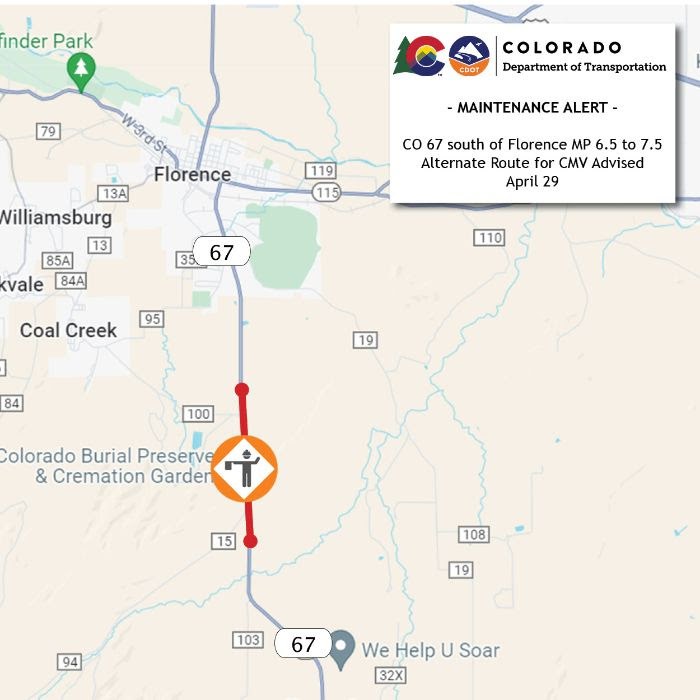
Fremont County — Motorists should plan for delays next Monday, April 29 between 10 a.m. and 4 p.m. while the Colorado Department of Transportation performs maintenance operations on a culvert on CO Highway 67 from mile point 6.5 to MP 7.5. Commercial Motor Vehicles are advised to take an alternate route.
Traffic Impacts
- Plan for daytime traffic delays April 29, 10 a.m. to 4 p.m.
- Expect lane shifts guided by flaggers, cones and signage.
- CMVs are advised to use an alternate route.
- Drivers are urged to watch for workers and their equipment, slow down and drive with caution.
Know Before You Go
Travelers are urged to “know before you go.” Gather information about weather forecasts and anticipated travel impacts and current road conditions prior to hitting the road. CDOT resources include:
- Road conditions and travel information: COtrip.org
- Download the COtrip Planner app: bit.ly/COtripapp
- Sign up for project or travel alerts: bit.ly/COnewsalerts
- See scheduled construction lane closures: bit.ly/laneclosures
- Connect with @ColoradoDOT on social media: Twitter , Facebook , Instagram and YouTube
Remember: Slow For The Cone Zone
The following tips are to help you stay safe while traveling through maintenance and construction work zones.
- Do not speed in work zones. Obey the posted speed limits.
- Stay Alert! Expect the unexpected.
- Watch for workers. Drive with caution.
- Don't change lanes unnecessarily.
- Avoid using mobile devices such as phones while driving in work zones.
- Turn on headlights so that workers and other drivers can see you.
- Be especially alert at night while driving in work zones.
- Expect delays, especially during peak travel times.
- Allow ample space between you and the car in front of you.
- Anticipate lane shifts and merge when directed to do so.
- Be patient!
Download the COtrip App!
The new free COtrip Planner mobile app was designed to meet the growing trend of information on mobile and tablet devices for the traveling public. The COtrip Planner app provides statewide, real-time traffic information, and works on mobile devices that operate on the iOS and Android platforms. Visit the Google Play Store (Android devices) or the Apple Store (iOS devices) to download!
- Moscow Tourism
- Moscow Hotels
- Moscow Bed and Breakfast
- Moscow Vacation Rentals
- Flights to Moscow
- Moscow Restaurants
- Things to Do in Moscow
- Moscow Travel Forum
- Moscow Photos
- All Moscow Hotels
- Moscow Hotel Deals
- Things to Do
- Restaurants
- Vacation Rentals
- Travel Stories
- Rental Cars
- Add a Place
- Travel Forum
- Travelers' Choice
- Help Center
On holiday in April 2020 - Moscow Forum
- Europe
- Russia
- Central Russia
- Moscow
On holiday in April 2020
- United States Forums
- Europe Forums
- Canada Forums
- Asia Forums
- Central America Forums
- Africa Forums
- Caribbean Forums
- Mexico Forums
- South Pacific Forums
- South America Forums
- Middle East Forums
- Honeymoons and Romance
- Business Travel
- Train Travel
- Traveling With Disabilities
- Tripadvisor Support
- Solo Travel
- Bargain Travel
- Timeshares / Vacation Rentals
- Central Russia forums
- Moscow forum

If you are stopping over for a few days in London, that is where you should be worried, as the number of cases in the UK has doubled in the last 3 days to 273. Russia is still sitting at 17 cases, although it was only 4 cases 3 days ago.
The only thing you can do is monitor the situation yourself and make up your own mind. No one on any forum can do this for you.
Russia is still safer than the rest of Western Europe which has seen 8,000 new cases in 3 days.

Russia is still one of the safest countries in Europe. I would worry more about Western/Southern Europe.

Re Russia and few cases...some here in the US said the same thing 3-4 weeks ago (well, mostly our, like, really stable genius leader), and look at where we are now.
Now, unlike the US, the leader in Russia took this seriously, BUT a country is only as safe as the least careful of its citizens who refuse to follow the simple recommendations only now being allowed to be presented to the public...again, by OUR leader.
A telling story, true, is during the truly infamous Spanish Flu of 1918 is one city which really hammered at things like self-isolation had about 1/4 the deaths compared to another which followed the “don’t worry, be happy, spend money to prop up the economy”...
"is only as safe as the least careful of its citizens who refuse to follow the simple recommendations"
Not sure whether it's arrogance, ignorance or plain stupidity, am guessing a bit of all, especially the arrogance.
This topic has been closed to new posts due to inactivity.
- Planning trip to Russia yesterday
- Train Booking Moscow to St. Peter Apr 24, 2024
- SIM card. Russian SIM cards, do they still work in the UK? Apr 09, 2024
- Union Pay debit card Mar 27, 2024
- Russian trying to book a hotel in Jerusalem Mar 14, 2024
- Dual Citizen Arrested in Russia Mar 12, 2024
- about clothes Feb 27, 2024
- NOTE - border crossing from Finland into Russia closed Feb 09, 2024
- Snow boots in Red Square Feb 04, 2024
- Travelling to Moscow & Murmansk with toddle in winter Feb 02, 2024
- Anyone traveling from London to Moscow this week ? Jan 27, 2024
- Booking accommodation Jan 11, 2024
- Traveling friends (Designers preferred) :) Jan 05, 2024
- Are shops and things closed during Christmas and New Week ? Dec 15, 2023
- Moscow to St Petersburg train or air?? 32 replies
- New Sapsan Express Train from Moscow to St Petersburg 18 replies
- New year's in moscow 8 replies
- Hop on Hop Off Bus Tour 5 replies
- How do you purchase Bolshoi Ballet tickets at a great price? 2 replies
- Select-a-room.com Are they legitimate? 3 replies
- Weather Moscow and St. petersburg in May 8 replies
- Night train to St Petersburg 3 replies
- ATM Access 12 replies
- Visa needed if on layover at Moscow Airport??????? 15 replies
Moscow Hotels and Places to Stay
- Where can I get initial answers to ANY question?
Most Beautiful Metro Stations in Moscow
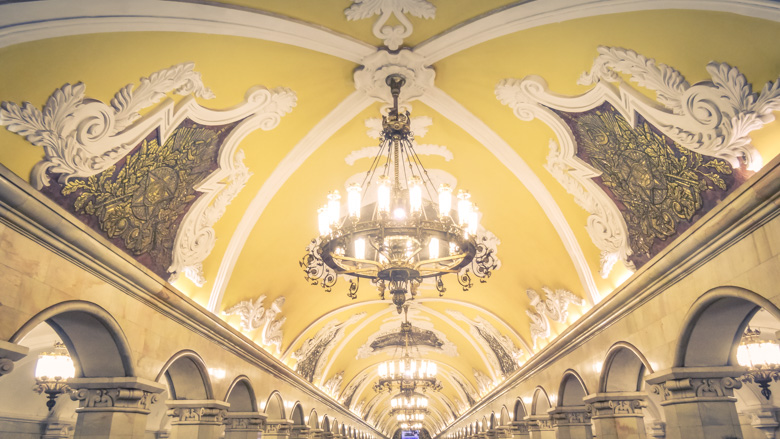
Visiting Moscow? Get yourself a metro card and explore Moscow’s beautiful metro stations. Moscow’s world-famous metro system is efficient and a great way to get from A to B. But there is more to it; Soviet mosaic decorations, exuberant halls with chandeliers, colourful paintings and immense statues. Moscow’s metro is an attraction itself, so take half a day and dive into Moscow’s underground!
The best thing to do is to get on the brown circle (number 5) line since the most beautiful metro stations are situated on this line. The only exception is the metro stop Mayakovskaya one the green line (number 2). My suggestion is to get a map, mark these metro stops on there and hop on the metro. It helps to get an English > Russian map to better understand the names of the stops. At some of the metro stops, the microphone voice speaks Russian and English so it’s not difficult at all.
Another thing we found out, is that it’s worth taking the escalator and explore the other corridors to discover how beautiful the full station is.
Quick hotel suggestion for Moscow is the amazing Brick Design Hotel .
These are my favourite metro stations in Moscow, in order of my personal preference:
1. Mayakovskaya Station
The metro station of Mayakovskaya looks like a ballroom! Wide arches, huge domes with lamps and mosaic works make your exit of the metro overwhelming. Look up and you will see the many colourful mosaics with typical Soviet pictures. Mayakovskaya is my personal favourite and is the only stop not on the brown line but on the green line.
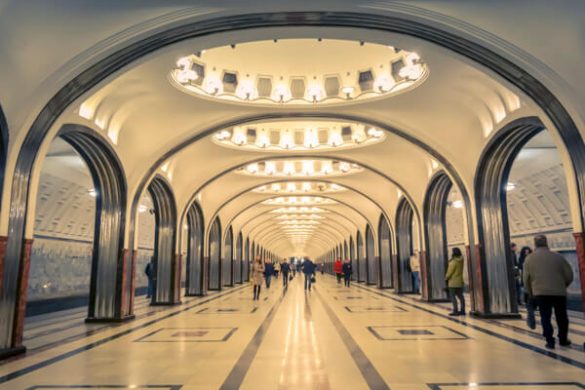
2. Komsomolskaya Station
Komsomolskaya metro station is famous for its yellow ceiling. An average museum is nothing compared to this stop. Splendour all over the place, black and gold, mosaic – again – and enormous chandeliers that made my lamp at home look like a toy.
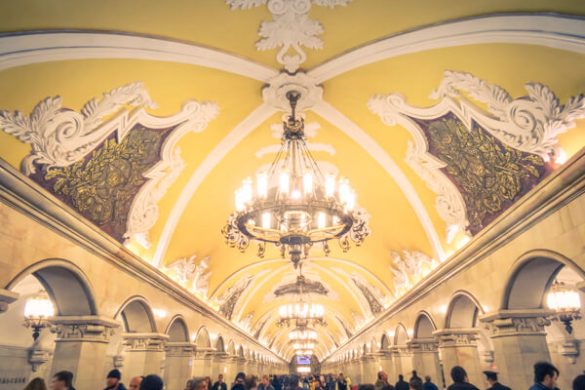
3. Novoslobodskaya Station
The pillars in the main hall of Novoslobodskaya metro station have the most colourful stained glass decorations. The golden arches and the golden mosaic with a naked lady holding a baby in front of the Soviet hammer and sickle, make the drama complete.
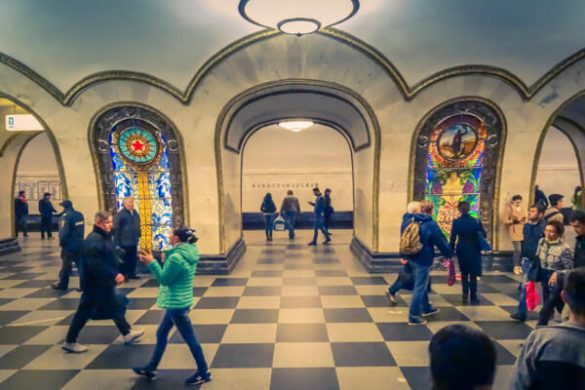
4. Prospect Mira Station
The beautiful chandeliers and the lines in the ceiling, make Prospekt Mira an architectural masterpiece.
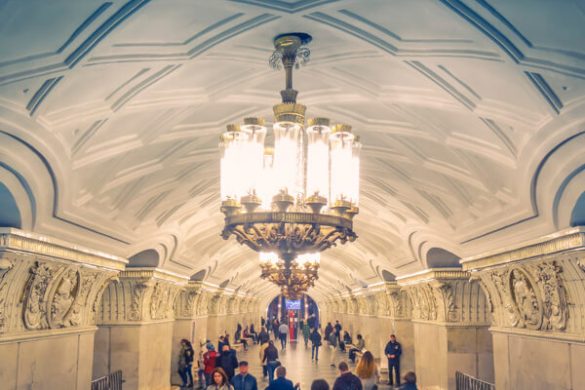
5. Belorusskaya Station
Prestigious arches, octagonal shapes of Socialistic Soviet Republic mosaics. The eyecatcher of Belorusskaya metro station, however, is the enormous statue of three men with long coats, holding guns and a flag.
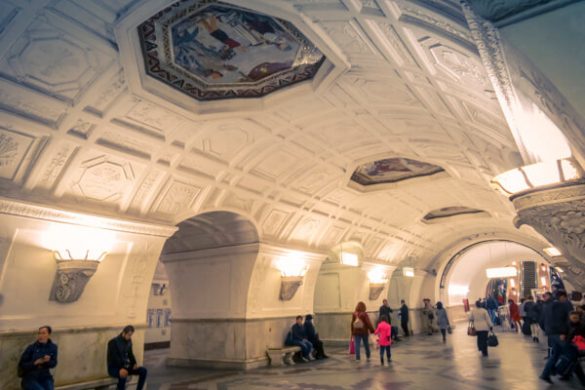
6. Kiyevskaya Station
The metro station of Kiyevskaya is a bit more romantic than Belorusskaya and Prospect Mira. Beautiful paintings with classical decorations.
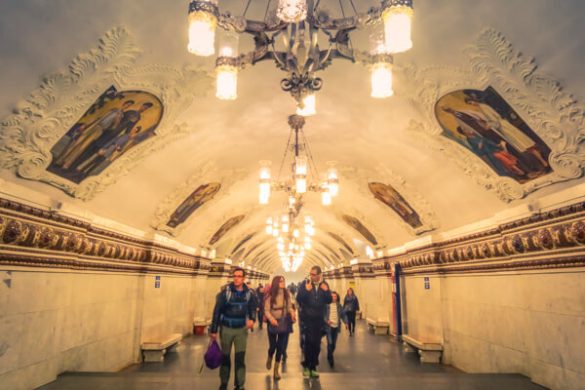
7. Taganskaya Station
At the main hall Taganskaya metro station you will find triangle light blue and white decorations that are an ode to various Russians that – I assume – are important for Russian history and victory. There is no need to explore others halls of Taganskaya, this is it.
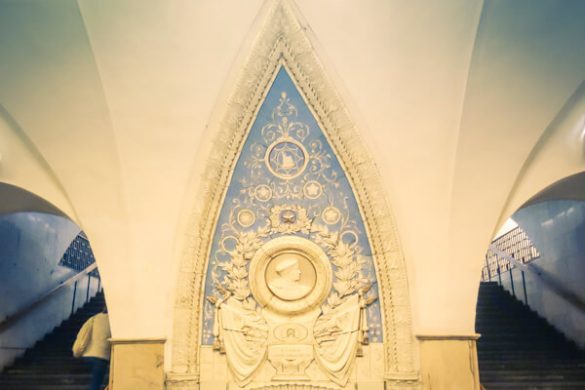
8. Paveletskaya Station
Another and most definitely the less beautiful outrageous huge golden mosaic covers one of the walls of Paveletskaya. I would recommend taking the escalator to the exit upstairs to admire the turquoise dome and a painting of the St Basil’s Cathedral in a wooden frame.
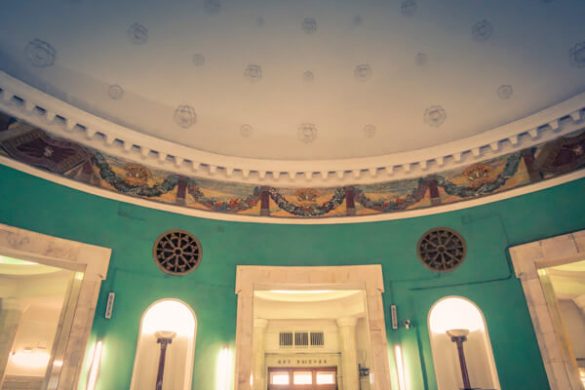
Travelling with Moscow’s metro is inexpensive. You can have a lot of joy for just a few Rubbles.
- 1 single journey: RMB 50 – € 0,70
- 1 day ticket: RMB 210 – € 2,95
Like to know about Moscow, travelling in Russia or the Transsiberian Train journey ? Read my other articles about Russia .
- 161 Shares
You may also like
Hunting for the best coffee in irkutsk, amsterdam forest: a day trip for nature..., a romantic amalfi coast road trip itinerary, complete weekend city guide to maastricht, olkhon island: siberian sunsets over lake baikal, 8 great reasons to visit mongolia in..., trans-siberian railway travel guide, all you need to know for your..., food & drinks in moscow, why we love grünerløkka in oslo.
Wow! It is beautiful. I am still dreaming of Moscow one day.
It’s absolutely beautiful! Moscow is a great city trip destination and really surprised me in many ways.
My partner and I did a self guided Moscow Metro tour when we were there 2 years ago. So many breathtaking platforms…I highly recommend it! Most of my favorites were along the Brown 5 line, as well. I also loved Mayakovskaya, Arbatskaya, Aleksandrovski Sad and Ploshchad Revolyutsii. We’re heading back in a few weeks and plan to do Metro Tour-Part 2. We hope to see the #5 stations we missed before, as well as explore some of the Dark Blue #3 (Park Pobedy and Slavyansky Bul’var, for sure), Yellow #8 and Olive #10 platforms.
That’s exciting Julia! Curious to see your Metro Tour-Part 2 experience and the stations you discovered.
Leave a Comment Cancel Reply
This site uses Akismet to reduce spam. Learn how your comment data is processed .

IMAGES
VIDEO
COMMENTS
Opt for a skip-the-line ticket of the Uffizi Gallery to avoid wasting time standing in long queues. April timings. Tuesday to Sunday from 8:15am to 6:50pm. Closed on Mondays. Every first Sunday of the month, entrance to the gallery is FREE for everyone. Piazzale degli Uffizi, 6, 50122 Firenze FI, Italy.
April is a great time to visit Florence for a lot of reasons, like the beautiful cool spring weather, flowers beginning to bloom, lots of new openings, and longer days. The best time to visit is always subjective, but the April weather in Florence can still be cool, which makes it comfortable for sight-seeing.
Weather in April in Florence. Temperature from 8 degrees (46 F) minimum to 18/20 (65 F) maximum. Expect fair to summery weather punctuated by a few rainy and windy days. It does get cooler in the evenings and on grey days. By the end of April, the weather gets really lovely, with balmy temperatures.
The festival will take place mainly in the theater Affratellamento salon, Florence Salòn CALDIN and the Social Hall of Grassina, all three of which boast genuine wooden floors. Official Webpage. Many events celebrating local traditions and the Tuscan folklore will be taking place in Florence and province in April: take a look at our article to ...
Florence in April. Traditional Colomba di Pasqua. An exciting time to visit, Florence in April has one of the year's biggest and loudest events: an exploding wooden cart. Spring promises renewal, a new start, and the end of Lent. Florentines take everything chocolate seriously. Giant Easter eggs appear in store window displays all over the city.
Florence Travel Guide Best Time to Visit Florence Florence in April Tipped off one of the most popular destinations in Italy, Florence is a place you cannot miss visiting. The city in the Tuscan region of Italy is known for its undulating hills, huge farms and vineyards, some classic galleries of the world, and marvelous architecture that ...
Best Times To Visit Florence. The best time to visit Florence is between May and September when warm weather ushers in art festivals, open-air dining and the kind of Italian sunshine that inspired ...
September, October and November are full of flavor. As tanned residents return to the city and kids go back to school, Florence's second shoulder season begins. Like spring, this is a great time to visit: prices decrease and the queues in front of museums get shorter. Autumn is an especially important season in Tuscany, as many of its most ...
Best Time to Visit Florence, Italy. In Savoring Italy's experience visiting Florence, here's what we would recommend: Spring (April to June): Spring in Florence is like the opening act of a feel-good movie - everything is flowering, the sun is shining, and the world is a pastel canvas. Late spring, say from May to early June, is golden time ...
Crowds in Florence . If you visit Florence from April to October, you will find it crowded—there's simply no avoiding other tourists (lots of them) in one of Europe's most popular destinations. The city's main thoroughfares and popular piazzas will be wall-to-wall people, and narrow arteries, such as the Ponte Vecchio bridge, will be packed ...
Why you should visit Florence in April. April is a magical time to visit Florence, as it marks the beginning of spring and the city comes alive with colorful blooms and cultural events. With mild temperatures, fewer tourists, and a buzzing atmosphere, Florence in April offers a perfect blend of outdoor exploration and indoor cultural indulgence.
In Florence, the peak season runs from April to August, but April to June are the best months to visit overall. Come in April to enjoy slightly cooler temperatures around 65F, more affordable hotels, and shorter lines at museums and galleries. Note that rainfall is a little heavier with just over 3″ falling throughout the month.
Annunziata the 6-7th of April for a wood-themed market, and Piazza Santo Spirito on the 21st of the month for a peek into one of my favorite, and most traditional, local markets where you can buy organic honey, kombucha, the best organic parmesan cheese, balsamic vinegar, and partake in the local past-time of people-watching. Easter in Florence.
Fall in Florence: October and November have a good weather. Autumn is definitely a good time to visit Florence: summer crowds are now a distant memory and average prices are lower. The climate is still warm until the end of October, while from November it becomes colder and rainier. Autumn is a great time to hike and explore the Tuscan ...
Weather: The most pleasant weather in Florence is typically from April to June and September to October.During these months, the temperatures are mild and pleasant, ranging from 60°F (15°C) to 80°F (27°C), with mostly sunny days. Museums: Florence's museums, such as the Uffizi Gallery and the Accademia Gallery, can be visited year-round.. However, to avoid long lines and crowds, consider ...
Considering the weather, we would say Florence's (and Tuscany's) best travel months (also its busiest and most expensive) are April, May, June, September, and October. These months combine the convenience of peak season with pleasant weather. The most grueling thing about travel in Florence is the summer heat in July and August, when ...
3. Stand in the shadow of the famous Florence Cattedrale di Santa Maria del Fiore. Brunelleschi's complex herringbone pattern of bricks that created the terracotta dome of the Florence Duomo (cathedral) is the focal point and symbol of Florence. Equally mesmerizing are the unique green (Prato marble), white (Carrara marble), and red (Siena marble) patterns and massive bell tower that draw ...
On 27 April 1690 (April was traditionally the start of the royal pilgrimage season) `the Great Sovereign Peter Alekseevich deigned to visit Kolomenskoe'. For his trip a rowing boat was got up to look like a sailing ship; the boyars followed in two boats and strel'tsy went in front in seven, and `as they sailed along the water there was firing ...
Fremont County — Motorists should plan for delays next Monday, April 29 between 10 a.m. and 4 p.m. while the Colorado Department of Transportation performs maintenance operations on a culvert on CO Highway 67 from mile point 6.5 to MP 7.5. Commercial Motor Vehicles are advised to take an alternate route.
It is possible. We were there 3/15-4/15 in 2004. It was super gloomy when we arrived, but we actually had some decent weather a few weeks later.
Answer 1 of 5: I would like to know if it is safe to visit Moscow in April I'm scared because of coronavirus..I'm from South Africa .I will be traveling via London to Moscow. Moscow. Moscow Tourism Moscow Hotels Moscow Bed and Breakfast Moscow Vacation Rentals Flights to Moscow
4. Prospect Mira Station. The beautiful chandeliers and the lines in the ceiling, make Prospekt Mira an architectural masterpiece. 5. Belorusskaya Station. Prestigious arches, octagonal shapes of Socialistic Soviet Republic mosaics. The eyecatcher of Belorusskaya metro station, however, is the enormous statue of three men with long coats ...